By Margie Smithurst
The first ROKLive event in Australia, hosted by US giant Rockwell Automation in Sydney in August, was a resounding success for the 350 customers and 150 employees and partners who attended and took part in the technology lab sessions.
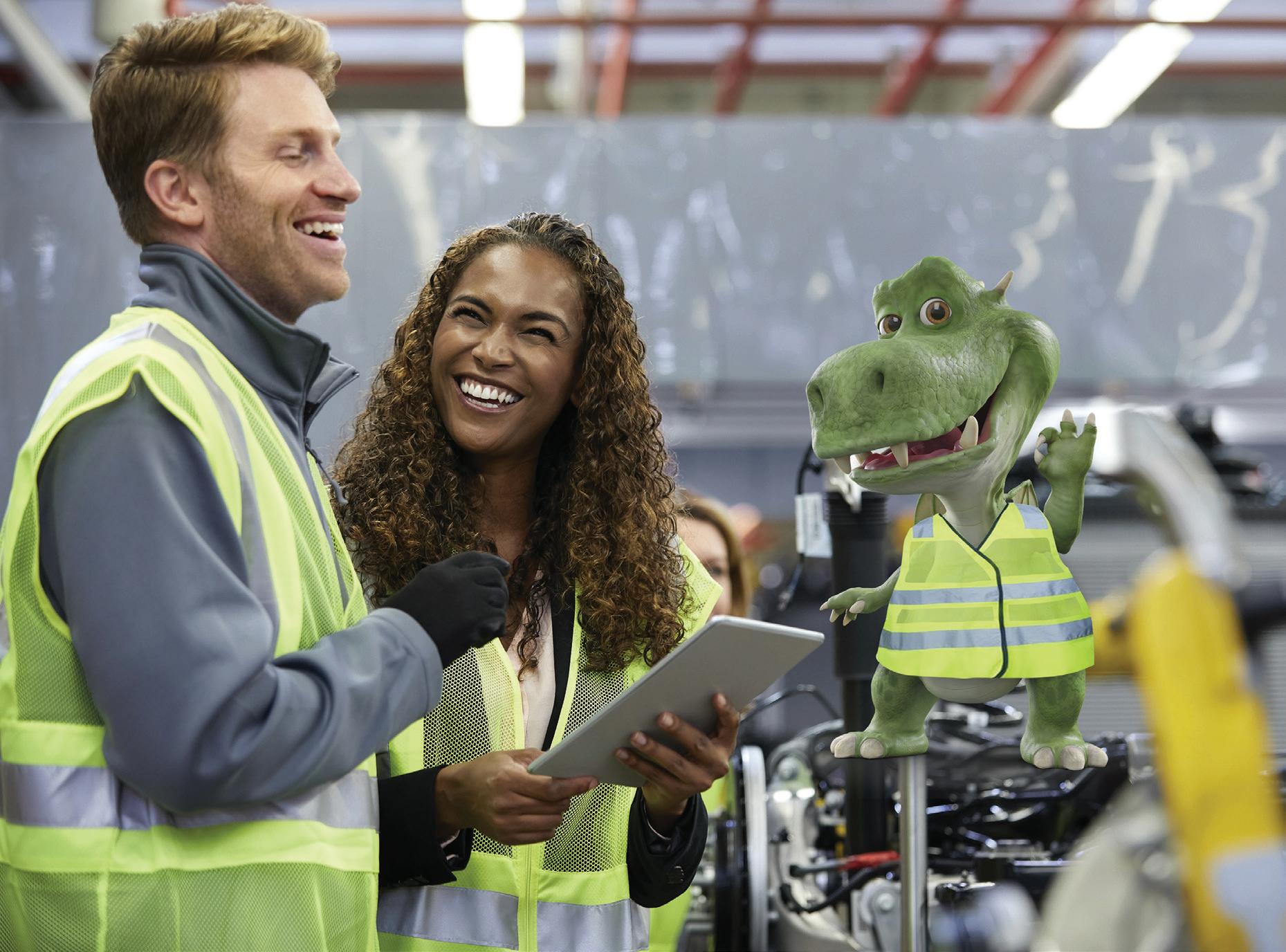

“[ROKLive] is a unique event,” said Rockwell Automation’s President of Asia Pacific Scott Wooldridge, speak ing to Industry Update.



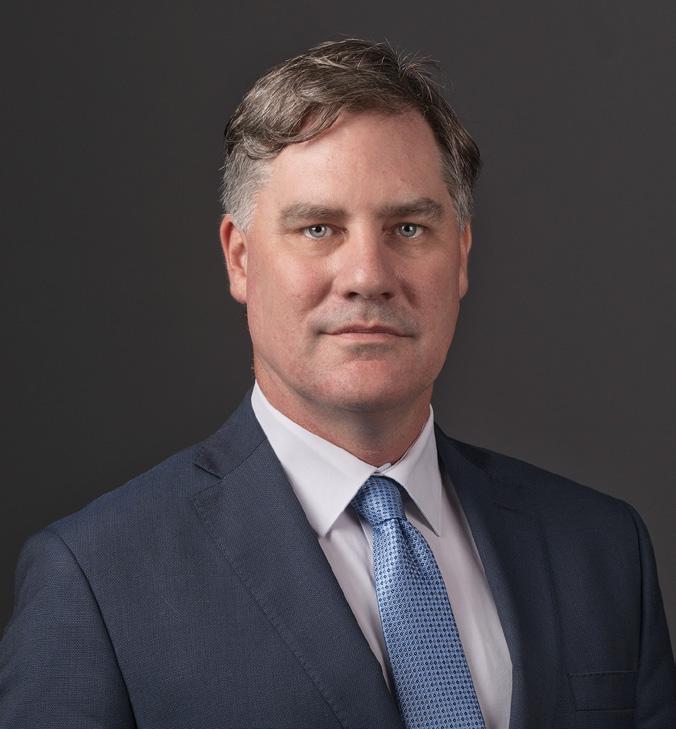
“From our perspective, we do simi lar events in different global hubs, but it’s one of the few industrial events where we get people hands-on with technology.
“...whether it’s augmented reality or digitisation, artificial intelligence


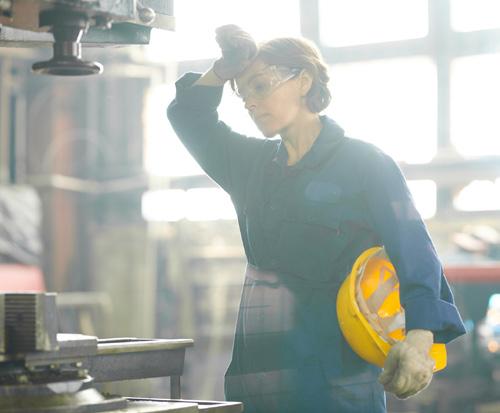
or analytics, people are able to get immersed in hands-on lab environ ments and really understand how it might translate to their individual-use cases or manufacturing sectors.

“It really speeds up that digital isation transition because it takes the theory from a PowerPoint slide and makes it reality in a face-to-face environment.”
Students’ sustainable designs could win $15,000
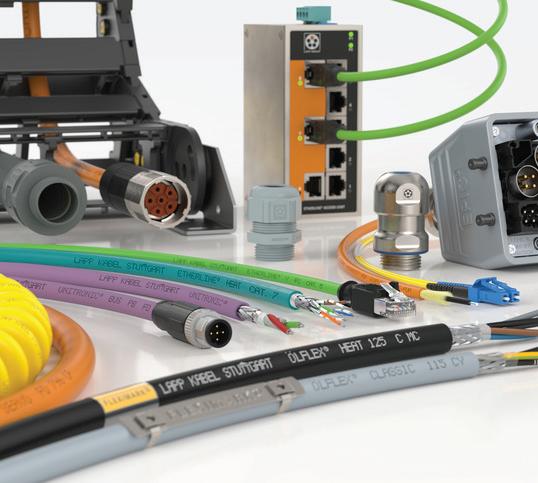
RS Pro & Engineers Without Borders Australia (EWB) are running a student competition focusing on environmental, sustain ability and social impacts.
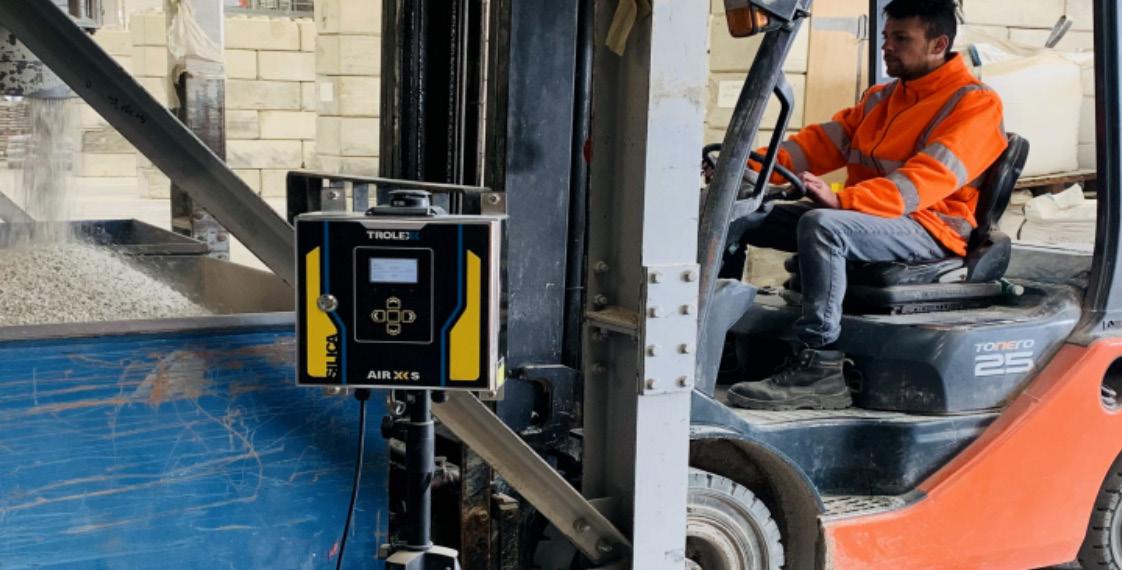
Students or student groups who can address sustainable design and positive environmental outcomes could win $3,000 worth of RS Pro components, tools and accessories.
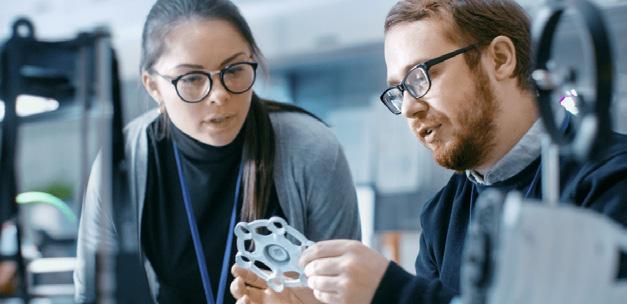
With the company already well-es tablished in Australia, Wooldridge says most attendees who used the 25+ hands-on lab sessions at the event were existing customers, with a strong showing from food and bever age companies as well as miners. Continues on page 14
Continues on page 50
Entrants have five chances to win the RS Pro products, tailored for use on their projects. and accessories tailored for use on their projects.
AUSTRALIA'S LARGEST CIRCULATING MANUFACTURING MAGAZINE Issue 128 Oct/Nov 2022 $12.00 inc. GST STRATEGIC PLANNING IN JUST ONE HOUR The William Buck Hour is designed to help middle-market businesses assess their current position, realign thinking and maximise their business’s potential. In just one hour, we’ll guide you through a detailed discussion structured around a range of key fundamentals. Following the session, our advisors will conduct an analysis of your business using commercial insights, professional experience and best practice standards to develop a prioritised action plan for your business. The end result is a fresh perspective and a focused strategy to help you move forward. 1 In your lifetime, you will spend: 45,000 27,000 2,550 18 21 45 24 Capral Aluminium — Bespoke bodies for Australian trade vehicles
Saving lives — a real-time silica monitor Quiet quitting: disengaged employees are doing the bare minimum
27 ROKLive 2022: Australian companies need to get smarter with
automation
Automation’s
Pacific ACCESS OVER 25,000 L APP CABLES, CABLE GL ANDS & CONNECTORS ONLINE. Make the right connection with L APP Australia. lappaustralia.com.au sales@lappaustralia.com.au 1800 931 559 LEADER IN CABLE AND CONNECTIVIT Y SOLUTIONS Our top stories Running on hydrogen: retro tted diesel engines at Engineers from UNSW Sydney have converted diesel engine to run as a hybrid hydrogen-diesel engine — reducing CO2 emissions by more than 85% ...Read more More from the industry Online symposium: working with RCS Although respirable crystalline silica (RCS) has been recognised as an occupational risk for century or more, Manufacturing jobs jumping at Ampcontrol Electrical engineering company Ampcontrol Group is set to the next 18 months, after winning contracts ... Product news ciency with the right torque Choosing the most suitable torque sensors from ZHYQ’ range can help to maximise ef ciency and accuracy Torque is measure of the force that Read more Moving right along with Turck roller conveyor These staples of material handling play critical role in throughput and plant Featured products Australian Made 32 Check out Industry Update’s e-news banner ads attracting high hundreds of clicks Ready, Set, Grow Transform your business with the help of our Manufacturing and Wholesale specialists. Things you should know: T&Cs, fees, charges and eligibility and credit criteria apply. © St.George – A Division of Westpac Banking Corporation ABN 33 007 457 141 AFSL and Australian credit licence 233714. DB 0322 0122 STG Matthew Kelly Head of Manufacturing & Wholesale 0412 265 197 manufacturingwholesale@stgeorge.com.au stgeorge.com.au/manufacturing Manufacturing & Wholesale DB 0641 MIB Industry Update_Ad Resize_STG.indd 1 28/9/2022 3:53 pm
Scott Wooldridge - Rockwell
President of Asia

Your Global Automation Partner
Monitor Critical Flow and Temperature Conditions
Reduce system downtime with more accurate measurement of critical flow and temperature conditions with the FS+ sensor from Turck. Detect leaks or blockages with this easy-to-use sensor. Not only does the FS+ measure the flow rate of liquids in pipes, it also monitors temperature. Plus, no moving parts or rotating sensor components reduce the chance of failure or introducing contamination into the system.


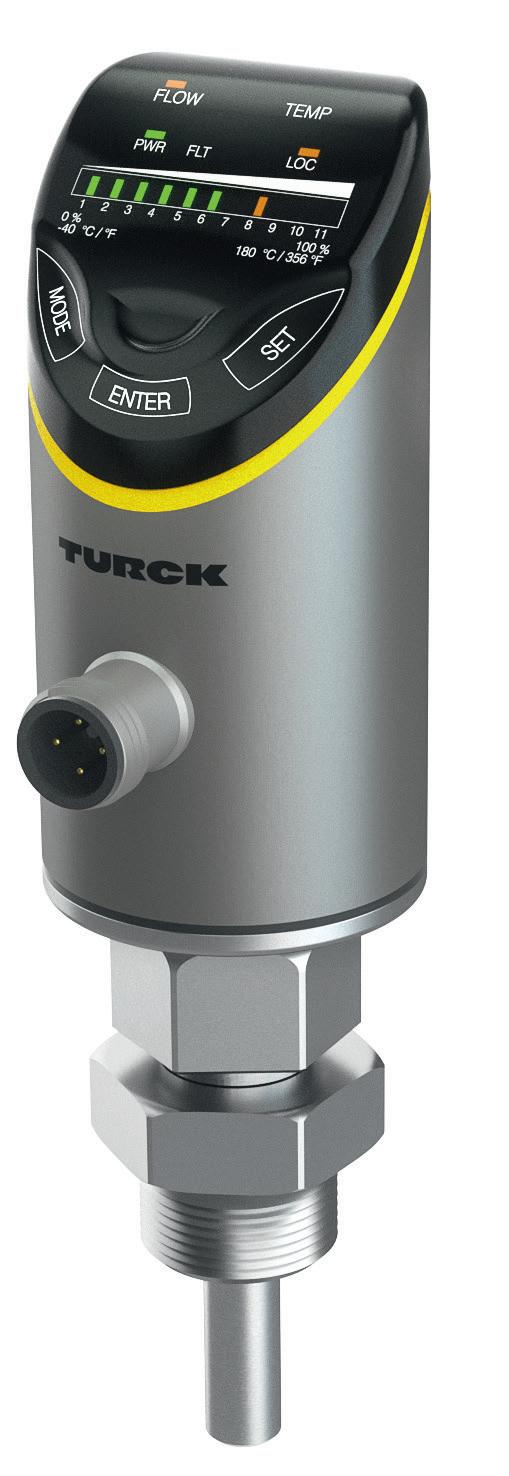
• Accurate and easy to use
• Rated to IP69K for harsh conditions
• Rugged, rotatable stainless-steel housing
• Switching or analog outputs
• Long lasting - no moving parts to wear out
Contact your local Turck sales representative to learn more.
1300 132 566 www.turck.com.au
SENSORS | CONNECTIVITY | FIELDBUS TECHNOLOGY
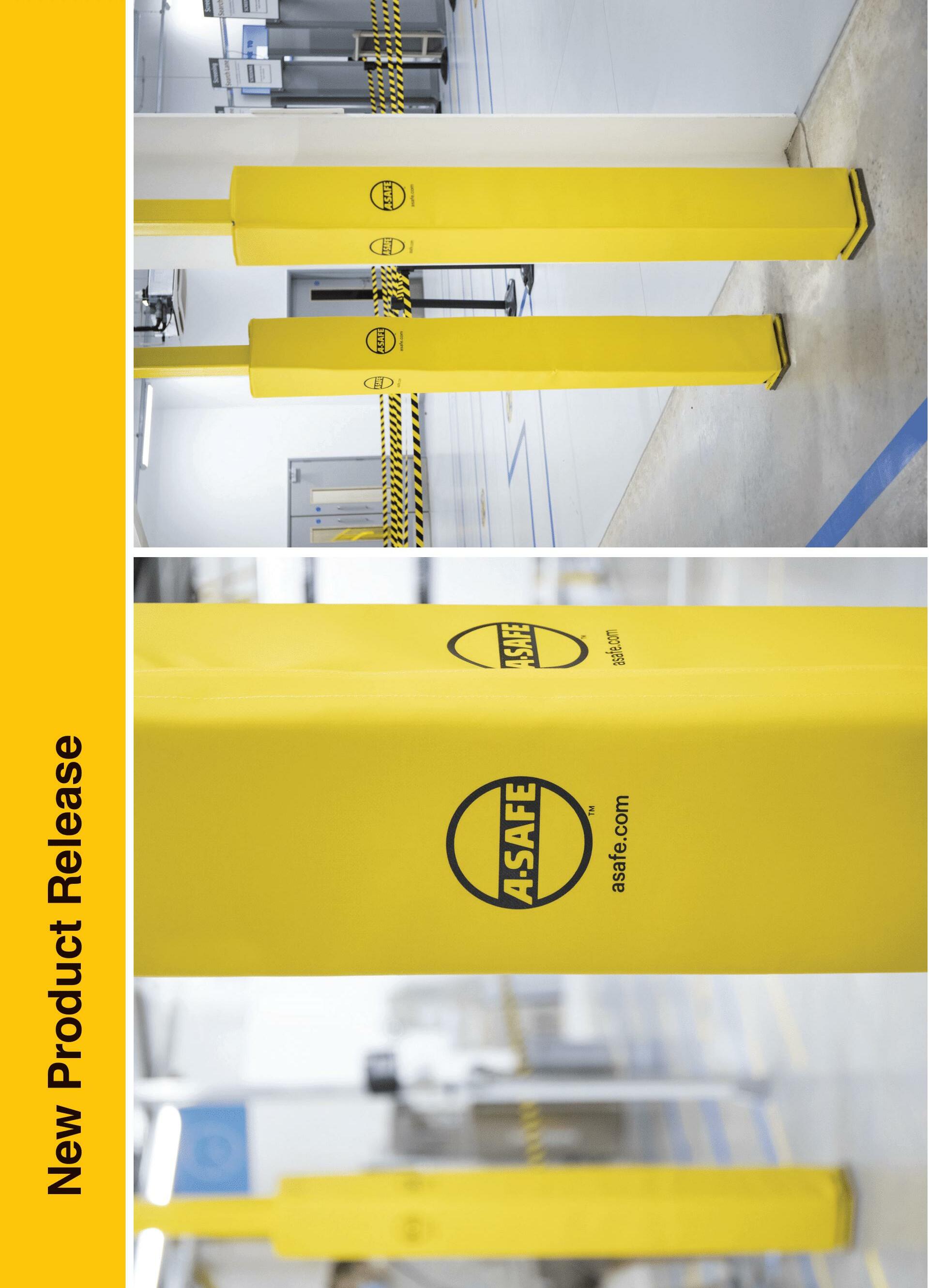
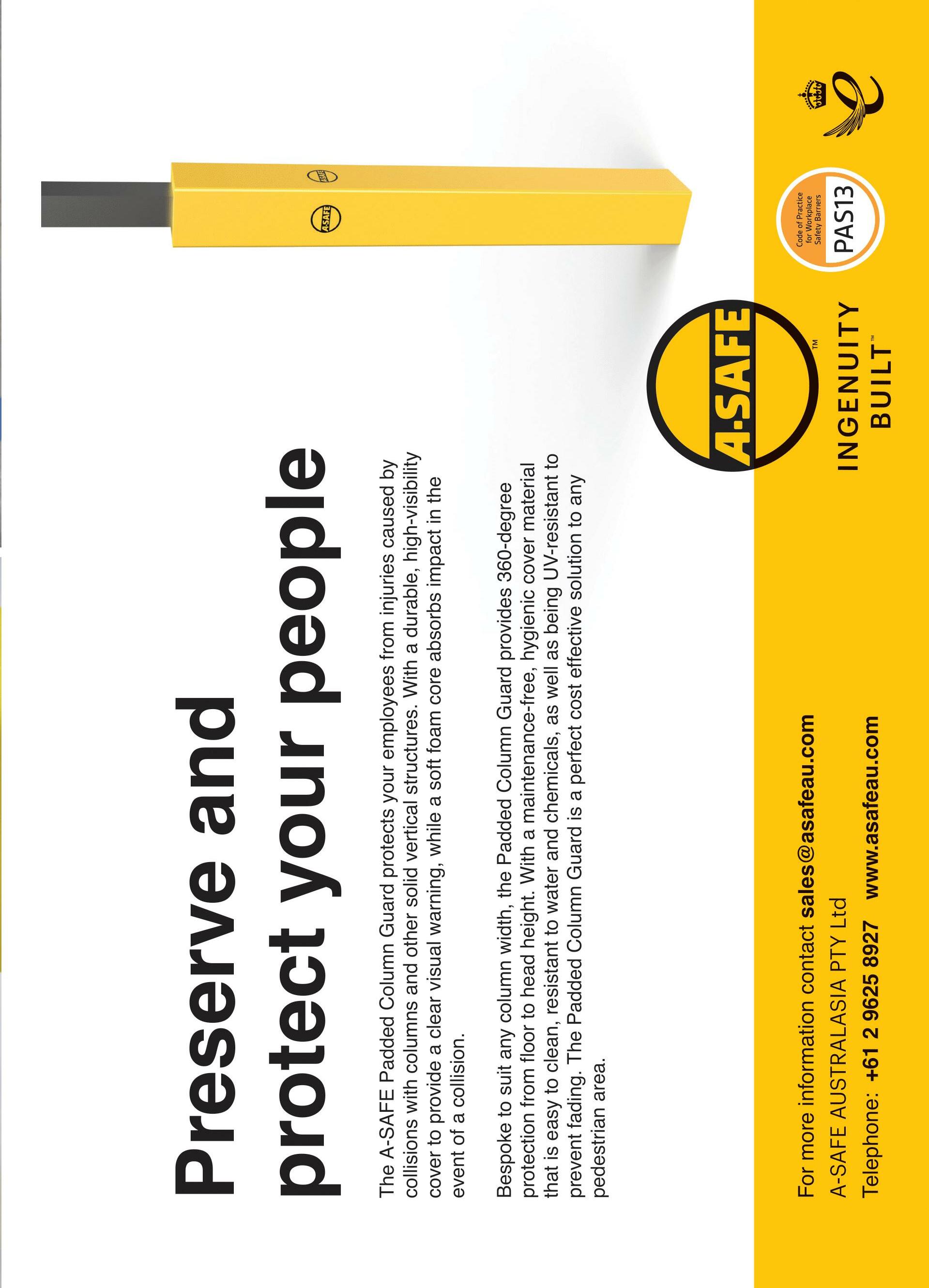 Publisher Scott Filby
Publisher Scott Filby
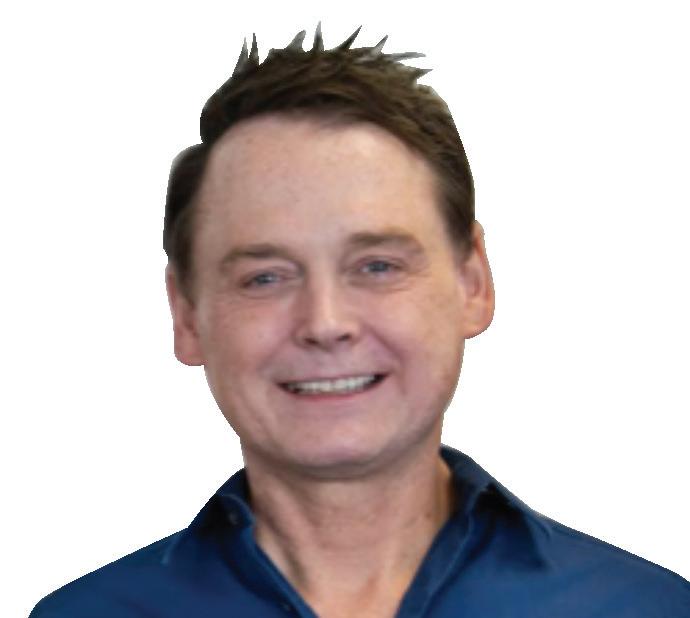
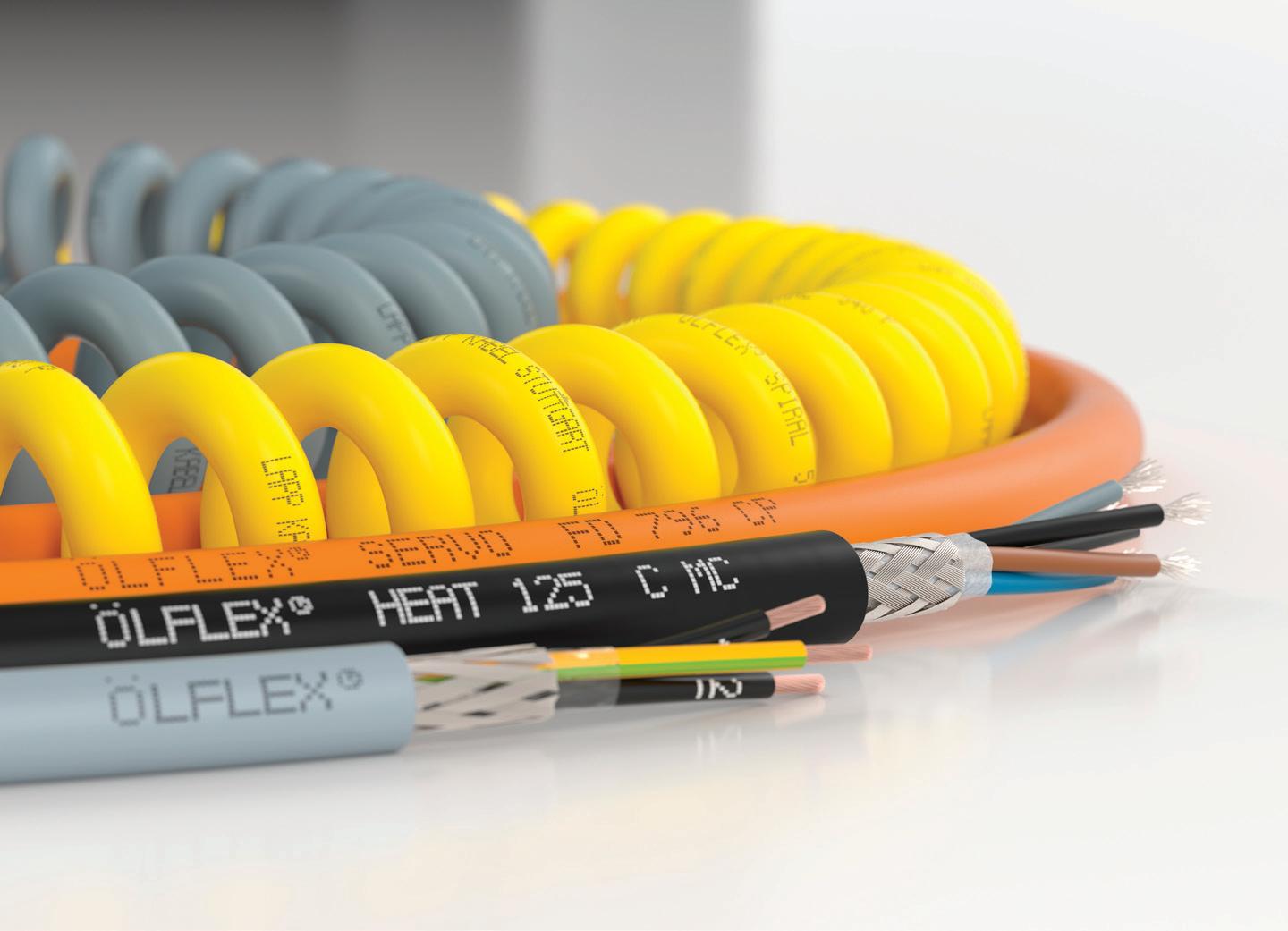
As Australian companies come out of Covid and face a skills shortage for their workforces, there’s a shift towards an increased and smarter use of automation.
This edition of Industry Update examines some of the challenges and solutions that companies are facing and seeking out: from getting the most out of the large amount of data that automation produces, to digital emulation software that can build a ‘digital twin’ of production plant plans, thereby saving considerable commissioning time and risks.
Skills shortages have pushed businesses towards novel solutions, such as cobots, or collaborative robots - which were on show at the Modern Manufacturing Expo. Welding, for example, is an industry that could benefit from the use of cobots for the more menial, time-consuming tasks, freeing up other workers.
At the Smart Manufacturing Conference which ran alongside the Expo, innovative companies from Australia and beyond talked about how they’re keeping up with the challenges of a shifting supply chain and consumer environment, and designing their fac tories to be able to pivot quickly to new products when demand changes.
The bright crop of university
graduates continues to be a boon to the manufacturing industry, with more companies aligning themselves with universities in order to engage the young engineering talent that’s emerg ing and pragmatically solve the skills shortage. Whereas a food and beverage sector job might not have seemed sexy in the past, the technology and innova tion now involved is appealing to some of the brightest engineering graduates.
Attracting both men and women into the sector at this point continues to be a challenge, one that may be helped by overseas skilled migration. Redefining how manufacturing is perceived is a good start - it’s not all hard-hats and factory floors, it’s also problem solving in pre and post production.
As Lana Van Wyck, Principal at Hatch engineering services told the magazine, she’s encouraged by seeing more female graduates drawn to work in the renewable technologies sector, and points out that working as a min ing engineer doesn’t mean every day is spent in safety gear on a mine site.

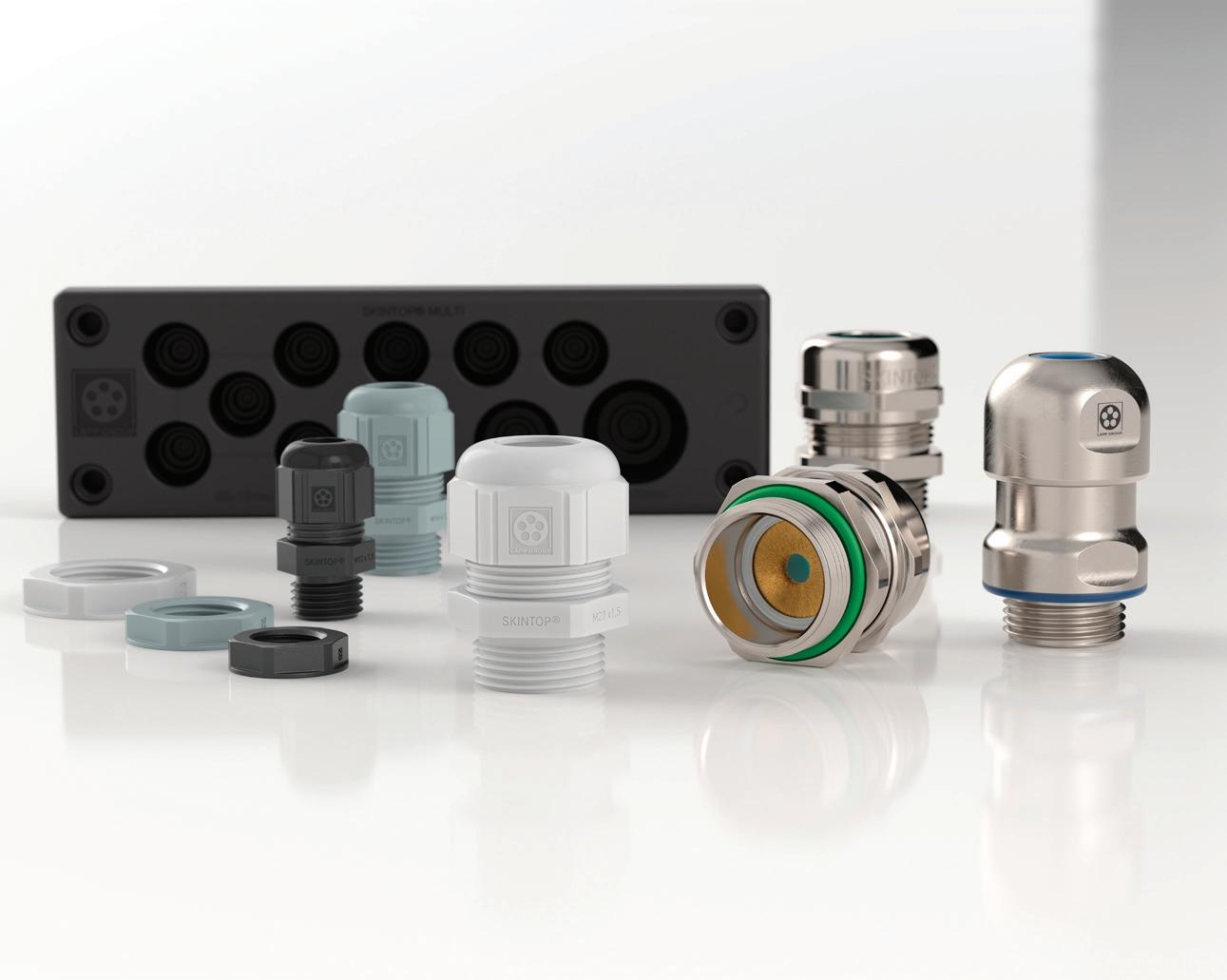
There’s an energy and intelligence in the Australian manufacturing sector right now that’s been invigorated by Covid supply chain issues. Recognising and harnessing that is the grand challenge facing the government and industry leaders.
Editor Christine Powis

Collaboration is increasingly the name of the manufactur ing game. Putting together ideas, expertise, capabilities and funding is the forte of the Australian Manufacturing Growth Centre (AMGC) an industry-led not-forprofit which works with 4,000 members.

At last month’s Jobs and Skills Summit, AMGC’s Managing Director Dr Jens Goennemann told govern ment, business and associated leaders that they had manufacturing all wrong: it’s not a sector but a capability which can apply to every sector. It’s a more flexible way of thinking that is producing great results, and these are outlined in its 2022 Project Report (see article in this issue).
This solid document outlines the actual impact of the 31 completed projects and the anticipated impact of all the co-invested projects under AMGC management (total 141).

It is very much worth close inspec tion by anyone who would like to know more about how collaboration works and its positive results on projects’ bottom lines, expansion of markets, products or services, job creation and upskilling.
Yet AMGC’s report also measures its collaborative projects in finer

terms of qualities such as improve ments in research efforts, better designs, better logistics, manufac turing, packaging and distribution, improved business development and knowledge management — and more.
The report shows the first 31 com pleted projects, which include flying cars (or personal hybrid or electric vertical-takeoff-landing vehicles), have returned 9:1 on combined indus try and government investment.
As for government investment, the AMGC calculates that just $16,600 of federal funding was required to create an ongoing, highly skilled, resilient local job, and for every federal govern ment dollar invested there was $26 returned.
As part of the federal government’s Industry Growth Centre Initiative, since 2015 the AMGC has worked as an industry-led, membership-based NFP to match and guide research-led organisations and industry and their advanced manufacturing projects according to ideas, expertise, capabil ities and needs — including funding and export hub opportunities.
The success of its diverse projects speaks for the collaborative approach and I look forward to putting a spot light on some of its projects in future issues.
FROM THE PUBLISHER
Treotham has all your VSD cable & glands needs covered ANNIVERSARY th 1992-2022 1 A Own 1 nMna Treotham Automation supply an extensive range of high quality electrical flexible cables and accessories from . The range is available from stock in Sydney, Melbourne, Brisbane & Perth. With a full range of industrial products, our technical engineers are able to provide fast and reliable service and custom-built solutions for special applications. 100% Australian owned & managed | www.treotham.com.au | info@treotham.com.au | 1300 65 75 64 6 | Industry Update Issue 128 October / November 2022 industryupdate.com.au
Manufacturing jobs to grow at Ampcontrol
Electrical engineering company
Ampcontrol Group is set to create at least 200 manufacturing roles across Australia in the next 18 months, after winning contracts with a total value of $41m with BHP, Western Power and others such as telcos.
Ampcontrol company CPS National has also been named a key partner in the Western Power contract won by Boundary Power for the roll-out of 101 stand-alone power systems (SPS).
Boundary Power is a joint venture between Ampcontrol and West Australian utility Horizon Power.
The Western Power contract is Australia’s biggest single roll-out of SPS: it will replace 762km of overhead powerlines, improve land for farmers and reduce risk of bushfires.
Ampcontrol Managing Director & CEO Rod Henderson said the new projects demonstrate Ampcontrol’s ability to provide optimal solutions for utilities, communications and industry.
The roll-out of power and battery upgrades and solar skids for BHP provide the key first steps in elec trifying mine sites and eliminating safety risks to workers while keeping manufacturing within Australia.

“At Ampcontrol, we have always felt strongly about keeping manufacturing
jobs here in Australia. By winning these contracts with BHP and other businesses, it further reinforces the capabilities of the Ampcontrol Group,” says Mr Henderson.

“Ampcontrol is proud to play an integral role in the uptake of innovative solutions such as SPS across Australia, supporting remote communities by

Driving your performance to the next level
providing a more reliable and cost-ef fective option through renewable tech nology rather than traditional poles and wires,” said Mr Henderson.
“This is just the beginning for jobs growth within the Ampcontrol Group as we scale up our operations.”
Founded in Newcastle NSW in 1968, Ampcontrol already has more
Oxy Combustion for Glass Melting Oxy Combustion for Glass Conditioning
INDUSTRY NEWS OXY-COMBUSTION TECHNOLOGY AIR LIQUIDE ACTS FOR A SUSTAINABLE FUTURE -33% Carbon emissions by 2035, Neutrality by 2050
us today to discover more with one of our experts www.airliquide.com.au
Contact
perfecting the use of oxygen
melting processes.
At Air Liquide, we have helped to move the glass industry forward for over 30 years,
in
than 950 employees across 30 opera tions worldwide.
Industry Update Issue 128 October / November 2022 | 7 industryupdate.com.au
Ampcontrol Group ampcontrolgroup.com
www.greasemax.au

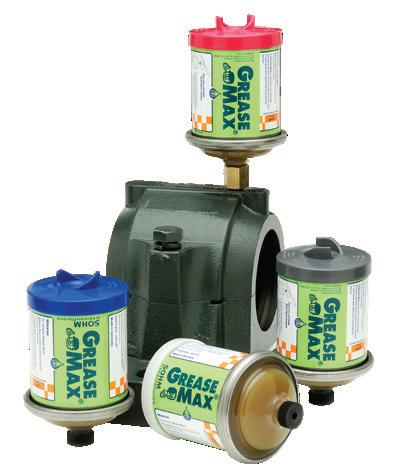
MANUFACTURING MAGAZINE



Industry Update Media Pty Ltd ABN 25 083 502 783 Suite 403, Level 4, 116-118 Christie Street, St. Leonards NSW 2065 +61 2 9439 1288 / sales@industryupdate.com.au
Circulation 17,754 Readership 71,016 as at September 2022
All material in this publication is copyright to the publisher and/or its contributors. No material may be reproduced in part or in whole without the written consent from the Publisher. It is a condition of purchase or acceptance of this magazine that the Publisher does not assume any responsibility or liability for any loss or damage which may result from any inaccuracy or omission on this publication or from the use of the information in this publication or from the use of the information and illustrations contained herein and the Publisher makes no warranties, express or implied, with respect to any of the material contained herein.
© Copyright Industry Update Media Pty Ltd 2022
Publisher SCOTT FILBY scott@industryupdate.com.au
Editor CHRISTINE POWIS editor@industryupdate.com.au
Writer MARGIE SMITHURST writer@industryupdate.com.au
Universities & Collaboration Editor DAVID SLIGAR unieditor@industryupdate.com.au
Sub Editor WILLIAM POOLE subeditor@industryupdate.com.au

Advertising Sales Director SCOTT FILBY scott@industryupdate.com.au
Marketing Manager DUMI UDESHIKA marketing@industryupdate.com.au
Creative Director EDWIN KWONG production@industryupdate.com.au
Production Manager DUMI UDESHIKA copy@industryupdate.com.au

Video Editor & Producer CHARLIE LOUGHLIN video@industryupdate.com.au
Office Manager NICOLE CHARLES nicole@industryupdate.com.au
Finance & Accounts MICHELLE ALCOCK michelle@industryupdate.com.au
Consultant TRACY FILBY tracy@industryupdate.com.au
Accounts Receivable LYN SLIGAR lyn@industryupdate.com.au
Subscription Assistant SAM HICKS info@industryupdate.com.au
Sales Assistant RUBEN PANDEY salesassist@industryupdate.com.au
Circulation Assistant TAYLOR PARSONS circ@industryupdate.com.au
Printer
CONTENTS
OVATO Web Developer JINI M R
simply superior! single point lubrication WHAT’S POOR LUBRICATION COSTING YOU? PRESENTED BY Join us at the Modern Manufacturing Expo at Sydney Showground on the 20th & 21st September. WIN - A 2 hour strategic review with Coleman Greig Lawyers, William Buck Accountants and Advisors and St. George Bank. Manufacturing LAB Ad.indd 1 2/09/2022 1:52:56 PM MANUFACTURING MEDIA MEDIA KIT 2023 MANUFACTURING MEDIA AUSTRALIA’S NO.1 MANUFACTURING & INDUSTRIAL EQUIPMENT MAGAZINE & DIRECTORY DOWNLOAD 2023 MEDIA KIT 6 Publisher’s Note 10 Minister Husic’s Column 11 Universities, Research and Development 16 Industry News 20 Business, Finance and Accounting 24 Employment 28 Women in Manufacturing 32 Australian Made 38 Machinery 44 Workplace Health & Safety 49 Packaging & Labelling 52 Energy, Waste & Recycling 56 Products 61 Events 8 | Industry Update Issue 128 October / November 2022 industryupdate.com.au
Swisslog’s innovative warehouse automation technology wins materials handling Mercury award
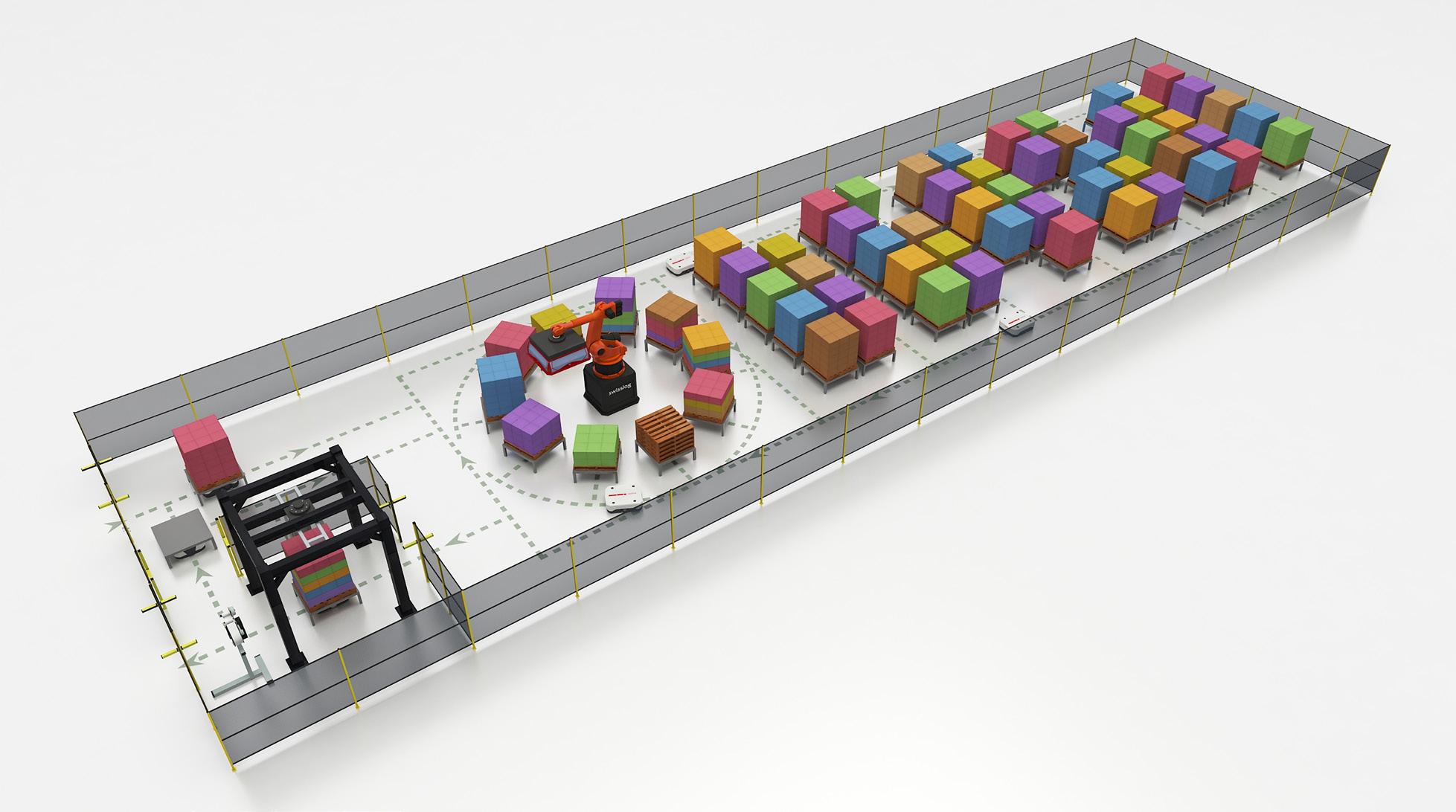
which not only manages the system, but collects valuable data and uses this to recommend further efficiencies.
“I’d like to thank the dedicated ANZ team for all their hard work in developing new solutions tailored to our customers’ needs,” said Dan.
About Swisslog
Swisslog’s innovative auto mated warehouse technology has won the ‘Best Technology Application’ award at the 2022 MHD Materials Handling Mercury Awards.

The technology that received the accolades in the award presentation in Melbourne involved Automatic Mobile Robots (AMRs), KUKA Robots, and the latest Swisslog SynQ Warehouse Management Software (WMS), which combined to deliver optimum efficiency, flexibility, reliability, and sustainability for order fulfilment.
“It’s a great honour to be rec ognised in the materials handling and supply chain industries for our innovative solutions that are helping customers locally and globally,” said
Dan Ulmamei, Managing Director, Swisslog Australia and New Zealand (ANZ).
“Globally, the industry is experienc ing a range of new challenges, and it is through innovation, problem-solving, and collaboration that we will be able to overcome these challenges together,” he said.
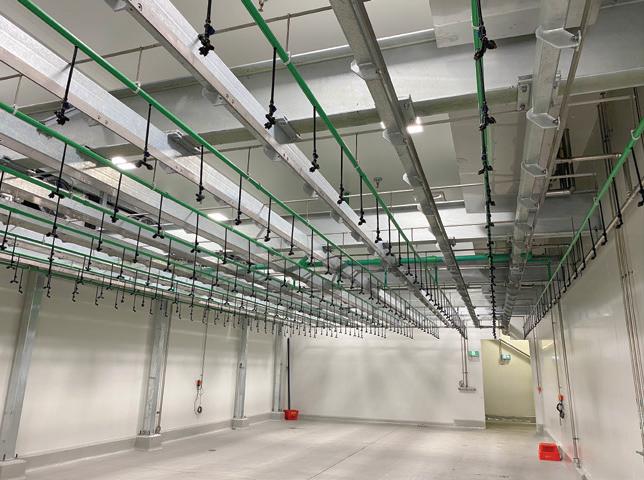
The technology involved in the award win complements Swisslog’s comprehensive range of warehouse automation and intralogistics solu tions, including automatic storage and retrieval systems (ASRS), transport and conveyors, picking and palletis ing, and automation software.
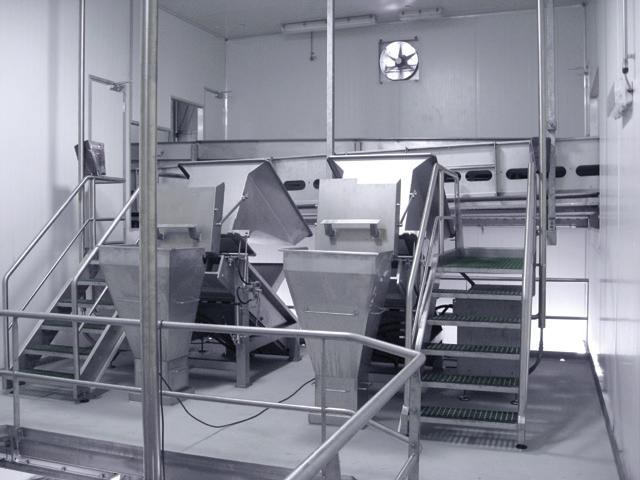
The scalable and modular solution that won the Mercury Award was a
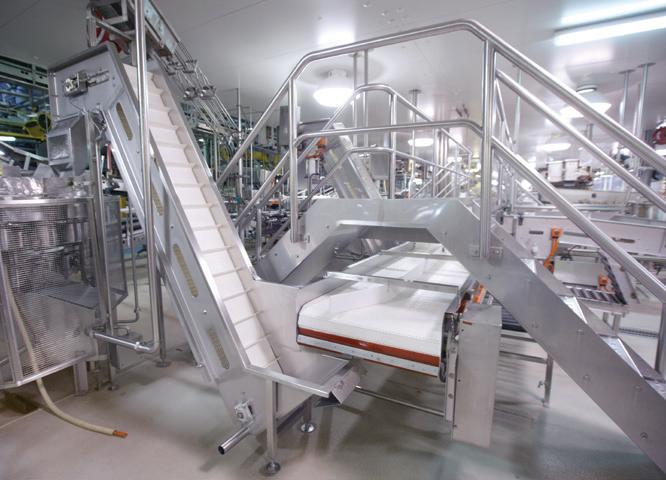
fully-automated solution suitable for small, mid-size and large layer and stack picking operations. With min imal fixed infrastructure required, and the ability to grow as a business expands its operations, the innovative solution is ideally suited to food and beverage, grocery, FMCG, and phar maceutical companies looking for a cost-effective, hygienic and efficient warehouse automation solution.
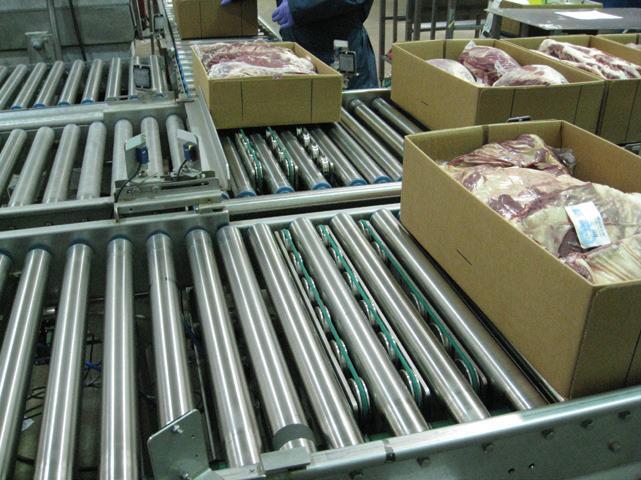

The solution from Swisslog also enhances productivity and sustain ability through negative picking, which allows for the conversion of source pallets into order pallets to minimise wastage.
The entire system is driven by Swisslog’s intelligent SynQ software,
Swisslog shapes the future of intral ogistics with robotic, data-driven and flexible automated solutions that achieve exceptional value for our cus tomers. Swisslog helps forward-think ing companies optimise the performance of their warehouses and distribution centres with future-ready automation systems and software. Our integrated offering includes consult ing, system design and implementa tion, and lifetime customer support in more than 50 countries.
Swisslog swisslog.com/en-au
INDUSTRY NEWS
Industry Update Issue 128 October / November 2022 | 9 industryupdate.com.au
Minister for Industry and Science Ed Husic
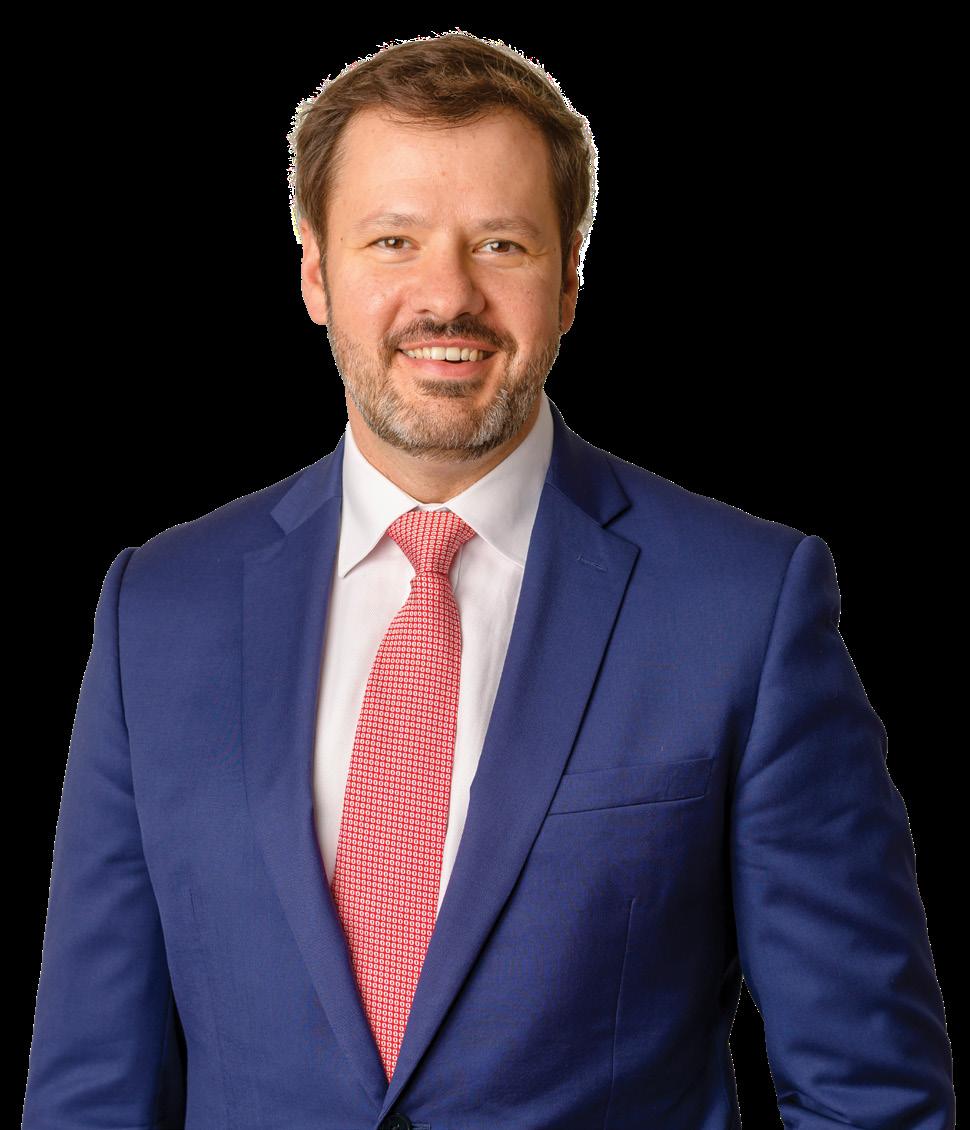
As Industry and Science Minister, I often speak about the importance of science and technology for developing our industries.


Central to that is an adequate supply of workers with education and skills in science, technology, engi neering and mathematics (STEM).
During September’s Jobs and Skills Summit, participants highlighted the need to promote the importance of STEM education and careers in meet ing our current and future workforce needs.
One clear way of increasing the number of workers with STEM skills is by widening the pipeline of talent.
We need to create more pathways for women, First Nations people, migrants, mature workers and those living with disability.
The 2022 edition of the Australian Government’s STEM Equity Monitor issued in late September shows that while there has been progress in increasing the participa tion of women, there is still a lot of work to be done.
The data showed that the number of women enroll ing in univer sity STEM courses increased by 24% between 2015 and 2020. However, as a proportion of all people working in STEM-qualified jobs, women’s participation grew by just 2% to 15% in 2021.
Moreover, only 23% of senior man agement and 8% of CEOs in STEMqualified industries are women and, on average, women still earn 18% less than men across all STEM industries.
Frankly, that’s not good enough.
More effort has to be made to increase diversity in STEM and tech nology sectors, not only because it is the right thing to do, but because it is needed to meet the growing demand for skilled workers.
Research shows that diverse businesses are strong and successful businesses.
The Government is committed to making that effort and succeeding. And we want to work closely with industry to make sure real change is achieved.
Following the Jobs and Skills Summit, we announced a review to determine how existing government programs to support women and girls in STEM can be reformed to support greater diversity in Australia’s science and technology sectors.
We are also determined to remove cultural and structural barriers that
limit participation and retention of women and other under-represented groups in STEM.
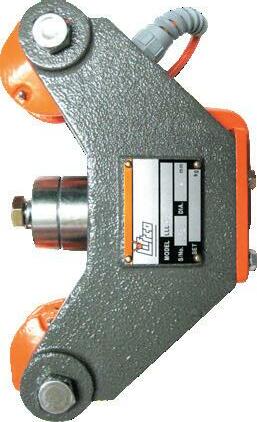
To further develop skills, the gov ernment is also supporting a Digital and Tech Skills Compact between government, unions and technology employers.
Working with industry, unions and training organisations, the govern ment will develop a pilot scheme offering a blend of employment and training to support workers entering the tech industry.
This could form the basis of digital traineeships or ‘digital tradies’ enter ing businesses across the economy.
The Digital and Tech Skills Compact is an important step towards achieving our target of 1.2 million long-term, tech-related jobs by 2030.
In the past month I have also cleared the way to introducing new National Science and Research Priorities. These were last updated in 2015 and I don’t need to tell you that the world is a completely differ ent place. We will work with industry and the science and research commu nity to develop new science and research priori ties that are fit for purpose.
These priorities won’t just be win dow-dressing but will help us target funding where it’s needed, through projects like our transformative National Reconstruction Fund.
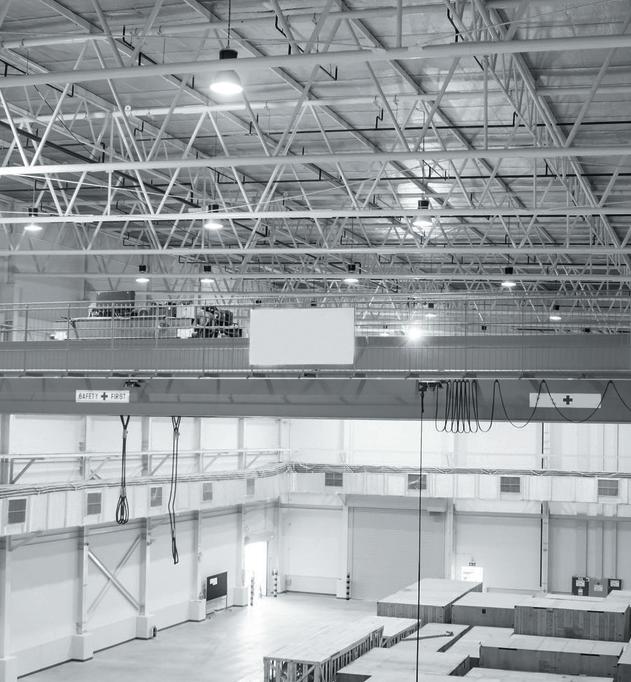
This fund will help rebuild and transform Australia’s industrial base.
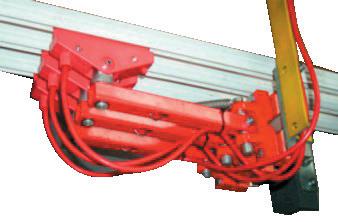
The $15 billion fund includes $1 billion in dedicated support for advanced manufacturing and a further $1 billion to support critical technologies investment, such as for AI, robotics and quantum technology.
As part of our renewed purpose to support these industries, we are updating the List of Critical Technologies in the National Interest.
To consult on this review, I have been visiting a range of companies that make up our diverse manufactur ing industry. I have been impressed with the innovative work of these businesses which, like all companies involved in critical technologies, are built on STEM education and skills.
I will play my part in opening up opportunities in STEM to Australians of all backgrounds. And I will con tinue to work closely with industry and researchers to help create the high-value, high-wage and high-tech manufacturing jobs of the future.
INDUSTRY NEWS
Liftco Industrial Supplies Pty Ltd sales@liftco.com.au www.liftco.com.au (02) 9829 4411 REDUCE MAINTENANCE COSTS ON OVERHEAD CRANES LOAD LIMITERS ROPE AND CHAIN CRANES AND HOISTS • Helps reduce the risk of accidents • Protects against overloading of Crane and supporting structures • Quick and easy installation and available for all capacity cranes • Available preset or easily calibrated on site • Helps reduce maintenance costs • Minimizes down time • Automatic reset by reducing the load CONDUCTOR BAR • Available in steel & copper • Quickly and easily installed • Supports required only every 1.5m • Also available in a compact cluster range SIDE PULL PREVENTERS / ROPE GUIDE PROTECTOR Prevents side pulling and protects rope guides and drums on most multi-fall cranes & hoist Prevent dragging of loads Easily fitted to any crane/hoist Helps reduce down time 10 | Industry Update Issue 128 October / November 2022 industryupdate.com.au
“The Digital and Tech Skills Compact is an important step towards achieving our target of 1.2 million long-term, tech-related jobs by 2030.”
UNSW’s retrofitted diesel engines run on hydrogen
timed hydrogen direct injection controls the condition of the mixture inside the cylinder of the engine and this resolves the problem of harmful nitrogen oxide emissions which had been a major hurdle for commerciali sation of hydrogen engines.

“If you just put hydrogen into the engine and let it all mix together, you will get a lot of nitrogen oxide (NOx) emissions, which is a significant cause of air pollution and acid rain,” Prof. Kook said.
“In our system, we have shown if you make it stratified — that is in some areas there is more hydrogen and in others there is less hydrogen — then we can reduce the NOx emissions below that of a diesel-only engine.”
Compared to existing diesel engines, an efficiency improvement of more than 26% has been shown in the die sel-hydrogen hybrid. That improved efficiency is achieved by independent control of timing of hydrogen direct injection, as well as diesel injection timing, enabling full control of com bustion modes — premixed or mix ing-controlled hydrogen combustion.
Engineers from UNSW Sydney have converted a diesel engine to run as a hybrid hydrogen-diesel engine — reducing CO2 emissions by more than 85% in the process.


Professor Shawn Kook and his team from the School of Mechanical and Manufacturing Engineering devel oped the patented Hydrogen-Diesel Direct Injection Dual-Fuel System in 18 months.. They believe any existing diesel engines in trucks or power equipment — for manufacturing, transportation, agriculture and min ing industries — can be retrofitted this way in just a couple of months to use 90% hydrogen as fuel.
by clean, renewable energy so it reduces emissions during its produc tion as well as its use as a fuel.
The team aims to convert exist ing diesel engines at about half the replacement cost of a new diesel engine and anticipates their system will compete against hydrogen fuel cell systems, a widely demonstrated CO2 reduction technology. Prof Kook believes theirs has several advantages over hydrogen fuel cells.
“Our advantage of our system is that is easier to adopt, it uses existing infrastructure and skills, and has lower costs on both development and fuel,” said Prof Kook.
“Hydrogen used for fuel cells must be of extremely high purity which makes it higher cost. In our system the hydrogen can be lower purity and therefore less expensive because the impurities are being burned out during the combustion process.”
“Retrofitting diesel engines that are already out there is much quicker than waiting for the development of completely new fuel cell systems that might not be commercially available at a larger scale for at least a decade,” said Prof. Kook, stressing that climate change means we need more immedi ate solutions.
“This new technology significantly reduces CO2 emissions from existing diesel engines, so it can play a big part in mak ing our carbon footprint much smaller, especially in Australia with all our mining, agriculture and other heavy industries where diesel engines are widely used,” said Prof. Kook.
High-pressure hydrogen direct injection
The research team hopes to be able to commercialise the new system in the next year or two and is keen to consult with prospective investors. They say the most immediate potential use for the new technology is in industrial locations where permanent hydrogen fuel supply lines are already in place.
That includes mining sites, where studies have shown that about 30% of
The International Journal of Hydrogen Energy has published the UNSW researchers’ paper which shows their hydrogen injection system reduces CO2 emissions to just 90 g/kWh — 85.9% below the amount produced by the diesel-powered engine. Green hydrogen is produced
Resulting from a collabora tion with Dr Shaun Chan and Professor Evatt Hawkes, the new system maintains the original diesel injection into the engine but adds a hydro gen fuel injection directly into the cylinder. Their research found that
greenhouse-gas emissions are caused by diesel engines in such items as mining vehicles and power genera tors. And the Australian market for diesel-only power generators is cur rently estimated to be worth around $765 million.
“At mining sites, where hydrogen is piped in, we can convert existing die sel engines that are used to generate power,” said Prof. Kook.
“In terms of applications where the hydrogen fuel would need to be stored and moved around, for example in a truck engine that currently runs purely on diesel, then we would also need to implement a hydrogen storage system to be integrated into our injec tion system.
Prof. Kook believes the technology for mobile hydrogen storage needs to be developed further.
UNIVERSITIES, RESEARCH AND COLLABORATION
“The Australian market for dieselonly power generators is estimated to be worth around $765 million.”
Industry Update Issue 128 October / November 2022 | 11 industryupdate.com.au
The Hydrogen-Diesel Direct Injection Dual-Fuel System has been developed by the UNSW Engine Research Laboratory’s team led by Professor Shawn Kook (right), and including Xinyu Liu (back left) and Jinxin Yang (front left).
Co-investment in Australian manufacturing drives real growth
The Advanced Manufacturing Growth Centre (AMGC) has released its 2022 Project Report –demonstrating manufacturing trans formation and revealing a significant positive industry impact. The report provides an overview of the organisa tion’s 141 co-invested manufacturing projects and showcases the economic contribution from its first 31 com pleted projects. All AMGC projects involve collaboration between indus try and a research-led organisation.
Analysis of the organisation’s 141 projects provides evidence of real jobs and revenue growth generated from the initiative. Overall, the projects are expected to generate $1.62 billion in additional revenue and the creation of 4,288 new jobs. The returns reflect a combined industry and government co-funded pool of $137.2 million.
Of the 31 completed manufactur ing projects, a total of 430 new or upskilled roles have been created while an additional $188 million in revenue was injected into the Australian economy via domestic and export sales. The revenue creation
represents an average return on investment of 9:1, based on a co-fund ing investment of $20.26 million ($7.15 million derived from federal funding and the remainder from industry in cash and in-kind).
Speaking of the Project Report’s impact, Federal Minister for Industry and Science, Ed Husic, said, “Crucially, it [AMGC] has a focus on funding innovative projects that have the potential to make Australia’s manu facturing industry more productive and competitive, but might be in areas where companies may not have the capacity or expertise to tackle the task on their own,
AMGC’s portfolio of co-invested projects incliudes projects in resources, agriculture, forestry, and fisheries, transport, medical sciences, renewables, and low emissions tech nology, defence, space and, enabling technology – such as AI and robotics.
Some of the first 31 projects locally manufactured, include flying cars, solid-state rocket motors and fuel, prescription eyewear from recy cled materials, invasive ventilators,

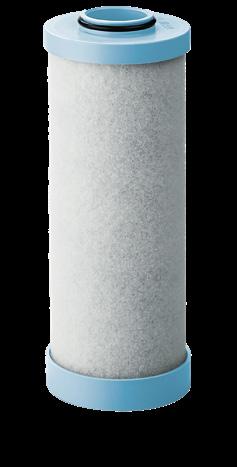
track-and-trace system for the prov enance of the wine, carbon fibre rein forced geopolymer to displace concrete, and carbon composite bike wheels.
Managing Director of AMGC, Dr Jens Goennemann said these successes are proof of the manufacturing indus try’s readiness to invest, advance, scale, and export if highly targeted assistance is afforded to those who wish to com mercialise and scale.
“We can manufacture amazing things in Australia, provided we focus on being better, not cheaper, that we add value to our abundant natural resources, and we embrace advanced practices and processes – our 2022 Projects Report is proof that we can do so much better than Australia’s current ranking of 91st in global
complexity rankings, “AMGC has demonstrated time and time again that by empowering man ufacturers, through appropriately sized and supported initiatives, we can create prosperity for Australians and establish the country as a manu facturing powerhouse – we just need long-term commitment at all levels of Government to give the industry the confidence to invest where it mat ters”, said Goennemann.
About Advanced Manufacturing Growth Centre (AMGC)
The Advanced Manufacturing Growth Centre (AMGC) is an indus try-led, not-for-profit organisation.
KEY FORECAST IMPACT FROM AMGC PROJECTS
• 141 co-funded industry projects
• $137.5 million in co-funding investments

• 4,288 direct and 15,436 indirect jobs are expected to be created
• $1.62 billion in estimated revenues generated
• 434 nation-wide collaborations
OUTCOMES FROM FIRST 31 COMPLETED PROJECTS
Upon completion of a co-funded project, participants contribute to a substantive finalisation process. The data collated revealed:
• Increased revenues of $188 million from local ($136M) and inter national ($52M) sales
• The creation, or upskilling, of 430 direct jobs
•


•
•
• Average Return on Investment (ROI) 168%
• Participants reported an increase in - Profit – 77% of participants - Range of products and services – 83% of participants - Productivity – 83% of participants - Profit Margin – 57% of participants
• The majority of project participants reported improvements at all points along the manufacturing value chain
• Many project participants engaged in collaborative endeavours, with: - 75.8 per cent of completed project participants rating working with research institutions as ‘positive’ or ‘very positive’
• Of the 31 completed projects, 89 per cent of participants increased activities around exports, niche or underserved markets
• All projects reported an increase in their business resiliency
UNIVERSITIES, RESEARCH AND COLLABORATION
strategies
Hey! Have you checked your air filters? In October, SMC is spreading awareness around the importance of changing the filters on your factory floor. Chat to our team to arrange an inspection! #SayNotoNoFilter #doyoureallyknowSMC Why?
It removes liquid water at the point that it is installed.
It helps machinery to run more efficiently and economically.
It helps keep contaminants out of cylinders, valves and other pneumatic components. It’s quick and easy, and it makes a big difference to the life of your equipment. We are here to help - it’s as easy as 1,2,3… SMC! Expertise - Passion - Automation Join the conversation: SMC Corporation Australia I New Zealand SMC - more than pneumatics
12 | Industry Update Issue 128 October / November 2022 industryupdate.com.au
The AMSL Aero Electric VTOL (Vertical Take-off and Landing) aircraft has some design attributes that are viewed as significant advantages over other eVTOL concepts and make it adaptable to a range of different missions.


Students’
“The last two years has been a strange and stress ful year for the
“The opportunity to submit your concept and potentially be given the tools to build the project is a kick-start for any entrant into 2023. The sustain able and environmental criteria is commensurate with current expectations in the industries applica ble to these projects.”

The competition criteria include: Socio-technical skills
Sustainable design skills, including the environ mental, economic and social impacts
The demonstration of effective communication skills through the design pitch application and the outline of teamwork and skills for the project
A demonstration of how the prize will help the entrant achieve social, economic, and environmen tal impacts
The five winners will be announced later in the year and entries close Monday 31st October, 11:59pm (AEST). To be eligible you must be aged 18 or over living in Australia & NZ and enrolled in a full or part-time university-level academic, engi neering, or technology-related programme.

‘Not sexy but fascinating’: uni students fill skills gap in food sector and beyond
The skills shortage in Australia right now is driving a shift towards ‘dark factories’: ones that are so heavily automated they need mini mal human involvement.
However, to get the skills the company does need, Sydney based food manufacturer Beak & Johnston told the Smart Manufacturing Conference in September it now targets university graduates rather than bringing people in from Europe, said Pool, a shift that’s become more critical since Covid closed the borders.
“We network extensively with universities and students. Many find the food industry fascinating, despite the fact it’s not considered particularly sexy.
“Some who we’ve brought on board have been with us for 30 years now.”
Mikael Sandell, of leading global pneumatic manufacturer SMC Corporation, also spoke at the
conference, and said they take a similar approach to getting the skills they need.
“We see the future as university graduates, and we try to catch them when they start their courses.”
“We offer training that sets them up so that they’re already being introduced to SMC technolo gies while they’re at university.
“Our business model is heavily focused on R&D. We have 1771 R&D engineers globally, and five tech nical centres. This explains why we have managed to stay at the top of the market.”
Alan Lipman from bespoke high-tech manufac turer Romar also attested to the quality of students who go on to work in the industry.
He told the conference the advanced manufac turing sector will continue to grow and become more efficient with help from the “incredibly high” standard of young engineers graduating from Australian universities.
UNIVERSITIES, RESEARCH AND COLLABORATION
Scott Philbrook, Managing Director ANZ for RS, the parent company of RS PRO, says he is looking to support future generations of engineers through programs such as this.
evolution of design and engineering in many sectors,” he said.
To enter or for more information visit
sustainable designs to win $15,000
Free education, guidance and leadership for Australian manufacturers seeking advancement, competitiveness and growth. SCAN TO FIND OUT MORE manufacturingacademy.org.au 9 learning modules 20 real stories of Australian success 4+ hours of content COMPETITIVENESS PRODUCT VALUE INDUSTRY 4.0 MARKET REACH MANUFACTURING WITH ROSIE WORKFORCE THE CIRCULAR ECONOMY THE STATE OF MANUFACTURING RESILIENCE
au.rs-online.com/web/content/m/rs-pro-student-fund 14 | Industry Update Issue 128 October / November 2022 industryupdate.com.au
Continued from first page
Australia
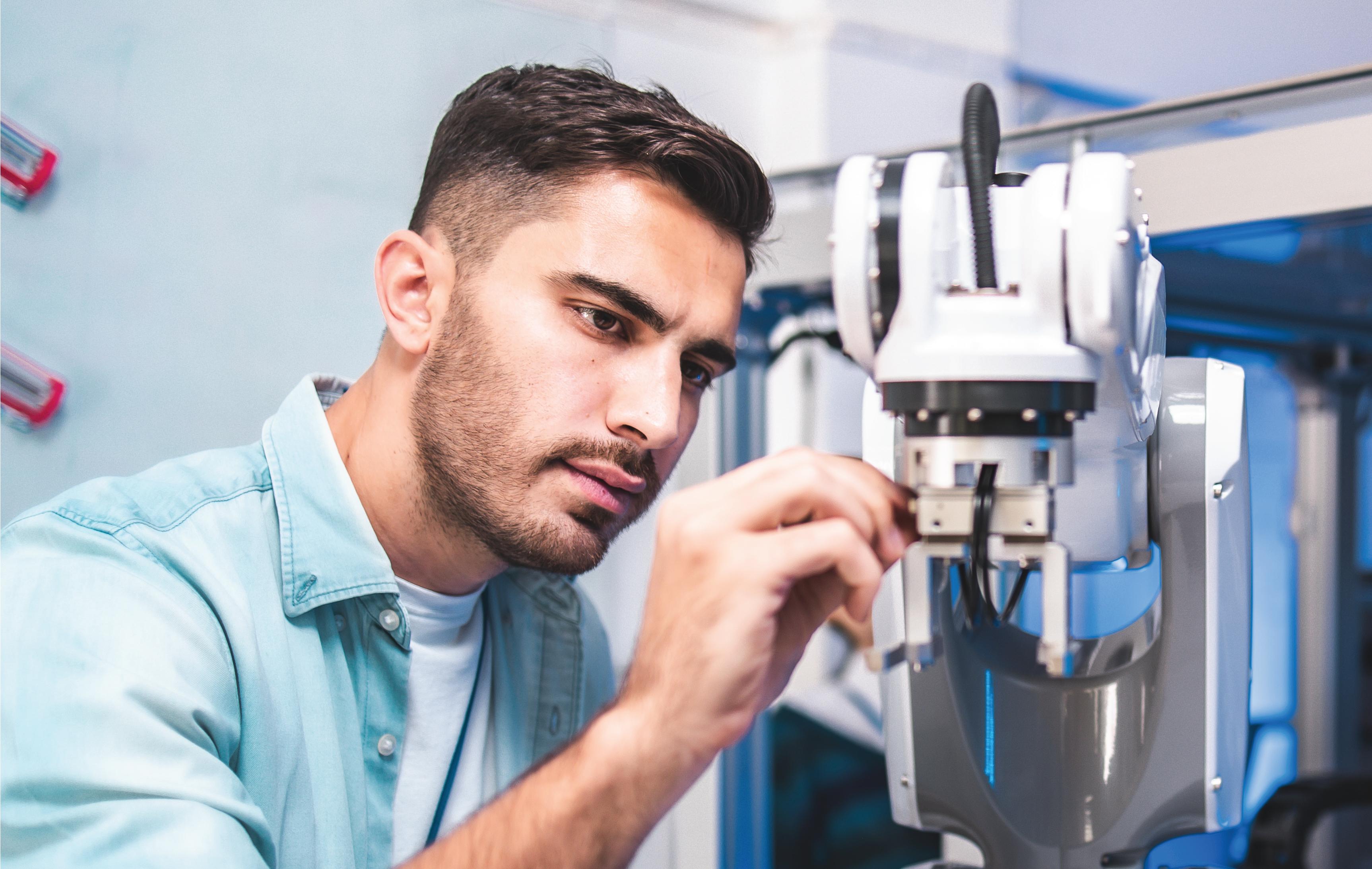


Manufacturing: misunderstood, mismeasured & miscommunicated
When Dr Jens Goennemann
addressed the Jobs and Skills Summit last month, he didn’t pull any punches, telling attendees they did not understand manufacturing.
The Managing Director of Australian Manufacturing Growth Centre said it was wrong to think
of manufacturing as a sector and nor was it all about making finished goods. Rather, he told them, it is a capability that cuts across every sec tor where anything is being made.
“This misunderstanding is com pounded because we also use outdated measures,” he said. “These measures
Capral now offers lower-carbon aluminium with a certified CO2e content of 8kgCO2e/kg AL or below. Make a responsible choice; choose locally extruded, lower carbon aluminium from Capral.
For more information visit: capral.com.au
By Christine Powis
ignore roles in pre-and post-produc tion, although these roles account for more than half of manufacturing jobs and are higher-paying, more resilient manufacturing jobs, which are also a growth category and where women’s participation has tripled.”
The misunderstanding, Goennemann told Industry Update, has had a profound impact on all aspects of Australia’s manufactur ing capability—from ways many manufacturers think of their own businesses, to how government policy works, and to the way Australians, especially job seekers, think of manu facturing as a career—or not!
“If you get it wrong from the start how can any policy be well informed— it’s impossible. If policy makers and the public believe manufacturing is production, or assembling products from overseas, then we will not extract maximum value from manufacturing.
“So, subsidies to assemble cars designed and engineered overseas will never have a lasting impact –because we don’t engage in all steps of their manufacture.
“Whereas, if an industry depart ment has a project proposal, for exam ple with AMGC, where we take $57m to create $1.6bn revenue and along the way create 4,000 local jobs with local manufacturers, that’s policy at its best—informed by profound research and real, impactful outcomes.”
Australian Bureau of Statistics (ABS) figures show manufacturing employs about 900,000 Australians, yet AMGC has found the ABS doesn’t count crucial roles in pre- and post-production.
Based on AMGC data, manufac turing employs circa 1.3 million Australians (3.5 times the mining sector) which creates an average of 3.5 jobs—in food and other retail, child care, education, and support services.
“We mismeasure it, so we end up mis communicating it and portraying jobs

as blokes in overalls and hi-viz— not the case but it’s what the public thinks and what our children are led to believe.”
Goennemann believes the mismea surement creates a distorted picture which not only affects government policy but has led to worker shortages: manufacturers are having trouble finding people for roles from talented skilled labour to digitisation experts.

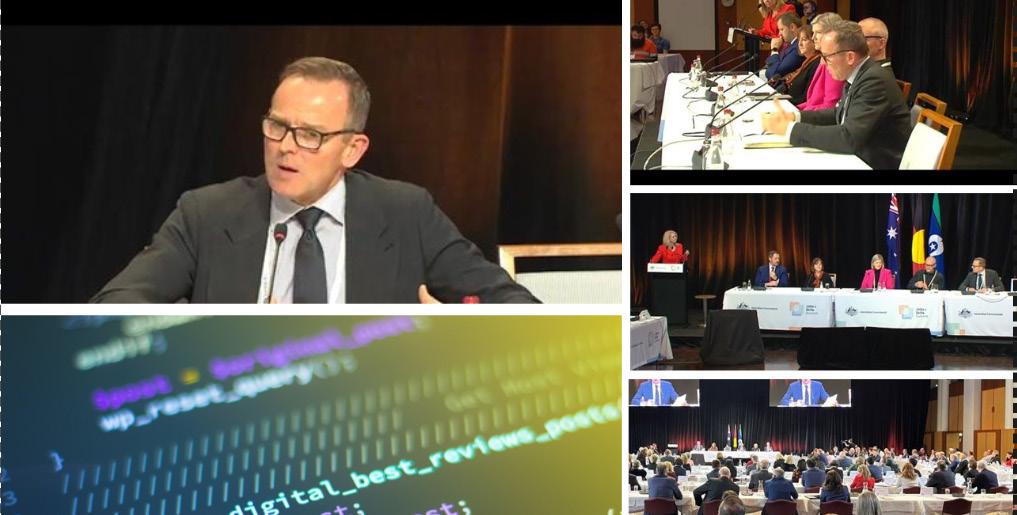
Recent generations have been losing interest in manufacturing, says Goennemann, because we keep hearing manufacturing is shrinking and don’t know about the variety and expertise it often involves.
“We get it wrong before the work begins,” says Goennemann, “and it impacts the pipeline of people looking to a manufacturing career, but manufactur ing indeed can offer a job for anyone, of any skill set, from any background.”
He says misconceptions about manufacturing are deeply wired in Australians so that we favour finished goods and production lines when thinking about manufacturing.
Finished goods are easier to under stand, and great for ribbon-cutting photo opps. But all 141 manufacturing projects co-financed by AMGC have a digitisation component— they’re high-tech businesses.
Scaling up
Rather than a dearth of research, ideas, or the capability to turn them into real ity, the capacity to scale up is the biggest problem for many Australian manufac turers, and therefore a focus of AMGC’s support. Of the 47,000 manufacturers in Australia, about 90% are small busi nesses employing less than 20 people— who often wear several hats.
“It’s difficult for small businesses to scale up to international sales where they could have 7.5 billion global customers, not 25 million locals,” says Goennemann. “Yet that is what an Australian company is doing with carbon fibre wheel rims.”
Importantly, building scale in manu facturing is among the 36 outcomes from the Jobs and Skills Summit to which the government has already committed.
The government also committed to support jobs growth and resilience in the clean energy supply-chain by increasing Australia’s value-adding, clean energy manufacturing industries.
AMGC research shows that 95% of Australia’s manufacturing exports are generated by just 5% of local man ufacturers. This means that even a small uplift in growing the scale of local manufacturers could have an immense impact on jobs and GDP.
INDUSTRY NEWS
Greener. More sustainable
for your
Cleaner,
aluminium
projects.
Continues on page 21 16 | Industry Update Issue 128 October / November 2022 industryupdate.com.au
Goennemann expects AMGC’s mantra is sinking in, and there will be good results from the summit.

IS AN INITIATIVE 1674AMWMEL23INDUPDATEOCT22 AUSTRALIANMANUFACTURINGWEEK.COM.AU THE JOURNEY TO INTELLIGENT MANUFACTURING AMW MELBOURNE 2023 SPACE SELLING FAST. BOOK NOW! For enquiries please contact Anne Samuelsson (Head of Sales) On 0400 115 525 or email asamuelsson@amtil.com.au 9TH – 12TH MAY 2023, MELBOURNE • MCEC AUSTRALIA’S PREMIER MANUFACTURING SOLUTIONS EVENT
Bespoke bodies for Australian trade vehicles
thicknesses, grades and widths.
Park believes that the ability to design custom extrusions with Capral is part of what differentiates Bull motor bodies in the market.
“It takes all the complexity out of the day–to–day build but adds all the smarts of the design into it.”
As a long-term Capral customer, reflects on the relationship as more of a partnership, commenting that transparency has become one of the great benefits to both parties.
“We have cooperation as to future needs, warehousing and logistics so we work more as partners rather than a distant supplier. Capral is the most important part of our supply chain.”
Park stresses that a highly skilled, stable workforce capable of crafting high-quality vehicle bodies has been central to Bull’s success.
When Andy Park and his busi ness partner began a Perth metal fabrication business 20 years ago, they looked for a gap in the market where they could apply their creativity.
Then, badgered by an electri cian friend, they built the first Bull canopies and were soon creating a small run of bespoke canopies. They had identified a need in the vehicle build-up market for a standardised, scalable solutions for heavy industry vehicles used in mining, and by emer gency and utilities services.
They worked at perfecting Bull Motor Bodies’ manufacturing pro cesses and automated production. The team designed a new way of fabri cating vehicle canopies to streamline the process, shed excess weight and create a more stylish body. The result ing AeroBody range led to interstate contracts with large fleets.
But managing director Park says they realised there was scope for their business to innovate further.
“In 2007, we decided to take all we’d learned so far and start again with design. We invested in 3D software and looked at the whole thing differently.
“How would a car manufacturer
make this product? How could we use new technologies?
They wanted to use their essential material, aluminium, more smartly, using engineering, adhesives and new processes.


Using a clever mix of technology, premium aluminium and automo tive plastics, they created a range of strong yet lightweight, stylish chas sis-mounted modules to suit all light utilities on the market.
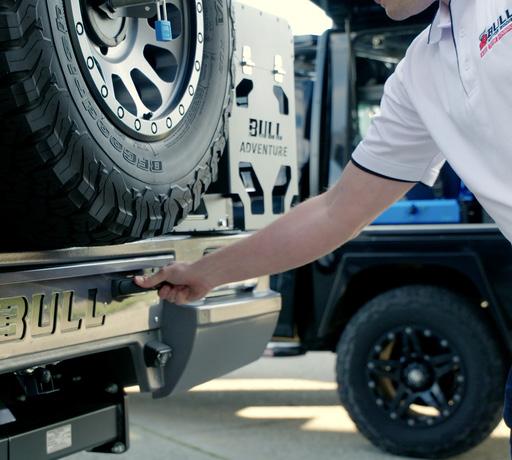
Fast forward to 2013, and Bull Motor Bodies opened its first interstate operation in Queensland and then its national distribution centre in 2018.
Today, a generation on from its mod est start, Bull Motor Bodies is a pre ferred provider for some of Australia’s largest fleets. Bull has literally built up more than 13,000 vehicles.
Bull motor bodies withstand Australia’s harshest conditions. For instance, their bespoke northwest mining utilities run 24 hours on offroad corrugated tracks.
Bull’s biggest client sector is min ing: the company builds directly for large mining companies and busi nesses servicing the mining sector.
“We work long and hard with our big clients to understand what their technicians do on-site, what tools and weights they carry, what terrain they travel over and how it’s going to be compliant,” says Park.
“We sit with them, visit their sites, talk to their people and try to understand what works, what doesn’t, what is essential and what is nice to have.”
Bull provides design concepts for review before
creating prototypes to trial in the field for evaluation, with feedback inform ing final designs. Its bespoke solutions draw on a wide range of standardised and proven parts, saving its clients time and money.
“Every time we touch any part of our work, we are thinking how it could be better and what we can improve. We have a culture of innovation; everyone feeds back, and in, we push forward.
“We live and breathe crafting our products; we are all dedicated
Park says the Bull team found aluminium the best medium to work with from its earliest days.
In 2007 Bull looked for a supply partner which ticked the right boxes as to who they were and what they could do and offer.
“We knew we needed lots of extrusions; we needed an experi enced Australian company with local die-making facilities able to turn things around quickly, with the capa bility to advise us on aluminium use. An Australian company that could service us as we grew.”
Capral Aluminium matched their brief and has become the most important part of Bull’s supply chain, providing more than 30 unique and standard extrusions along with aluminium sheet in different
to making sure our products are perfect when they go out the door. The laser-cutting, 3D designs and extru sions give us a head start.
“We don’t lose people. When they join us, we look after them, and they hang around. It’s a good place to be.”
Park’s focus is on pushing the busi ness forward by making things easier to do, making Bull a better place to work and producing designs others only dream about.
“We challenge ourselves daily to be more sophisticated as a supplier.”
capral.com.au
INDUSTRY NEWS
18 | Industry Update Issue 128 October / November 2022 industryupdate.com.au
Capral
Deputy Leader of the Opposition and Shadow Minister for Industry Sussan Ley
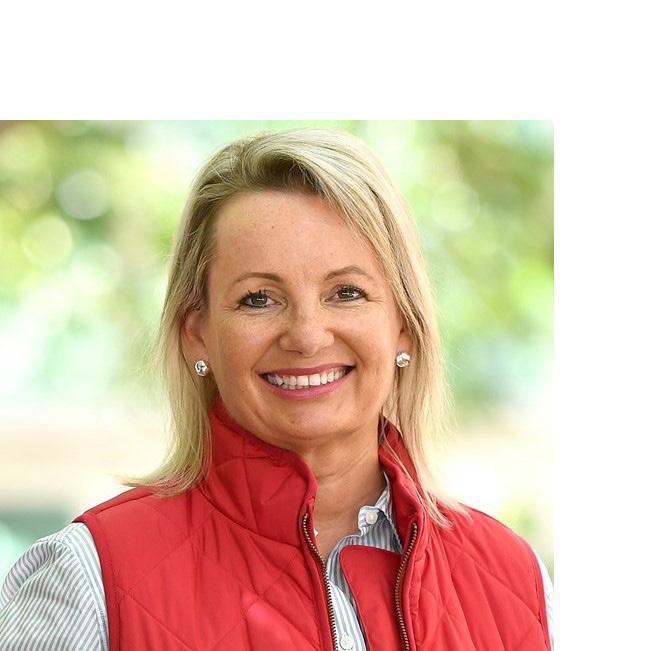
As the federal opposition con siders our next set of industry policies, I want to take this opportunity to thank the manufac turers of Australia and let them know my door is always open to hear what is going on in their neck of the woods.
Australian manufacturers have walked a difficult road through this pandemic. They have had to pivot all the way. Manufacturers have had to run workshops and change the way their businesses operate. They’ve had to split rosters, divide up teams and separate production lines.
Manufacturers have faced supply chain shocks and unpredictable hits to margins. It has been tough. But equally manufacturers have been up to meeting these challenges the pan demic has posed to our nation.
Manufacturers changed their
products to help Australia mask up and stay sanitised. They built new capabilities and shifted to support sovereign need over business sense.
It’s no stretch to say Australian man ufacturing kept the nation moving.
Manufacturers have come through a storm — many survived thanks to the support of government assistance through programs like JobKeeper.
This was always the plan. We needed to insulate our economy from the shocks so we could grow through the post-pandemic period.
With the major impacts of the pandemic behind us, many manu facturers now face new risks and a cost-of-business crisis that isn’t just brewing – it’s erupting. As the Federal Treasurer himself has said, storm clouds are on the horizon.
Travelling across the country in recent
Green shipping with Treotham tech
Global shipping needs to reduce environmentally harmful emissions. With this goal in mind, the Spanish start-up bound 4blue has developed a novel propul sion technology – fully automated sails that significantly reduce fuel consumption, by up to 40%.
A large proportion of ocean-going, coastal and inland vessels still run heavily on fuel oil and diesel. It’s a burden on the environment that’s no longer sustainable for shipping com panies worldwide.
To help the international shipping industry achieve the common goal of climate neutrality by 2050, engineers are frantically developing greener drive technologies, such as electric motors or methanol- and ammo nia-based fuels.
However, bound4blue from Barcelona is going in a completely different direction. Their idea is to use the power of the wind, combined with a novel drive system, to reduce fuel consumption.
To make this work, robust and durable components are needed that can with stand a harsh environment - such as igus’ plain and deep groove ball bearings
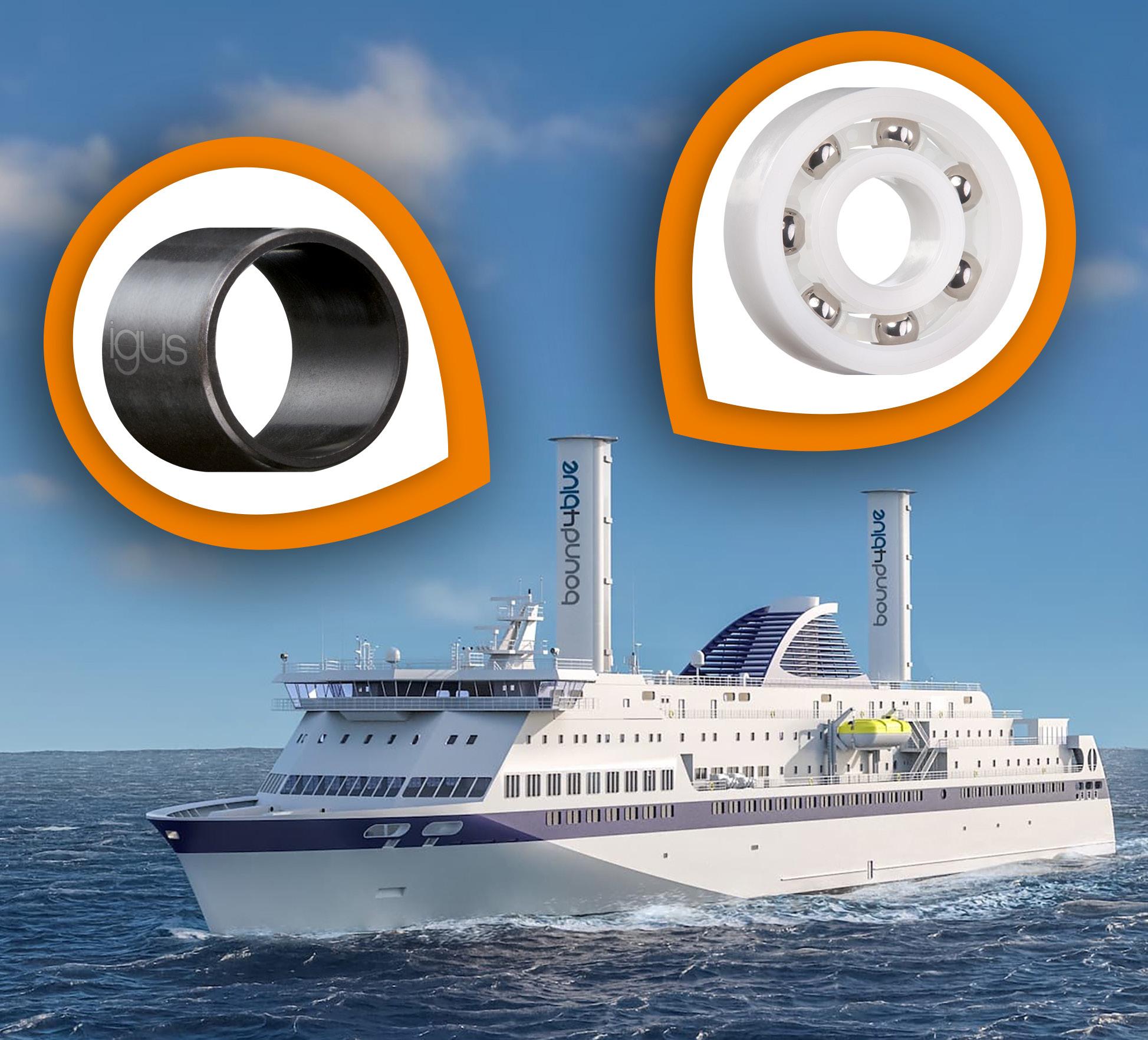
Lubrication and maintenance-free, the igus ball bearings are available
Electric suction draws wind
The Spanish engineers’ invention consists of two complementary drive systems: wing sails and eSAILs.
The 20m high giant eSAILs are mounted on deck and automatically adjust to the wind – similar to a clas sic sail.
The wing sail looks like an aero plane wing and is based on the same aerodynamic principles. The advan tage is that it is a collapsible system that takes up little space on deck.
The column-like eSAIL comes with a special technical feature: an electric suc tion mechanism on the back of the sail draws in wind while the boat is moving.
This significantly reduces turbulence that is otherwise common. As a result, the airflow literally surrounds the sail, creating enormous lift with low drag.
That lift is up to seven times higher than that of a conventional sail, with minimal power consumption, and therefore strong enough to take the strain off the engines.
With the help of wing sails and eSAILs, fuel consumption can be reduced by up to 40%.
According to the company, a pay back period of less than five years is
months, I’ve heard a great deal from manufacturers and small businesses.
Inflation is hitting all parts of our economy. We have rising energy costs, an inability to get skilled workers, soaring input costs and massive supply chain disruptions. These are serious problems that need serious solutions.
Previously we sought to support industry with partnerships. Our $1.3 billion Modern Manufacturing Initiative (MMI) did just that. These grants enabled manufacturers in sectors of comparative advantage and strategic importance to scale up.
The MMI initiative targeted man ufacturers in defence, space, national security, food security, recycling, clean energy and importantly medical products, which have become crucial in recent years as we responded to the pandemic.
I welcome the Labor government’s commitment to this important initia tive and am looking forward to seeing the projects which get underway over coming months.
An additional $52.8 million was committed to expanding the Manufacturing Modernisation Fund, and a further $107.2 million in our Supply Chain Resilience Initiative. These flagship programs were tar geted and achieved in partnership.
Another key issue facing manufactur ing is the cost of congestion at our ports.
According to the ACCC and the World Bank, Melbourne and Sydney ports are
ranked in the lowest 15% for efficiency in the world. Out of 351 global ports, Melbourne ranked 302, Fremantle 326, Sydney 337 and Adelaide 339.
The ACCC has said it consid ers that industrial relations have played a pivotal role in inhibiting productivity and efficiency gains at Australian ports, exacerbating delays and increasing costs to Australian importers and exporters.
CEO of the Australian Chamber of Commerce and Industry Andrew McKellar said the Maritime Union of Australia maintains a choke-hold on Australia’s ports, trashing any mea sures that would encourage a more flexible and responsive workforce.
This is an issue on which we need to see action and an area we will be examining carefully. Yet our focus is not just in one sector – we are exam ining the pressures right up and down the supply chain.
On balance I think we got the set tings right when it came to supporting Aussie manufacturers through the pandemic and I’ll be watching closely to make sure the balance is maintained as we face this cost-of-business crunch.
So thanks to all manufacturers for their hard work which kept Australia strong!
We have to keep at it … Because we aren’t out of the woods yet and we can’t afford to take a backward step when it comes to supporting Australian industry.
therefore guaranteed.
To convince shipping companies of the benefits of this new drive system, the engineers also want to keep main tenance costs as low as possible.
The system has to withstand high loads, salty seawater, high humidity and changing temperatures for years – with out frequent repair interventions.
These are demands that must be met not only by the largest but also by
the smallest parts, such as the plain bearings. Hence, components from igus are used in the eSAIL.
The designers use cylindrical plain bearings made of the iglidur X mate rial for the gear shafts and support rods of the sail.
The advantage compared to metal bearings is that the polymer bearings don’t corrode, even in direct contact
INDUSTRY NEWS
from Treotham Automation.
Continues page 37 Industry Update Issue 128 October / November 2022 | 19 industryupdate.com.au
Make the most of ‘temporary full expensing’ incentive
October 2020 and 30 June 2023
• Used principally in Australia for the principal purpose of carrying on a business
Note - the TFE measures only apply to depreciating assets, as defined in the income tax legislation. Three important asset classes are not included under these measures as they fall under other provisions of the Income Tax Act:
• Capital works - Capital works are deductible under the Capital Works Expenditure measures. While many people colloquially refer to these deductions as ‘building deprecia tion’, it is important to remember that buildings and similar struc tures are not depreciating assets for tax purposes.
• Depreciating assets that would oth erwise be allocated to a low-value pool or a software development pool. These assets continue to be allocated to these pools (since the election to use such pools is irrevo cable) and are therefore not eligible for TFE.
• Primary production assets such as water facilities, horticultural plants, fodder storage assets and fencing assets. These assets are otherwise dealt with under Subdivision 40-F of the ITAA 1997 and are not eligible for TFE.
One size does not fit all
application of the measure creates a significant difference between tax and accounting income.
Additionally, the TFE can get particularly complex in its interaction with other tax provisions and give rise to unintended consequences that could be hard to foresee with cer tainty at the relevant time. Therefore, you may sometimes need to think of doing the unthinkable – opting-out of the measure in some circumstances.
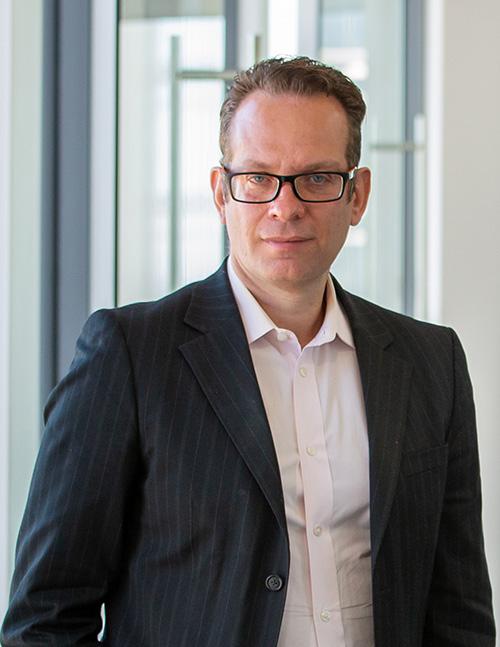
How do I apply?
Equipment and machinery are among the biggest expenses for a manufacturing business, and gauging the right time to invest in new or second-hand equipment can have a significant impact for both productivity and cashflow.
Now may be the time to purchase new or second-hand equipment by making use of the federal govern ment’s Temporary Full Expensing (TFE) incentive - but it does not come without pitfalls.
Introduced in the October 2020 federal budget as part of the gov ernment’s COVID relief measures, the TFE has effectively replaced the decade-long Instant Asset Write-off.
The TFE measure provides for a full deduction in respect of the cost of eligible assets by eligible entities in the income year in which the asset is first held, first used or installed ready for use for a taxable purpose.
In a significant departure from the Instant Asset Write-off (which had a threshold of $150,000), the TFE is unlimited in amount. As such, it can prove very lucrative for manufacturers.
The TFE measure was originally meant to apply until 30 June 2022, but the May 2021 federal budget extended it to 30 June 2023.
Who is eligible?
The TFE is one of the Government’s
most far reaching incentives. Your business may be eligible for the measure if it meets the following requirements:
• the relevant entity carries on a business
• the relevant entity has ‘aggregated turnover’ of less than $5 billion
While the $5 billion turnover test is very generous, it applies to all ‘con nected entities’ and ‘affiliates’ inside and outside of Australia. Therefore, an Australian subsidiary of a multi national group may well be excluded under this wide-ranging definition, however it may be able to access TFE through an alternative test if it has more than $100 million in assets.
Additionally, recent cases have led to uncertainty around the concept of ‘carrying on a business’ in recent years. If you are unsure as to whether your business qualifies, it is import ant to get expert taxation advice before making a purchase.
Which assets are eligible?
To be eligible for the TFE, the depre ciating asset must be:
• new or second-hand (if it is a sec ond-hand asset, your aggregated turnover must be below $50 million)
• first held, first used or installed ready for use by you for a taxable purpose (such as a business pur pose) between 7.30pm AEDT on 6
Because the TFE measure extends to very large businesses that were not previously eligible for any pre-COVID or initial COVID concessions, its application differs for different sized businesses.
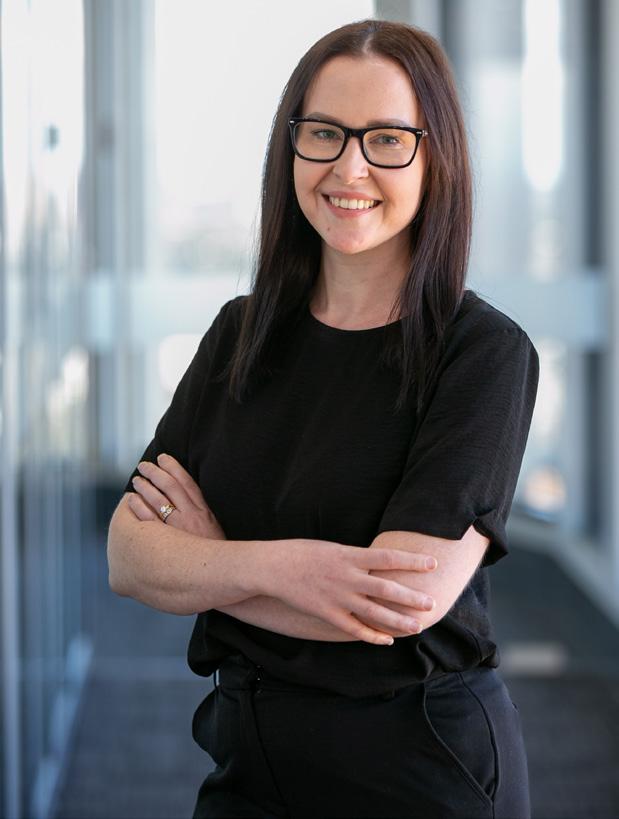
You can apply for the TFE in your tax return. However, as outlined above, due to the complexity of the provi sions, it’s important to seek expert taxation advice prior to making any large investment in depreciating assets to ensure that you qualify, and to avoid any unintended conse quences of accessing the incentive.
To
opt-out or not to opt-out?
Notwithstanding the advantages of the TFE measures, there are some circumstances in which applying TFE may be detrimental. Examples include where the TFE creates tax losses, if the business is being sold in the future (which may create issues for the purchaser), if there is an intention to create a tax consolidated group in the future, and where the
BUSINESS, FINANCE & ACCOUNTING
For further information on how William Buck can assist you in assess ing the suitability of the TFE or other tax advice contact them at 02
4000.
Buck
Small businesses Aggregated Turnover < $10 Million TFE is available for most assets, including second-hand assets. The measure is available until 30 June 2023. Medium Businesses Aggregated Turnover $10 - 50Million TFE is extremely attractive because eligible assets, including second-hand assets, can apply this measure until 30 June 2023. Large Businesses Aggregated Turnover $50 - 500Million The general availability of TFE is only for new assets and improvements to new and existing assets acquired between 2020 Budget Night and 30 June 2023. Very Large Businesses Aggregated Turnover $500Million to $5 billion The TFE measures are relatively rigid –namely, the assets acquired must be new assets or improvements to new and existing assets (i.e., second element costs).
8263
William
williambuck.com
Raffi Tenenbaum - Tax Director at William Buck Accountants and Advisors
20 | Industry Update Issue 128 October / November 2022 industryupdate.com.au
Rhiannan Canto - Senior Tax Manager at William Buck Accountants and Advisors
Manufacturing: misunderstood, mismeasured and miscommunicated

Continued from page 14
From car industry ashes
Australians often mourn the loss of our car ‘man ufacturing’ industry. Yet a growing auto parts industry has arisen from the ashes of assembling cars for others. These days Australia’s auto parts manufacturers create 100 line items that are all intermediate and finished parts, and crucially are sold all over the world, and are resilient because they are not waiting on parts from overseas “Australia is better served by seeking oppor tunities to supply components into global supply chains—taking a smaller piece of a big pie rather than a big piece of nothing,” says Goennemann.
The auto parts industry today includes expansion and advances by companies such as Omni Tanker in Sydney and the world-first active wheel align ment system from Doftek in Melbourne. Some of the world’s best vehicle radiators from PWR (used in Formula 1 racing cars) and ARB or air-actuated differential lockers, are Australian designs, made here and exported internationally.
Combining component-makers worked well when a virus shone a spotlight on the need for Australia to make entire products, too.
In 2020, when hospitals were desperate for invasive ventilators for Covid patients who couldn’t breathe, AMGC and Grey Innovation pulled together 53 local manufacturers to make them in Australia under the Notus Invasive Ventilator program. None of them had made a medical device before, let alone an invasive ventilator.
The message is sinking in The 140-odd summit attendees were clearly told they need to re-think manufacturing, its value and what it offers Australia, to help change the mindsets of government, industry, educators, families and the potential workforce. Goennemann expects AMGC’s mantra is sinking in, and there will be good results from the summit over time.
“When you get a new government, which, very early in its term, puts people from all walks of government, business and industry in a room, it’s a good sign. And we have a pro-manufacturing prime minister and an industry minister who is extremely interested in manufacturing, so my expectations are high.”
Goennemann describes Australia’s recent ranking by Harvard Growth Lab in its Economic Complexity Index, way down at 91st (between Namibia and Kenya) from 133 OECD countries as “disgusting” for a rich country. He says the index is highly relevant because a country’s ability to make complex things is its most important capability.
“If Australia keeps making basic items and selling commodities without value-adding, without intellec tual property, we are not resilient— we risk losing to anyone who can make a similar, simple product.
“Every country that makes complex things does better than a country which does not. If you are better off economically, you have an opportunity to be better off socially; you are baking a bigger cake so you have more to share.”
hour focusing on your business?
STRATEGIC PLANNING IN JUST ONE HOUR
The William Buck Hour is designed to help middle-market businesses assess their current position, realign thinking and maximise their business’s potential. In just one hour, we’ll guide you through a detailed discussion structured around a range of key fundamentals. Following the session, our advisors will conduct an analysis of your business using commercial insights, professional experience and best practice standards to develop a prioritised action plan for your business.
The end result is a fresh perspective and a focused strategy to help you move forward.
BUSINESS
1The
williambuck.com In your lifetime, you will spend: 45,000 27,000 2,550 hours handling emails hours in Zoom meetings hours making coffee
William Buck Hour
amgc.org.au • article too long please trim Industry Update Issue 128 October / November 2022 | 21 industryupdate.com.au
Australian Manufacturing Growth Centre
Evergreen looks to a wider market for its Australianmade Asian food products
by Margie Smithurst
David Zhang, “The majority [of the market] is Western food.”
But Zhang says they’re currently in the lucky position of being able to capture a growing vegetarian market, with soya a high protein alternative to meat.
That said, the smell, taste and tex ture of soya products is a challenge for Western palates, says Zhang.
Investment in R&D to meet market needs
As a result, the company has invested significant amounts of money this year in building a new state-of-theart R&D factory on its Bankstown premises.

“We know what the Asian mar ket wants in Australia,” says Kerry Zhang. “We’re one of the top sellers for tofu and noodles for Asian people.”

“Now we’re trying to adapt that to the western audience, especially for hard tofu. For example, the taste: western people don’t like the soy fla vour being too strong, and they prefer a chewier texture, so we’re doing R&D on that.”
Funding for the new facility, which is due to come online in six months’ time, has been helped by St.George Bank.
Kerry Zhang says St.George’s rela
lot of instances, we’re there to have ideas bounced off of us and bring our industry expertise into the relation ship. Whether it’s new machines that expand the business and help it grow, or investment in cost-saving innovations, we know that the real way we can make a difference is by understanding our customers and their operations to add value beyond just finance.”
When Shanghai-born engi neer David Zhang set up his first small tofu factory in Western Sydney’s Greenacre in 1991, he had his sights set on Australia’s Asian food market.
At the time, the quality of Asian food in Australia was poor, says Zhang, and he saw a niche for a healthy option.
Using soya and wheat products from Australia and doing all the manufac turing locally, Zhang gradually built a customer base for fresh tofu, beancurd, noodles and dumpling sheets.
“Slowly, slowly customers came to us,” he says, and they kept coming back wanting more.
Within the next few years, he had opened a distribution centre in Melbourne, and expanded opera tions to Brisbane, WA, the NT and Tasmania.
The company faced a major setback in 2006, when, after moving their fac tory to Sydney’s Bankstown, it burnt down. Their ability to quickly rebuild and restart production led to them winning a Phoenix Award that year.
When Woolworths asked to stock the product 11 years ago, and Costco a
few years later, Evergreen Foods was well and truly on its way.
Now, David’s son Kerry has joined the company as Evergreen’s manag ing director.
Constantly updating their factories
David Zhang’s engineering back ground means he is constantly innovating and updating his factories, combining biology and food science to keep ahead of competitors.

With a reliance on automation, the company is still quite small, with under 100 employees.
“The thing with automation is that the quality is very consistent,” says son Kerry.
products
The Zhangs put their success down to always striving for the highest quality and most nutritious food, and adapt ing to fit the market’s needs.
They spend very little on market ing, because as David says, “make the best products and the market will come”.
“We’re still a niche market,” says
tionship with the family’s business has been very solid.
“They have always been supportive of our requests since we switched to them a year and a half ago.”
St.George Relationship Director, Industry Banking NSW, Daniel Galofaro said “It’s more important than ever to have a strong relation ship with your bank manager. In a
such an exciting time to be helping David and Kerry with their plans for expansion with their new R&D facility.”
BUSINESS, FINANCE & ACCOUNTING
“Make the best
and the market will come”
“It’s
St.George Bank stgeorge.com.au
22 | Industry Update Issue 128 October / November 2022 industryupdate.com.au
David Zhang, Founder, and Kerry Zhang, Managing Director
Rates: what lies ahead and how to counter it
by Colin Cooper, director of Australiawide Finance
The upward march of interest rates continues unabated, presently with no end in sight, writes Colin Cooper, director of Australiawide Finance
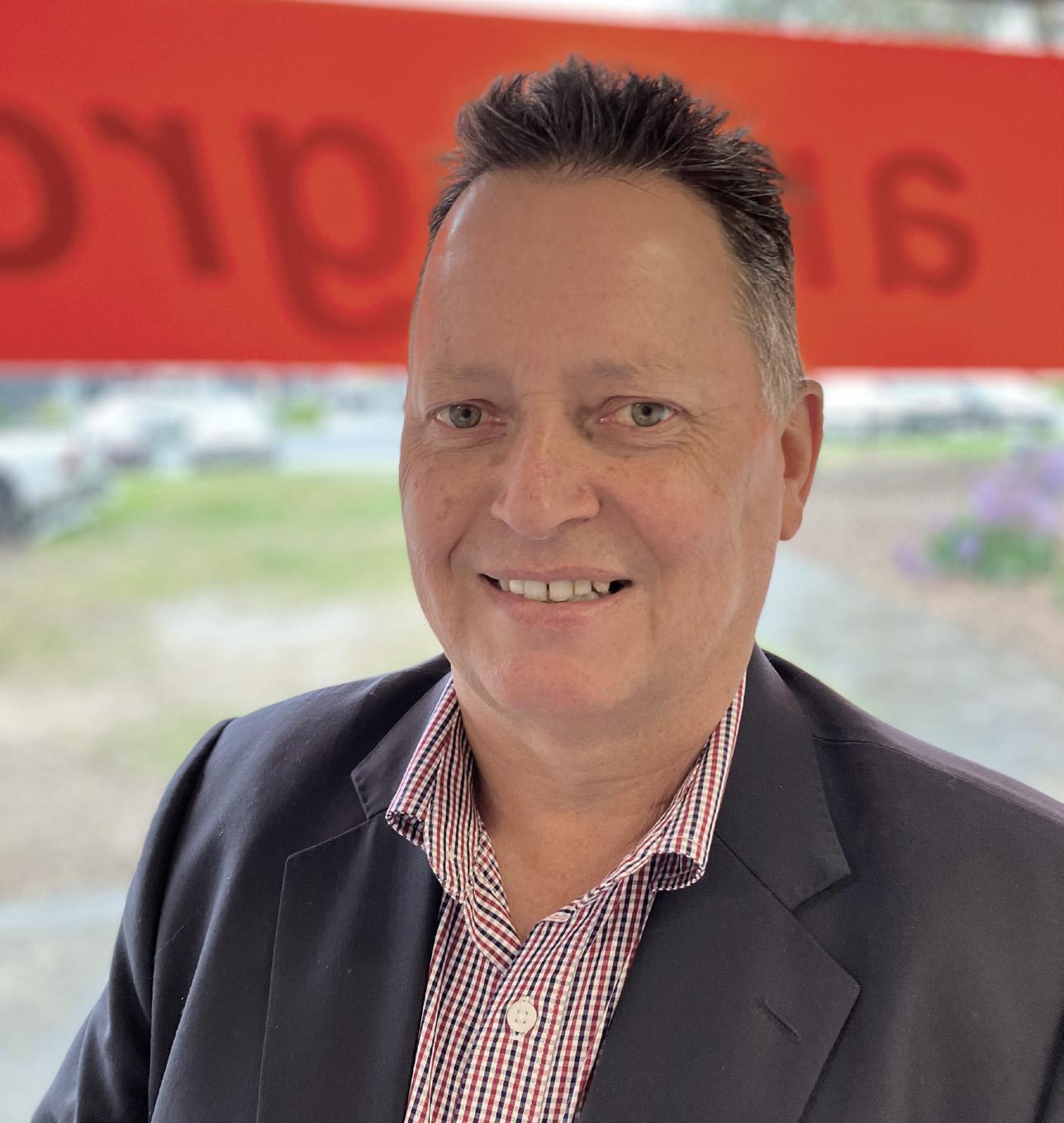
The world’s central banks in each country seem to be in lockstep, with the goal of taming rampant inflation, but the early signs are that rises have had a minimal impact, and there will be more to come.
Central bankers, usually circum spect, have announced their firm intent to continue to do ‘whatever it takes’ to bring inflation back to a target of 2% - while currently it ranges between Australia’s 6.1% to almost 10% in the UK. The US and Eurozone fall in the middle but closer to the UK upper range.
Perhaps the most concerning part is the commentary from the US Federal Reserve Chairman Jeremy Powell acknowledging that the fight against inflation ‘may cause a reces sion,’ and the World Bank President David Malpass quoted as saying that inflation could ‘last for years’.
We hope it is not the case. Meanwhile, the Australian Reserve Bank Governor Philip Lowe has said Australia is well placed to avoid recession.
Three commonly referenced economic indicators offer some per spective. Pricing of semiconductors, shipping container movements and fertiliser production form some of the most relied upon forward indicators of activity, and the news is that all may have peaked.
Much of the inflation outcome has been caused by supply chain, pro duction and transport challenges, which are beginning to show signs of a
return to normality.
Semi conductors have been in serious short supply for several years for a variety of reasons: ranging from factory shutdowns caused by the pandemic, to the increased sales of telephones, personal computers and gaming devices as people stayed at home.
One outcome was an estimated 100,000 unfinished cars waiting for chips before they could be delivered. The previously estimated large upturn in demand for chips has been downgraded, partially due to an expected fall in demand for mobile telephones and computers.
Shipping container movement prices monitored by the Drewry World Container Index show the 30th consecutive weekly price fall - of 10% to $4,472 US for a 40 foot container, having fallen 57% from the high of $10,377 US in September 2021, although still 21% higher than the 5 year average of $3704 US.
Fertilisers for agriculture are in serious short supply, partially caused by the Russian Ukraine war, causing major price hikes both in fertiliser and the materials used to produce them.
Russia, Belarus and Ukraine are among the world’s largest exporters after China, which ceased export of fertiliser in December last year to avoid domestic shortages and price spikes.

Sanctions, shipping delays, insur ance problems and Russia’s exclusion from the SWIFT payment system have resulted in massive price spikes and supply shortages, contributing to the expectation of a significant food short age and price crisis across the world.
However, from July, a series of
exemptions from sanctions have been combined with encouragement from the US government to increase Russian exports.
How to counter the impact of interest rate rises
There has been a vast change in the supply of finance in the past several years. Banks being less willing to sup ply a retail presence and the prolifer ation of fintech lenders has changed the landscape.
While rates have been low, it has been convenient to accept the most available finance offering. Despite rates having increased, it may be pos sible to get a far lower rate than before
– just by shopping around.
Shop around, ask questions and compare
costs
Interest rates may provide a headline indicator but the real cost of finance is more nuanced.
Establishment fees, monthly and any other fees commonly present an added cost to the interest charges contained in a finance contract and the best way to compare is to request a schedule of the total cost of your proposed loan.
Australiawide Finance austwidefinance.com.au


BUSINESS, FINANCE & ACCOUNTING
Colin Cooper, Director of Australiawide Finance
GO AHEAD AND GROW MEMBERSHIPS austwidefinance.com.au 1300 367 327 Australian Credit Licence number 508530 LOOKING FOR FINANCE? We specialise in commercial asset finance. Buy your business assets with confidence and arrange fast, competitive finance with one call Vehicles, Plant & Equipment and Machinery Personal Finance for Cars, Caravans, Marine, Motorbikes, Jetskis etc. Finance for Technology & Green Energy Assets New & Used, Older Goods, Dealer, Auction & Private Sales Full Service: from Consultation to Application, Approval, Settlement and beyond Wide & lengthy experience, ongoing customer service BRING YOUR BUSINESS VISION TO LIFE! australiawide FINANCE offers a wide and varied range of finance products, tailored for business asset purchases SCAN FOR PRODUCT RANGE
Industry Update Issue 128 October / November 2022 | 23 industryupdate.com.au
Quiet quitting: disengaged employees are doing the bare minimum
Have you ever worked in a job where you simply did the bare minimum to get paid? You were probably turning down extra shifts and wanted nothing more than for the day to end.
Chances are that some of your employ ees are doing the same. Quiet quitting.
It’s a phenomenon that’s beginning to trend due to the same factors that caused the Great Resignation and Great Reshuffle.
Although it is only beginning to trend now, the concept is by no means new behaviour. Quiet quitting is a result of employees not feeling engaged in their roles or appreciated at work.
More and more people are choosing to stop working harder for no extra pay or incentive.
Quiet quitting is linked to low productivity and business stagnation, and manufacturers with large work forces will lose the most if they don’t pay close attention to their employee engagement levels.
Research has shown that quiet quit ting and low engagement correlates with poor management. Managers who don’t invest in the wellbeing and interests of their employees will see no extra investment or commitment from their employees in return.
These employees will be the first to leave when things go wrong. In Australia’s tight labour market, which is expected to last for at least another two years, “job seekers have plenty of new roles to choose from and a lot of bargaining power, so leaving is a no brainer for those who don’t enjoy what they’re doing,” says Sam Standfast, Manufacturing Team Leader QLD at
Fuse Recruitment.
In response to candidate shortages, businesses are offering high salaries in order to win over and retain talent.
by Fuse Recruitment
expectations of the new employee.
“Employers must highlight expecta tions throughout the entire recruitment process so candidates can understand what they’re signing up for,” explains Chelsey Elfverson, Senior Recruitment Consultant from the manufacturing team at Fuse Recruitment.
When hiring new employees, hiring managers should know what attitudes to look out for to ensure the candidate fits in with the current culture.
“We see a lot of success in compa nies who’ve taken care of our on-hire employees,” says Elfverson.“These companies offer greater benefits, such as employee assistance programs, flexible rosters, salary continuance insurance, study assistance, wellness days and so on. These companies generally have leaner workforces and have lower turnover.”
Invest in training where possible. Employees will feel more engaged when they are learning on the job and have a clear career path. Additionally,
“The last thing you want is to secure a new recruit by offering a higher salary and then finding that they’re doing the bare minimum.”
Aside from that, employees who don’t feel engaged at work will be less likely to take initiative when things go wrong. Many issues throughout the business will be swept under the rug simply because employees don’t trust that management will take action. This will leave you blind of issues that could be rectified to speed up produc tion and overall productivity.
Combat quiet quitting
Building relationships with employees begins before you even employ them.
Employers begin making prom ises, whether they keep them or not, to employees in their job advertisements.
As well as highlighting company ben efits, employers should mention their
“It’s a bonus if you can find a new employee who goes for the same footy team as their colleagues, but you don’t need this for the employee to be the right culture fit,” she says, “as long as the employee shares similar values with the business and has a great attitude, they’ll fit in well.”
Employees who fit in with the rest of the team and have great relation ships with their managers will gener ally enjoy going to work and are more motivated to deliver beyond expecta tions and targets.
Show you’re interested
It doesn’t take much to get to know someone – especially if you see them on a regular basis.
Many might say that manufactur ers aren’t the sentimental type, but employees would still want to feel appreciated.
Open conversations by asking employees what they’re doing on the weekend or how their kid’s first day at school was. Most importantly, be there to listen and show that you’re interested. You’ll have the opposite effect if your employees feel that you aren’t genuine.
this can help your business future proof your workforce by upskilling quality employees.

“The greatest levels of engage ment come from employees who’ve undertaken upskilling courses and have been offered routes to develop professionally.”
will take time to build engage ment, but the rewards will ensure sus tainability and longevity of proactive employers.”
EMPLOYMENT
“The last thing you want is to secure a new recruit by offering a higher salary and then finding that they’re doing the bare minimum”
Fuse Recruitment fuserecruitment.com
“It
24 | Industry Update Issue 128 October / November 2022 industryupdate.com.au
“Employers must highlight expectations through the recruitment process so candidates understand what they’re signing up for”
GJ Walker announces new industrial fan division Made in Victoria 2030 boosts manufacturing
The Victorian Labor Government’s ongoing plans for the state’s $31 billion manufacturing industry has been outlined in Made in Victoria 2030: Manufacturing Statement — the latest plan for manufacturing in the state.
The statement sets out a vision to ensure Victoria is a place of manu facturing investment and growth, especially in the five sectors which government believes offer the most significant potential for advanced manufacturing. These are food manufacturing, low-emissions and renewable energy, health technolo gies, defence and space, and digital and advanced technologies.
GJ Walker Air Handling Systems have announced the launch of their new business venture Walker Industrial Systems (WIS) as part of their new focus on the industrial ventilation market.
WIS will add a range of industrial fans and blowers to the GJ Walker Group portfolio of products, bringing a new market with different ventilation requirements that complements the suc cessful air handling systems business.
Servicing clients nationally, WIS will be headed up by two experienced fan engineers in Steve McGuire with 20+ in the industry and Sudevan Nallathamby, extending his cur rent position as GJ Walker General Manager to also include WIS Director.
“We are looking forward to this new chapter for GJ Walker that will extend our breadth of business in the ventilation market. With Sudevan as
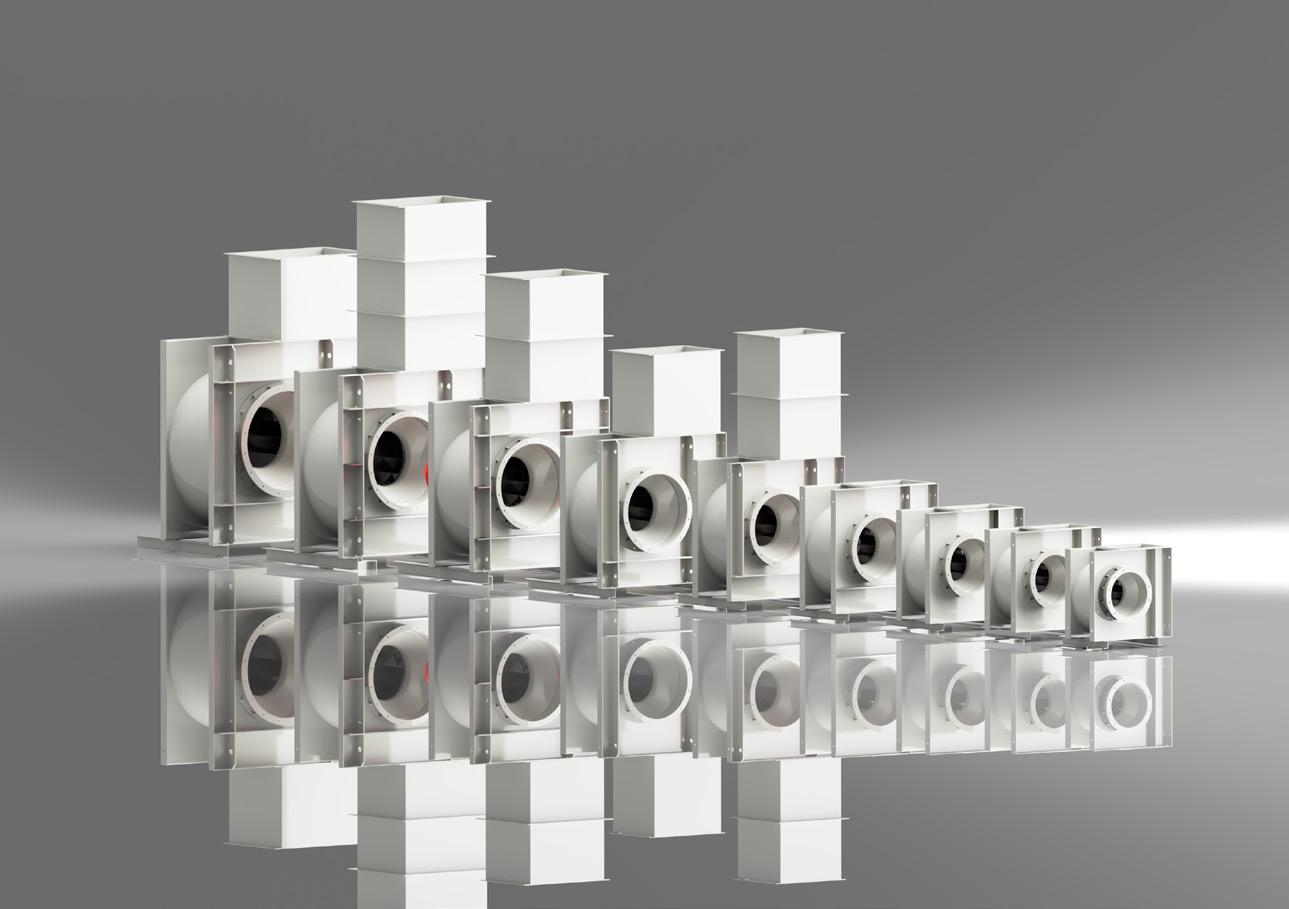
General Manager of the business, his outstanding knowledge, experience, and skills from over 20 years in the industrial ventilation industry makes WIS an exciting addition to the GJ Walker Group.
“I look forward to a talented team servicing the industrial fan business as GJ Walker has in air handling units for almost 50 years,” said Damon Walker, Managing Director of GJ Walker Air Handling Systems.
About GJ Walker
GJ Walker Air Handling Systems was established in 1975 and is a leading manufacturer and supplier of air handling products in Australia.
Involved in the construction of some of the largest industrial and commercial buildings across Australia, GJ Walker has provided the design and manufacture of specialist air handling systems to AS 3666.
Actions outlined in the statement include adopting new technology, increasing industry engagement, strengthening local supply chains, upskilling the future workforce, cre ating thriving hubs and precincts, and boosting exports.
The goal is to drive economic growth and create high-skilled jobs by boosting manufacturing.
“This statement provides a clear vision and plan for our advanced man ufacturing future – creating jobs and positioning Victoria as a world-lead ing manufacturing location,” said Minister for Industry Support and Recovery Ben Carroll.
About 23,000 Victorian manu facturers today employ more than 260,000 people and contribute more than 27 per cent of Australia’s manu facturing output.
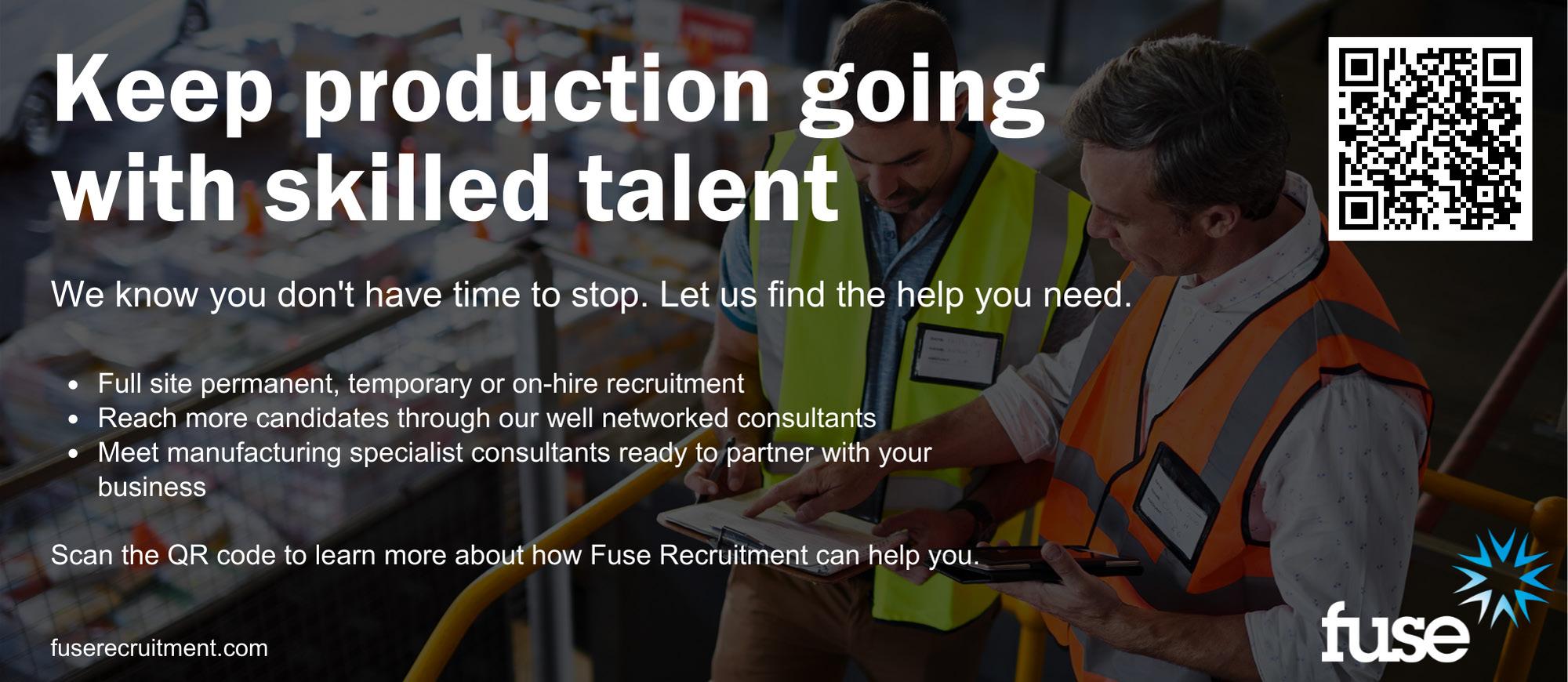
The Labor Government has already introduced a range of initiatives to support the state’s advanced manu facturers, including the Breakthrough Victoria Fund, the Manufacturing
Centre and the Low Carbon Manufacturing Grant Program.
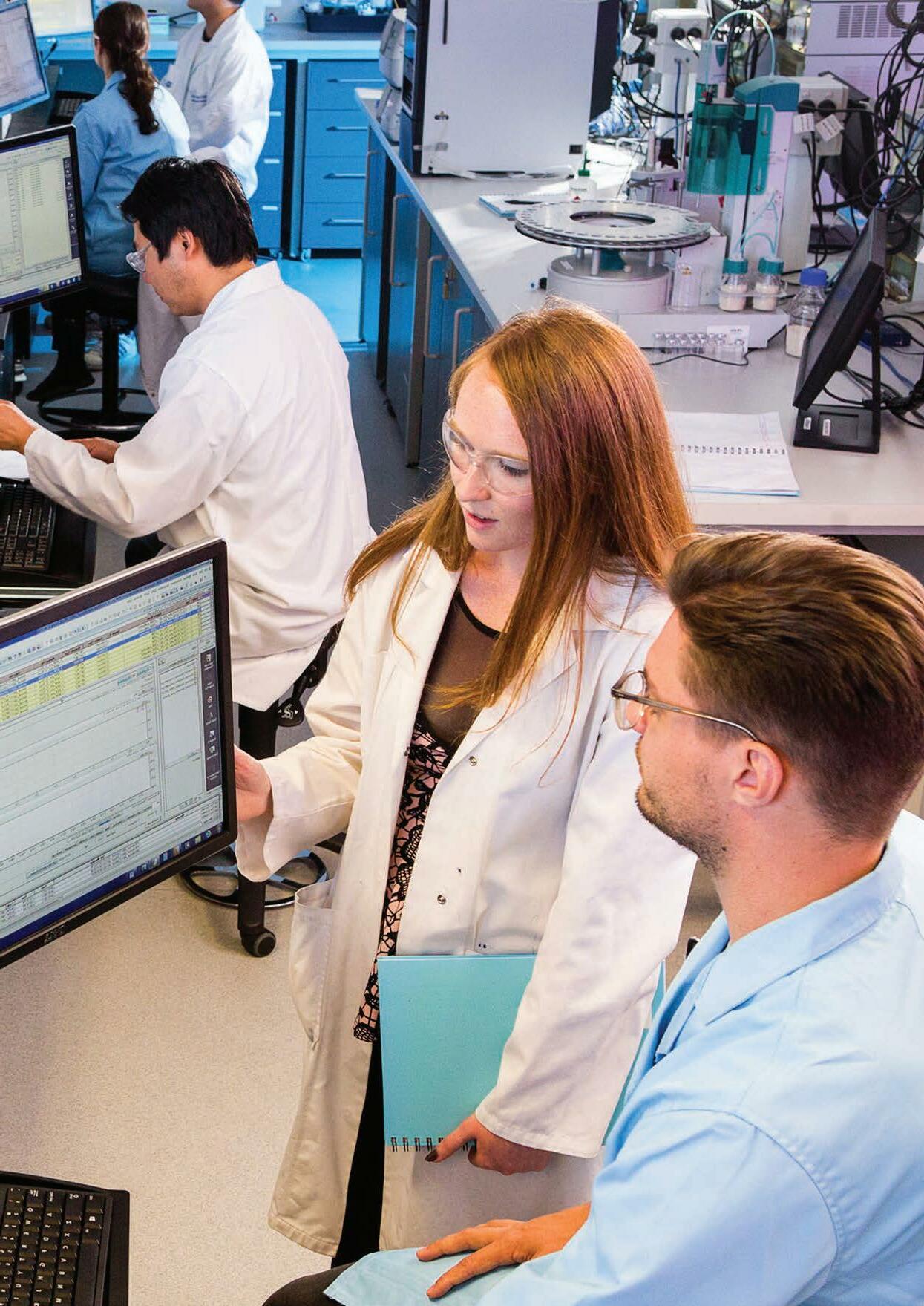
In the next decade, the govern ment will invest $2 billion via the Breakthrough Victoria Fund to help businesses commercialise, to boost innovation and create well-paid jobs in industries such as agri-food, health and life sciences, the low carbon econ omy and digital technologies.
Current investments in Victoria by international companies include Moderna’s investment in mRNA vaccine manufacturing and research, Nissan Casting’s expansion into elec tric vehicle components, Hanwha’s delivery of multibillion-dollar defence projects, and George Weston Foods’ new flour mill and production.
EMPLOYMENT
IN VICTORIA
Industry Update Issue 128 October / November 2022 | 25 industryupdate.com.au
MADE
2030 Manufacturing Statement Driving jobs and growth
About Hare & Forbes
SYDNEY
SHEET METAL SALESPERSON

• Telephone and Counter Sales.
• Computerised quoting and invoicing.
• Managing outstanding orders.
• Assist customers to choose the best product for their needs.
• Customer relationship building with ongoing customer service.
• Utilising organisational and problem-solving skills
STOREPERSON ($28-30 AN HOUR + OT)
THE ROLE > Responsible for the control of receiving and dispatch of goods in our Sydney branch. The successful candidate will oversee accepting deliveries, unloading of trucks and couriers, unpacking sorting and checking goods are correctly identified with stock codes and conduct stocktakes. The duties of this role are as follows:
• You will be accepting deliveries, unpacking, sorting and checking goods received for quality, type or size.
• Maintain up to date records of goods within the store.
• Assemble goods to satisfy orders, requisitions or schedules, including re-packing where appropriate.
• Using RF scanners for pick and pack, loading of stock and machinery.
• Ensure holdings of goods in containers and/or arrange dispatch to other locations.
• Distribute goods to authorized persons and complete relevant documentation/records.
• Other responsibilities will include coordinating paperwork systems and procedures, improving storage methods and housekeeping and assisting in the dispatch area when required.
JUNIOR MACHINERY SALESPERSON
THE ROLE > We are looking for a Salesperson who will need to have experience as either a Fitter and Machinist, Sheet Metal Worker or Coach Builder. We will offer on the job training to the right person to help them grow into the role.The duties of the role are as follows:
• Telephone and Counter Sales
• Computerised quoting and invoicing
• Managing outstanding orders
• Assist customers to choose the best product for their needs
• Customer relationship building with ongoing customer service
• Utilising organisational and problem solving skills
BRISBANE
Location: Coopers Plains
SERVICE TECHNICIAN MACHINE TOOLS
THE ROLE > Reporting to the Service Manager, this position involves all aspects of mechanical, electrical and hydraulic fitting both within the workshop and our customer’s place of business. The successful candidate will perform duties consisting of but not limited to the inspection, commissioning, installation, repair and maintenance of industrial machinery.
The duties of the role are as follows:
• Mechanical repair and breakdown maintenance of industrial machinery.
• Installation and commissioning of industrial machinery.
• Preventative maintenance and servicing.
• Electrical preventative and breakdown maintenance.
• Workshop repairs and testing.
• Plasma cutting equipment commissioning, repair and maintenance.
• Reporting on service work – input of information into company databases to grow knowledge.
• Keeping detailed records of identified problems, processes to undertake repairs and parts required.
• Accurate time and record keeping – keeping accurate records to assist in fair billing of clientele.
SALES REPRESENTATIVE
THE ROLE > We are looking for a Salesperson who will need to have experience as either a Fitter and Machinist, Sheet Metal Worker or Coach Builder. We will offer on the job training to the right person to help them grow into the role.
The duties of the role are as follows:
• Telephone and Counter Sales
• Computerised quoting and invoicing
• Managing outstanding orders
• Assist customers to choose the best product for their needs
• Customer relationship building with ongoing customer service
• Utilising organisational and problem solving skills
MACHINE TOOLS TECHNICAL SALES
THE ROLE > Specialise in selling Machine Tools and Equipment and they will ideally need to have experience as a Machinist, Sheet Metal Worker or Coach Builder. However, we will also consider you if you are an avid hobbyist with experience with workshop machinery and equipment. We will offer on the job training to the right person to help them grow into the role.The duties of the role are as follows:
• Telephone and Counter Sales.
• Computerised quoting and invoicing.
• Managing outstanding orders.
• Assist customers to choose the best product for their needs.
• Customer relationship building with ongoing customer service.
• Utilising organisational and problem-solving skills
ELECTRICAL FITTER
THE ROLE > We are looking for an experienced electrical Fitter to join the team of staff responsible for servicing our customer’s machine tools via warranty, preventative maintenance and break-down repairs. The duties of the role are as follows:
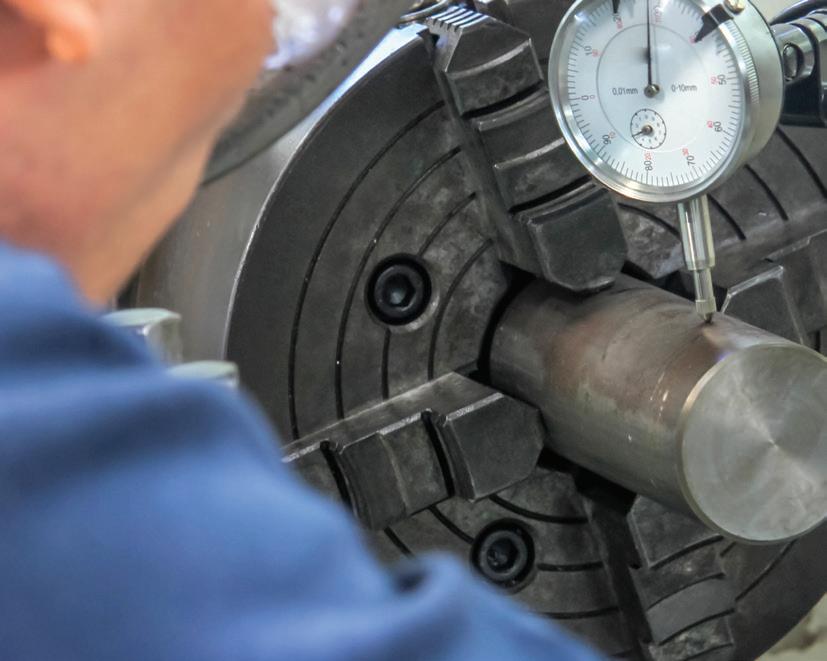
• Experience with Industrial Machinery
• Australian Electrical Fitter trade certificate.
• Ability to quickly troubleshoot faults and establish repair options.
• Proven ability to carry out repair options quickly and efficiently
• Ability to machine and manufacture minor components
• Sound knowledge and experience in servicing electromechanical assemblies
• Ability to read and interpret technical manuals, diagrams and drawings
• Knowledge and experience in machine tool alignments and accuracy
• Knowledge and experience in hydraulics
• Current drivers licence
FITTER-MACHINE TOOLS
THE ROLE > We are looking for an experienced Fitter to join the team of staff responsible for servicing our customer’s machine tools via warranty, preventative maintenance and break-down repairs.. The ideal candidate will be tradecertified, with a minimum of 4 years’ experience in a similar role. In addition to this, you will possess the following characteristics:
• Ability to quickly troubleshoot faults and establish repair options
• Proven ability to carry out repair options quickly and efficiently
• Ability to machine and manufacture minor components
• Sound knowledge and experience in servicing electromechanical assemblies
• Ability to read and interpret technical manuals, diagrams
and drawings
• Knowledge and experience in machine tool alignments and accuracy
• Knowledge and experience in hydraulics
• Current drivers licence
• A restricted electrical licence would be highly regarded
APPRENTICE ELECTRICAL FITTER 3RD OR 4TH YR
THE ROLE > We are looking for an enthusiastic trades person who’s recently completed their third /fourth year of their Electrical Fitter Apprenticeship to join our team. The ideal candidate will have completed at least three years of an electrical fitting apprenticeship in an industrial environment.
The duties of the role are as follows:
• Be a competent and confident apprentice or recent graduate of an electrical apprenticeship
• Have an interest in expanding your skill set into mechanical and hydraulic fitting.
• Be willing to continue to learn and grow with us after completion of their apprenticeship.
• Experience with Industrial Machinery
• Ability to quickly troubleshoot faults and establish repair options.
• Proven ability to carry out repair options quickly and efficiently
• Sound knowledge and experience in servicing electromechanical assemblies
• Ability to read and interpret technical manuals, diagrams and drawings
• Knowledge and experience in hydraulics
MELBOURNE
• Proven ability to carry out repair options quickly and efficiently
• Ability to machine and manufacture minor components
• Sound knowledge and experience in servicing electromechanical assemblies
• Ability to read and interpret technical manuals, diagrams and drawings
• Knowledge and experience in machine tool alignments and accuracy
• Knowledge and experience in hydraulics
• Current drivers licence
FITTER-MACHINE TOOLS

THE ROLE > The ideal candidate will be trade-certified, with a minimum of 4 years’ experience in a similar role. In addition to this, you will possess the following characteristics:
• Ability to quickly troubleshoot faults and establish repair options
• Proven ability to carry out repair options quickly and efficiently
• Ability to machine and manufacture minor components
• Sound knowledge and experience in servicing electromechanical assemblies
• Ability to read and interpret technical manuals, diagrams and drawings
• Knowledge and experience in machine tool alignments and accuracy
• Knowledge and experience in hydraulics
• Current drivers licence
• A restricted electrical licence would be highly regarded
Location: Dandenong South PERTH
SALES REPRESENTATIVE
THE ROLE > The successful candidate will demonstrate a strong history of offering outstanding customer service combined with previous knowledge of or an interest in engineering machinery.The duties of the role are as follows:
• Telephone and Counter Sales
• Computerised Quoting and Invoicing
• Assist customers to choose the best product for their needs
• Customer relationship building with ongoing customer service
SERVICE TECHNICIAN MACHINE TOOLS

THE ROLE > The candidate will be in frequent contact with Hare and Forbes customers. The candidate is expected to be well spoken and well presented in all aspects of their dealings with internal and external customers.
The duties of the role are as follows:
• Mechanical repair and breakdown maintenance of industrial machinery.
• Installation and commissioning of industrial machinery.
• Preventative maintenance and servicing.
• Electrical preventative and breakdown maintenance.
• Workshop repairs and testing.
• Plasma cutting equipment commissioning, repair and maintenance.
• Reporting on service work – input of information into company databases to grow knowledge.
• Keeping detailed records of identified problems, processes to undertake repairs and parts required.
• Accurate time and record keeping – keeping accurate records to assist in fair billing of clientele.
ELECTRICAL FITTER
THE ROLE > The ideal candidate will be trade-certified, with a restricted ticket and experience in a similar role. In addition to this, you will possess the following characteristics:
• Experience with Industrial Machinery
• Australian Electrical Fitter trade certificate.

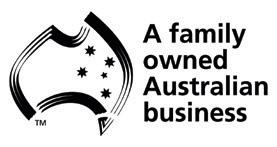
• Ability to quickly troubleshoot faults and establish repair options.
Location: Kewdale

MACHINE SALESPERSON-INBOUND SALES
THE ROLE > Candidates suited to this role will have a strong career history in sales type roles; and previous knowledge of, or an interest in engineering machinery would be highly regarded. The duties of the role are as follows:
• Telephone and Counter Sales
• Computerised Quoting and Invoicing.
• Assist customers to choose the best product for their needs.
• Customer relationship building with ongoing customer service.
• Utilising organisational and problem-solving skills.
• Trade or Engineering experience an advantage.
STOREPERSON
($28-30
AN HOUR + OT)
THE ROLE > The position will be responsible for the control of receiving and dispatch of goods in our Perth branch. The successful candidate will oversee accepting deliveries, unloading of trucks and couriers, unpacking sorting and checking goods are correctly identified with stock codes and conduct stocktakes. The duties of the role are as follows:
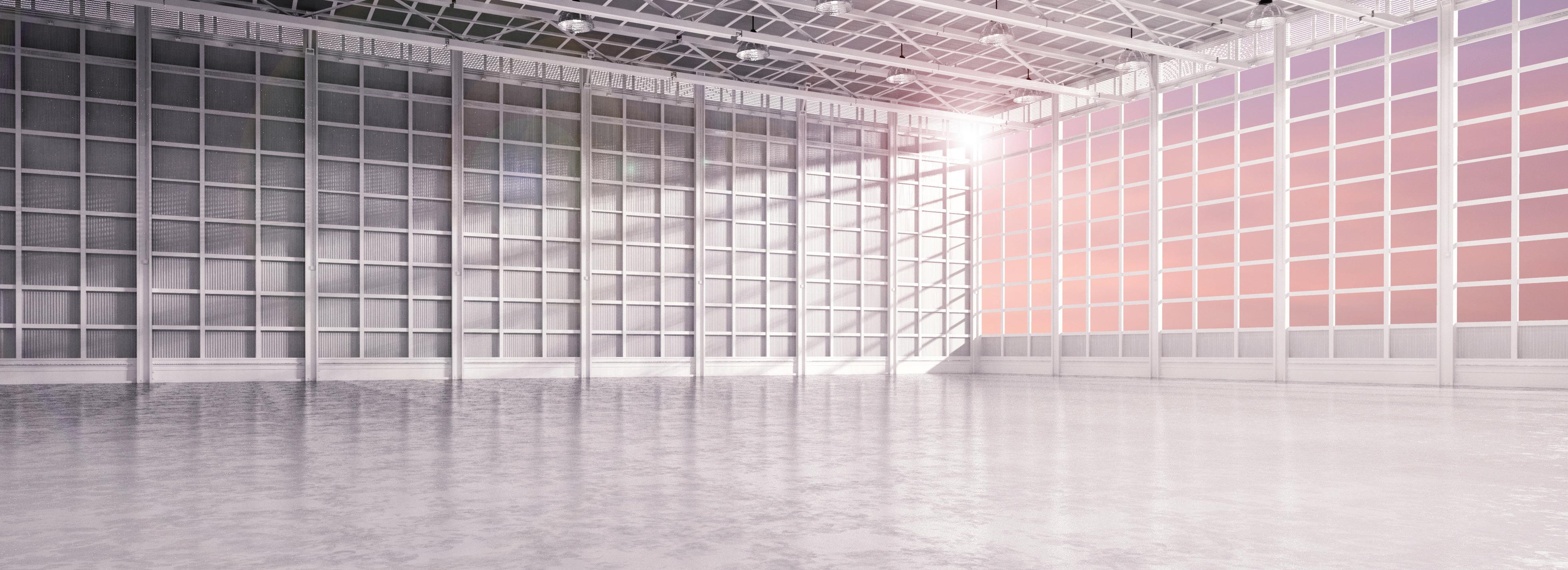

• Maintain up to date records of goods within the store.
• You will be accepting deliveries, unpacking, sorting and checking goods received for quality, type or size.
• Assemble goods to satisfy orders, requisitions or schedules, including re-packing where appropriate.
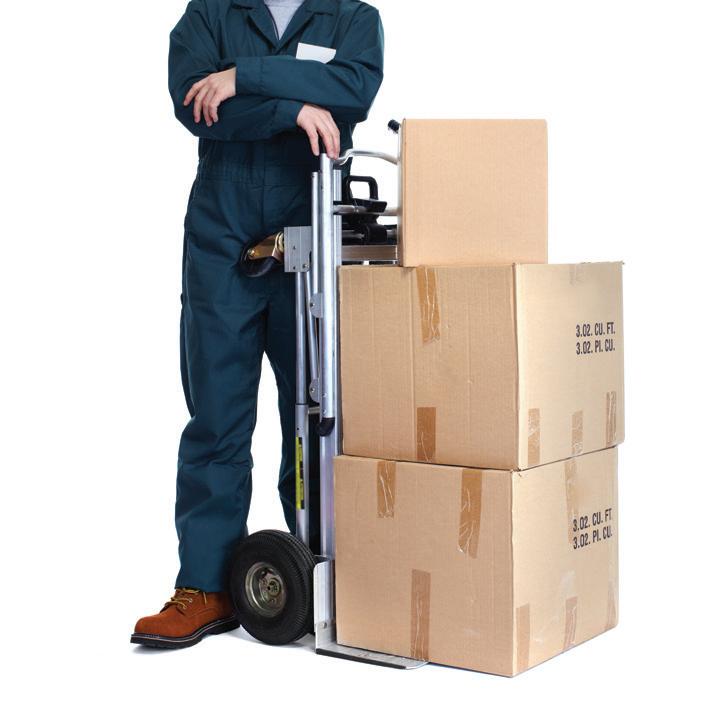
• Using RF scanners for pick and pack, loading of stock and machinery.
• Ensure holdings of goods in containers and/or arrange dispatch to other locations.
• Distribute goods to authorized persons and complete relevant documentation/records.
• Other responsibilities will include coordinating paperwork systems and procedures, improving storage methods and housekeeping and assisting in the dispatch area when required.
WWW.MACHINERYHOUSE.COM.AU NSW (02) 9890 9111 1/2 Windsor Rd, Northmead QLD (07) 3715 2200 625 Boundary Rd, Coopers Plains VIC (03) 9212 4422 4 Abbotts Rd, Dandenong WA (08) 9373 9999 11 Valentine Street Kewdale WE ARE EXPANDING OUR TEAM!
in 1930, Hare &
over 90
business, industry and government. Our
JOBS! JOBS! JOBS! “Setting the standard for Quality & Value” CAREERS WEB PAGE: Find the position that suits you and apply! EMAIL: Submitting a cover letter and current resume to: careers@machineryhouse.com.au
Established
Forbes has been one of the largest suppliers of engineering, automotive, wood working and workshop equipment to the Australian and New Zealand markets for
years. With over 180 employees and supply branches in Sydney, Brisbane, Melbourne & Perth we provide unparalleled service to the general public,
staff are a dedicated team of professionals, committed to ensuring the very best in customer service and quality.
THE ROLE > Specialise in selling Sheet Metal Working equipment and need to have experience as a Machinist, Sheet Metal Worker or Coach Builder. We will offer on the job training to the right person to help them grow into the role.
duties
the role are as follows:
The
of
Location: Northmead
Established 1930
APPLY NOW! Visit our careers page and apply by submitting your cover letter and current resume.
eNewsletter


More from the industry

Increasing brand recognition & reputation


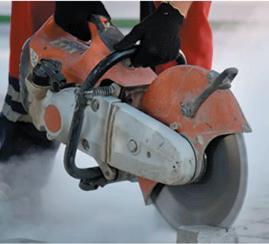

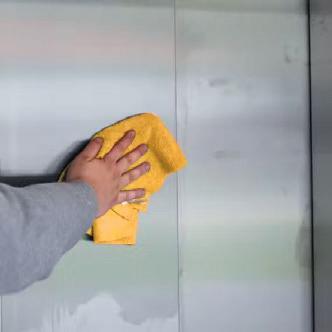

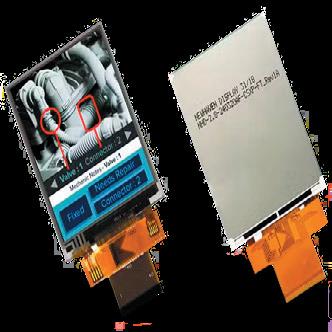


Lead generation
Measure Your Effectiveness
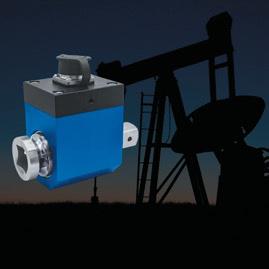
Get a Long-Term and Flexible Solution
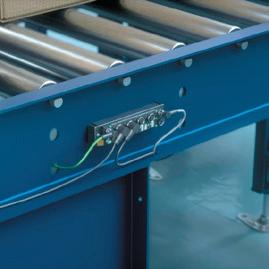

762 clicks 697 clicks 427 clicks 358 clicks 478 clicks SOME OF OUR ENEWSLETTER CLIENTS FEATURES PRICING
Running on hydrogen: retrofitted diesel engines at UNSW Engineers from UNSW Sydney have converted a diesel engine to run as a hybrid hydrogen-diesel engine — reducing CO2 emissions by more than 85% ...Read more
Our top stories
symposium: working with RCS Although respirable crystalline silica (RCS) has been recognised as an occupational risk for a century or more, it’s still a hazard to workers, businesses Read more Manufacturing jobs jumping at Ampcontrol Electrical engineering company Ampcontrol Group is set to create at least 200 manufacturing roles across Australia in the next 18 months, after winning contracts ...Read more Product news Greater efficiency with the right torque Choosing the most suitable torque sensors from ZHYQ’s range can help to maximise efficiency and accuracy Torque is a measure of the force that Read more Moving right along with Turck If you make something, you have to move it — often on a roller conveyor. These staples of material handling play a critical role in throughput and plant Read more Featured products industryupdate.com.au 02 9439 1288 sales@industryupdate.com.au EP A B C D EP EARPIECE $700+GST (per day) A BANNER A $1,792+GST (4 days) B BANNER B, C & D $1,100+GST
Online
Having your banner appear on our e-newsletter can help build more brand awareness in the manufacturing industry. Banners also alert consumers to the great products or services you have.
Companies aim to constantly generate leads to publish more people to buy their products and services. By using banner ads, more potential customers can click on them to visit the company’s website, and this can lead to more sales and profits.
allow you to track how many people saw your ad and the click-through rate.
Banners
beauty of banners is you can maintain the campaigns for long periods. This consistent or repetitive nature reinforces your brand’s
to potential customers. Plus, every time they click the banner, they will be taken to your website.
The
name
Advertising
Women choose engineering careers for a purpose, not a Porsche
By Margie Smithurst
As Principal at Hatch, an engi neering services company in Brisbane, Lana Van Wyk heads up projects that focus on the transi tion to clean energy.
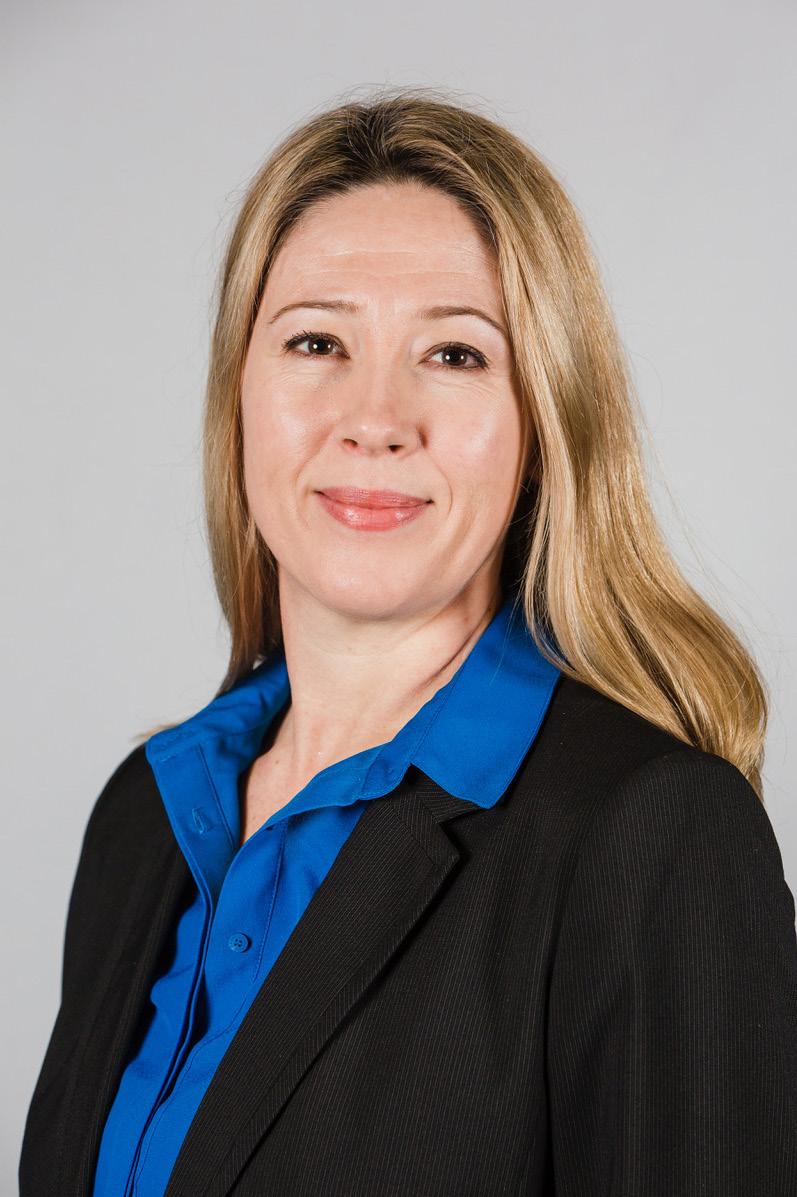
With a background in chemical and mining engineering, Lana is currently representing Hatch on the Green Hydrogen Consortium group, formed by Hatch, Anglo American, BHP, and Fortescue to collectively find ways to use green hydrogen across their global operations and projects, as well as drive the uptake of hydrogen technologies in the mining industry.
Lana sat down with Industry Update to talk about why Hatch forecasts strong growth in female engineers, particularly in areas of sustainability and environment.
Lana Van Wyk: In my generation there were fewer than 15 percent of us who graduated as female engineers. But every successive generation has seen more and more, so we’re com fortable this trend will continue.
Our graduate intake at the moment is half and half - half of the graduates at the lowest university level are female.
But in some areas we’re seeing more women than men. For example, there’s a huge interest in anything renewable and to do with green energy or sustainable and environ mental engineering. I don’t know why women are more interested in saving the planet but they are!
I think it’s because new roles
steel plant that’s been running for 30 years and I ask to see the mainte nance manager, then I’ll bet you on 99% of sites the main manager will fit a very specific profile. So it’s harder for women to fit that profile because they don’t look like the previous five guys who did the job.
Whereas, in new energy technol ogy, we’re seeing women in a lot of executive and senior roles.
Unfortunately that demonstrates there’s still bias in the old areas, but it also shows that in new areas, women can be just as successful as men in every single way.
Industry Update: What do you think drives women’s interest in that sort of engineering?
Lana Van Wyk: I think most women have a strong sense of wanting to do something that matters, especially once we have families. You come back to work and you’re always trading off time at work versus family, so it has to be something that drives you and excites you. And we know some men are more driven by competition and being successful and earning more money, and women seem to be a lot more purposeful.
So, in engineering, for example, we see women choosing careers that are purposeful over careers that might pay a lot or where you get to drive a Porsche. Very few women have a goal to drive a Porsche. They want to leave a legacy.
leaders who want to make a difference as opposed to ones that just want to make a profit.
Industry Update: How do we get more women involved in engineering?
Lana Van Wyk: We still have only 17 percent of the current engineering crop in this country being females. An alarming amount of girls don’t want to study maths and sci ence. It’s my view that one of the reasons is that we don’t show enough paths for engineering as a career.
I often see lots of pic tures of women i their highvis and hard hats, and I get it - I’m an engineer and on sites quite often. But nine out of 10 days I’m in the office, and I get to wear my favourite Australian designers and my favou rite stilettos, and I think that’s an important message to put out there.
I didn’t become an engineer because I enjoy dust and dirt and grease. To attract more girls, it’s important that we showcase the broad variety of careers that engineering has to offer for women, and a lot of them don’t involve high-vis, hard hats and safety boots.
Personally, I have had a very rewarding engineering career and have spent a very small amount of time on mine sites.
In our office, we have a large number of women as design engi neers, and they show up everyday and work in an office environment.
Certainly, I think the mining industry needs to clean up its act and get rid of all the allegations of toxic behaviour and so on, but there needs to be an overall message that it’s not all sitebased work in locations that might not be attractive.
Making women leaders in engineering more visible
we see more female engineers move up the ranks.
But it’s really important to us to be visible so that girls know we exist, and that they can also be a senior leader.
And that brings an opportunity - we’re not as visible as we think we should be because we come from a generation that didn’t do Instagram or Facebook the whole time.
There are some fantastic examples
are being created in newer areas like renewables, solar, and lithium hydroxide, and it’s easier for women because there’s no preconceived bias about what success looks like.
I know not everyone will agree with my view, but if I go to an industrial
I’m seeing more male leaders come through like that - they are more caring, compassionate and more pur poseful. So there’s definitely a trend, and in future it won’t be a male/ female trend, there’s a trend towards more compassionate, purposeful
Lana Van Wyk: At the moment, 30 percent of Hatch employees are women, and as in most companies, there are definitely fewer women at the top than the bottom. But I’m very confident that having more females in senior management will improve as

of visible females at BHP and I really admire how prominent their female leaders are on social media.
Hatch (hatch.com) is an award-winning multidisciplinary leader in engineering, operational and development projects in metals, energy and infrastructure – and com prises a talented team that includes many female engineers and leaders in a market where women make up just 28 per cent of STEM workers. At Hatch, these women represent the best in the industry, with decades of experience and a strong vision for their projects across Australia, where they engage with Indigenous commu nities, help Australia meet emissions targets and help deliver a better, more sustainable future.
WOMEN IN MANUFACTURING
“Very few women have a goal to drive a Porsche. They want to leave a legacy.”
“Nine out of 10 days I’m in the office, and I get to wear my favourite Australian designers and my favourite stilettos”
Hatch hatch.com
28 | Industry Update Issue 128 October / November 2022 industryupdate.com.au
Lana Van Wyk, Principal at Hatch
Sanofi doubles Brisbane solar farm
Healthcare company Sanofi
Australia has installed 1,500 solar panels at its Brisbane healthcare manufacturing campus and will in future double this to 3,000 panels
At an event attended by The Hon. Anika Wells MP, Federal Minister for Aged Care, Federal Minister for Sport and Member for Lilley, 1,500 rooftop solar panels were unveiled.
The expanded panel population will include new solar panel-topped car shades across the campus car park and new electric charge points for employee vehicles.
When completed in 2023, Sanofi’s solar farm will save approximately 1,400 tonnes of CO2 and deliver 2GwH of electricity — more than one quarter of the site’s annual electricity needs and equiv alent to powering about 200 Brisbanebased homes for an entire year.
It’s wonderful to see businesses in our local area acting on climate change and prioritising green energy to help future-proof our community,” said the Hon. Anika Wells, Member for Lilley.
Karen Hood, Sanofi ANZ’s Country Lead, said that environmental action taken by everyone is key to protecting the health of people worldwide.
“Globally Sanofi is committed to achieving carbon neutrality by 2030 and net-zero by 2050,” said Hood.
“We have started a number of major programs to deliver on this, including switching to renewable energy across
all global operations.
Other actions taken by Sanofi in Australia to meet its global environ mental commitments include:
• The move to a hybrid car fleet which is now 75% complete.
• A new initiative this year, Return Unwanted Medicines, to help raise awareness of the environmental
impact of incorrect disposal of unwanted medicines
• Sanofi brand Nature’s Own has begun a three-year partnership with Greening Australia to restore natu ral ecosystems by planting 25,000 native plants across three major Australian cities.
Phase one of the rooftop solar farm was installed by Smart Commercial Solar.
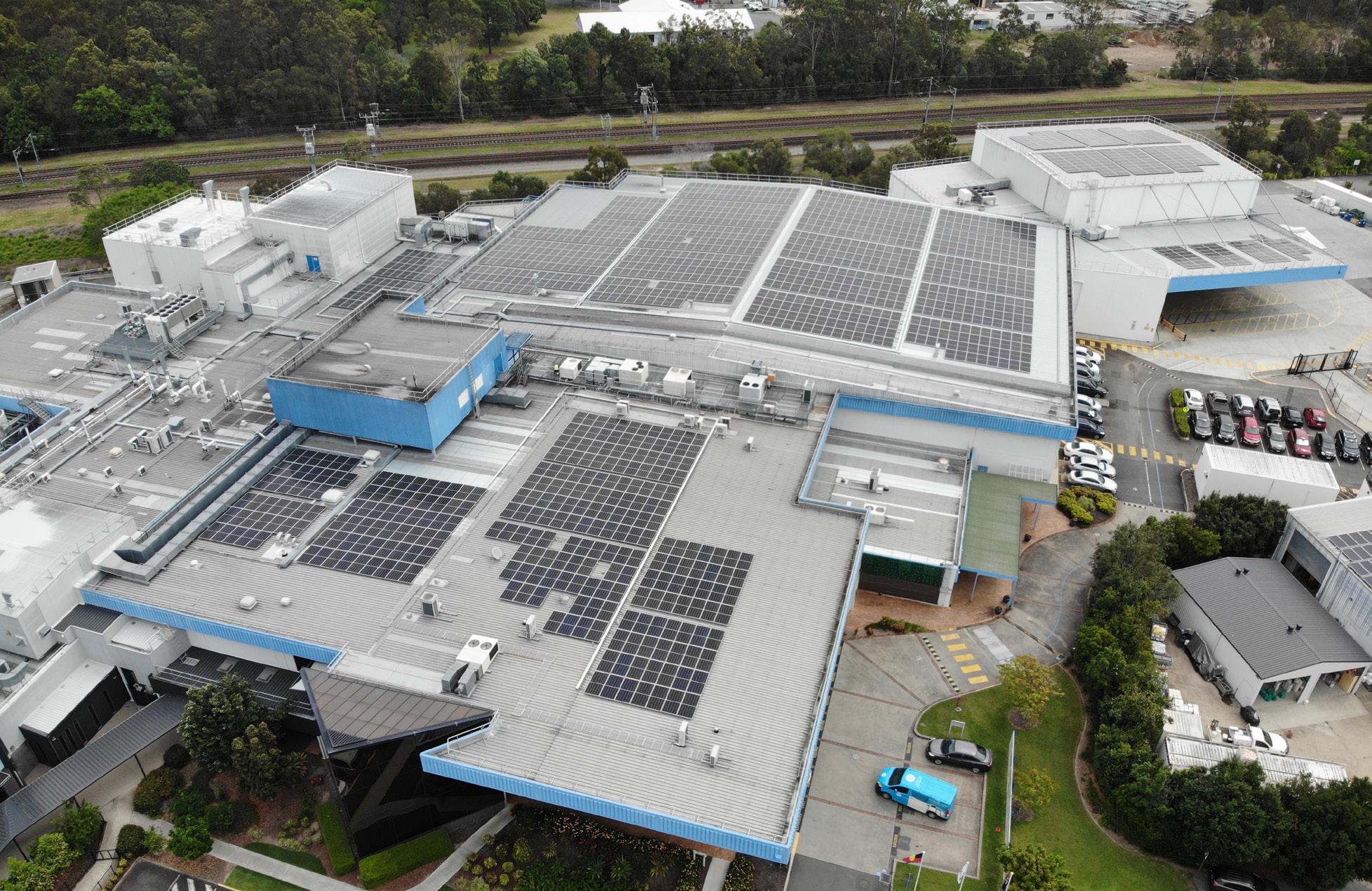
Sanofi sanofi.com.au
Australia’s manufacturing industry employs more than a mil lion people directly or indirectly, but data shows only 1 in 4 are women, well below the national average of 51 per cent. Industry heavyweights would like to see that number improve dramatically.

This year, the Federal Government announced an additional $6.7 million in funding towards programs to attract more women into STEM roles. And this edition shows how women who pursue STEM careers, or who are interested in how things are made, are valuable contributors to manufacturing companies, at both engi neering and operations levels.
If you think you or someone you work with would make a great feature in Industry Update’s regular section on Women in Manufacturing, please contact the magazine via editor@industryupdate.com.au.
INDUSTRY NEWS
Industry Update’s regular Women in Manufacturing section is dedicated to showing the contributions of women to Australia’s manufacturing industry. It’s a response to the industry’s desire to encourage more women to take up manufacturing careers, as well as to showcase the variety of jobs on offer.
MANUFACTURING MEDIA
Industry Update Issue 128 October / November 2022 | 29 industryupdate.com.au
Turning to Tente for bespoke parts
By Margie Smithurst
About a decade ago, when Air Ambulance NSW asked innovative Melbourne-based trolley manufacturers Service Assist to build a fully motorised and height adjustable helipad retrieval trolley, managing director Paul Linehan knew it would be a challenge.
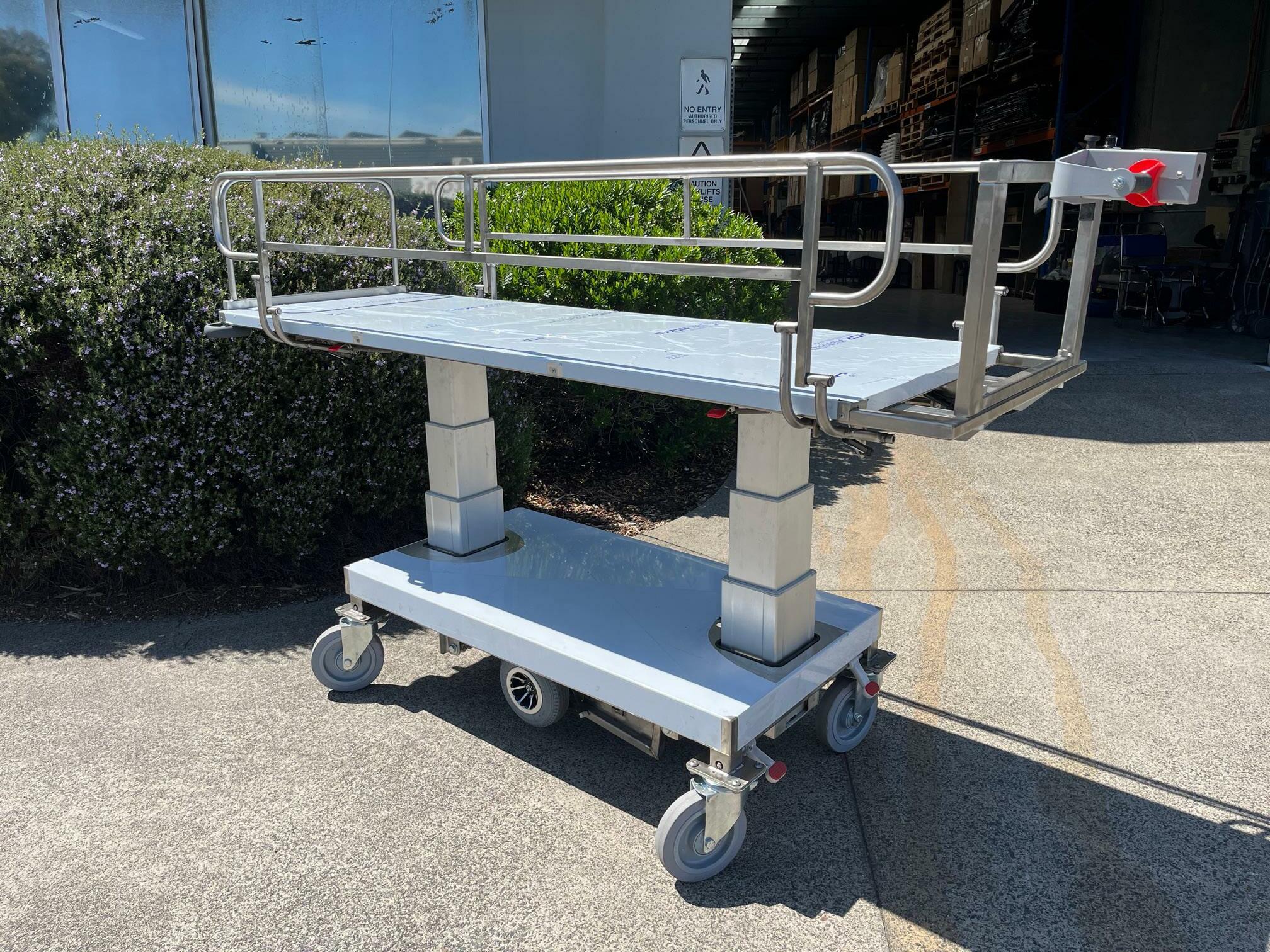
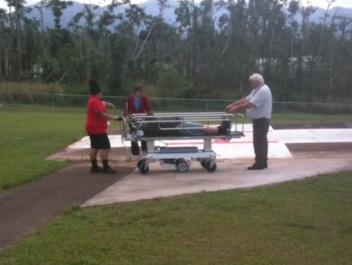
“It needs to meet the helicopter out on the helipad, and in a lot of country hospitals, that’s sometimes over in the paddock. They’d have six people pushing a patient stretcher with thin wheels.”
Making something more robust that can travel over bumpy ground and not disturb the patient required heavy duty castors on the wheels. Castors that Linehan couldn’t find in any of his suppliers.
“We wanted a heavier, thicker rub ber castor,” he says.
Tente, with whom Linehan has a 20 year working relationship, already made castors with the central locking that the trolleys needed. But because they were still too light duty for the task, he and his team had to take them apart and rebuild them.
“We needed a wider fork (wheel frame), so we were cutting open their forks and manufac turing a plate and rewelding that. It was a nightmare and it looked terrible.”
For a num ber of years, Linehan and his team kept going with their bespoke solution,
thinking there must be something better.
“We kept scouring around various castor suppliers, until one day Grant [Smith, Managing Director] and Damien [Lane, sales rep resentative] from Tente came out here and I was talking to them about it, and they had just released a heavy duty central lock castor.
“And it was absolutely perfect for what we wanted and we’ve been using it ever since.
“It vastly improved the product overall, cut costs and definitely cut time. And it’s a lot more robust and reliable as well.
“No one in the world has a similar castor that I’ve seen.”
Service Assist now makes the trolleys (which cost $21,000) for other states, and has modified them to suit other purposes the hospitals need.
“For example, [we make] what I call a ‘concealment’ trolley, which is used to take a deceased body to the morgue.
“So rather than the plastic deck with the rails that they have for the helipad one, we make this as a stain less steel, cleanskin top with a cover. But the base of it - the wheels, the motor drive, the height-adjustability - is all the same as a helipad trolley.”
Service Assist also turns to Tente

when they need more aesthetically pleasing castors.
“There is one particular trolley we do that we sell to the Red Cross Blood service, and we use a black Levina Tente castor because the rest of the trolley is black and it looks great.”
Linehan’s long relationship with Tente means he has also turned to them to solve a problem he had when it came to foot pedals, which are used to raise and lower the trolley motors.
“We usually buy a complete foot pedal and cut it in half, machine it, and then smooth it off, which takes a lot of time. Tente has one that’s already cut in half, and they’re better quality than the ones we’ve been using as well.
“They [the single foot pedals] will save us a heap of time, trouble and cost, because it’s an off the shelf solu tion that fits exactly what I need.
“So that’s something new we’ll be get ting from them going forward as well.”
Linehan says he has come to rely on Tente and their expertise to enable him to continue building his custom ised trolleys and lifting devices.
“Tente is very good at finding a solution to a castor request or issue that I have. They’ve always got some thing up their sleeve.
“I don’t always use Tente, because
there’ll be another castor that suits the application better, but I’ll talk to them and say, I need you to do a castor like that because I prefer to buy it off you because I get better service and better knowledge from those guys.
“So I’m always at them to try and change something so I can buy it off them. “
“More often than not when I need to buy a castor, it’s a Tente castor.”
INDUSTRY NEWS
Tente’s heavy duty central lock castors, series 3479
Dual-purpose trolley with heavy duty central lock Tente castors
Tente tente.com.au
Mock
trial of helipad retrieval trolley
30 | Industry Update Issue 128 October / November 2022 industryupdate.com.au
“More often than not when I need to buy a castor, it’s a Tente.”
Vaxxas gets $8.2 million grant to support scale-up in its Brisbane manufacturing facility
Biotech company Vaxxas will receive an AU$8.2 million second round grant as part of the Australian Federal Government’s Modern Manufacturing Initiative (MMI) to support the manufac turing scale-up of its potentially game-changing technology that enables vaccines to be applied to the skin using a small patch.
In 2021, Vaxxas received AU$4.4 million first round MMI funding to support the specialised infrastructure necessary to manufacture its high-den sity microarray patch (HD-MAP) device at its state-of-the-art biomedical facility currently under construction at Northshore, Brisbane.
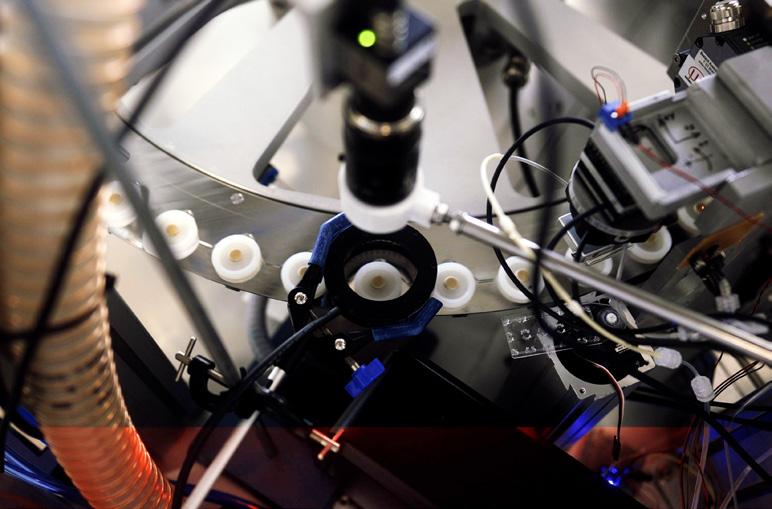
This additional support will allow the team to develop and establish a sterile production line using proprietary aseptic fill and finish processes at the facility, further advancing the compa ny’s vaccine coating, device sealing and quality control technologies.
The Brisbane production facility will support late-stage clinical trials and early commercial production.
“We are incredibly grateful to the Australian Federal Government for their ongoing support of our
vaccination technology,” Vaxxas Chief Executive Officer David Hoey said.
“It is fantastic to see the Government backing innovations by local companies that have the poten tial to make a difference to lives in Australia and around the world.”
The Vaxxas HD-MAP uses an ultrahigh-density array of micro projections – invisible to the human eye – applied to the skin as a patch to rapidly deliver vaccine to the abundant immune cells immediately below the skin surface.
The vaccination technology has the potential to fundamentally improve pan demic and routine vaccination through production efficiencies, breadth and speed of access, and population coverage.
With support from the Queensland State Government, the Vaxxas Biomedical Facility is being con structed in Northshore, Brisbane and due to open in early 2023.
In addition to relocating its existing workforce of more than 100 employees to the site, the new facility will support the creation of 29 new highly-skilled jobs and the ongoing growth and devel opment of the biotech and medtech sectors in South East Queensland.
Launched in October 2020, the
Federal Government’s Modern Manufacturing Initiative aims to drive lasting change to Australia’s manufac turing sector by co-funding large man ufacturing projects with a particular focus on supporting business to scale. It has six key areas of focus: Resources Technology & Critical Minerals Processing; Food & Beverage; Medical products; Recycling & Clean Energy; Defence; and Space.
Vaxxas will work with the Department of Industry, Science and Resources over the coming weeks to finalise grant details.
About Vaxxas
Vaxxas is a privately held biotechnol ogy company focused on enhancing the performance of existing and next-generation vaccines with its proprietary high-density microarray patch (HD-MAP). Vaxxas core tech nology was initially developed at the University of Queensland.
About Vaxxas’ HD-MAP Technology
The Vaxxas proprietary HD-MAP technology platform uses an ultra-high-density array of micro
projections – invisible to the human eye – applied to the skin as a patch to rapidly deliver vaccine to the abun dant immune cells immediately below the skin surface. This approach can enhance the efficiency and effective ness of resulting immune responses of vaccines. Vaxxas uses proprietary dry-coating technology to apply an active and stable vaccine onto the projections which offers the poten tial to eliminate the need for vaccine refrigeration during storage and transportation – easing the resource and logistics burden of maintaining the refrigerated “cold chain.” Ease of use of the HD-MAP could enable simplified administration, potentially encompassing self-administration.
Our new 3 in 1 package allows
The package consists of a Storage Screener, Mi-CON Elevating Conveyor and Hopper Feeder. Like all our products, the
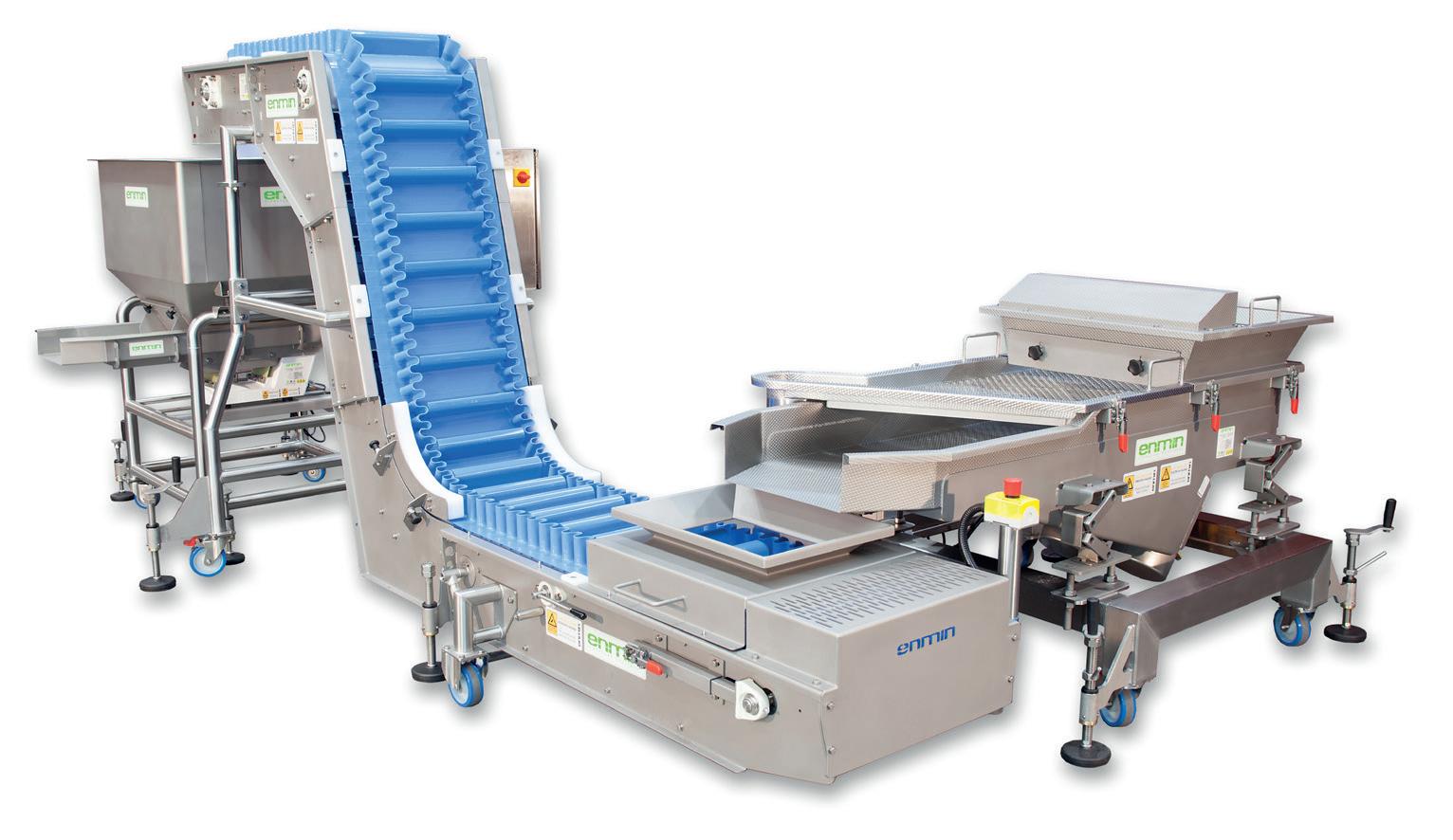
components are constructed to meet the toughest WH&S standards whilst maintaining the highest quality and reliability that we are known for.
One of the key benefits of this modular package is that it eliminates equipment redundancy. It can be added to, extended and modified in the years ahead as your production needs evolve.
INDUSTRY NEWS
T: +61 3 9800 6777 | W: enmin.com.au
food
manufacturers to easily automate their production line and enjoy multiple benefits including significantly improved production efficiencies and reduced labour costs.
BOOST PRODUCTIVITY AND LOWER COSTS WITH ENMIN’S AUTOMATION PACKAGE. FREE DELIVERY AUSTRALIA WIDE, FOR ALL ORDERS PLACED BEFORE THE END OF 2022 Industry Update Issue 128 October / November 2022 | 31 industryupdate.com.au
BAC Systems drawer storage: triple-layered value using local steel
BAC Systems is a well known Australian manufacturer of industrial workshop and storage equipment.
The BAC range of drawer storage cabinets and industrial modular workbenches in particular are a favourite in Australian industry.

The BAC range also consists of dif ferent forms of steel tool racks, rack ing and shelving options, as well as hydraulic hose storage systems, and a series of unique retractable storage rails for the storage of irregular items.
The BAC commitment to quality spare parts and tool storage, as well as its efforts to cater for the storage of irregular items, has seen it become the holder of a unique and singular achievement: an industrial storage manufacturer with products in use on all seven continents.
Importantly, when purchasing a BAC storage or workbench solution, there are three different levels of value-adding which will result in benefits for the workplace.
These three different levels are the ‘steel, the system, and the solution’.
Local steel strengthens the product
Steel is the core material used to manufacture a BAC workshop or stor age product. As an Australian sheet metal manufacturer, the selection of steel coils is a key focus for the BAC production team.
BAC Systems couldn’t go past the steels produced in Australia by Bluescope. Quality assured and sup porting the local Australian economy, choosing Bluescope is prudent on many levels.
Furthermore, by choosing a local steel manufacturer, BAC Systems has been able to control key mate rial properties, such as the material strength, thickness and tolerance.
In fact, as BAC Systems custom ers have noticed, BAC cabinetry is made from thick gauges of steel, with housing panels alone sometimes nearly 50% thicker than panels used on imported options.
BAC Systems also ensure that all of its structural components are pre-conditioned with high yield strengths, meaning that BAC cabinets are arguably the strongest mass-pro duced industrial drawer storage cabinets available on the market.
dividers will adjust drawers for the changes, and ready them for use again.
BAC helps find solutions
The third added value is the ‘solution’ service offered by BAC Systems.
It’s not particularly useful to simply buy an item from a catalogue without considering whether it will fit the space, the way a company works, or the inventory it needs to contain.
BAC’s very experienced Technical Sales team will help devise the perfect solution for customers’ workshops and storage systems.
A BAC technical sales representa tive will come on site (Australia-wide and beyond) to survey the customer’s facility and methods, and provide a fit-for-purpose solution.
Contact BAC Systems directly, and this service is complimentary, with the benefit of the wisdom of a com pany that has decades of experience in building BAC products, using them, and ensuring they meet business needs.
The ‘system’ adapts to your changing storage needs
The word ‘system’ in BAC Systems denotes the modular nature of the BAC product range, and it is this mod ularity that adds value, because even after the customer has purchased the product, there is much scope for adjustment and adaptation.
This is especially evident within the famous BAC drawer storage cabinets, where internal drawer partitions can be readily adjusted to account for changes in a business’ inventory.
It is well known that BAC spare parts drawers provide decades of smooth operation, and over those decades, it’s likely the parts being stored by the business will change.
These changes in inventory should not make the storage systems redun dant or inefficient.
With BAC drawers, a few simple adjustments to the BAC double-folded steel partitions or toughened-plastic
The BAC Technical Sales team also provides beautifully presented three-dimensional images to comple ment any proposals, including layout drawings when appropriate, so that customers know exactly what they will receive.
With a sound foundation in its choice of materials, the flexibility of its product, and a customised solu tion, people in all industries can find value in BAC products.
With a high likelihood that cus tomers will never have to replace their BAC cabinets or workbenches, and knowing they can adapt to the changes of business needs, choosing BAC Systems is a long-term strategy of sustainability and efficiency.
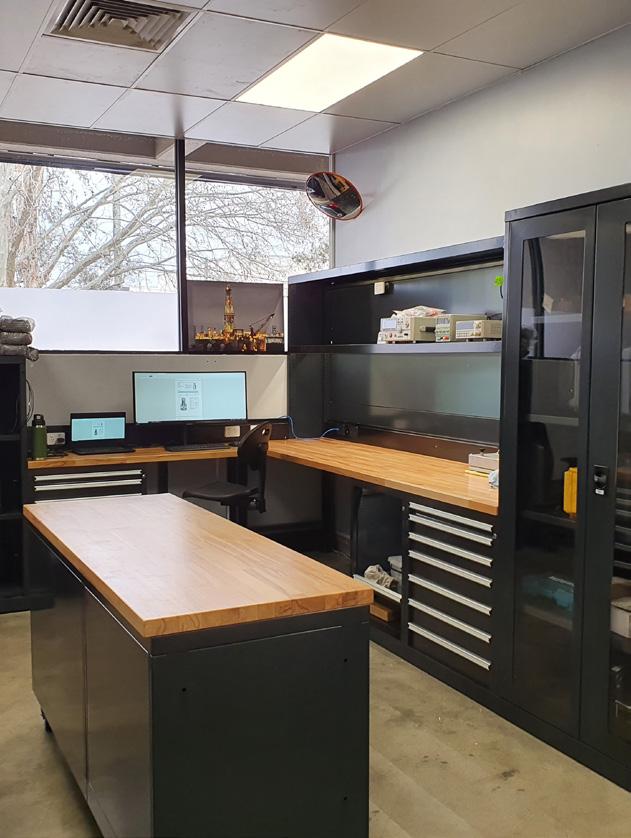 BAC Systems bacsystems.com.au
BAC Systems bacsystems.com.au
AUSTRALIAN MADE
32 | Industry Update Issue 128 October / November 2022 industryupdate.com.au
Transition to automation easy with Enmin’s new modular 3-in-1 package
Enmin, a leader in the manufacture of standard and custom designed materials handling systems, is combining three of their most pop ular modular products into a single automation package. It’s an in-house designed combination of a Storage Screener, Mi-CON Elevating Conveyor and Hopper Feeder that will completely automate a production line.
“We recognised the industry demand for a flexible, reliable, cost-effective automation solution which is why we have developed this 3 in 1 package. It can be utilised by any food and ingredient manufacturing facility, particularly smaller proces sors,” said Enmin’s General Manager, Anthony Gallaher.
Enmin’s Storage Screener provides a simple but effective way of storing, screening and sizing products to ensure uniformity. The base of the tray has a fixed or removable section of holes, slots or parallel bars. As the material moves over this section, undersized or oversized products can be removed before they enter the production stream.
The compact electromagnetic Hopper Feeder is engineered to suit a variety of food production facility needs. This robust yet compact unit holds bulk dry food products and ingredients and consistently delivers the product at a metered rate.
The Hopper Feeder significantly reduces manual handling and food wastage by hygienically storing and accurately delivering product to a secondary process and can be customised to meet a company’s exact requirement. It requires minimal maintenance and is built to withstand the demands of food production and handling.
For maximum flexibility it can be updated as required with a range of options for future proofing the

equipment.
The elevating conveyor is one of Enmin’s most recent product develop ments. The Mi-CON (Modular Incline Conveyor System) is the fi rst hygieni cally designed full wash down system ever to offer multiple standardised components. The running gear and all components are constructed with 304 stainless steel and FDA approved.
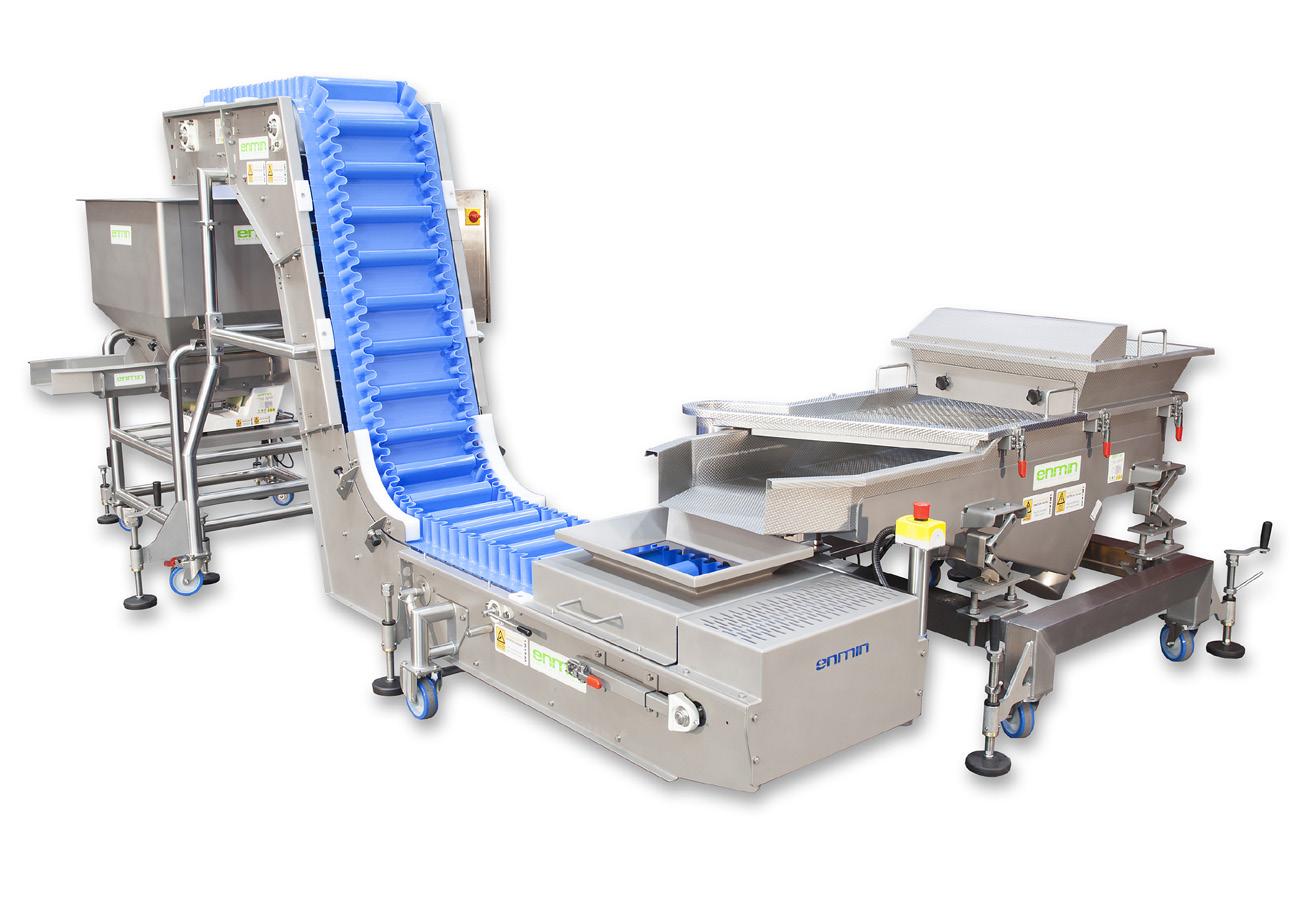
Like all Enmin products, these three components are designed and manufactured in Australia. They have been constructed to meet the toughest WH&S standards whilst maintaining the highest quality and reliability that Enmin is known for.
“One of the key benefits of this modular automation package is that it eliminates equipment redundancy and expands with the customer’s business. It can be added to, extended and modified in the years ahead as a company’s production needs evolve,” Mr Gallaher said.
For production ease, all three com ponents can be electrically connected so they are ‘talking to each other,’ further minimising operator work load. They can also be easily moved to other production lines providing maximum flexibility.
“Our new package will empower food manufacturers to take the next step and automate their production line and enjoy multiple benefits including significantly improved production efficiencies and reduced labour costs,” Mr Gallaher added.
For a limited time, Enmin are offer ing free delivery Australia wide on the automation package for all orders placed before the end of 2022.
Enmin enmin.com.au
AUSTRALIAN MADE
Industry Update Issue 128 October / November 2022 | 33 industryupdate.com.au
Farmer John stumps the doubters with his international hydraulic bolt success
Another Australian farmer is following in the footsteps of the inventors of the stumpjump plough and achieving interna tional renown for his ingenuity with down-to-earth solutions.
Queensland farmer John Bucknell’s hydraulic bolts are now used around the world in applications such as nuclear reactors, boilers, turbines and mining and energy equipment where speed, accuracy and precise fastening of multi ple sets of bolts is required.
The idea originally stemmed from his desire to find a quicker and more secure way to fasten the bolts used to tighten gang bolts on the large disc ploughs used on his family’s property near Nindigully, Queensland (about 500km west of Brisbane).
Just like brothers Richard and Clarence Smith of Yorke Peninsula who invented the stump jump plough in 1876 to allow farmers to cultivate land without removing rocks and stumps, John used his disc plough to break in new country, after his father converted the property from grazing to agricultural production (mainly wheat).
A better disc plough solution

At the time, disc ploughs used scalloped discs mounted in turning gangs that chop up the ground. But these were prone to breaking if they encountered stones, stumps, or other obstacles. To replace them meant using a sledgehammer to loosen and tighten the large nut in the centre shaft of the gang.
The whole gang had to be taken apart to replace broken discs, then the whole
assembly had to be rebuilt once it was fixed… only for the plough to hit another obstacle 100 metres on, and the time-con suming process had to start again.
Frustrated by this laborious pro cess, he developed sets of hydraulic nuts and bolts to do the job of fasten ing and unfastening disc assemblies simultaneously, far faster and more securely than the old way of twist ing individual bolts on and off using sledgehammers and brute force.
Analysis (FEA) to check and further refine the technology, including the non-deflecting thread pattern crucial to the nut’s performance. By the early 1980s, he had registered a patent for the technology – his first of many.
“There were doubters – probably including me initially – that we could produce an international technology success in Australia. But success built on success, because we focussed on quality and applications that were
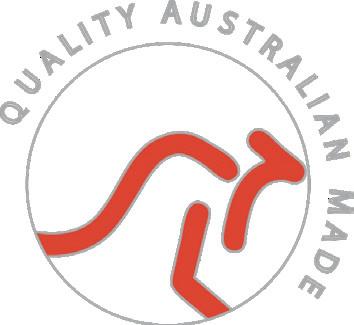
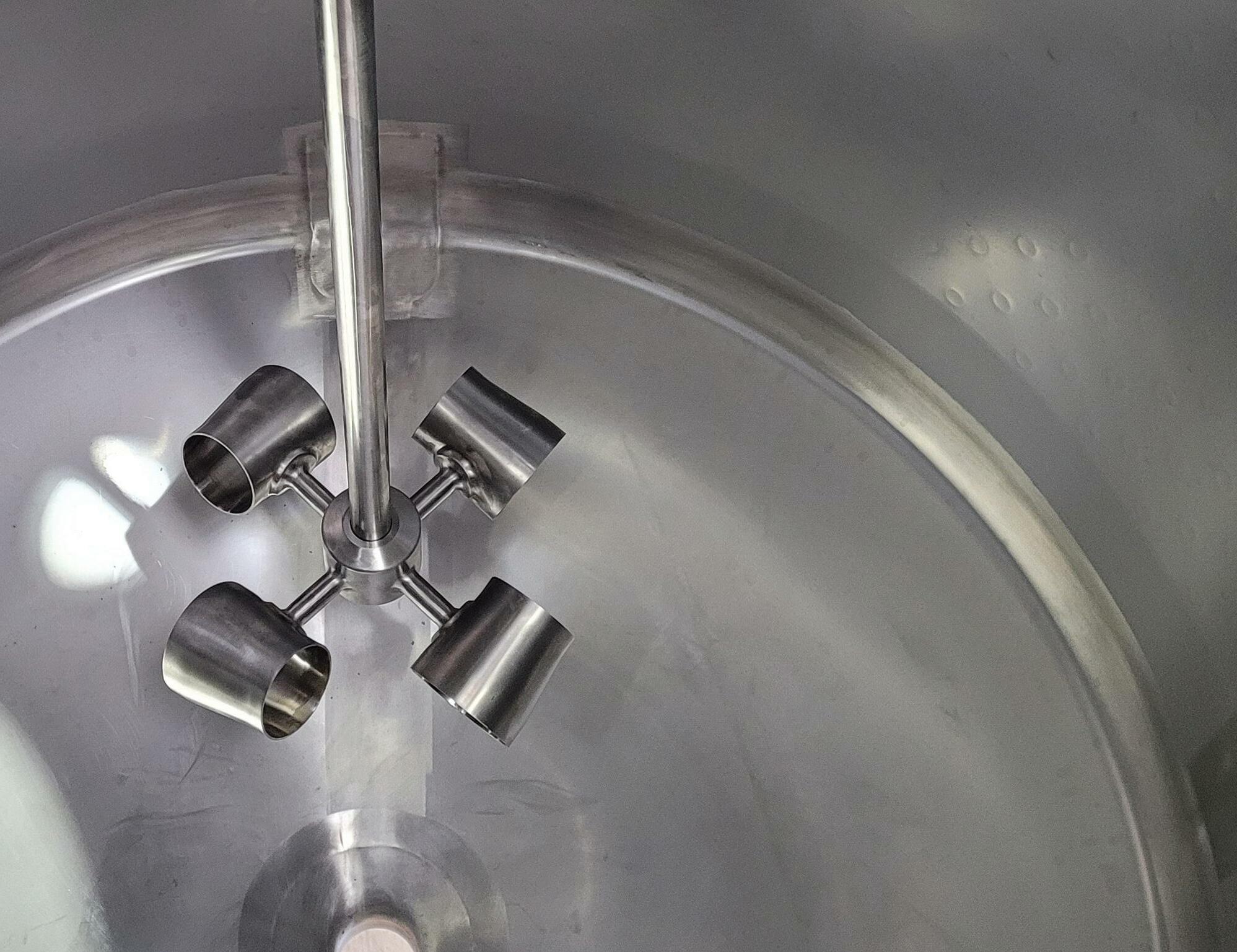
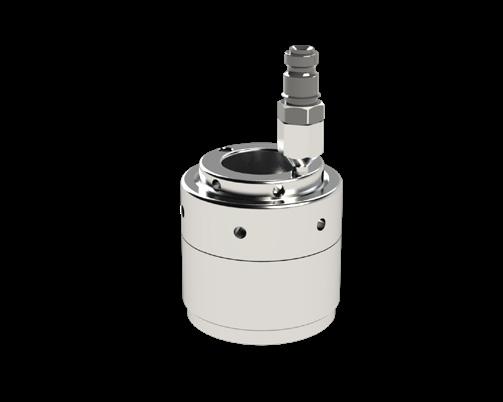
Hydraulic nuts had existed since the 1930s, but there was nothing that would lock without losing the induced force.
This is where John came up with the original idea for what is now the EziTite Hydraulic Nut, which had a non-deflect ing thread form, and an in-built locking ring to lock the force mechanically after hydraulic pressure was removed.
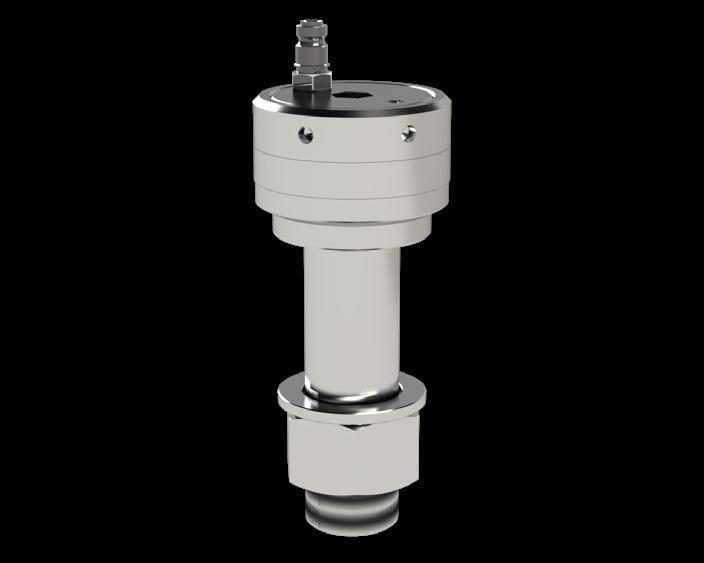
John modestly admits that there were other producers of hydraulic fas teners around before him, but he turned the principle into an industrial reality that’s today sold around the world, including Australasia, the Asia-Pacific, Europe, Africa and the Americas.
Taking the technology to the next level
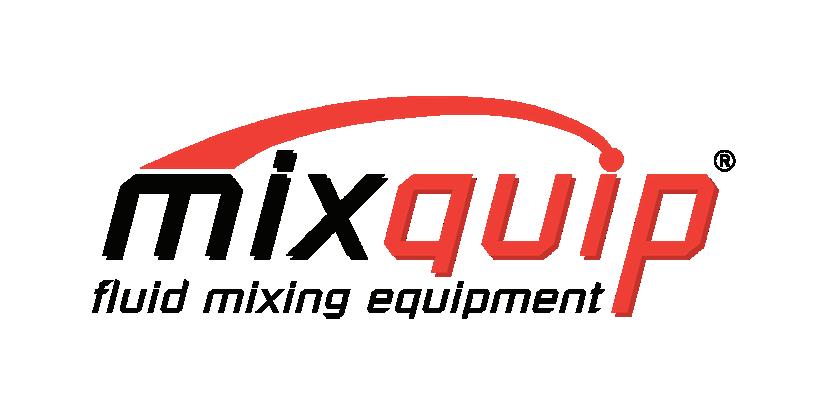
After his father sold the rural prop erty, John moved to Brisbane to start his hydraulic nut business.
John worked with the University of Queensland and used Finite Element
sometimes too hard for others.

“It is a never-ending story of continuing product development and improvement,” said John Bucknell, who in recent years has opened a purpose-built manufacturing facility in Brisbane and a branch office in the US.

In between innovating, John studied engineering at the Queensland University of Technology, where he focused on metallurgy and tribology, which he describes as “essential princi ples needed to make innovations work”.
He then went on to do a BA at Griffith University and a Masters in Innovation and Entrepreneurship at Adelaide University.
“We keep finding new uses for the technology – one day we are supply ing mines or sugar mills in North Queensland, then the next we have an inquiry from wind tower energy producers in Europe or the US.
“Every application is different, and
AUSTRALIAN MADE
Technofast’s EziTite Hydraulic Nuts (left) and Bolts (Right)
The Technofast Australia team, led by John Bucknell, far left.
1300 20 70 20 WWW.MIXQUIP.COM Mixquip Products are now available for purchase online. SCAN TO VIEW > WE UNDERSTAND YOUR PROCESS MATTERS Email mixquip@teralba.com to find out more. 14pg ad.indd 1 29/09/2022 10:00:19 AM 34 | Industry Update Issue 128 October / November 2022 industryupdate.com.au
that’s where our particular expertise has led to success in the market,” said Mr Bucknell, who recently had his enterprise recognised with an Australian Manufacturing Growth Centre grant, to commercialise Technofast’s EziTite Hydraulic Head Nut technology globally.
“I think one of our big advantages was that we went into this decades ago without any preconceived notions about the best way to do a job. Like many DIY inventors in Australia and New Zealand, we had to use what we had and a bit of brain power to figure out the best way on a clean sheet of paper. It has really been a fantastic journey,” said Mr Bucknell.
Hydraulic tensioning technology takes off
After refining and patenting the tech nology, John received the backing of some friends, formed parent company TechNovus, and received his first order for a tube mill application, where the technology is still in use today.
“Naturally, there has been a bit of wear since the 1980s, but we’ve been able to perform simple service and maintenance on the hydraulic nuts and bolts to keep them operating reliably,” said Mr Bucknell.
“At that stage, we didn’t even have a workshop – I was working on a lathe in my garage! But once we received some interest from BHP (now BMA), we knew the technology had strong poten tial, and we bought our first commercial lathe, which is still in use today – with the same operator, who has more than 30 years’ service to the company!”
Of all the patents registered by John Bucknell, it was clear that the hydraulic tensioning technology had the strongest commercialisation potential, with its clear benefits to user safety and uptime.
By the early 1990s, orders had grown to the point that John created Technofast Industries as a separate entity, dedi cated to this particular product line. John bought a factory in Richlands, Queensland, to scale up the company.
The Australian Government, at all levels, encouraged the development of Technofast as an innovative local manufacturer.

In 2002, Technofast developed its first solution for the nuclear industry in the USA, and in 2004 won a power industry award – Platts Award for Commercial Product of the Year – for its high temperature hydraulic nut.

New products – introducing EziTite
By 2011, Technofast was ready to introduce a new product line. The company was receiving increasing enquiries for demanding applications, such as nuclear, power generation, mining, quarrying and other harsh environments.
In 2015, Technofast’s current facil ity in Crestmead, Queensland, was built, and a new chapter in the com pany had begun with the development
of the EziTite Hydraulic Head Nut for gyratory crushers which are the backbone of many mining, quarrying, and crushing operations.
Reflecting on his journey, John says it was a difficult but highly rewarding path. “With new innovations, no one has been there before, so there’s no tem plate or guide. It’s a bit daunting at first, and it means you have to rigorously test the new product, but once you’ve developed a solution, it’s an immensely satisfying feeling,” he said.
Next steps
Technofast has now grown to a team
of 18 people in Australia, and two rep resentatives in the US, and is looking to grow even further. With the latest grant, and mining operations already responding positively to the Hydraulic Head Nut – which saves significant time, while also enhancing safety –John is looking to future expansion.
“We’ve built up a great base now, par ticularly in mining, heavy equipment, power generation, and sugar industries, and as these new innovations become even more widely used, I see potential for Technofast to grow from an SME (small-to-medium enterprise) into a larger business, where it can provide
time and labour-saving benefits to more operations nationwide, and across the globe,” he says.
About Technofast Technofast Industries is a worldwide leader and specialist in Bolt Tensioning, providing innovative and effective technical solutions along with uncom promising customer service.
Technofast technofast.com
AUSTRALIAN MADE
DESIGNERS & MANUFACTURERS OF 19” RACK SYSTEMS www.mfb.com.au VIC (03) 9801 1044 / sales@mfb.com.au NSW (02) 9749 1922 /
AUSTRALIAN MADE MAKES AUSTRALIA Nothing except craftsmanship. This has been the uncompromising tradition for more than 50 years as MFB builds its sought-after data cabinets and server/equipment racks. MFB’s products are practically designed and skilfully handcrafted to suit any need in any environment. And, importantly, they are made from quality materials. MFB is backed with years of experience in meeting specifications for all types of industries, matched with additional in-house quality standards and customer reporting, MFB stand proud as a leader to military, air traffic control and navy industries. MFB - an Australian Design Award recipient - is justifiably proud of its products. There is no need to accept second best. MFB are certified manufacturers of Class C and Class B cabinets including custom sizes upon request.
SPEAKS FOR ITSELF Industry Update Issue 128 October / November 2022 | 35 industryupdate.com.au
sydney@mfb.com.au
QUALITY
Rycon team moves to new expanded NSW headquarters to service growing industry
An electrical industry enthu siast who went from being an apprentice to heading a team that earned a ‘Young Entrepreneur of the Year’ award is now establishing a new base from which to grow further.
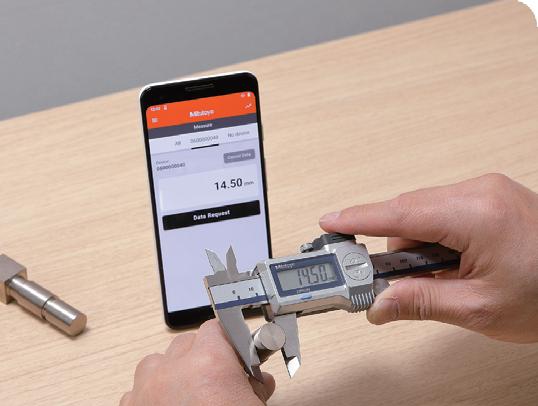
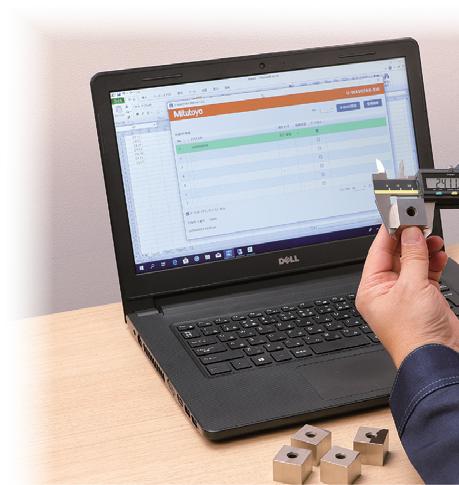
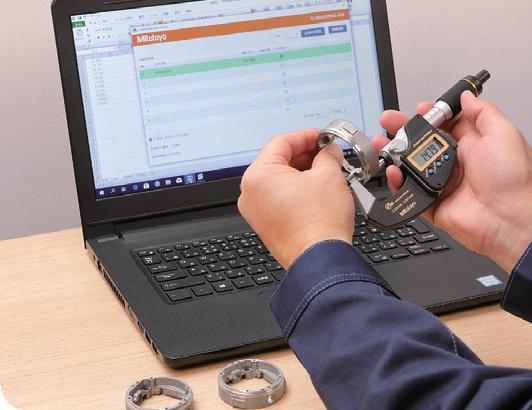
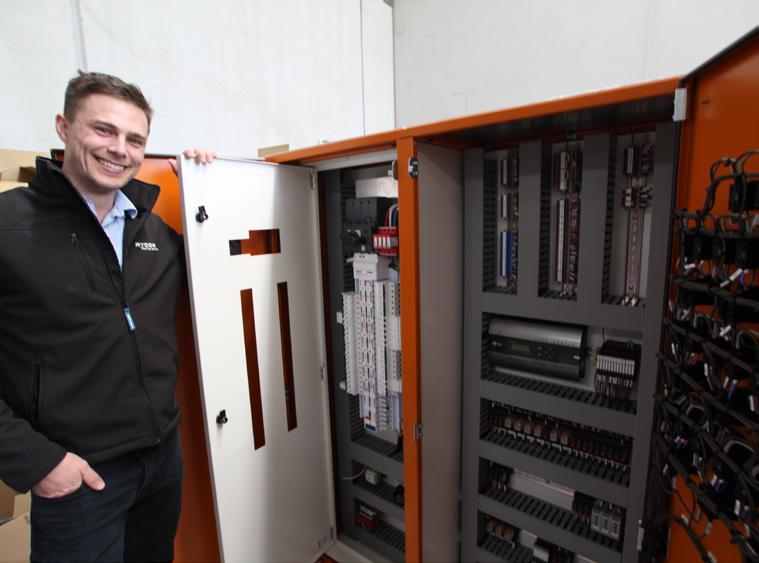
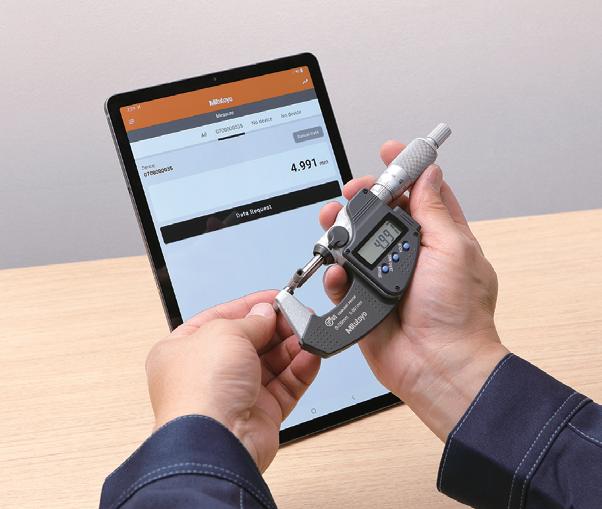
The managing director of Rycon, Sam Ryan, with his fellow director David Connolly, have moved the company from inner-city Marrickville to the growing Southern Sydney area of Camden to be near where most of the company’s expanding customer base is.
The new headquarters’ facilities are bigger and thus better able to meet Rycon’s growing engineering and sus tainability passions.

Their specialties include low-voltage switchboards and automation technol ogy, which are particularly suitable for major industries in the area that include resources and quarries, food and beverage, transport infrastructure and manufacturing, commercial buildings, mechanical services and processing.
Rycon’s customers are spread from Southern Sydney and the Illawarra, to broader NSW and as far afield as far North Queensland if the job demands it.
“David and I are big believers in valu ing good staff and teamwork to achieve advanced engineering and sustainabil ity of our product.
“I learned a lot from my apprentice ship in Wagga with a good company that set me on a strong career course, rewarding effort, training and qualifica tions,” says Sam Ryan.
“Those attitudes have helped our team drive our reputation further afield, both among our customers here and in the Illawarra and up to as far as North Queensland.”



The Queensland project involved trans-shipment of a two-tonne tech nology package by road and rail in bulk shipping containers adapted to the purpose, up to Airlie Beach, where a container was fitted out before being sent for use at the remote site.




“It is all based on experience, exper tise and reputation. We have also gained major rail projects in Western NSW, because we developed expertise and experience with customers who were happy with our work and wanted to deal with us ongoing.

“We find customers are very quick to recognise if you have a new and different service to offer, if you’ll go the extra dis tances to make sure your knowledge is leading edge and your commitments to service and sustainability are as close to 100 per cent as you can get them,” says Sam, whose efforts were rewarded with the ‘Young Entrepreneur of the Year’ award from the US and global Reliable Controls Group, for which Rycon is an Australian agent.

Sam says good automation engineer ing can help cut resource waste in many areas of manufacturing, processing,

recycling, transport and maintenance.
He also transforms his personal ideals into industry practice, sorting and conserving recyclable packaging and parts.

“I would like to get involved in developing more sustainable packag ing for the many parts our industry uses, because I believe that’s an area of sustainability where the industry can practice what it preaches on its own factory floors,” says Sam.
“We use a lot of manufactured items – pilot lights are one of dozens of examples – and I believe we have to practice sustainability if we are going to preach sustainability. Why not use less packaging – we are an industry striving for sustainability, after all?”
Rycon recommends NESMA standards support
Sam is a strong advocate of high standards of production and training, and he recommends NESMA as the central organisation providing tech nical support and explanation of the ramifications of important changes such as Standard 61439 to industry groups such as consultants, inspec tors, contractors, and switchboard manufacturers.
“We joined NESMA as a brand-new member because we are impressed with their campaign to educate members and bring to them the latest advances in technologies, training and standards.
“These continuous improvement objectives accord very strongly with our own objectives, and it is important to us that they be shared across our business and across the industry so both suppli ers and customers benefit, to everyone’s long-term advantage.
“We also support NESMA in its campaign to ensure all switchboard manufacturers and their customers are aware of their statutory obligations to produce to the new standards.”
Rycon supports a level playing field on which all producers and customers understand and prepare their tenders in accordance with the higher standards contained in AS/NZS 61439.
This broad standard is the only Australian standard now acceptable by statute for specification and tendering, after the old standard elapsed last year.
INDUSTRY NEWS
• A buzzer type and IP67 type with dustproof and waterproof specifications are available. • Up to 7 units can be connected to 1 Bluetooth enabled PC without a receiver. • New U-WavePak BLE for Android, iOS and Windows available at no cost. The new U-Wave Bluetooth transmitter utilizes the popular Bluetooth 4.2 Low Energy Wireless Technology and allows a simple connection to smartphones, tablets and Bluetooth enabled Laptops and PC’s. Manage Measurement Data Centrally and Wirelessly on a Smartphone, Tablet or PC The Global Standard for Wireless Connection Bluetooth® Available exclusively from Mitutoyo’s authorised national distributors 36 | Industry Update Issue 128 October / November 2022 industryupdate.com.au
Sam Ryan, Managing Director of Rycon
Green shipping with Treotham tech Data helps tile maker beat the energy crisis


with seawater.
As well, shipping companies can dispense with lubrication work. As an important component in igus materials, solid lubricants ensure that maintenance-free dry operation is possible without a single drop of lubricating oil.

Bearing technology from the motion plastics specialist is also used in the pilot system – a sensor instrument for measuring atmospheric pressure. Here, the engineers rely on radial deep groove ball bearings of the xiro dur B180 series. The bearings consist of four mainly injection-moulded components: inner and outer rings made of high-performance plastic, and a stainless-steel cage and balls. They also operate without lubricants, are resistant to seawater and can be used in temperature ranges between -40 and +80°C. A positive side effect: the bearings are approx. 60% lighter and up to 40% more cost-effective than comparable metal bearings.
National Ceramic Industries Australia (NCIA) made its first tile in the Hunter Valley NSW in 2004. It has since become one of Australia’s largest makers of ceramic floor and wall tiles, and also one of its biggest single-site users of natural gas.


Yet it has found a way to mitigate energy price rises.
Ahead of the energy crisis, NCIA asked its technology partner OFS (Operations Feedback Systems), whether it could measure energy use, joule by joule. NCIA already runs OFS software which uses sensors to monitor production performance in real time. New sensors were added to accurately track energy use against production.
This gave NCIA the data needed to accurately predict the energy required to produce every single product. NCIA could then match its production schedule with energy use to get the best deals from gas sup pliers. This led to average monthly savings of $40,000, or close to half a million dollars annually.

NCIA Factory Manager Craig Oliver believes the value of this solu tion has increased dramatically in the context of the recent surge in energy prices.

“This data has been a lifeline in this devastating energy crisis affect ing everyone, particularly manufac turers,” said Mr Oliver.




“Forecasting penalties and trying to manually count energy usage is incredibly expensive. OFS has auto mated that process and positioned us to mitigate surges in energy prices and optimise how we buy our gas.”
Some manufacturers are report ing 350% and higher gas price hikes. OFS CEO James Magee said although times are tough for Australian
manufacturers, virtually none are measuring energy in real time so they are potentially missing out on relief from energy prices.
“You can’t manage what you can’t measure. So long as it can be metered, we can help make improvements,” he said.
“The energy trauma facing manu facturers is immense. Manufacturers are resilient — I hope the current crisis spurs more businesses to digital transformation to optimise their operations.”

PBE Roboplas increase efficiencies and reduce operating costs by supplying new machinery, equipment, service and repairs from a strong background of technical experience including robotics, engineering and integration to the plastic industry.

INDUSTRY NEWS
Our Partners Temperature Control Units Robotic Automation & Ancillary Equipment Material Conveying, Dosing & Drying Systems Lubricants & Systems Blow Moulding Machines Pneumatic & Electric Automation Injection Moulding Machines 60 – 3200 Tonnes Robot and Automation 02 9674 6511 pbe-roboplas.com.au 25 YEARS INDUSTRY EXPERIENCE Conveyor Systems Phone 02 9971 7577 Email sales@serpent-dove.com 2/6 Taronga Place, Mona Vale NSW 2103 serpent-dove.com.au
Continued from page 19
Treotham treotham.com.au
Industry Update Issue 128 October / November 2022 | 37 industryupdate.com.au

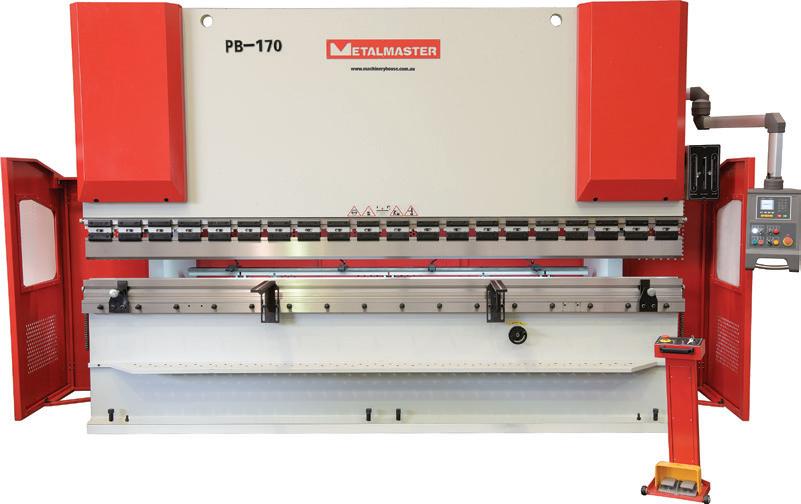
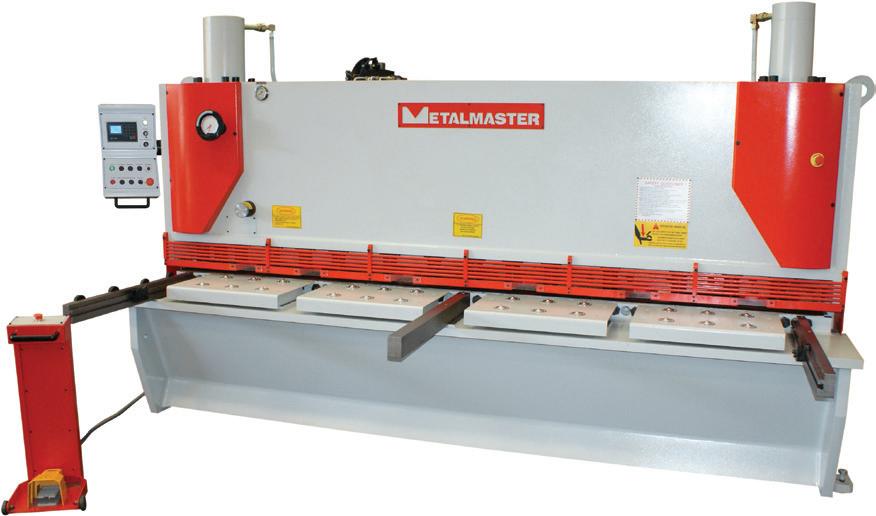


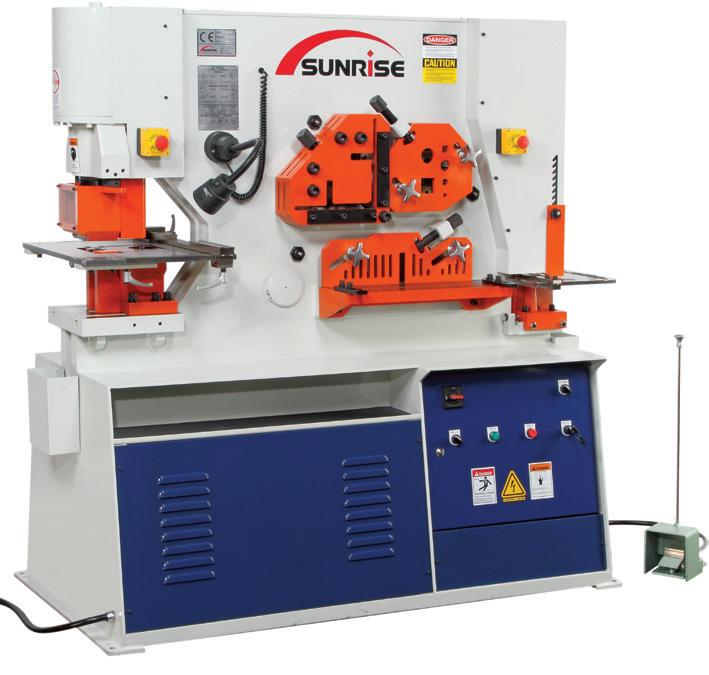

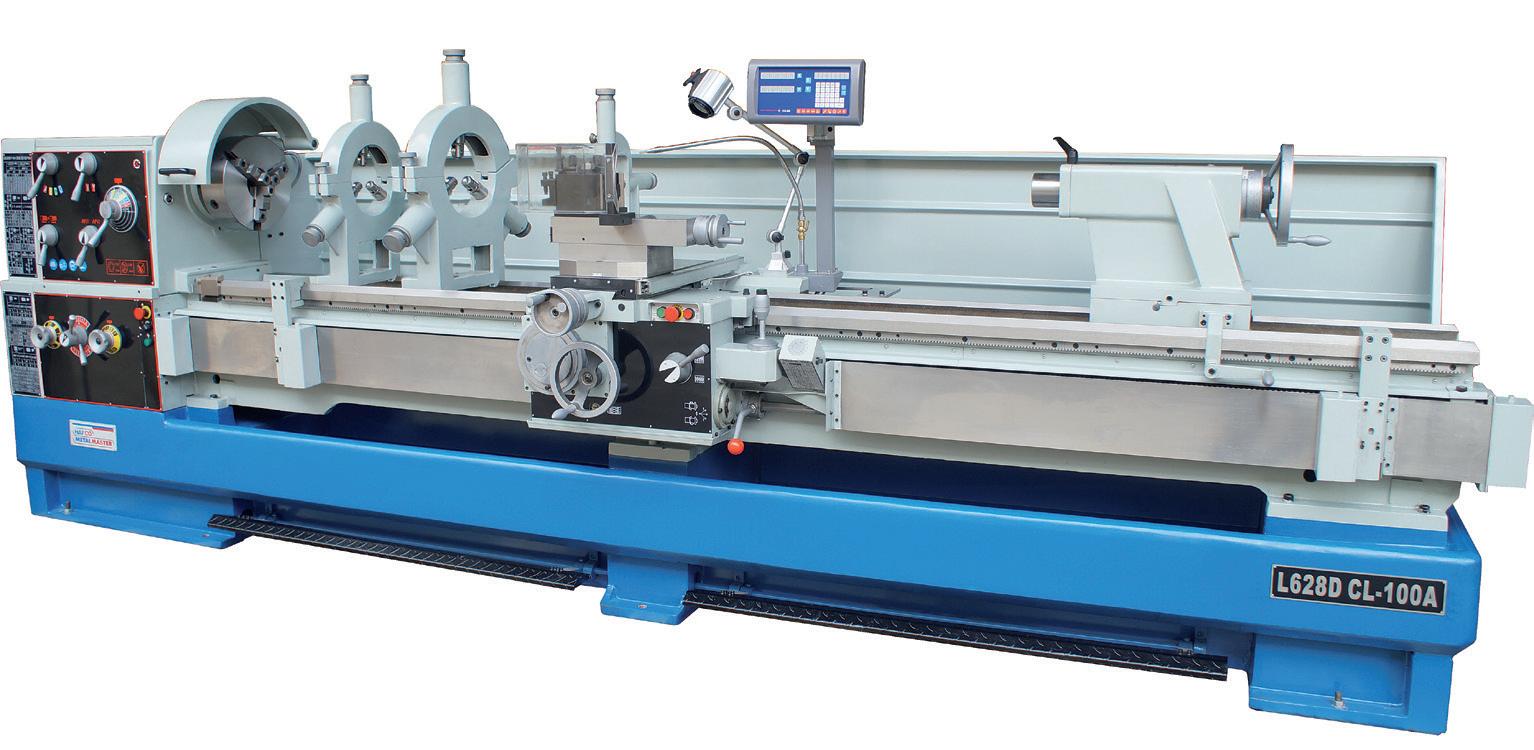
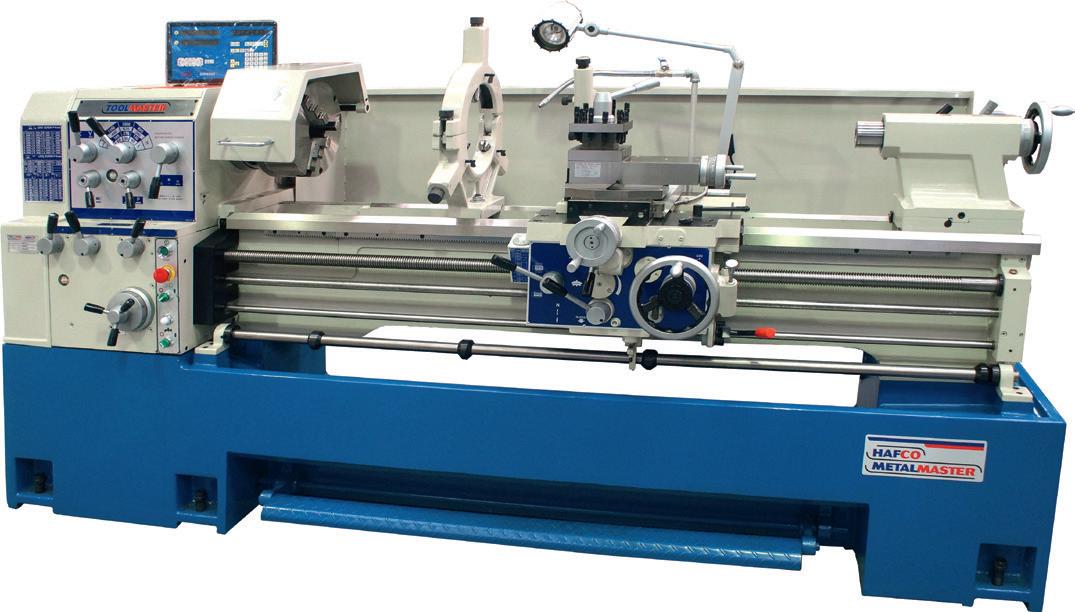
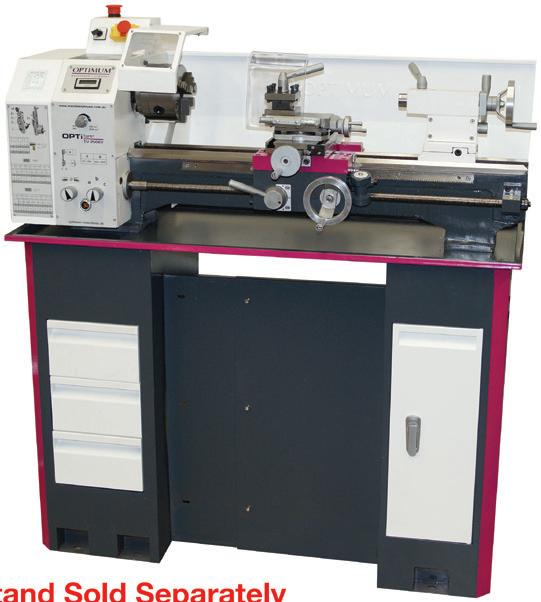
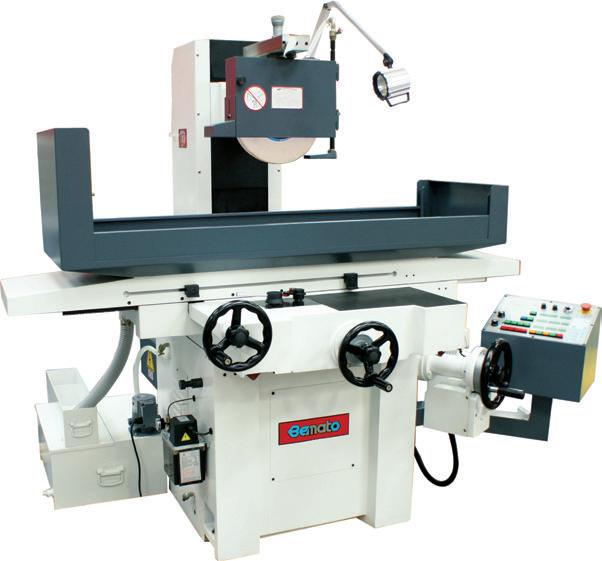


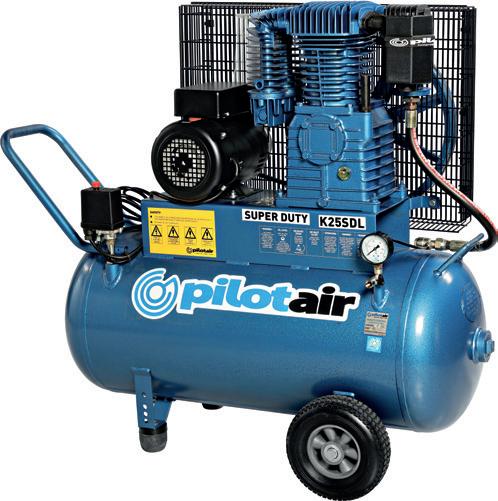




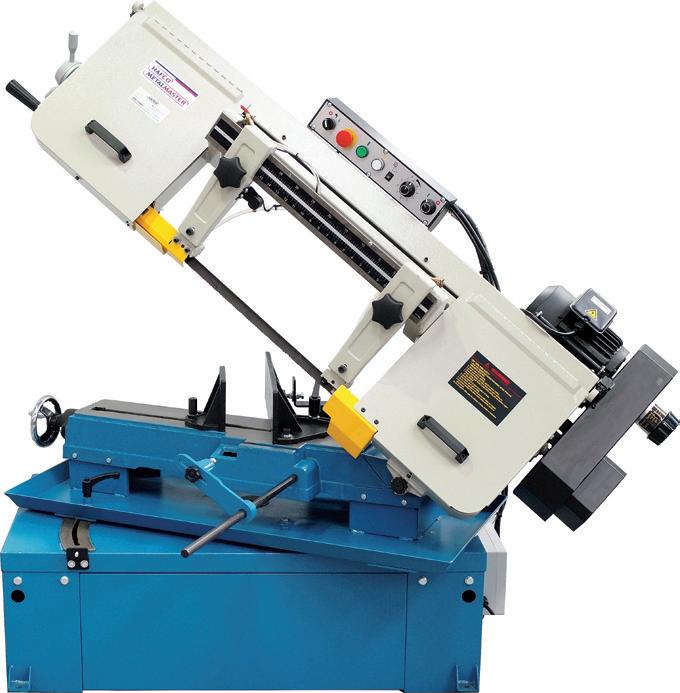

VIEW AND PURCHASE THESE ITEMS ONLINE AT www.machineryhouse.com.au SHEET METAL FABRICATION AIR COMPRESSORS BAND SAWS LATHES GRINDING & LINISHING TIME TO UPGRADE YOUR
the world’s first desktop waterjet.










WAZER is the first desktop water jet that cuts any hard or soft material with digital precision. The high velocity jet uses a combination of high pressure water and abrasive particles to cut through the work piece. With WAZER, we’re bringing this advanced technology to any size workshop.

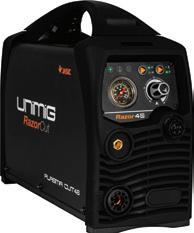


Features:
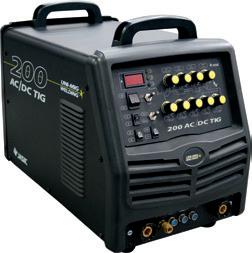

• Cuts Any Material: Metal, Stone, Glass, Ceramic, Composite, Plastic, Rubber and Foam.

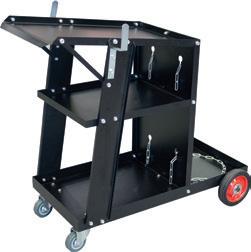
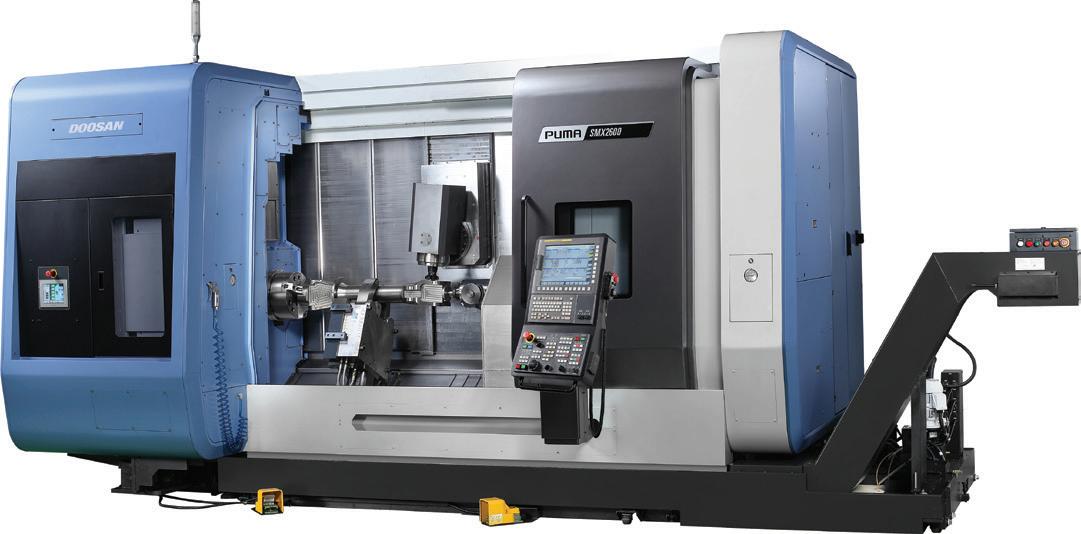
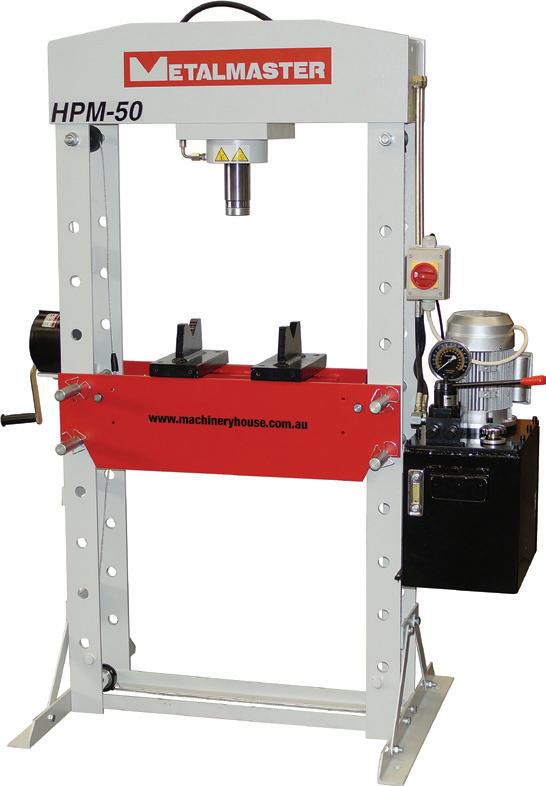
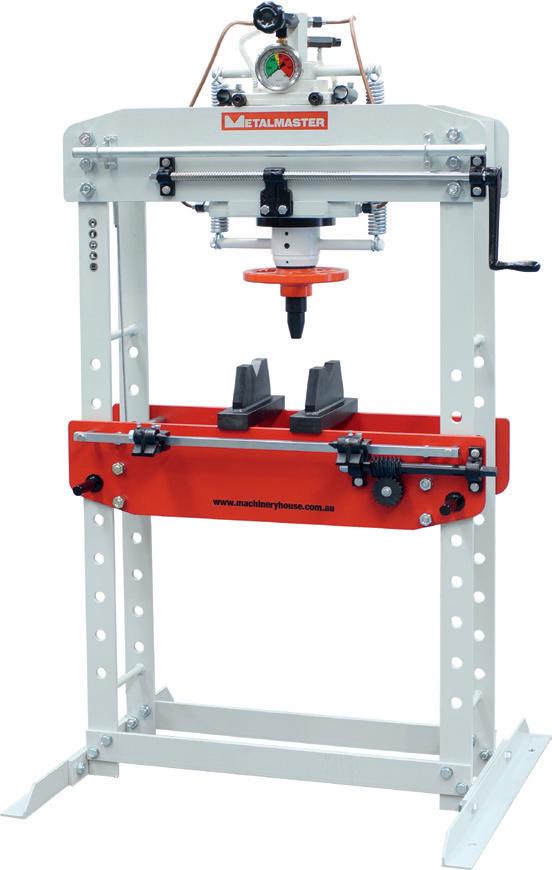
• Compact size fits in any work space.
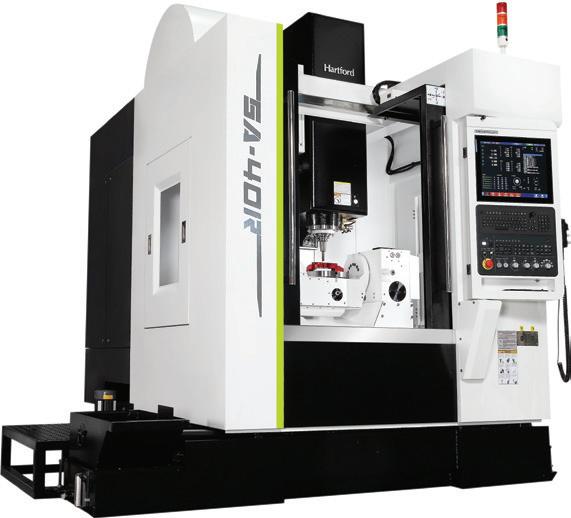
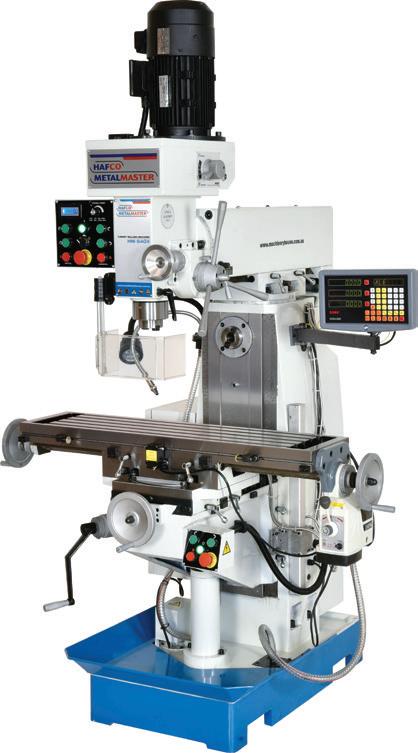
• Brings professional-grade fabrication into any workshop.
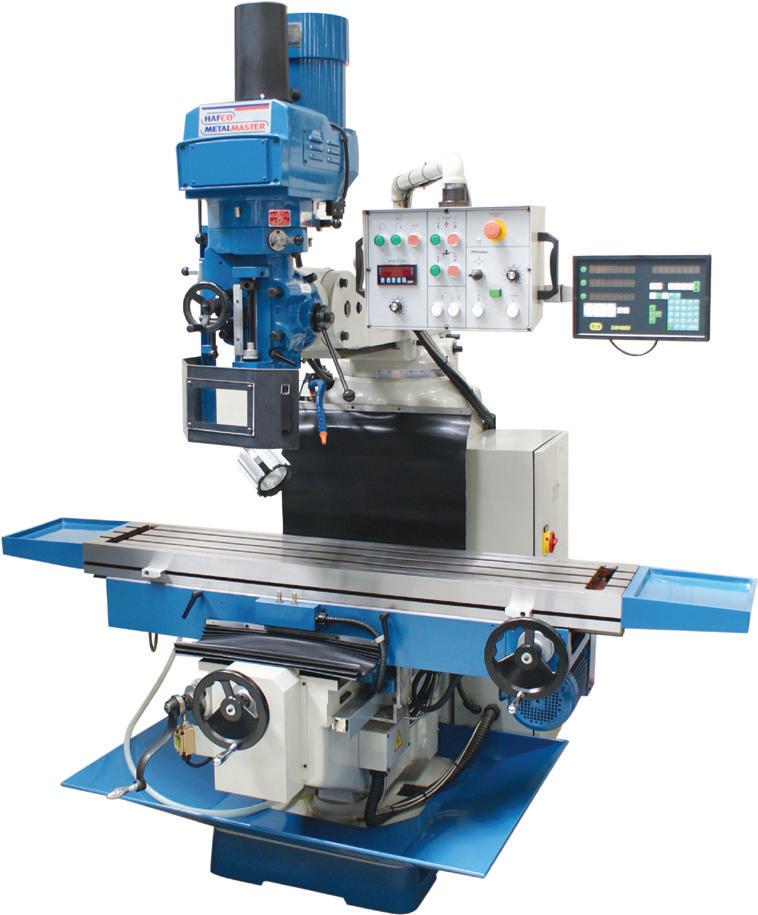
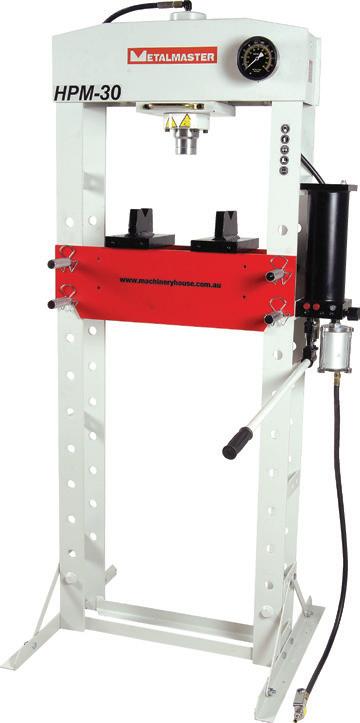
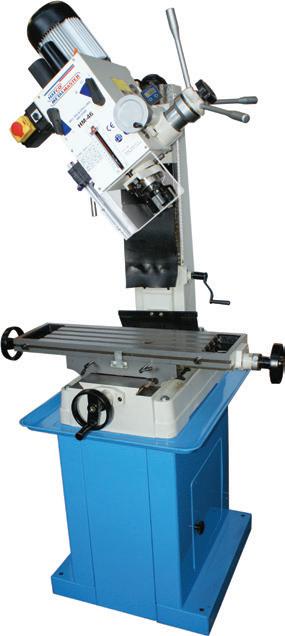
• Ideal for on demand cutting of custom parts.
• In-house capabilities reduces costly outsourcing.

• Great for prototyping, manufacturing, fine art, and instruction.
• Simple set up. Just connect to standard electricity, water, and drain.
• Cold cutting. No heat. No fumes. No need for ventilation.
• Quickly go from design to cutting. Takes any DXF or SVG file.
• Assembled in the USA.
Now cut anything with digital precision using high-pressure water. A compact waterjet for every workshop.
AVAILABLE AT: Specifications are subject to change without notification. SYDNEY (02) 9890 9111 1/2 Windsor Rd, Northmead BRISBANE (07) 3715 2200 625 Boundary Rd, Coopers Plains MELBOURNE (03) 9212 4422 4 Abbotts Rd, Dandenong PERTH (08) 9373 9999 11 Valentine St, Kewdale 05_IU_051022
IDEAL FOR R&D PRESSES CNC MACHINES WELDING EQUIPMENT WORKSHOP? PRICE FROM $14,390 MILLING MACHINES
Clean, compressed air for all applications
Compressed air is used in industries as a safe and efficient power source for multiple applications. As with most sophis ticated equipment, it’s vital to clean and maintain the system to keep it operating at peak performance whilst keeping running costs to a minimum.
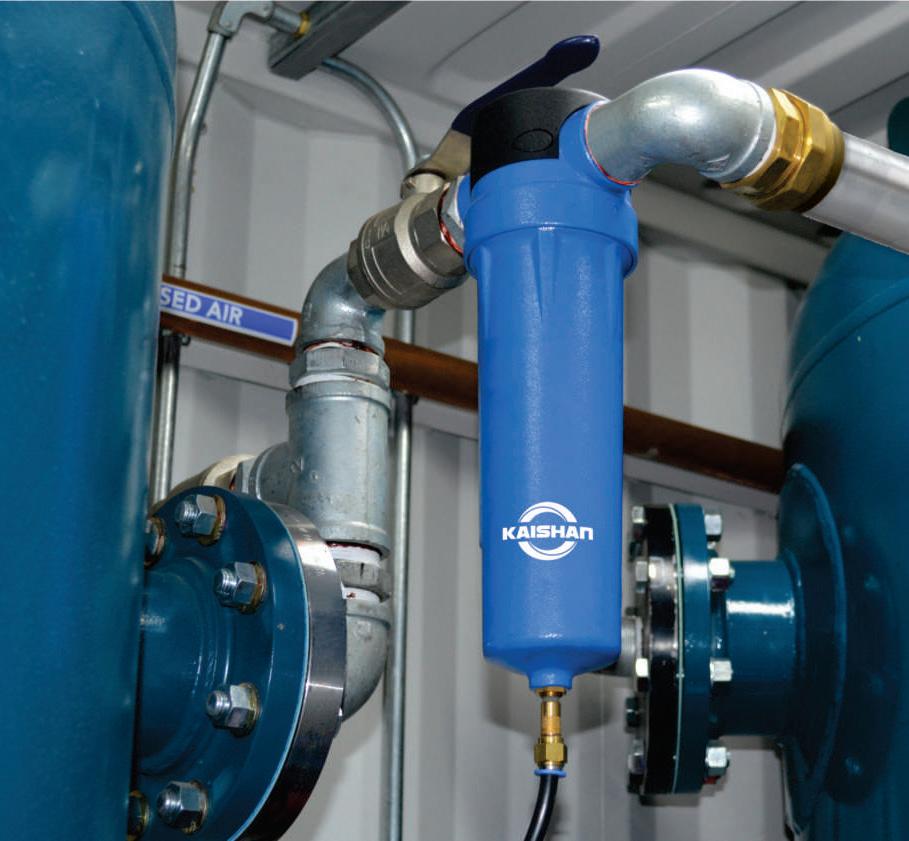
Compressed air filters are one of the most effective ways to ensure high-quality, efficient compressed air delivery, filtering out contaminants like solid particulates, water vapour and oil residue. As with all types of filters, compressed air system filters will fill up over time, eventually requiring service and replacement.
Regular maintenance, cleaning and replacement of compressed air filters brings many advantages, including:
Maintaining peak efficiency
Compressed air filters trap contam inants and particles so the flow of air through the filter becomes impeded and eventually results in a significant pressure drop. This means that the air compressor must work harder to deliver the same level of pressure—or that tools and equipment will not receive the level of pressurisation they need.
To prevent these scenarios and ensure equipment runs at its rated effi ciency and pressurisation, it’s critical to monitor and service compressed air filters. This might include replacement when cleaning is no longer sufficient.
Compressor filters contain a pressure differential gauge that can provide a fast and easy way to see when efficiency is suffering.
Controlling energy & repair costs
With excessive pressure drop caused by clogged filters, compressors have to work harder to deliver the level of pressurisation required by end appli cations. This means that energy costs will increase, cutting into margins and throwing budgets askew. Regular filter maintenance is one of the easiest ways to keep operating costs predictable and under control.
Keeping air clean
Compressed air that contains contam inants, particulates or vapour, presents several dangers and risks. In medi cal-grade applications for example, compressed air will be required to meet cleanliness and purity standards to prevent contamination of lab samples, medical devices and medicines. The same applies for food-grade applica tions, where it is critical to keep food and beverage products free from con tamination. Contaminated compressed air not only presents regulatory risks but it can also cause products to become dangerous to end-users and others who handle them.
Preventing equipment damage
Equipment that runs on compressed air is designed to use clean, well-filtered air. Poorly filtered air that contains contam inants, vapours or particles can damage equipment through corrosion, mechan ical damage or oil damage, to name just a few problems. When compressed air is used for applications such as cleaning equipment or products, damage may also occur if the air is not properly filtered.
Depending on the sensitivity of applications and processes, one or more inline air compressor filters could be needed. Choosing the right inline air filter for the application is essential for eliminating damage to the final prod uct. For inline compressed air filters to be effective, they must be placed correctly in the piping system.
Replacing air filters
It is recommended that compressor and inline air filters be replaced every year or after every 8,000 hours of continual operation. Filters should be replaced more often in situations where filtration is inadequate for the system or when increased levels of contamination from high oil car ry-over or pipe corrosion occur.
How is a
clogged
compressor must work harder to compensate for blockage to air flow. Thisoften causes the blower motor to overheat and lead to system failures.
System opera tors and mainte nance personnel go to great lengths to keep air com pressors clean and working at peak efficiency. However, all too often the plant air system the com pressor is feeding is neglected. Once the air leaves the compressor, it is important to have superior inline filters in place to ensure that the air going out to its application is as clean as it can be.
Inspecting compressed air systems
Kaishan technicians can assess compressed air system and applica tion requirements to recommend the right type and capacity of air filters to match needs.
Kaishan’s wide range of industrial compressed air filters provide the highest air quality, lowest power con sumption, lowest operational differ ential pressure, lowest CO2 emissions and lowest total cost of ownership.
Other inline decontamination products
Kaishan stocks supplies and fits a range of specialised inline products to ensure peak operation of compressed air systems including:
air
filter
likely to affect the compressor? When an air filter is clogged, the
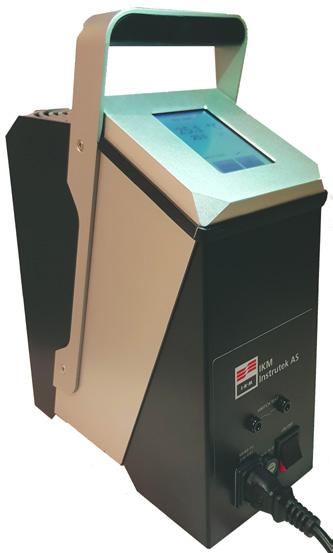
Savings with new dry block temperature calibrator
• Air receivers: to increase efficiency and reduce maintenance in every system.
• Auto drains: for automatic draining
of excess condensates.
• Refrigerated air dryers: for applica tions where dry air is required.
• Oil/water separators: separates lubricants from condensate for easy disposal.
• After-coolers: vital for protection from moisture contamination.
• Condensate separators: for separa tion of condensed moisture from air.
Custom maintenance plans
Kaishan deploys a fleet of mobile com pressed air technicians who ensure regular preventative maintenance— such as cleaning and replacement of air filters—is carried out. Customised maintenance procedures keep all types and makes of compressors and systems operating at peak efficiency with highest beneficial input/output ratios that minimise the chance of costly breakdowns and emergency callouts.
Kaishan kaishan.com.au
Anew calibrator from IKM Instrutek with touch display offers a calibration interval of up to three years. The TC65 portable dry block temperature calibrator was designed to meet market require ments for cost savings based on this longer calibration interval.
It’s also been developed to meet the toughest environments.
The unit is sufficiently compact and robust for marine, industrial and laboratory use, approved according to relevant parts of DNVGL-CG-0339:2019). This is to ensure users are able to calibrate a vast range of temperature sensors, thermometers and temperature switches or thermostats.
The dry block principle excludes the use of oil or other liquids. A dry block insert with various diameters ensures thermal contact to the sensor being tested.
Simply place the sensor to be calibrated in the calibrator, then set the temperature. When stabilisation occurs, read the true temperature from the calibrator and recalibrate the sensor or system accordingly. The new touch display makes it easy to use and read.
MACHINERY
Model TC65 Range 30 to 650ºC Stability +/- 0.1ºC Accuracy 1 Yr +/- 1.5ºC Accuracy 3 Yr +/- 3.5ºC 40 | Industry Update Issue 128 October / November 2022 industryupdate.com.au
AMS ams-ic.com.au
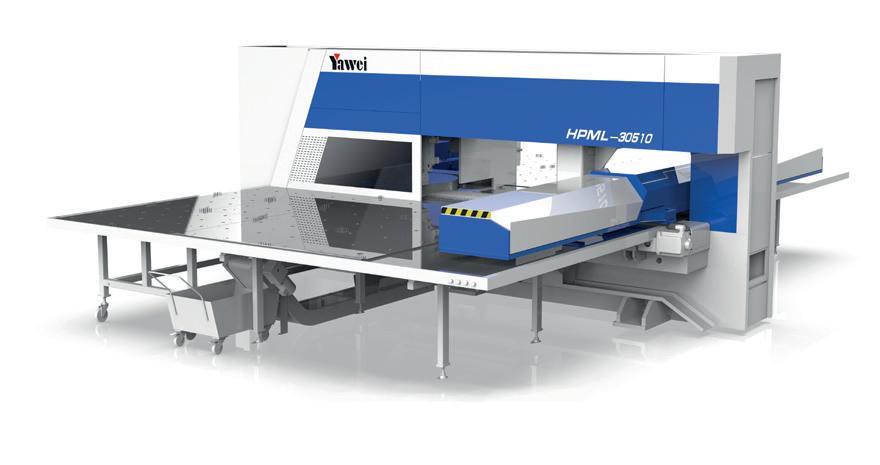
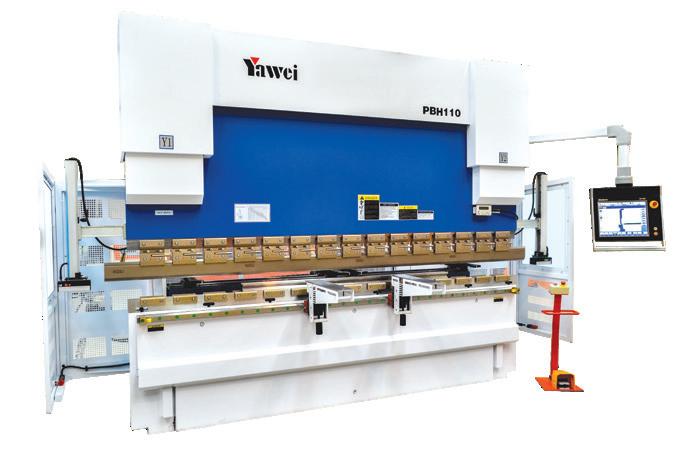

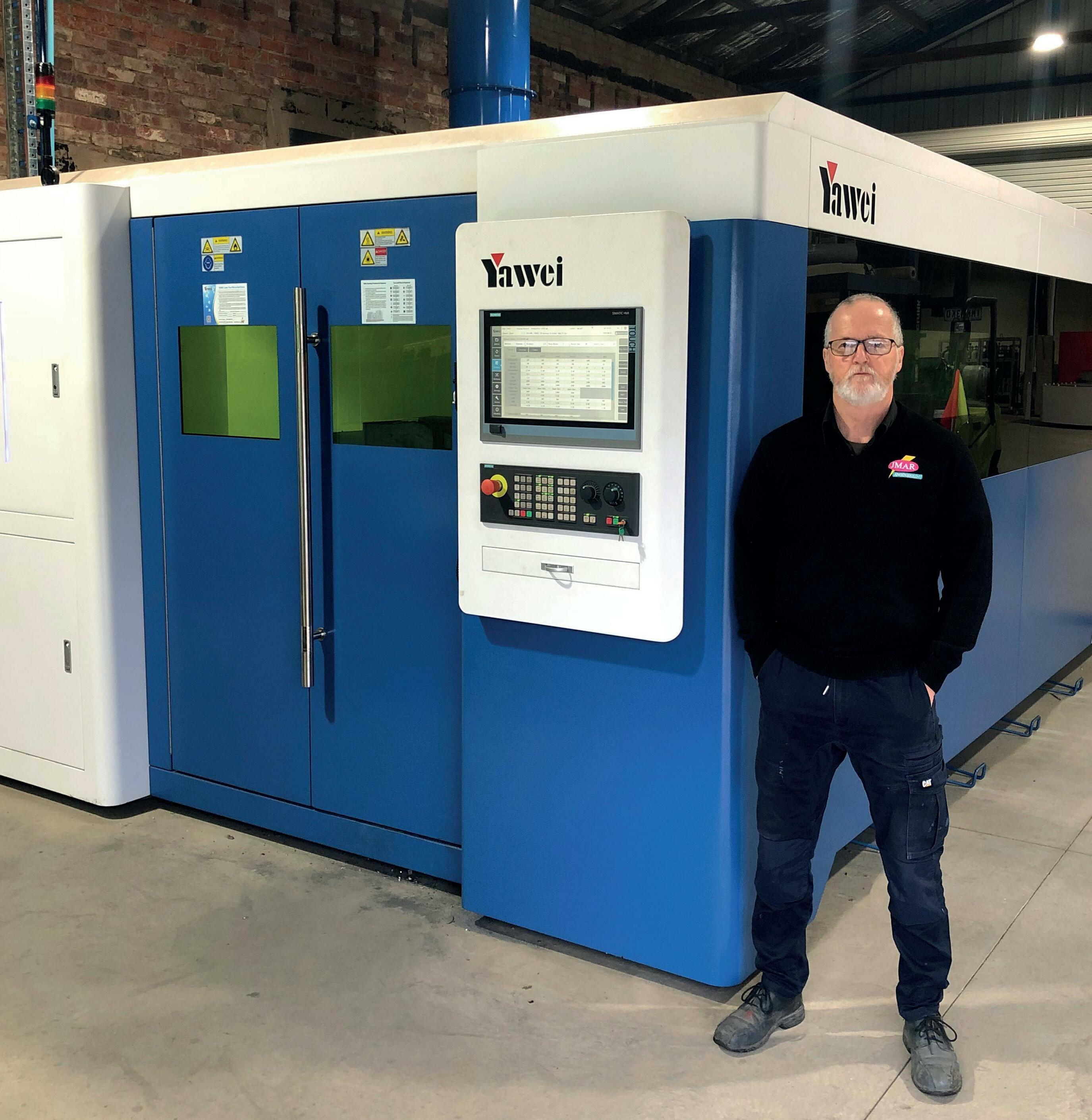
Fiber Lasers • Tube Lasers • Turret Punch Presses • Pressbrakes • Guillotines • Automation Call: Email: Visit: 03 9706 8066 sales@appliedmachinery.com.au appliedmachinery.com.au GROW YOUR BUSINESS WITH YAWEI. THAT’S APPLIED THINKING. Precision sheetmetal processing solutions.
The buzz about modern manufacturing
 By Christine Powis
By Christine Powis
The crowd voted with their feet as the doors opened last week for the Modern Manufacturing Expo, for the first time in tandem with the Workplace Health and Safety Show at Sydney Showground, Homebush.
Most exhibitors at both fairs told Industry Update they were happy with walk-up enquiries, especially on the first day which kicked off with a buzz. People were keen to be networking and doing business face to face after both Sydney and Melbourne events had been cancelled by Covid in 2020 and ’21.
At the Institute of Instrumentation, Control and Automation, Ella AverillRussell said she’d been busy network ing as well as doing business at the IICA stand.
“I’ve lined up customers for our tech tours—for example, behind the scenes at a brewery and a chemical plant. I’ve even found speakers for events, too.”
The established Workplace Health and Safety event was the bigger show with 126 exhibitors while Hall 6 held about 100 modern manufacturing exhibitors. Visitors’ interest was piqued by the expo’s smart manufac turing conference and experts’ pre sentations on topics such as the latest tech and manufacturers’ applications, new opportunities in a ‘net-zero’ economy, and government support including training.
The sophistication of high tech exhib itors has moved up since the previous expo in 2019, partly due to multiplying options in 3D printing and the expos’ new collaborative research and univer sities category.
Additive manufacturing

The latest in 3D printing was pro moted by a handful of exhibitors from printer, scanner and parts supplier Bilby3D and 3D Printers Online all the way up to the EOS printer for metals and polymers and Nano Dimension’s Dragonfly IV for elec tronic components.
Additive Australia is the distribu tor for EOS printer and Materialise, the suite of software which runs it to achieve design optimisation on mesh level, automated support generation, reduced data preparation time, and savings on material cost. Customers include a Brisbane orthotics maker and typical applications include tool ing inserts and injection moulding components, dental and orthopaedic devices, aerospace and defence, and medical from soft helmets to reshape a baby’s head to titanium medical implants where porosity allows liquid to flow through so bone tissue can grow with the implant’s outer edges.
“Manufacturing customers are becoming more of a trend for us now,” said Kevin Hazlehurst, founder of Additive Australia. “We’re 10 years behind Europe and North America but local industry is catching up.”
The Dragonfly printer from Israeli firm Nano Dimensions gives the flexibility to create proof-of-concept prototypes for anyone wishing to produce a low volume but high mix of components – perhaps even making something different every other day.
“It’s ideal for small, lightweight components which need to be cus tomised to fit exactly into, for exam ple, a satellite,” said Omer Tangi, Nano Dimension’s Australia Country Manager.

“Nano Dimensions offers part of a solution to industry’s supply prob lems whether they are PCBs, anten nae, wearable sensors or micro-fluid devices for bioscience.”
The Dragonfly prints compo nents in up to 30 or sometimes more layers. Nano Dimensions has sold a handful of the pricy Dragonfly IVs in Australia, mainly univer sities and high-end researchers such as Protospace at University of Technology, Sydney (UTS), which has more than 90 machines for 3D manufacturing and claims 15 additive
manufacturing technologies.
Other additive and smart man ufacturing companies included Embedded Logic Solutions, Emona Additive Manufacturing and Raymax Applications. Raymax has been devel oping photonics and laser solutions, as well as supplying equipment, for more than 30 years. The company makes light work for industry and R&D organisations; solutions range from anti-counterfeit and security to car components, to laser cladding and atmospheric packaging.
Centres of collaboration
The group of university and col laboration centres at the expo for the first time included GPC Electronics, CSIRO Future Digital Manufacturing, Western Sydney University, and NSW Defence Innovation Network (UTS and the Defence Science and Technology Group).
Southern Strength Agile Manufacturing Network stood out as a local group of manufacturing and complementary businesses from the Greater Sydney Region where manufacturing is a primary employer. It builds capability and collabora tion among members by developing trading and business streams from local, national and international opportunities.
“The network’s bigger members include ANSTO and the University of Wollongong and more typical mem bers are SMEs,” said Greg Bullen, Medina Engineering’s Business Development Manager.
Medina Engineering itself is a 45-year-old SME specialising in com puterised numerical control machin ing and manufacturing including four- and five-axis machining for projects of all sizes for mining, power generation, defence, rail, building products, and steel and aluminium industries.
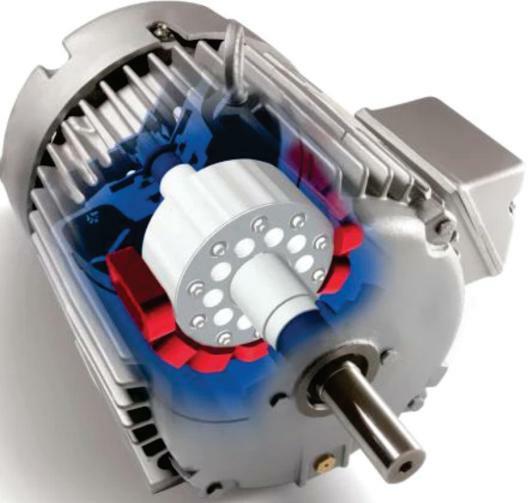
More typical of the collabora tion between tertiary and industry sectors was the Australian Cobotics Centre, a joint venture between UTS, and Swinburne and Queensland Universities of Technology.

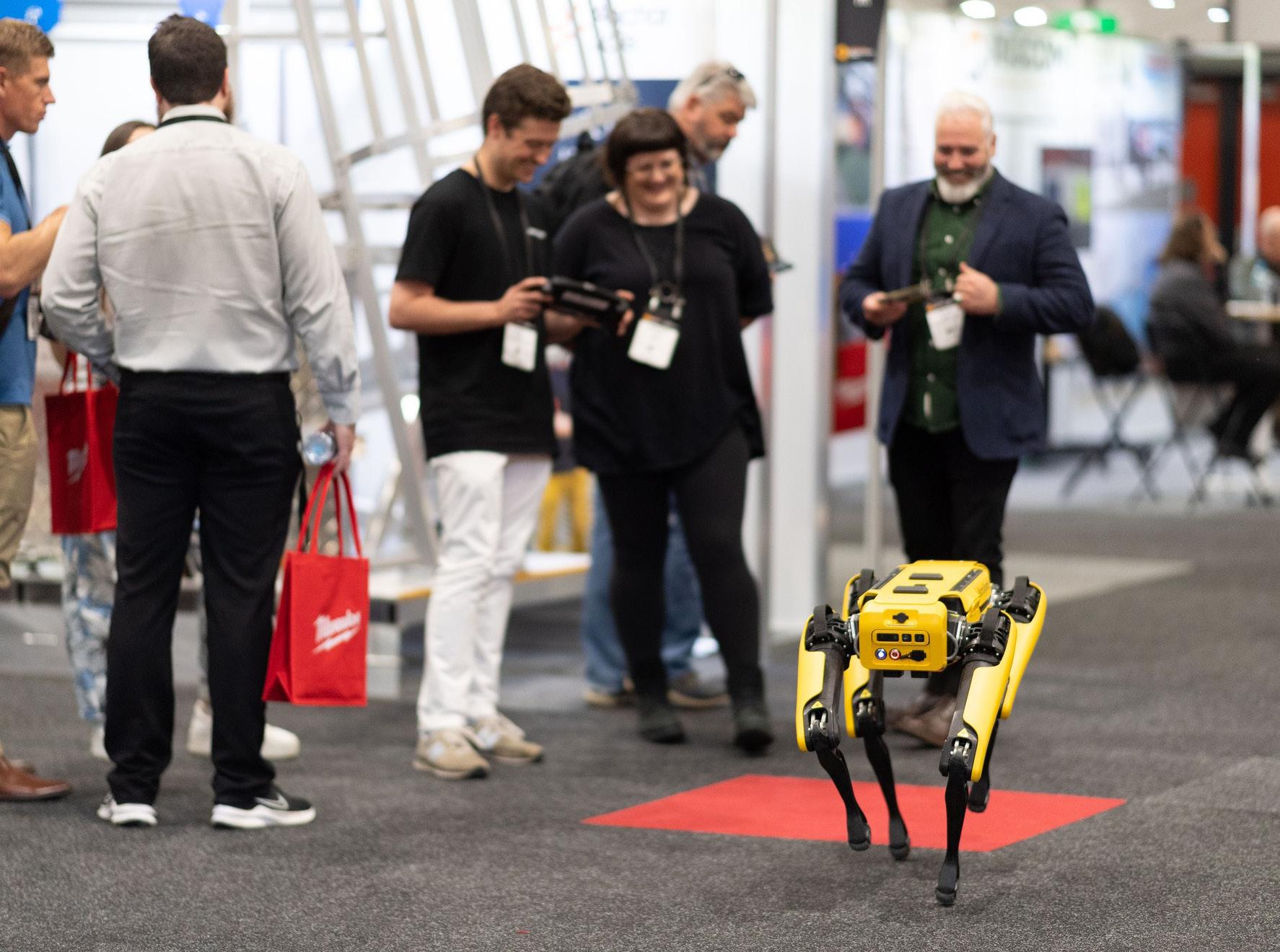
It works with a handful of indus try partners: Cook Medical, B&R Enclosures (electrical cabinetry), and industry association Weld Australia, Infrabuild (steel recycling, manufac turing and distribution), QUT spin-off Advanced Roboticsfor Manufacturing Hub and IR4 benchmark automation solutions. In its project work with these partners, ACC aims to improve collaboration between robots and humans—on the technical side, and the social and awareness side so each is aware of the other’s activities.
In 2023 the Workplace Health & Safety Show will be held in Brisbane on May 31 and June 1st, as well as in Sydney on 20 and 21 September. The Sydney event will also host the co-located Modern Manufacturing Expo at Sydney Showground.
Register your interest in attending by adding your name to a priority invite list by emailing mmevisitor@iecgroup. com.au
MODERN MANUFACTURING
42 | Industry Update Issue 128 October / November 2022 industryupdate.com.au
A diverse Workplace Health and Safety show
 By Christine Powis
By Christine Powis
More than 120 exhibitors spruiked their wares last week at the Workplace Health and Safety Show at Sydney Showground, Homebush.
Exhibitors were of all types and sizes: from Brisbane-based family business Rehydraid, an electrolyte drink which is pitting itself against long-established international brands; up to heavy-duty majors like Milwaukee power tools and personal safety gear.
The variety of exhibitors these days has broadened as people’s awareness of wellbeing has become more holis tic. Not surprisingly, this has been accelerated by the Covid experience and many firms’ desire to pitch them selves as caring employers.
Mental health focus
Among exhibitors’ stands were allied health services such as on-site psy chological support from Axis, which reports strong demand from bigger companies in food and beverage man ufacturing, utilities and mining.
“There’s now a heightened aware ness in the general public of the importance of mental health,” said Helen Barker, Axis’ GM of Operations, “and workplaces are keen to bring people back on site.”
Axis psychologists first

de-stigmatise the consultation before working with people.
“Employee Assistance Programs are really a mandatory ticking of boxes and telephone mental health sessions don’t compare with face-toface sessions,” Barker said.
Axis believes its onsite psychol ogy services eliminate obstacles to a worker seeking assistance by enabling convenient, personal support. The service also aims to provide mental health coaching—teaching practical strategies to promote better health and lifestyle choices, and strong, respectful relationships.
To the same end, the NSW gov ernment is offering free training and coaching on workplace mental health to help employers, leaders and managers meet their duty to provide a mentally safe workplace and a more productive organisation.
Individuals, too, can get free train ing, much of which is supported by the Black Dog Institute.
From hydrolites to podcasts about safety at work
A small company with big aspirations, Rehydraid showcased its rehydration range of hydrolite drinks, jellies and ice blocks, which have been selling for the past few years through pharmacies.
Employers of emergency services teams and outdoor workers, local councils and manufacturers order it direct, often in bulk as a concentrate.
It’s marketed as sugarless, and using all Australian ingredients, aside from ‘better quality’ salt from New Zealand!
ForgeWorks was giving away its blueprint for improving safety at work to help businesses ‘break through the performance plateau with a success ful safety strategy’.
“Many companies take the manual and do an excellent DIY safety strat egy,” said Associate Director, Nathaniel Bougoure. “And others come back to us for consulting support and refining their strategy. Giving away good intel lectual property does encourage people to come back for more.”
Bougoure said that further support is frequently requested for risk man agement, management systems and often for engaging senior leadership.
“Boards are a bit distant from the frontline or, if they get information filtered through middle management, then messages can change– say, from pointy to sanitised.”
The company develops and sup ports safety strategies locally for utilities and defence organisations, and internationally with Amazon. Banks such as Macquarie also rely on Forgeworks’ support regarding their asset management portfolio.


Bourgoure recommends the monthly podcast The Safety of Work by Forgeworks’ CEO Dr David Provan and the Safety Science Innovation Lab at Griffith University for the latest safety research and practical management tips.
Safework NSW also gave away its free manual, based on seven elements: commitment, consultation, risk man agement, reporting, worker capabil ity, safe environment, and workers’ compensation and recovery.
The agency also advises on issues, provides templates for action plans, free health checks plus there’s a $500 rebate for businesses installing a safety item.


Medical response training and safety apps
Gory faux body parts and organs drew attention to stands held by medical response training teams. Real Response’s client list includes logistics firms and food companies such as Sanitarium.
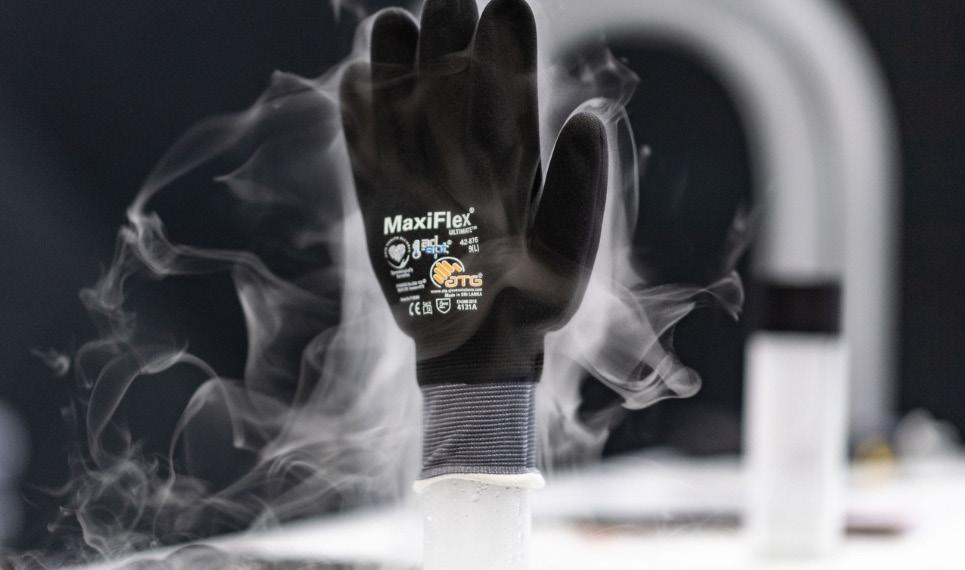
Trainers are experienced first-re sponders such as paramedics or med ical educators who run training both live and as synthetic simulation. They train on sites across Australia, from basic first aid to emergency response skills and advanced tactical training.
Real Response also uses virtual real ity technologies to improve learning outcomes where face-to-face training is impractical, too expensive, too danger ous, or otherwise inaccessible.
Eye-catching in a completely differ ent way were accessories by Duress in the shape of neat rings, watches and of course phones running apps.
The phone app enables location check-ins, basic ratings on location safety, alerts to either the user’s team or Duress’ 24/7 Australian monitor ing centre, and emergency activation which can include live-stream video. Phoenix, a card, pairs with the app for advanced location markers.
The watch model offers similar welfare checks either requested or automatic, fall detection and heart rate monitor plus live video if needed.
This year’s major exhibition sponsor was Skytrust Intelligence System—the cloud-based manage ment system which provides dash board-based situational awareness, to drive compliance, due diligence and performance across business.
Next year the Workplace Health & Safety Show will be held in Brisbane on May 31 and June 1st at the Brisbane Convention and Exhibition Centre.as well as in Sydney on September 20 and 21 at Sydney Showground.
Register interest by emailing mmevisitor@iecgroup.com.au
WORKPLACE HEALTH & SAFETY
Industry Update Issue 128 October / November 2022 | 43 industryupdate.com.au
Steel vs polymer: sourcing the best warehouse safety barriers
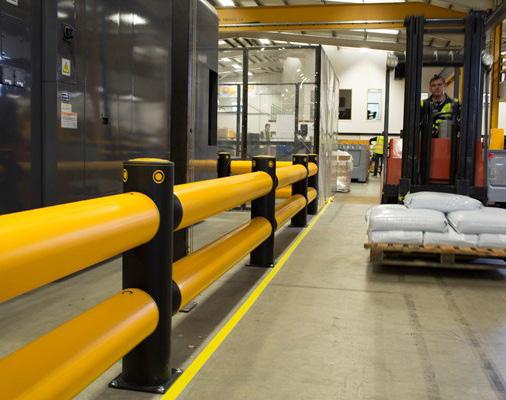 By Chris Banks, President of Banks Industrial Group
By Chris Banks, President of Banks Industrial Group
Hard hats, painted floor lines, warning signs, lock out-tag out procedures, handover briefings… these are all hallmarks of a good workplace safety program.
However, in most industrial settings, good is not good enough to fully protect today’s workers.
In most cases, physical barriers are also needed to properly direct vehicle and pedestrian traffic, visually signal danger points in an environment, and better protect machinery and infrastructure during collisions, to name just a few applications.
Depending on the materials used in the barriers and those of the surrounding collision site, energy can be transferred to the human operator and load being carried. These collisions could result in lethal injury to the driver and costly damage to the goods that topple from the lift. Facility owners need to consider the best material for safety barriers to prevent those outcomes.
Currently, there is no official Australian safety standard for the use of safety barriers. But PAS 13 is the first step towards creating legal guidelines for workplace safety, to better protect workers and companies from potential hazards. PAS 13 was created and published by the British Standards Institution in association with the Health and Safety Executive, and with the involvement of A-SAFE as part of the steering group.
mean by appropriate physi cal barriers?
Guard rails, bollards, and pallet rack leg guards increase protective measures for humans, machin ery, and structures in a workplace. Painted lines on a floor are a good start, but they encourage people to look down, not around them. When workers are in moving vehicles, primarily forklifts, they need above-ground, highly visible indicators on how and where to operate safely – like the barriers we put on roads, bridges or even in parking lots. Steel and polymer are the two most common materials used today in worksite safety barriers.
STEEL: Different styles of fabricated steel guard rails were first developed in the early to mid-1900s for use along highways and agriculture.
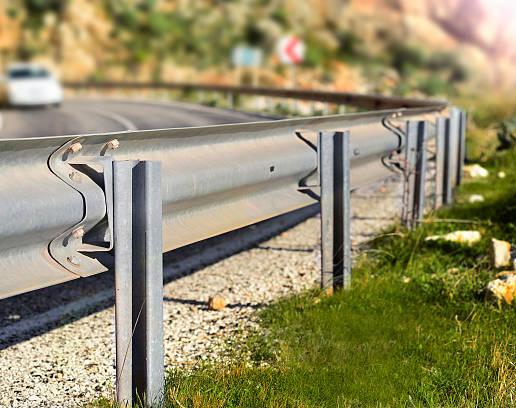
These rails, strong and cost-effective, were soon adapted for safety purposes in industrial settings. They are still the dominant choice for workplace safety barriers today.
Steel Guard Rails
An industry standard
Steel is still the prevalent choice on most construction, industrial, and manufacturing sites today.
Initial cost
It’s considered to be a strong and acceptable choice, while also being relatively low-cost up front and disposable when damaged or worn.
What to consider?
During impacts
Steel simply isn’t designed to protect against the much higher forces and more powerful vehicles used in modern industrial environ ments. When there’s a collision, you’re left with a damaged or destroyed barrier, along with any vehicle, infrastructure impact, or production downtime associated with it (or the added expense if damaged machinery belongs to an outside vendor working on your site).
Durability
Steel is subject to denting, rusting, and chip ping, requiring preventative maintenance more often and that runs up the tab on yearly operational costs. Over time, that rusting, denting, and chipping can make the barriers less visible which poses a higher risk to opera tors and pedestrians.
Facility damage
Steel is very rigid and unyielding, transferring any impact energy into the surrounding floor and other structure. These repeated impacts over time can prematurely damage your con crete, causing more expensive maintenance and repairs sooner.
Visibility
There is no requirement in Australia regard ing the colour of safety barriers.
Many safety barriers are bright yellow; a universal signal hazard signal.
Since painted steel chips and fades over time, routine repainting and maintenance costs are higher and require more of the annual operating budget.
Polymer Guard Rails
During impacts
Polymer doesn’t just stop the force of an impact, it absorbs and moves with it. This means during a collision, the barrier takes the force of the blow, flexes, and returns to its original shape with little to no damage on the machine that hit it or the environment around it.
Polymer blends, like A-SAFE’s advanced Memaplex, which is three times stronger than steel, cushions these impacts (up to 80%) and mitigates physical damage to the machines and vehicles during contact.
Eliminate impact shock
Collision energy isn’t transferred to the floor, surrounding structure, machinery, or vehicles. It’s confined within the barrier itself, protecting the floor from premature damage and removing the risk of impact shock to operators and loads.
Durability
The bright polymer coatings make them highly visible and easy to see by workers from all angles. Unlike painted steel, this colour stays intact and vibrant for years, improving guidance to workers and pedestrians through and around the worksite. Additionally, companies using polymer save on operational costs annually by eliminating the need to repaint, repair, or replace steel barriers.
Testing
A-SAFE conducts standardised, realistic testing to PAS 13 compliance, which is published by the British Standards Institution (BSI) and consid ered the world’s first and foremost safety barrier testing code in industrial workplaces.
All impact products are subjected to rigorous, repetitive collision tests and measured against a high standard of performance and recovery. The tests are monitored by TÜV Nord to receive their independent verification that A-SAFE products reach the industry’s highest standards.
Food and medical environment safe
Polymers perform better in the highly regu lated and demanding environments of food processing and healthcare. Both have hygiene requirements that demand much higher per formance standards.
A-SAFE’s specially designed hygiene seals prevent the ingress of moisture, bacteria and dirt, while the polymer material is chemical resistant, scratch-resistant and non-corroding. The products are self coloured and do not need painting, eliminating the risk of cross-contami nation from rust or paint particles.
Initial cost
Initial investment and installation of polymer guard rails, bollards, and rack protection is typically more expensive than steel. A facility manager would need to run the numbers on total cost of ownership to see how soon poly mer options could “pay for themselves” when compared with the annual maintenance, repair, liability, and replacement of steel counterparts.
A-Safe asafe.com/en-au
WORKPLACE HEALTH & SAFETY
What do we
POLYMER : In the latter half of the 20 century, plastic and polymer versions of safety barriers started to gain popularity as an alternative to steel for a variety of reasons. 44 | Industry Update Issue 128 October / November 2022 industryupdate.com.au
Saving lives — a real-time silica monitor
by Christine Powis
Hundreds of thousands of Australian workers exposed to silica dust particles in their work environments could benefit from a world-first, real-time silica detector developed in partnership with the NSW Centre for Work Health and Safety.
Silicosis is caused by inhaling fine silica dust, or respirable crystalline silica (RCS), and is estimated to be the most common chronic occupational lung disease worldwide. It’s natural to stone, concrete, sand, mortar, and many building products including the growing engineered stone category. RCS dust is released when workers cut, drill, polish, saw or grind prod ucts that contain it.
“Silicosis has been around for centuries but NSW saw a spike in diagnoses up from nine cases in 201718 to 40 cases in 2018-19,” said Skye Buatava, Director of the NSW Centre for Work Health and Safety.
Following the rise in diagnoses, the Centre consulted industry and found a significant problem was the inability to detect high levels of exposure to RCS dust in real time.
“As RCS is invisible, workers are often unaware of exposure, and the monitor was designed to warn workers of exposure to encourage them to prop erly protect themselves,” says Buatava.
The centre partnered with UK-based Trolex Sensors, which spent nine years developing the world’s first real-time silica monitor ing and measuring device, the Trolex Air XS. Launched by the NSW centre earlier this year after a $1m invest ment, the Air XS has already won
several awards in the UK.
The need for better monitoring and precautions is laid bare in a Curtin University report commissioned by the ACTU and published this year.
It concluded that approximately 10,390 lung cancers, or just over 1% of projected lung cancer cases, could be expected in the Australian adult population as a result of their exposure to RCS at work.
On top of lung cancers, the report estimates between 83,000 and 103,000 silicosis cases will result from the estimated 584,000 people working with RCS exposure today.
The figures are projections over the lifetime of the population currently exposed so do not include people exposed in future.
Meeting standards
NSW is among the states that have legislated Safe Work Australia’s Model Code of Practice which bans dry cutting or dry processing of stone or stone products without water sup pression or dust capture.
As well as WH&S standards, Victorian regulations require businesses which use and cut or otherwise manipu late stone products to apply for five-year licences. Businesses have been obtain ing licences since last November and licences are mandatory from November 15 this year — or penalties apply.
Importantly, WHS laws apply to organisations of all sizes.
In NSW, the workplace exposure standard has also been halved, reduc ing the eight-hour time-weighted average for particulates from 0.1 mg/ m3 to 0.05 mg/m3. The Breathe SX
software which runs the monitor shows both dust and RCS counts of between 1-10 micrometres (a micrometre being 0.001mm).
The Air XS monitor can detect just a single particle of RCS, so it more than meets the current standard of 0.05 mg/mg3 and can actually detect smaller than that standard.
Real-time monitoring benefits
Intermittent monitoring, while accu rate, is only useful to profile air qual ity while the monitoring is actually underway. But what if someone starts sweeping the floor afterwards?
As AES Regional Manager Peter Richards explained to a coal industry Standing Dust Committee Regional Forum recently, real time data can track exposure levels as they happen, giving far greater protection in multi ple ways including:
• instant alerts to warn people
• immediate identification of problem practices or process inefficiencies
• making on-site surveys more effective
• improving performance of venti lation, suppression or extraction systems
• ensuring ongoing regulatory compli ance and giving proof
“Often people know they have a prob lem with peak exposure of harmful dust through time-weighted aver ages,” Richards told the forum, “the problem often comes in identifying when and where that exposure has happened so as to be able to know what was going on then, and how to avoid that exposure in future.”
Director of the Centre for Work Health and Safety, Skye Buatava.Director, Centre for Work Health and Safety
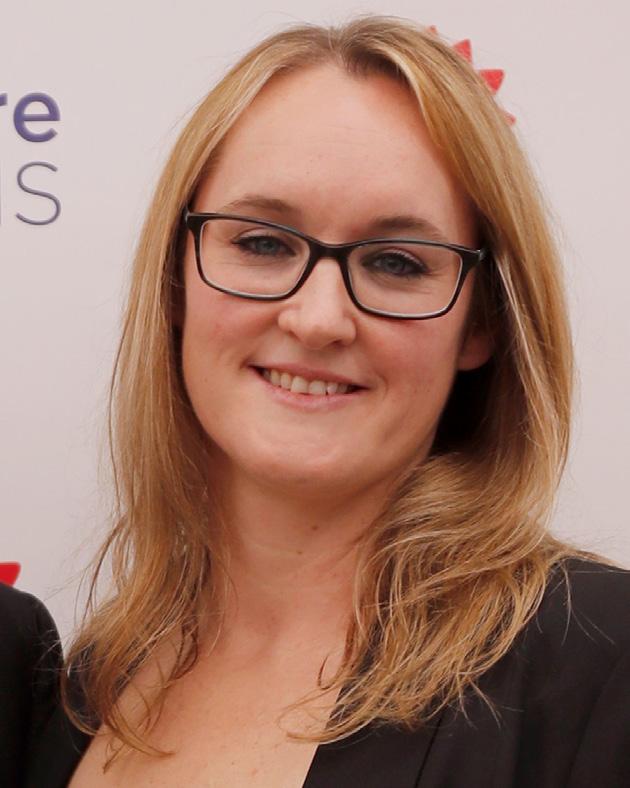
“Only with real-time data can you track exposure levels as they happen and make immediate impactful deci sions on processes, procedures, and protection to successfully reduce the risk to people,” Richards said.
The Trolex Air XS monitors sell for $18,500 and the Centre for Work Health and Safety’s involvement means NSW businesses receive a $1,000 rebate - or small businesses can apply to SafeWork NSW for a small business grant.

On its website, Trolex’ list of distributors includes AES Solutions, Austdac, Cuthbert Stewart, Nome Services, Strata Worldwide Australia and Trident Australia.
As Trolex says, with demonstra tions of the detector now available for businesses across Australia, the incentive to ‘get real’ on silica moni toring has never been higher.
www.centreforwhs.nsw.gov.au
WORKPLACE HEALTH & SAFETY
Industry Update Issue 128 October / November 2022 | 45 industryupdate.com.au
The Arntz Optibelt group of companies celebrates its 150th anniversary
As one of the world’s most important manufacturers of high-performance drive belts and specific drive solutions for a wide range of industries, the Arntz Optibelt group of companies looks back on 150 successful and eventful years and takes a look into the future.
“We keep the world moving sus tainably. Innovative solutions are our passion. Our drive: trust and partnership.”
Founded in 1872 by Emil Arntz with just ten employees, in the early years, ‘Höxtersche Gummifädenfabrik’ pro duced rubber threads and technical rubber products.
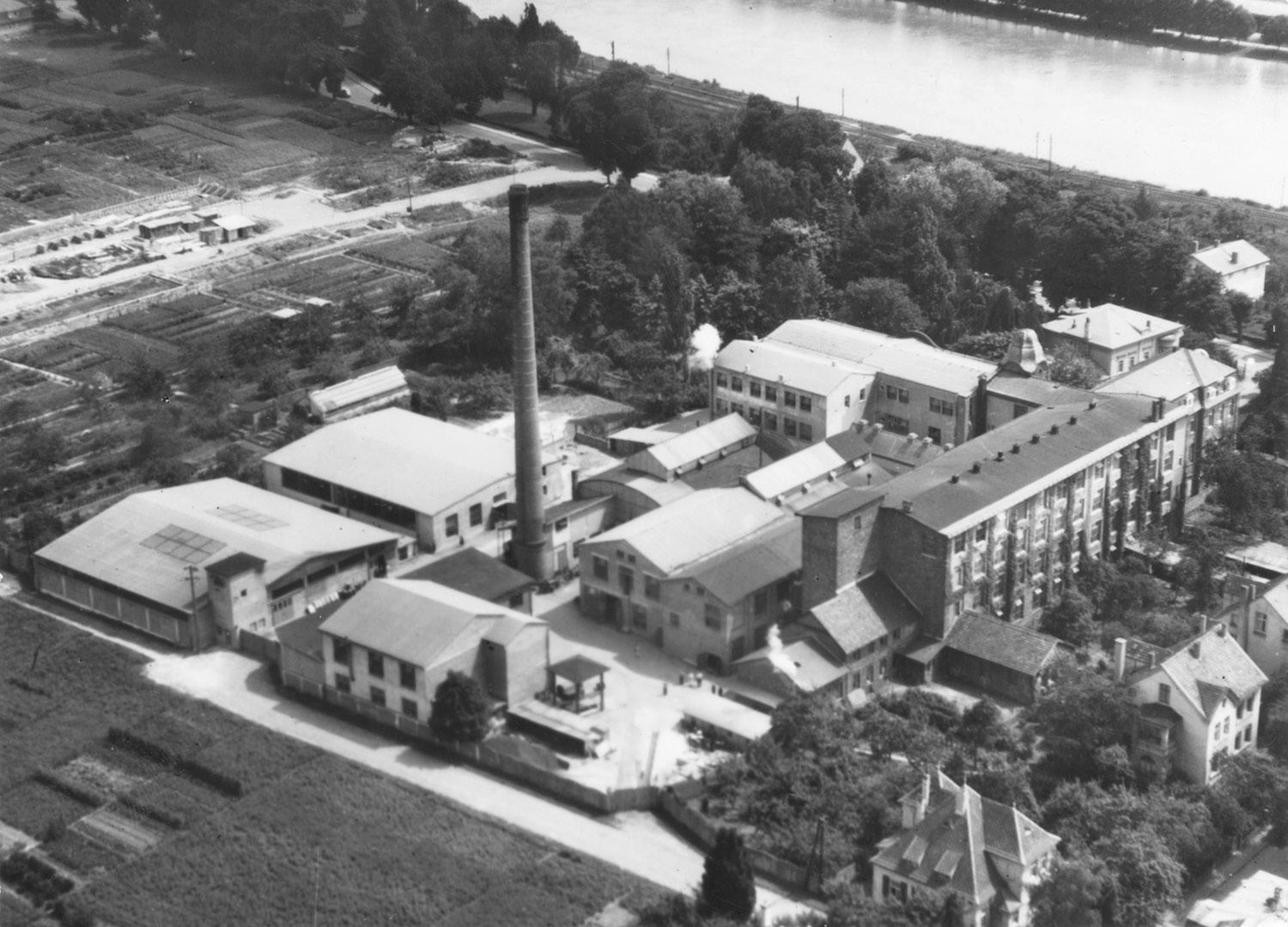
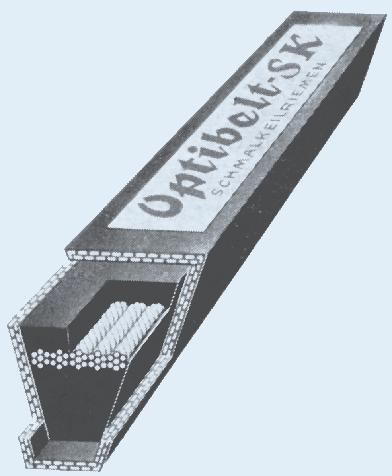
After the first V-belt left the factory in 1948 under the name ‘Optibelt’, the name became a trademark in the industry.
20 years later the first foreign produc tion facility was founded in Northern Ireland and other new production sites followed in China and Romania.
“Family-run from the very begin ning, down-to-earth, innovative and always orientated towards profitable growth, we focus on uncompromising quality, durability and sustainabil ity,” explains Reinhold Mühlbeyer, Chairman of the Board of Management.
Commitment to the location Founded in Höxter, Germany, the Arntz Optibelt Group is still head quartered there today.

As one of the special highlights on the occasion of the 150th anniversary, a fashion collection with various Optibelt motifs was designed for the employees, the proceeds of which will be donated to the Höxter-Tisch e.V. in order to help and support the volunteers involved in the association in their work for families and fellow citizens in need.
As the largest local employer in Höxter, Optibelt supports the urban development project both materially and ideally.
Industries
Today the company services indus tries as diverse as: cement, road con struction, pulp & paper, agricultural technology, oil & gas, fans & compres sors, food & beverage, automotive, heavy transport, logistics & distribu tion, textiles, lawn & garden, sealing & damping technology, x-ray protec tion, and leisure and sport.
of apprenticeships in various areas.
In addition, Optibelt offers exciting job opportunities in a wide range of specialist areas.
Whilst looking back on 150 years in the industry; the company is also looking ahead.
That’s the motto of the Arntz Optibelt group of companies, and over the past 150 years, they’ve become one of the world’s most important manufacturers of high-performance drive belts and specific drive solutions for a wide range of industries.
The family-owned company has been in its current form since the end of the 1990s, and continues to be a medium-sized enterprise, today employing more than 2,400 people at eight production sites and 33 sales offices in 30 countries.
Products include v-belts, rubber tim ing belts, PU timing belts, kraftbands, industrial belting, metal products, technical devices, couplings, automo tive & commercial vehicle spare parts, technical elastomer sheeting, personal & industrial x-ray protection.
A look into the future Optibelt’s long company history also includes the training of its own spe cialists and executives and the group is constantly increasing the number
One of the key objectives within the Arntz Optibelt Group’s mission statement is to become climate-neu tral worldwide by 2040 through our own efforts.

To this end, the company is already calculating its CO2 footprint today in order to determine its own climate impact. Numerous efficiency and sustainability measures at locations worldwide are being vigorously addressed and implemented in order to reduce energy consumption.
“These important milestones also make it clear that we are taking the much-cited turning point seriously in order to set the right course for the future for the company and its employees,” emphasises Managing Director Konrad Ummen.
The Australian regional office and warehouse facility was estab lished in 2009 and today has offices in Melbourne, Brisbane and also in Auckland, New Zealand, servicing the broad range of industries serviced by the parent company.
INDUSTRY NEWS
Konrad Ummen, Managing Director (Left) and Reinhold Mühlbeyer, Chairman of the Board of Management (Right)
Optibelt Building, Old (Left) and New (Right)
46 | Industry Update Issue 128 October / November 2022 industryupdate.com.au
First Optibelt V-Belt
Australian Space Park looking for manufacturing partner
Australia’s only dedicated space manufac turing hub, the Australian Space Park in Adelaide, is seeking expressions of interest for a partner to operate the Common User Facility (CUF).
The hub, announced in December 2021, aims to fasttrack the country’s sovereign space manufac turing capability.
The CUF will offer manufacturers access to facilities with a focus on the production of small satellites and their payloads, rockets and electric vertical take-off and landing vehicles (eVTOL).
The park is seeking expressions of interest from either a single entity (prime contractor) or a con sortium with the capability, capacity, and resources to operate the CUF, to drive the development of Manufacturing, Assembly, Integration, and Test (MAIT) activities.
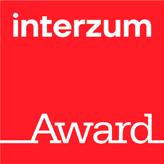
The South Australian Defence and Space Industries Minister Susan Close, when making the announcement at the International Astronautical Congress in Paris, said, “The CFU will provide vital infrastructure to position Australia’s space community to deliver the entire space value chain through the design, manufacture and launch of new space capabilities to orbit and beyond.”
The successful CUF operator will be selected in a two-stage procurement process. This EOI stage focuses on developing a shortlist of respondents with the appropriate approach to operate the CUF.
Companies that have committed to becoming partners and co-investors in the Park include global aerospace giant Airbus, Fleet Space Technologies, Alauda Aeronautics, ATSpace and Q-CTRL.
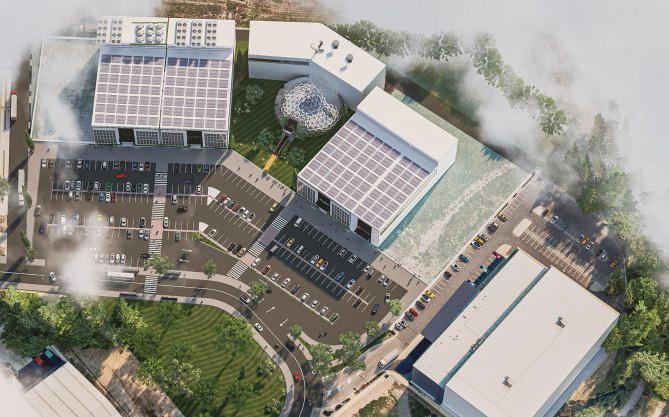
Funding for the park is split between the South
TENTE LINEA SAFETY BRAKE CASTOR SYSTEM
The Tente Linea Safety Brake is locked by default and can only be moved when the brake is actively released, ideal for slopes – no more runaway trolleys.
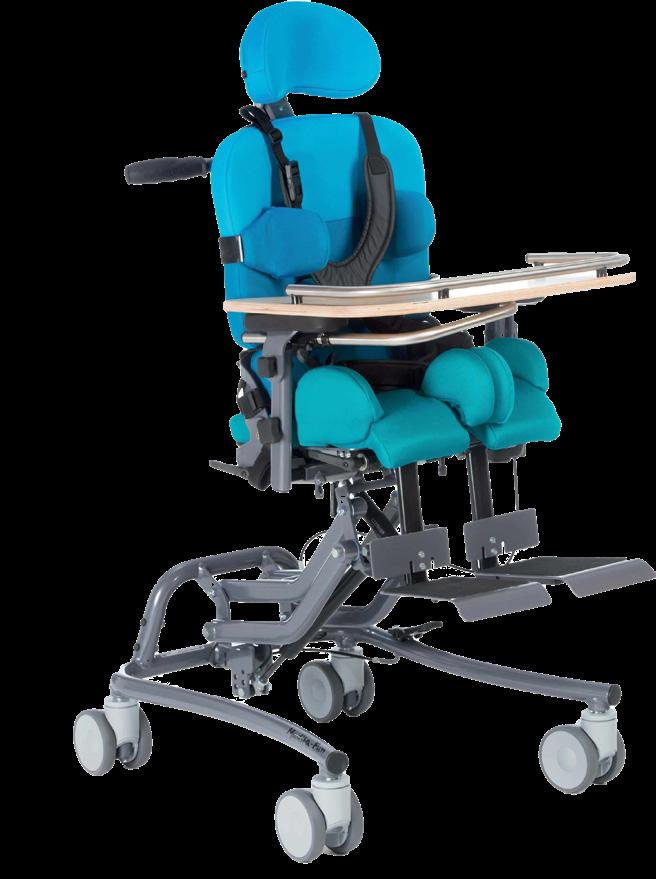
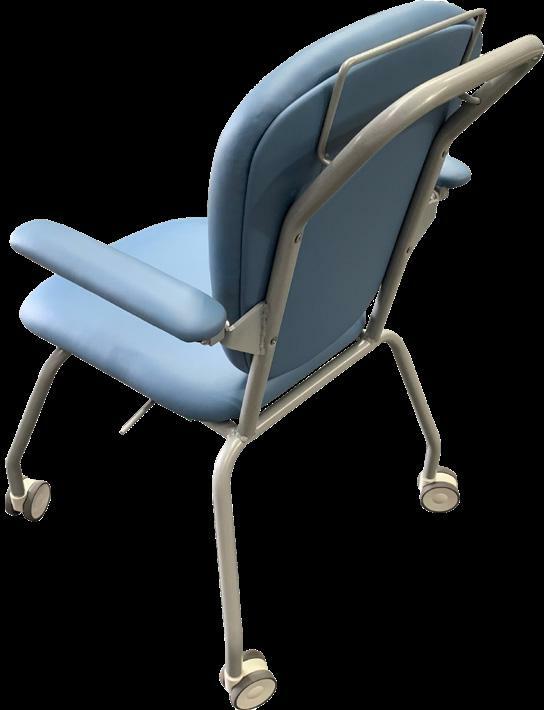
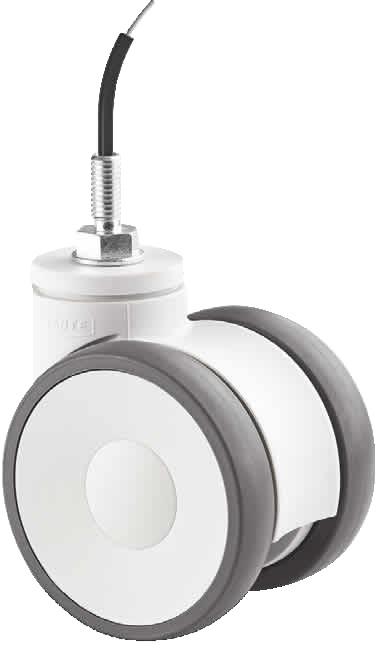


Ball bearings hold the cable wire for better mobility.
The wheel lock is permanently activated and can be release by hand/ foot lever.
The connection between the castor and the trolley is made by operator.
Australian government and the federal govern ment, with the state investing $20 million, and the federal government giving an additional $20 million for the CUF.
The South Australian Government is in discus sions with Adelaide Airport as the ideal location identified by industry due to its proximity to tradi tional aerospace companies, the Australian Space Agency and the central business district.
INDUSTRY NEWS 1300 836 831 | tente.com.au Call Tente Castors & Wheels for more information
Available in 75 & 100mm Product Quality Award 2013
Industry Update Issue 128 October / November 2022 | 47 industryupdate.com.au
New-energy vehicle giant orders Yizumi
Guangdong-based mould ing equipment company
YIZUMI has successfully won a major order from BYD, a leading Chinese new energy vehicle (NEV) manufacturer, valued at more than 300m Chinese yuan, or $64 million Australian dollars.
The winning models are mainly all-electric injection moulding machines, with clamping forces from 90 tonnes to 550 tonnes, and suitable for producing different sized interior and exterior car trims in NEVs.
This cooperation indicates the technical strength of YIZUMI and has once again been recognized by the leading Chinese NEV enterprise.
BYD, the biggest manufacturer of NEVs in China, has quickly reached global distribution over twenty years.
In addition, BYD has played a piv otal role in electronics, vehicles, new
energy, rail transport, etc.
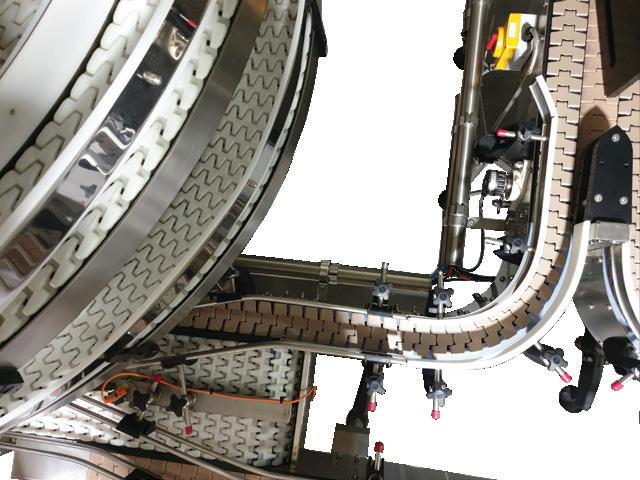
According to the data released from BYD, it sold 641,400 cumulative NEVs in the first half of 2022 with a YOY growth of 314.9%.
Moreover, BYD has surpassed Tesla as the new top manufacturer globally and entered the Fortune Global 500 2022 for the first time, demonstrating its competitive brand strength.
In July, BYD officially announced its entry into Japan, one of the major automobile production and export countries, indicating its solid confi dence and determination to compete in the international high-end market.
Soaring demand for NEVs
With the soaring demand for NEVs, BYD’s development has been con strained by its production capacity.
To address this, BYD has pro actively invested in and built new
production bases in Hubei Province and Guangdong Province this year.
In Shenzhen and Shantou cities in Guangdong, it won the bids for three pieces of industrial land for NEVs, with a total area of more than 2 mil lion square metres.
With such explosive sales growth in NEVs and the continuous improve ment and performance brought by YIZUMI injection moulding machines, the scale of sales and production demand can now be addressed.
Thus far, more than 100 YIZUMI all-electric and two-platen injec tion moulding machines have been ordered by BYD to fulfil its require ments in NEV production since 2018.
Up to 18 YIZUMI two-platen injec tion moulding machines have been delivered to BYD’s Hefei plant.
The stability and high performance
of YIZUMI’s injection moulding machines has strengthened the collaboration between BYD and YIZUMI and was key to winning this major order.
Yizumi design
NEVs are key to transforming the world auto industry to a cleaner status and YIZUMI understands this trend.
YIZUMI’s all-electric injection moulding machines adopt a modu larisation design with clamping units and various injection units that can be combined flexibly as per custom ers’ requirements.
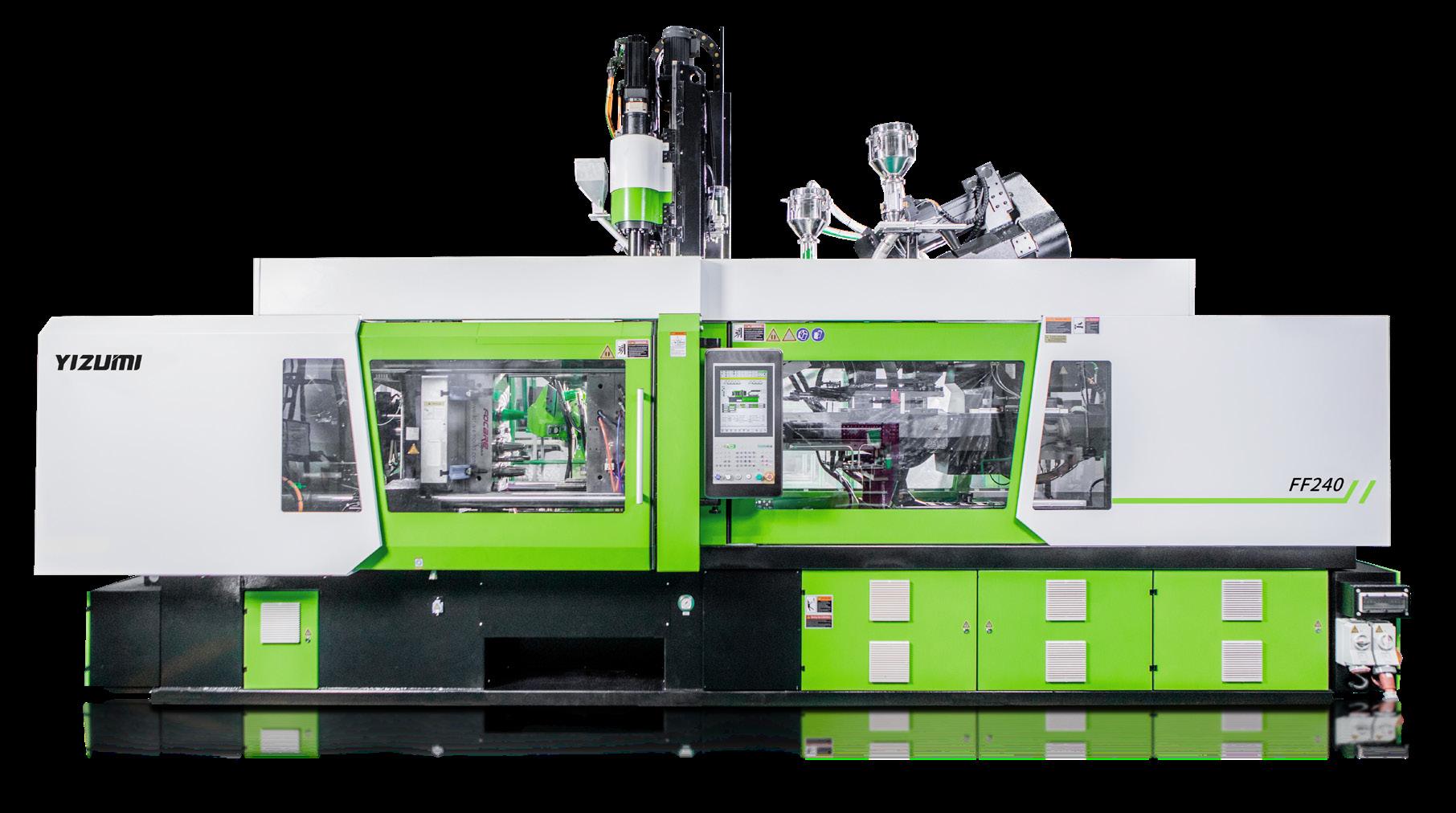
They have an injection speed of about 160-500 mm/s, and position accuracy of injection and mould opening & closing to within 0.03 mm. Advantages of high precision, high efficiency, high stability and auto mation help satisfy needs of global customers in different sectors.
With a deep and high technical level understanding of the automotive industry, YIZUMI machines fulfil specs for moulding components such as lights, air conditioners, interior and exterior components, etc.
In the future, YIZUMI is expected to enter the high-end automotive manufacturing chain and become a better cost-effective solution provider by continually introducing new pro cesses and turnkey solutions.


Sydney-based PBE-Roboplas is YIZUMI’s agent and provides a versa tile range of plastics machinery and ancillary equipment. PBE Roboplas pbe-roboplas.com.au
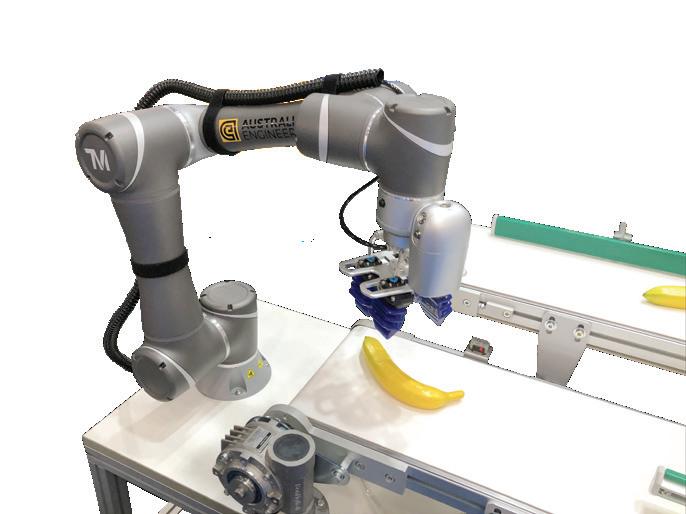
INDUSTRY NEWS
48 | Industry Update Issue 128 October / November 2022 industryupdate.com.au
Packserv reaches out to Australian SMEs with automation solutions
By Diane Alphonse, Head of Marketing Packserv
Australian manufacturing received a very real wake-up call during the Covid pandemic when it hit home hard just how depen dent we, as a nation, had become on manufactured goods from overseas.
The 1960s combination of the rise of consumerism, together with government policies that allowed Australia to become a dumping ground for imported goods, began a decline that has continued unabated until the pandemic seemed to stop it dead in its tracks.
The days of the Victa mower, the Hills Hoist and the aircraft escape chute were destined to remain relics of the past in terms of Australia’s innovation, but it now has to be said, ‘not anymore’.
Small to medium enterprises, (SMEs) of which, according to Australia’s Bureau of Statistics, there are almost three million, have led both the government and the nation to realise that we can, and will, have a manufacturing industry to be proud of once again.
In the midst of a slew of gloomy economic forecasts, Australia is still sitting pretty comfortably in com parison with the huge number of countries whose economies have been paralysed by the removal of norms beyond imagining.
tightening, Packserv’s recent growth indicates things are very much head ing in the opposite direction.
After a number of years servic ing their customers in Sydney and Melbourne, Packserv felt the need to extend their reach to SMEs through out Australia, where demand for fully automated lines rather than individ ual, modular machines is becoming far more popular.
Packserv’s COO, Ken Seddon explained, “The key to dramatically boosting Australia’s manufacturing sector, in particular our onshore FMCG packaging, lies in supporting our local SMEs and providing them with access to the equipment and technology that will enable them to be competitive against even the cheapest imported products, something that Packserv is not only supporting but actively pursuing.
“Do this, and we are not only grow ing our local and international export GDP, making us self-sufficient, but we are also safeguarding the coun try against any future supply chain disruptions that we are still managing to recover from.
“The expansion of our customer base in recent times made it an absolute imperative for us to find a means to pro vide the same level of service to Adelaide, Perth and Brisbane as customers served from Sydney and Melbourne.
“Making equipment available to Australian FMCG manufacturers to rent or buy and ensuring we can sup port them on the ground is a corner stone of our service provision.”
With Pneucube in Adelaide, P & L Maintenance Solutions in Perth, and Techsell in Brisbane, Packserv’s machines can be delivered, installed and maintained to a level that hasn’t previously been achievable.
Jim Cassidy, Managing Director of Pneucube in Adelaide, says “Packserv’s fully pneumatic produc tion line was a great incentive for us to get on board and introduce their machines to our expanding customer base in South Australia.”
management and operations meeting to discuss the best combination of machines to include in a fully automatic production line
taken them to a whole new level.
“Renting before having to buy out right is also a great service and servic ing Packserv’s Queensland client base was an opportunity too good to pass.”
Seddon added “Because the team at Pneucube, P & L Maintenance Solutions, and Techsell have years of experience, it took no time at all to familiarise them with the specifics of the machinery we provide.
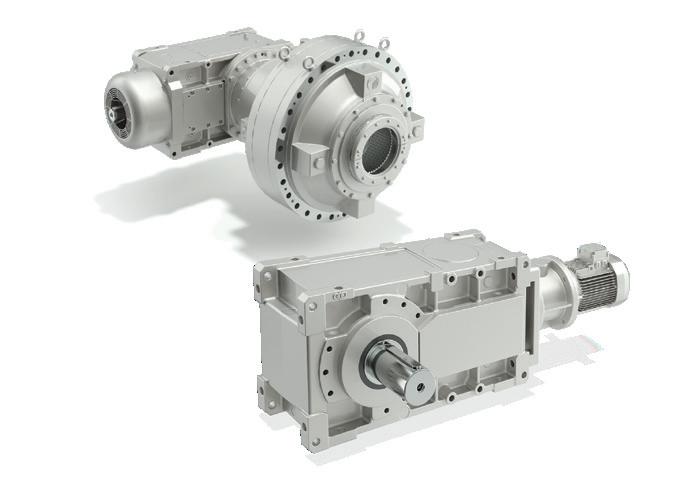

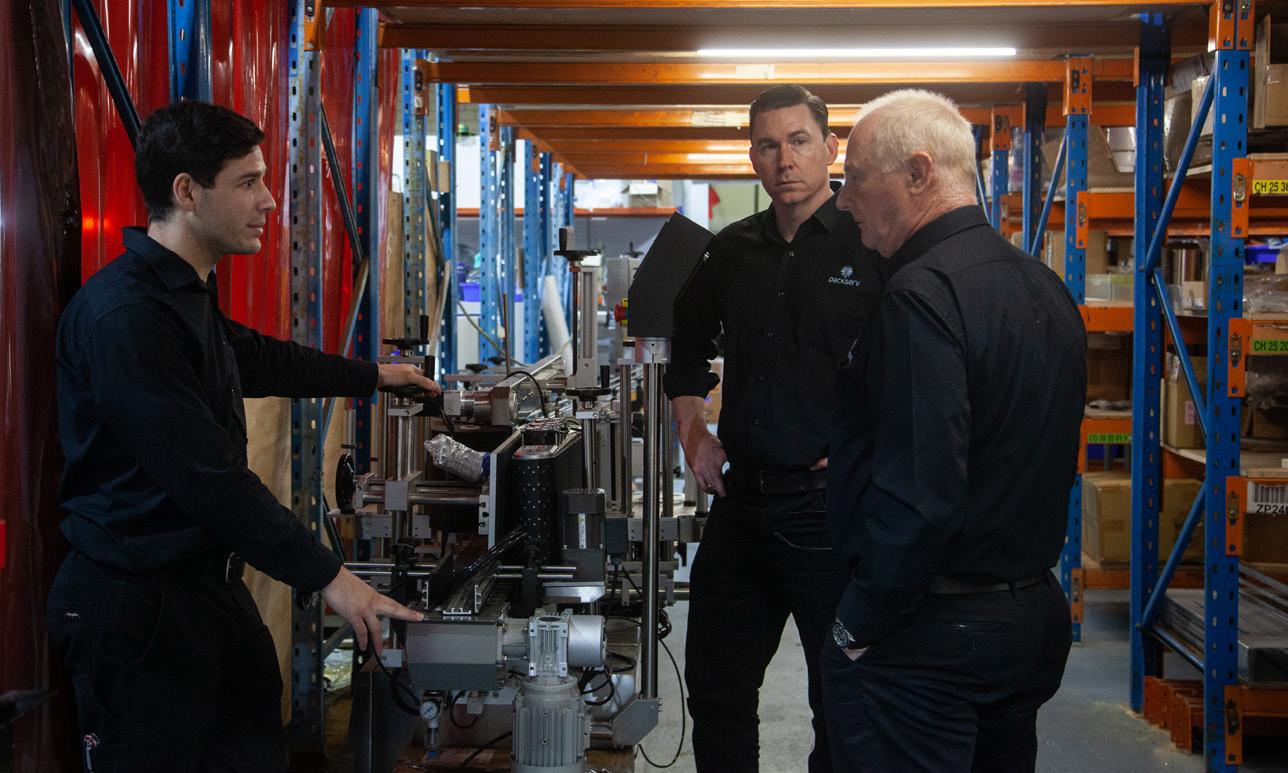
“These are sensational additions to Packserv’s service delivery capac ity and when added to our recently increased production capacity, we are some way to delivering on the
commitments we made to customers at the Auspack trade show in May.”
The months ahead may well be a little economically bumpy for Australia, but it’s clear that SMEs in the manufactur ing space are going to be pivotal in the new order that seems inevitable.
We all know about hindsight and how it helps define the retrospective obvious, but if we can at least manage to keep the lessons learned through Covid in the rear view mirror it just may help us get Australian manufac turing back to where it once was.
And, who knows, the back yard might even get an updated mower and hoist.
Supporting local industry

Here at home, there is clear evidence of the national penchant for resilience. In the manufacturing space, the signs of green shoots are there for all to see.
SMEs pivotal for manufacturing in Australia
One way to assess the true manufac turing landscape is to listen to the people who are servicing our three million or so SMEs. One such com pany is Packserv, Australia’s leader in packaging machinery, equipment and services to the SME marketplace. Rather than showing signs of belt
Peter Pudney from P & L Maintenance added, “The extent of Packserv’s range of machinery was the drawcard for us. To be able to provide such a variety of machines for rent, or to buy outright, allows the opportunity for small businesses to expand without making massive capital investment. And we’re here on the ground to help with anything that’s needed.”
Colin Yates, from Techsell in Brisbane had a similar story. “I’ve been familiar with the kind of packaging machinery that Packserv provides for a number of years, but they seem to have
PACKAGING & LABELLING
www.bonfiglioli.com/australia/en
Whatever your heavy-duty application,we have the solution for you. Put us to the test!
Packserv
Industry Update Issue 128 October / November 2022 | 49 industryupdate.com.au
Andre James, Head of Operations and Nathan Wardell, Managing Director discuss Packserv’s new valve body welding process
ROKLive 2022: Australian
“Most food and beverage com panies and the major miners use Rockwell Automation technologies, so they already have exposure to the company and its partner products,” says Wooldridge.

The ‘connected enterprise’ Rockwell Automation’s core tech nology philosophy is the ‘connected enterprise’.
“A lot of our technology is premised on the base that it’s interconnected. It’s about having common software
for companies to ensure their supply chains are better integrated, allowing for all-important agility.
“Everyone struggles at the moment. Your manufacturing site might be great but if the right prod ucts don’t turn up at the right time, you can’t manufacture.
“So you need better downstream inte gration to your suppliers to make sure you’re supplied quickly, and upstream integration to your customers.
“If you don’t have connected sys tems…that’s a signal to the manufactur ing side and a signal to the suppliers that you’re really not productive.
“If there’s suddenly a quick down turn… you might not ramp down fast enough. Or you might not pivot the product you’re manufacturing.
Compared globally, Australia is still playing catchup when it comes to pivoting, says Wooldridge.
“Everywhere we go, people are getting more agile around how they use their plants. It’s not one or two products, they’ll design a plant so it can pivot to do eight or 10 different products.
“That’s the opportunity for Australia to move faster.”
platforms and common hardware architectures.
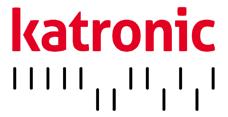
“The products we show here are the next generation or addition to that connected enterprise story, and we expect to see a 30 - 40% uptake by people looking to deploy what they’ve learned [in the lab sessions] over the next 12-18 months,” says Wooldridge.
But Wooldridge warned that Australian companies aren’t taking up new technology quickly enough, and risk falling behind in agility and productivity.
Australia lags on technology adoption
“I would say historically Australia’s been an early adopter of technology, because we’ve had a high cost of labour.
“My concern is [when it comes to] this next generation, Australia isn’t leaping in first, they’re sort of waiting and seeing.”
Wooldridge pointed out that India, despite having very low labour costs, is moving ahead in terms of digital technology adoption.

“They need to manufacture at a very high quality to be globally competitive, and they need systems that guarantee a quality outcome, and they need to have an integrated supply chain.”
Covid exposed weaknesses in supply chains and agility
Globally, Covid’s been a wakeup call
Lots of data, not enough information
Rockwell Automation believes that the next critical step for smart man ufacturing is targeted analysis of the large amount of data that’s collected in the automation process, to ensure that it captures the problems manu facturers want to solve.
While Rockwell says Australia and New Zealand have a reasonably high level of automation in their plants, a remarkable 97% of data collected
“How do you then get that extra five or ten per cent productivity to keep you globally competitive? And also, how do you use that asset you’ve got to be a bit more flexible?
“You’re running one or two products out of it, so how do you flex to have a portfolio of eight or 10 when demand changes quickly and you can get a pre mium for a new or different product?”
“People want a simple dashboard on their desktop with half a dozen key performance indicators saying, is my plant running well today?
“Australia has great infrastructure and great automation in existing
plants,” says Wooldridge, “so the next natural step is to say let’s use that and continue to innovate.”

ROKLive by Rockwell Automation showcased leading operations, main tenance, engineering and technology solutions, exemplifying how companies that adopt Industry 4.0 initiatives are better placed to optimise productivity and flexibility.
Rockwell Automation rockwellautomation.com/en-au
INSTRUMENTATION & CALIBRATION PTY LTD SPECIALISTS
www.ams-ic.com.au

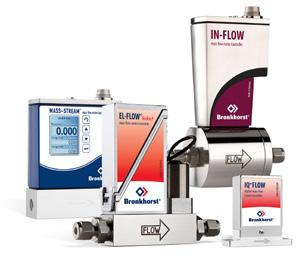

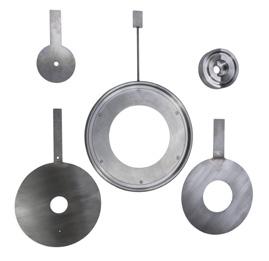

AMS have been suppliers of instrumentation and calibration equipment to all industries since 1973 representing some of the world’s leading manufacturers of the equipment in their field.
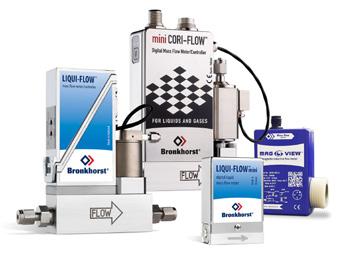
in the process isn’t used, according to Matthias Altendorf, CEO of the Endress+Hauser Group, a Rockwell partner, and this is where the automa tion giant wants to corner the market.
“It’s almost got to the extreme where once people had no data and didn’t know where to look, now they have too much data - and it’s lots of data and no information,” says Wooldridge.
“Everyone’s automated their plant ... But is it running in an optimal manner? No, no plants are.

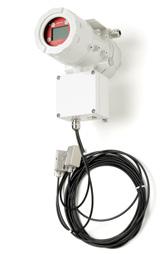
Flow Measurement Specialists www.ams-ic.com.au sales@ams-ic.com.au
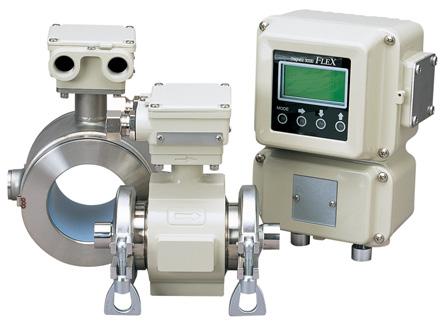
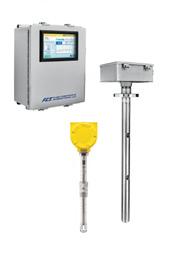
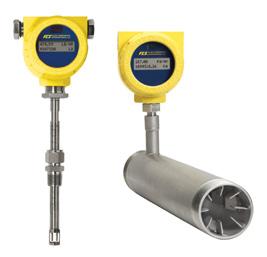
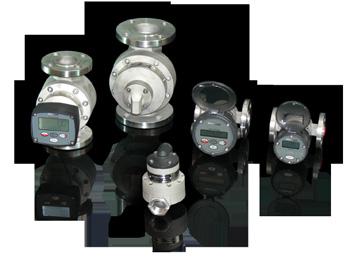
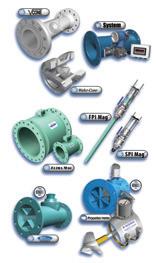
INDUSTRY NEWS
front page
Continued from
companies need to get smarter with automation
“Everyone’s automated their plant ... But is it running in an optimal manner? No, no plants are.
“If you don’t have connected systems…that’s a signal to the manufacturing side and a signal to the suppliers that you’re really not productive.
50 | Industry Update Issue 128 October / November 2022 industryupdate.com.au
Build smarter: how creating a ‘digital twin’ of your plant can cut risks and commissioning time
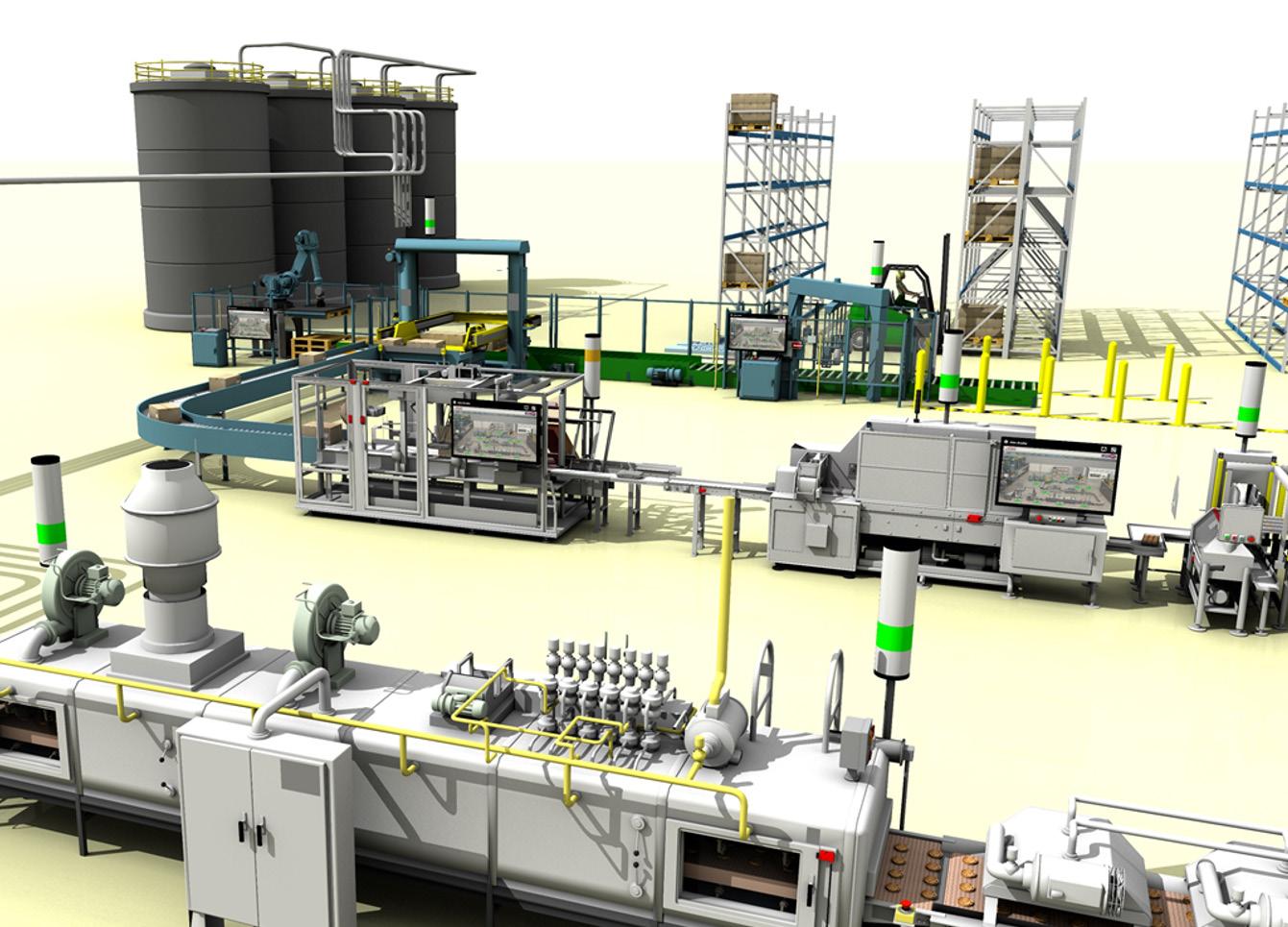 By Margie Smithurst
By Margie Smithurst
One of the innovative technolo gies on show at ROKLive was the Emulate3D, or ‘digital twin’ software, acquired by Rockwell Automation in 2019.
With Emulate3D, customers can move around in a high-fidelity 3D model of their discrete (ie, assembly of discrete parts) manufacturing and material handling systems, allow ing them to see where the risks are, what’s working, and what changes need to be made.
Tyler Phillips, Global Business Development Manager for Emulate3D at Rockwell Automation, told Industry Update that with automa tion becoming more complex and more common, companies are looking to validate the decisions they make, and to know they’re going to work.

“[The software] can give you what we call a demonstration - showing what the system is going to look like before it exists, how it functions, how it fits into an existing facility, how it merges with
says the third thing the software can do is emulation (also called controls testing or virtual commissioning).
“One of the big challenges of any system when I turn it on is, will it work
already existing equipment.
“So people can visualise: what is it I’m getting, or what is it we’re build ing, or what is it we’re doing right?
“The next thing you can do with those models is make them a more realistic twin of the system … doing what I would call classic simulation experimentation.
“That is, you can run this model over and over again with different variables and say, what happens if I add automa tion to what was an otherwise manual process? How does it impact, say, the throughput of the system? Or what if I had two stations for packing pallets instead of the one that was specified? Does it yield me anything?”
Phillips, who has worked in the simulation sector for three decades,
the way I expected it to work? When you turn a system on, whether you’re adding automation to an existing sys tem, or whether it’s a brand new facility, you not only have to worry about: did we wire it correctly, do all the safety controls work? But what about all the PLC [Programmable Logic Controller] controls, all the control logic we wrote
“So what Emulate3D allows you to do is take your PLCs that you’ve written the logic for, and via your Ethernet cable, connect it to this model as if it’s connected to the real hardware ...and start to run it and say, okay, did the logic we write make the system work? And can I inject faults? And what happens then to the logic? Simulation
dramatically reduces onsite commissioning time
An upside of the technology is the dramatic decrease in onsite commis sioning time that can result.
Phillips gave the recent example of a customer in Europe that builds huge vacuum carburising (steel hardening) plants in remote areas.
“They traditionally have about a 10 month implementation - in other words, once they start putting the equipment on site, it’s a 10 month commissioning.
“But these are now five months com missioning events, so they’ve reduced their commissioning time by 50 percent, which for them is massive savings.
“And maybe even more impor tantly, if they schedule them right, all their guys get home for Christmas, and that has never happened before.”
The size of the commissioning time is not typical in this instance, says Phillips, but the proportion is.
Phillips cites the example of a tier one automotive facility that used the software.
“One of their big challenges in building powertrains was when they had to commission the new system. Imagine turning on a new powertrain
to run this equipment - do they work?
“Until you have the equipment, you don’t know if it runs the right way. But what Emulate3D was designed to doreally what I would call its highest func tion in life - is to allow people to build models, or what some people would call a ‘digital twin’ of their system.
“So on your desktop, you have the system in a virtual environment, and you can start to do that testing before it ever exists.
“And this has become more and more pertinent in the world today with supply chain issues where people say, well, sorry, you can’t get your hardware for a year.
“The designers and the vendors are saying, what do you mean I can’t get it for a year? We have to turn it on in a year!
He points out that some companies have reduced commissioning time by even more, with one going from three weeks to three days. But he says compa nies measure the time savings differently.
“We have people who are doing 80 or 90 percent of the controls testing work that they would otherwise have done daily on site, in a lab.
“We have a customer who says every hour I spend in the lab, I’m saving a day on site.”
Reduces risks
Simulating a commissioning envi ronment not only saves time, it also means lowering the risk exposure for employees, says Phillips.
“There’s high risk time and there’s low risk time, and high risk time is really expensive.”
washing and assembly system - they had to have dozens of the engine blocks on carts, and guys with Kevlar aprons and gloves, and get them all in position and turn it on.
“Well, if two minutes later, there’s a fault in the system, it’s a case of ‘shut it down, everybody!’.
“And then they all come in, get their hoists and spend three or four hours resetting the system while they are banging out code. And they say, we think we got it fixed, we’re going to turn it on. But the same fault occurs again, what did we do wrong?
“Well, when you’re inside Emulate3D, there’s no kevlar aprons, there’s no gloves, there’s no engine blocks, it’s simply stop - I’m gonna go look at my code, I think I found the error, and then reset, run. … Oh, same fault, again, I didn’t catch it, and so on.”
not only the time saving, some times
INDUSTRY NEWS
“It’s
it’s the value of the time.”
“So people can visualise: what is it I’m getting, or what is it we’re building, or what is it we’re doing right?
“This has become more and more pertinent in the world today with supply chain issues where people say, well, sorry, you can’t get your hardware for a year.”
Emulate3D emulate3d.com Industry Update Issue 128 October / November 2022 | 51 industryupdate.com.au
TTyler Phillips demonstrating the Emulate3D software
Australia: solar superpower or failure
By Christine Powis
move from diesel to PV systems.

Australia is ahead of many countries when it comes to photo-voltaic systems: we led early developments in solar PV manufacturing as early as the 1980s with manufacturing here until 2008.
In the past 30 years, the local market has moved off grid, to residential grid, to commercial systems and now large-scale utility and industrial markets are growing.
“Despite having a vibrant and com petitive PV installation industry, the current Australian PV manufacturing industry is fragmented and small scale, with each company typically working on its own developments” says the report. “To succeed on a global scale, these emerging companies would benefit from market certainty and a coordinated effort to reach scale.”
The report warns that US and European countries are showing renewed interest in resilience and diversity of their own local PV manu facture and appear set to ramp up their production capacities.

The warning is out: unless Australia gains control of vital elements of the solar photo-vol taic (PV) cell value chain, any shift to ‘green’ export markets will depend on foreign powers, as will our local use of solar energy—a situation that could also risk our energy security.
The Australian PV Institute (APVI) has released a report Australia’s Solar Manufacturing Opportunity which warns that Australia is on the brink of throwing away this double-sided opportunity although it could be in the best position of any developed country to reach zero emissions and be a clean energy ‘superpower. The report says that, as well as missing the manufac turing and export market, we could lose control of local installation of solar panels and green energy benefits to the
manufacturing. The partners will publish a comprehensive plan to create competitive local PV manufac turing and are keen to hear from any organisation which could contribute.
In 2020 after Covid landed, the virus paralysed the work of many Australian solar panel installers who could not get imported PV modules and componentry. APVI has observed that ‘made in China’ is now the label on more than 80% of PV system components, and its authors com ment that present trade tensions with China exacerbate threats to supply.
As Chris Bowen, Minister for Climate Change and Energy told reporters in mid-2022: “ We’ve put 60 million solar panels on roofs in Australia in the last 10 yrs. One per cent of them have been made in Australia. That’s got to change. This is Australian technology; we want to see more of it made in Australia.”
PV makes up almost a third of installed gen eration capacity here and contributes about 15% of all electricity generated. AEMO forecasts that distributed PV systems will provide up to 22% of electricity by 2040 and installed capacity will go from 26GW in early 2022 to 75GW by 2050.

APVI expects demand to double by 2050 because of the rush to elec trify manufacturing, mining and construction.
“Australia will need to assess how best to exploit its own advantages if it is to re-enter the manufacturing supply chain, and seek synergistic global devel opments to diversify the supply chain.”
APVI also sees many specific opportunities and cites the Sun Cable Australia-Asia PowerLInk project and its goal to create the world’s biggest solar and storage infrastructure and the project’s status as invest ment-ready with Infrastructure Australia. Yet the APVI decries Australia’s domestic capacity to fulfil even this project’s demand as inadequate - let alone national and international demand.
country. And this is despite Australia early this year hitting a milestone of 26GW installed— more per capita than any other country at the time.
These losses would be all the greater, given Australia’s early suc cess and intellectual property in PV solar and the country’s unique posi tion to seize its advantage in cheap abundant solar electricity because of our weather, availability of land and relevant raw materials.
APVI and its members, in partner ship with University of NSW, aim to guide Australia towards a resilient clean economy with a competitive PV Australian industry by assess ing opportunities for ethical, local supply chains and in-house green
The local market, APVI notes, is worth about $4 billion per year, and is big enough to justify local supply of PV cells and panels as well as component materials such as silicon, aluminium, glass plus balancing components and PV recycling facilities.
Export markets not only exist for PV cells and panels but also refined minerals in the PV value chain, PV technologies and products, integrated PV systems and controllers. These markets will grow as more ‘green’ markets emerge and need the stamp of green manufacturing and a clean energy supply.
Added to all that is Australians’ experience in off-grid design and man agement which the report says would be a key market advantage as regional and ‘island’ power systems across the world
ENERGY, WASTE & RECYCLING
52 | Industry Update Issue 128 October / November 2022 industryupdate.com.au
“... As well as missing the manufacturing and export market, we could lose control of local installation of solar panels and green energy benefits …”

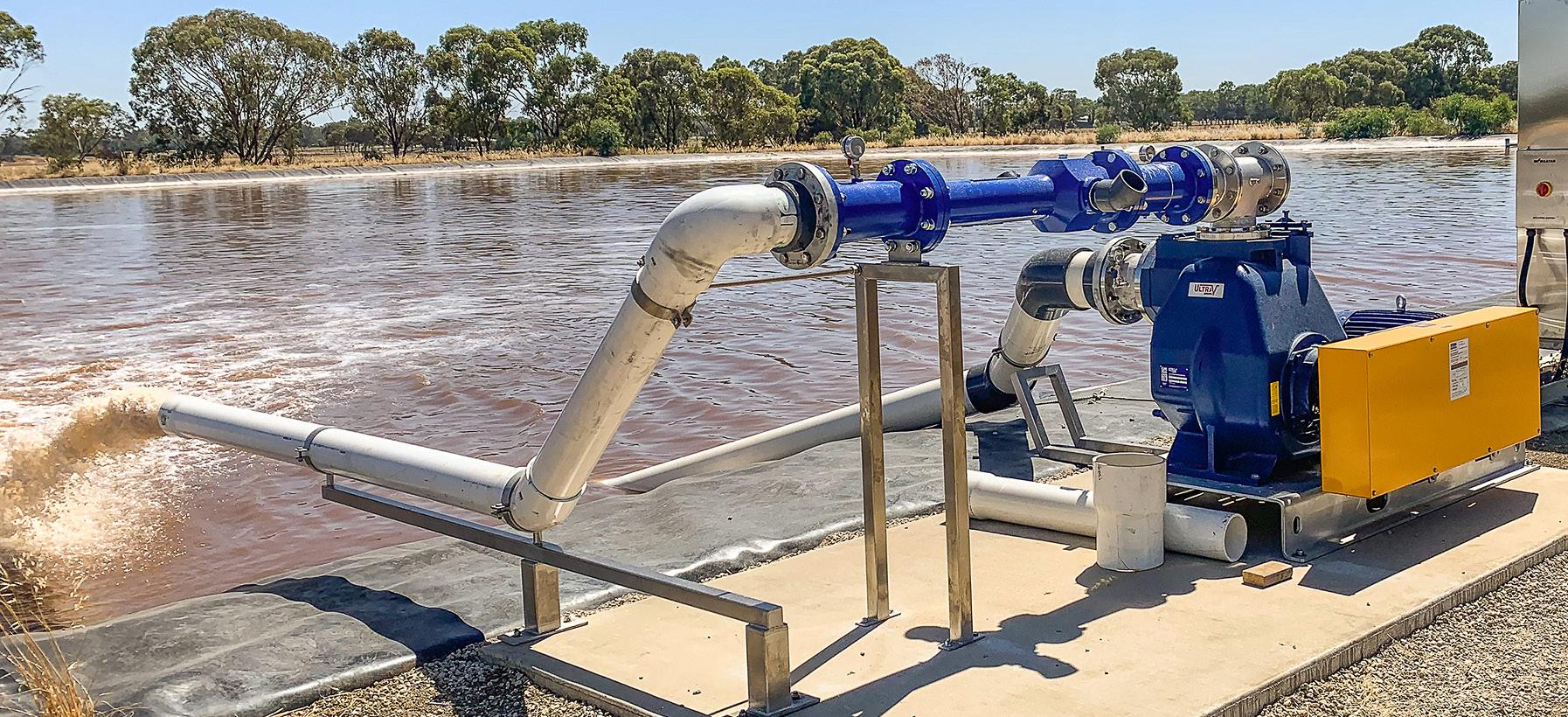
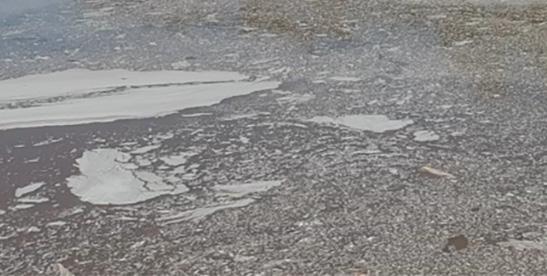

& SIMPLE WATER
Before After Much safer and much easier to maintain.
sales@HydroInnovations.com.au www.HydroInnovations.com.au RELIABLE
AERATION
Darwin to get NT’s first battery cathode manufacturing plant
The Northern Territory govern ment has signed a Memorandum of Understanding (MoU) with Taiwanese company Aleees and Perthbased Avenira Ltd, to develop and oper ate the territory’s first battery cathode manufacturing plant in Darwin.
The plant will manufacture lithium iron phosphate (LFP) battery cathode material—an economic and strategic opportunity for the NT.
The NT government estimates the project will initially create 100 jobs. Once scaled to full production, this is expected to increase to 1,000 jobs and to generate more than US$4 billion revenue annually.
The lithium cathode material is a critical active material used within an electric vehicle battery or energy storage battery which determines the capacity, safety and durability of the battery. Aleees is one of the few companies out side China with complete LFP cathode material manufacturing capability and patents for electric vehicle and station ary storage batteries.
The MoU maps out how the Territory Government, Aleees and Avenira will work together to achieve in early 2023 a final investment deci sion on a pilot facility.
Government will also work proac tively with Aleees Group, Avenira and its supply chain partners to identify a suitable site in Darwin for the facility. Once operational, the pilot facility will manufacture up to 10,000 tonnes of lithium-iron phosphate battery cathode material per year.
The MoU further supports the development of up to 200,000 tonnes per annum manufacturing facility to be built in Darwin over the next 10 years. The major facility will exclusively source phosphoric acid from Avenira’s flagship Wonarah Phosphate Project in Barkly.
Executive Chairman of Avenira Brett Clark said the MOU opens the door for Avenira to learn from Aleees about LFP battery cathode manu facturing technology to optimise the
production of phosphoric acid from the Wonarah Project.
Clark believes that, with the Wonarah Project working towards the production of phosphoric acid, and the availability of other abundant battery metals such as lithium and iron in Australia, the next step of producing LFP cathode material is a logical value-add for all parties.
Northern Territory chief minister Natasha Fyles believes the project will position the Territory as one of Australia’s advanced manufacturing hubs.”

“It will develop new skills and jobs, as well as support our objective to achieve a $40 billion economy by 2030.”
Fyles said demand and the tran sition to renewable energy, battery storage and high technology products has encouraged global organisations such as Aleees to seek diversified, reliable and stable supply chains.
Aleees Australia’s President Brandon Chang said the agreement has strengthened the world’s lithium battery supply chain.
“One of the most exciting oppor tunities created by renewable energy technologies like cathode materials is the ability to change the world’s sustainability,” Chang said.
The MoU further supports the devel opment of up to 200,000 tonnes per annum manufacturing facility built in phases in Darwin over the next 10 years.
Aleees owns more than 120 exclu sive patents worldwide, with cus tomers including investment-grade, energy storage battery and EV battery customers across Europe, the US, Japan, Korea, and Asia. Aleees co-de velops various types of LFP products with more than 40 global customers, and produces quality, low-cost, and long life-cycle LFP cathode materials.
The NT Government has indicated as part of the MOU that it will work proac tively with Aleees and Avenira to assist and advise on necessary infrastructure including water, energy, power, telecom munications, road, port and rail access and service requirements.
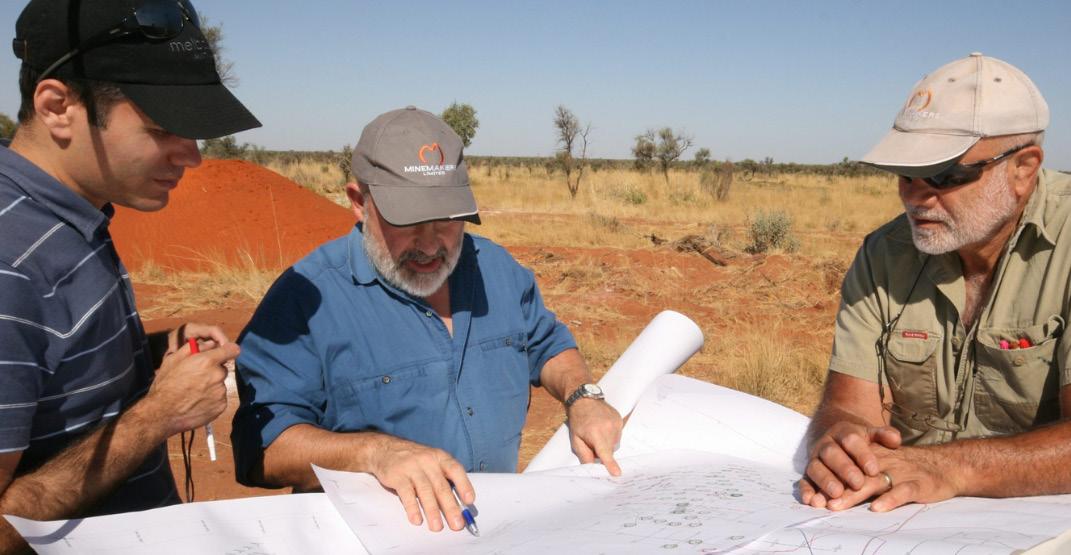
ENERGY, WASTE & RECYCLING
GENOX WASHING PLANTS. INTELLIGENT, COST-EFFECTIVE PLASTIC RECYCLING SOLUTIONS. THAT’S APPLIED THINKING. Genox Washing Plants are high performance recycling systems for rigid or flexible plastics from various sources, including materials with high contamination levels. These modular systems are capable of processing general plastics including HDPE and PET bottles, PP woven bags and PE film (post-consumer or agricultural). Call: Email: Visit: 03 9706 8066 sales@appliedmachinery.com.au appliedmachinery.com.au genoxmachinery.com.au 54 | Industry Update Issue 128 October / November 2022 industryupdate.com.au
Australia’s first all-electric aviation refueller
By Christine Powis
fuel. This latest adaptation for refu elling sees most of the truck’s energy devoted to fuel delivery rather than vehicle propulsion. SEA-Drive® power system had already been adapted to electrify functions such as hydraulics on refuse vehicles, elevated work plat forms, tippers and tilt trays, and truck cooling units.
SEA Electric’s CEO, Tony Fairweather believes the world-lead ing project sets the standard for environmental credentials and performance while showcasing the possibilities of EV technology.
“Working airside on the tarmac has its own conditions when con trasted to a delivery truck on the open road, with the energy demands of the vehicle vastly different to the norm. However, safety and reliability remain imperative.”
“There are environmental benefits in converting to EV, with CO2 and other exhaust particulates elimi nated, which makes for a healthier work environment at airports.
Australia’s first all-electric avi ation refueller, designed and engineered in Australia, went into action in Brisbane a few days ago.
Victorian firm, Refuel International, a global manufacturer of refuelling vehicles, equipment, and support services to the aviation industry, collaborated with Air bp and SEA Electric, an e-mobility solutions company which provided electric power systems for the EV.
“Refuel International is very proud to have developed Australia’s
first all-electric aviation refueller in partnership with Air bp and SEA,” said Geoff Pinner, General Manager of Refuel International.
Pinner said Refuel International has been Air bp’s builder of choice in Australia for more than twenty years and this long-standing relationship led to this achievement.
“This refueller delivers to aircraft with zero fuel consumed and zero tail-pipe emissions whilst meeting safety and regulatory compliance,” Pinner said.
The SEA Electric SEA 500 EV
refueller will be based at Brisbane Airport to lift Jet-A1 business and gen eral aircraft. It uses Lithium-Ion bat teries and digital charging mechanisms making it the first all-electric hazardous goods vehicle and refueller approved for use in Australia. Air bp anticipates that the electric refueller will reduce bp’s operation and maintenance costs compared to using diesel.
SEA Electric’s SEA-Drive® power system manages all electrified onboard pumps and functions to refuel the EV’s load of up to 16,000 litres of aviation
“This is the first step towards an airport becoming a virtual power plant. Imagine the near future when every Brisbane airport vehicle is battery-elec tric and networked to both renewable sources of energy for charging and also to the grid itself to deploy excess energy when the grid requires it. This is just around the corner.
“Transport makes up a significant portion of total emissions, with the adoption of pioneering EV technology, such as this aircraft refuelling truck, showing a great level of social responsi bility,” Mr Fairweather said.

New pump system ‘one of the best things we have done’
Regional vegetable processing plant, Oneharvest, was having trouble with a sump and submersible pump arrange ment on their waste water. The pump was a constant and costly drain on maintenance hours and production disruption because it would get blocked with the vegetable matter in the waste water. The time and costs involved in removing the chokes and replacing the submersible equipment was an issue that needed to be resolved.
The solution
OneHarvest’s Maintenance Supervisor, Mr Matt Leach, contacted Hydro Innovations Regional Manager for Victoria, Graeme Spence, to dis cuss potential solutions.
Graeme and the Hydro team share over 80 years of pump experience and knowledge, and were able to work with Matt to devise an innovative sys tem. By re-using most of their existing civil works — wet wells and inlet valves and replacing the problematic submersible pump with a rugged and reliable above-ground self-priming
pump, the chokes would occur less often and the system would be far simpler to monitor and maintain.
A Gorman Rupp T series pump, motor and base were selected to replace the existing unreliable submersible pump. The current 2” discharge line could easily be retained, and a new 2” T series pump was selected. Because the Gorman Rupp pumps are so easy to check and adjust clearances, the pumps operate better, and for longer than submers ible pumps. The result is less chokes and blockages.
The results
“It’s one of the best things we have ever done,” said Matt Leach. “We couldn’t be happier with this pump and it will become the standard we use going forward.”

Placing the pump and motor at the surface and using the excellent self-priming Gorman Rupp T Series pump, no blockages have occurred since installation. The pump has per formed so well, the plant is instigating
a policy to replace their other sub mersible pumps with Gorman Rupp self-priming pumps. Hydro Innovations hydroinnovations.com.au
ENERGY, WASTE & RECYCLING
Industry Update Issue 128 October / November 2022 | 55 industryupdate.com.au
Oxy-fuel technology helps glass producers take greater control Latest Toshiba smart gate drivers at Element14
Toshiba smart gate driver photo couplers for industrial and green energy applications enable designers to make greater savings on space and system cost.

The range includes TLP5212 and TLP5222 devices suitable for applications including inverter circuits used in industrial control equipment, power conditions in solar power sys tems and UPS, and residential home battery systems.
In the glass production process, accurate control of the molten glass flow temperature in the forehearth is crucial to achieving optimal results, including viscosity at the gob.

While air-fuel combustion and electric heating provide proven results for certain sectors, CO2 and NOx emissions regulations, combined with an increase in fuel costs, are pushing glassmakers to investigate new technologies for greater efficien cies, such as oxy-fuel.
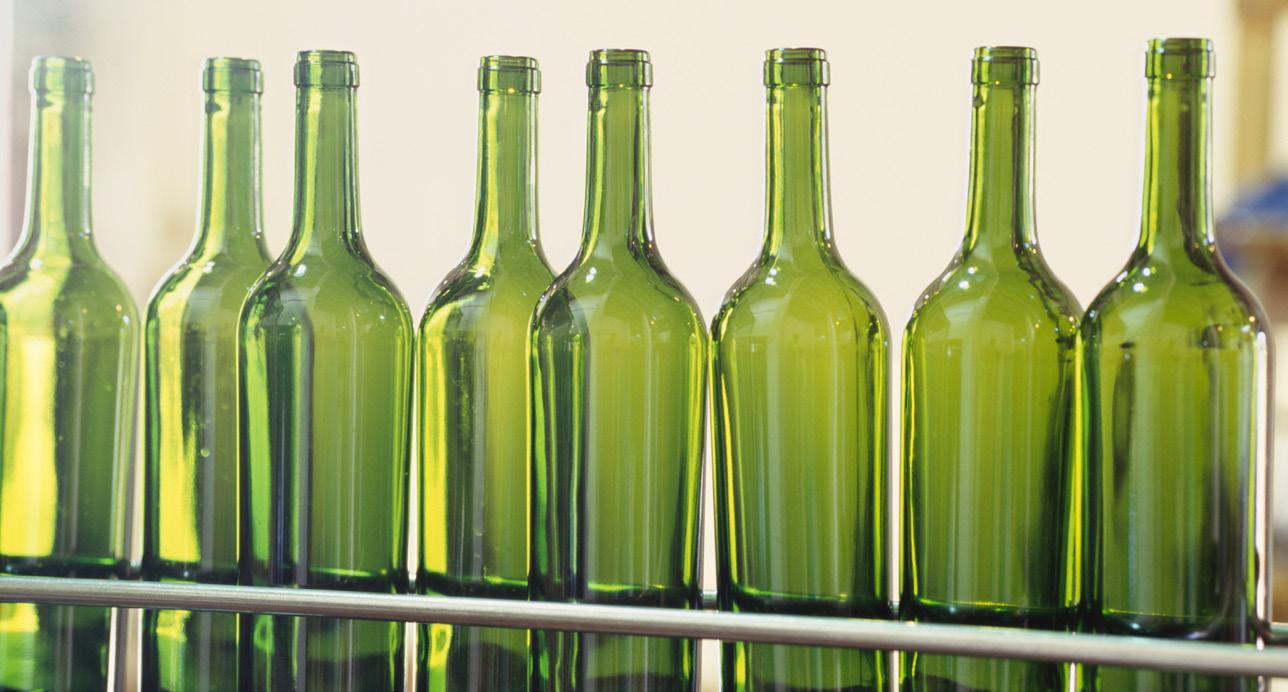
Air Liquide Oxy-Burner FH is an oxy combustion technology, specifi cally developed for glass forehearths, that provides a uniform distribution of heat by means of a constant flame length at variable power outputs.
The Oxy-Burner FH is based on an innovative method for fuel injection, with a ‘swirl’ effect to control flame length (200 mm to 300mm). The ‘swirl’ effect helps to maintain the hot spot of the flame at the same location even when the burner power is varied within a wide range. This is a patented technology that can be customized to customers’ feeders.

Another benefit of the Oxy-Burner FH design is its capability to improve and optimize heat transfer to the glass. The flame hot spot is localized

outside the refractory block by design, but not too far from the block outlet. Consequently, the maximum heat is transferred to the glass close to the forehearth walls to compensate for any heat losses through the walls of the forehearth line and to improve the homogeneity of the glass.
The burner geometry and external body can be easily adapted to a cus tomer’s refractory block to meet the desired energy profile.
Air Liquide’s customers attest to the technology’s benefits, including primary energy savings of between 60 and 70% by converting air combus tion to oxy combustion at the fore heath, as well as burner robustness, reliability and its flexibility to control flame length.
Air Liquide has a large range of burners that work efficiently with many types of glass melters, including burners that can switch from fossil fuels to hydrogen to reduce custom ers’ CO2 footprint.
“Design engineers can now enjoy enhanced availability of Toshiba’s products from Element14, coupled with rapid access to new-to-market technologies that support a wide range of IGBT and MOSFET control and power protection applications,” said Simon Meadmore, Vice President of Product and Supplier Management at Element14.
The TLP5212 and TLP5222 devices include various functions including VCE,(sat) or VDS,(sat) detection, Miller clamping and a ‘fault’ output ting function along with a gener al-purpose gate driver coupler to protect the IGBT from overcurrent generated in the inverter stage. The Miller clamping function suppresses gate potential rise and IGBT malfunc tion by bypassing the Miller current generated when the IGBT is turned off to ground. The TLP5212 requires an input-side signal to resume from shutdown protection while the TLP5222 resumes automatically after a specified time. All of this high-per formance technology is packed into a low profile 16 pin SO16L package with an operating temperature of − 40 to 110 °C.
Other features of Toshiba’s new-tomarket smart gate drivers include:
• The TLP5212 is a ±2.5A output photocoupler able to control IGBTs and MOSFETs, reliably protecting power devices from over-current and are suitable for high-speed applications requiring high levels of safety isolation and insulation (BVs = 5000Vrms). The SO16L package features 8mm creepage for use in space-limited applications.

• The TLP5222 is a highly integrated and multi-functional high-current, high-speed output control photo coupler providing ±2.5A output cur rent. Housed in a long creepage and clearance SO16L package, it includes desaturation detection, isolated FAULT status feedback, soft gate turn-off, and active Miller clamp, under voltage lockout (UVLO) and automatic FAULT status reset.
Toshiba specialises in power systems and motor control solutions and supplies semiconductor solutions for automotive, industrial, Internet of Things (IoT), motion control, telecoms, networking, consumer and white goods applications.
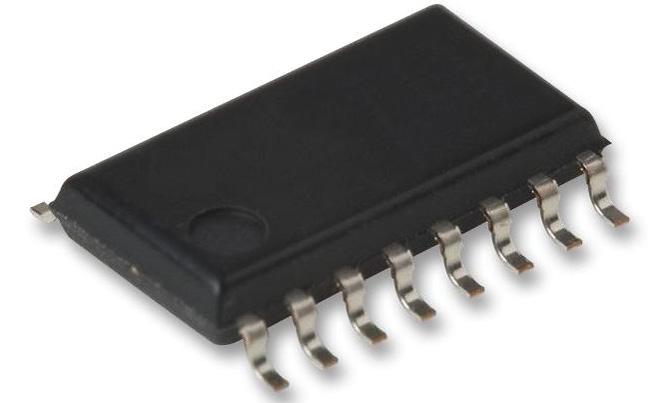
PRODUCTS
Air Liquide industry.airliquide.com.au element14 au.element14.com 56 | Industry Update Issue 128 October / November 2022 industryupdate.com.au
Keeping things moving
If you make something, you have to move it—often on a roller conveyor.
These staples of material handling play a critical role in throughput and plant optimisation. Conveyor control systems can either be centralised, using a primary PLC, or decentralised using multiple smart field level devices such as block I/O.
Centralised versus decen tralised control?
Centrally controlled plants or ware houses in which a PLC issues control commands for the entire facility are often subject to long cycle times. Even with high-performance controllers— especially when networks comprise many nodes, long cycle times can be a challenge.
When centralised control results in the PLC reacting too late, boxes or totes transported on a conveyor can jam or be controlled incorrectly. These errors require manual inter vention in the facility. However, this problem could be avoided by imple menting decentralised solutions.
Slow response vs long cycle times
As boxes or totes travel through the

system and trigger field-level devices, multiple signals are sent directly to the PLC and wait in a queue for the controller to respond. This type of sequential control can result in slower response and long cycle times.
Slower response times can also cause box/tote control errors and jams that require manual interven tion to correct the situation.
Added installation & commis sioning costs
The cost to hard-wire multiple devices directly to a single stationary PLC can be costly depending on the amount of devices and their physical proximity from the PLC.


Reduce signals to lower costs
The key to increasing the speed and accuracy of an automated roller con veyor system is to reduce the number of signals sent to the PLC. Connecting multiple IO-Link sensors and actua tors to a block that is running logic for local control is the first step toward a faster process. I/O modules with integrated logic, allow local indepen dent control.
With a response time of two milli seconds, the decentralised solution in
large plants works much faster than centralised controllers. If needed, the conveyor speed can be increased and this in turn increases the perfor mance of the entire plant.
Signal lights can also be activated quickly and easily on site. The logic control function is integrated free of charge in all Turck block I/O modules (IP20/IP67).
Since block I/O modules are mounted directly on the roller con veyor and don’t require protective housing, they save on installation costs. They also offer a more conve nient and efficient means of offline commission testing.
Access to the logic control func tions of block I/O modules is available to users via ARGEE, Turck’s pro prietary web-based programming interface.
TBEN-S & TBEN-L Block I/O Series


The TBEN-S and TBEN-L block series are ideal for decentralised control. They are incorporated in rugged and rated high-protection hous ing. Thanks to their multiprotocol capabilities configuration is easy: Once connected, the modules run
automatically without use interven tion in.
PROFINET, EtherNet/IP™ & Modbus TCP networks

For conveyor applications, IO-Link devices can be connected to the mas ter via these I/O hubs, allowing up to 16 switching signals to be connected via a single IO-Link port. This mas sively reduces the cost of wiring.
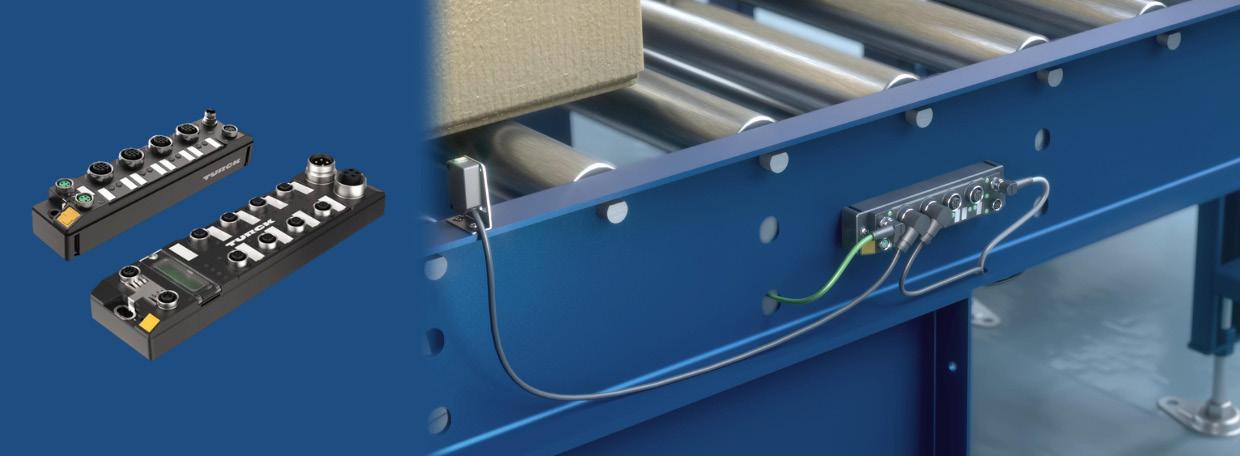
In this application, the decen tralised components process the large amount of data to identify relevant information that is communicated to the controller, thus reducing the amount of communication.
The bottom line is that choosing an on-the-machine logic controller such as the TBEN-S or TBEN-L reduces costs. The lack of protective housing on the module also saves instal lation costs, since the IP67 blocks are mounted directly on the roller conveyors.
Turck turck.com.au
PRODUCTS
Industry Update Issue 128 October / November 2022 | 57 industryupdate.com.au
New Petersham RSL club welcomes visitors via impressive Boon Edam revolving door
After nearly 100 years of serving the local commu nity, the Petersham RSL club moved to a new home this year, in a redevelopment centred on style and comfort.
Part of the design brief for the architects and developers was that the indoor spaces were comfort able for guests, particularly in reception, which can often feel the effects of wind and debris entering through open doors.
The developers chose a fully automatic Tourniket revolving door from Boon Edam Australia to make a grand first impression to the classy new club, which was recently opened by Prime Minister Anthony Albanese.
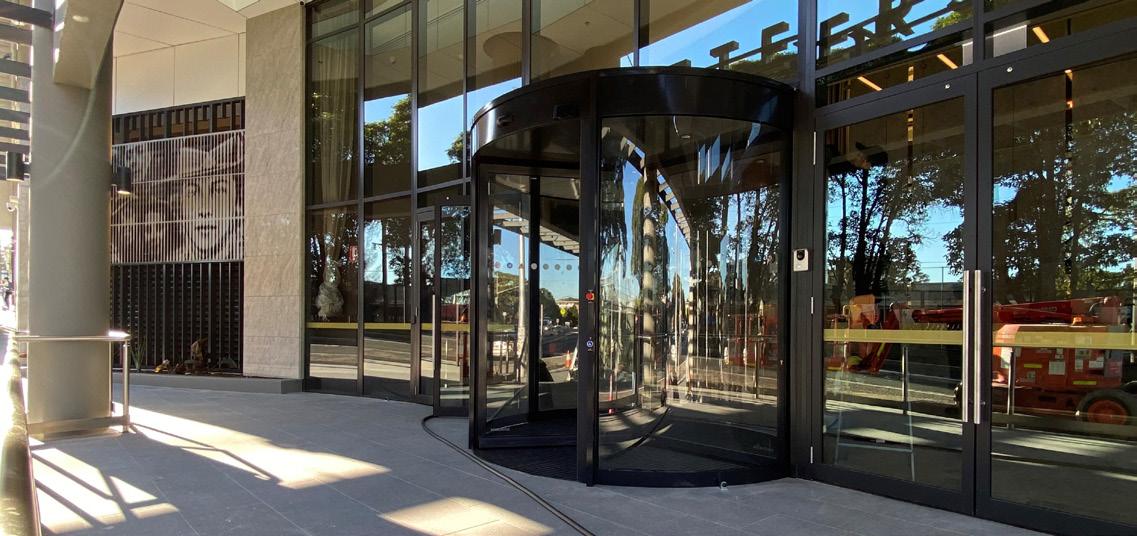
It is the same type of cost-ef fective entrance used by leading hospitality venues globally to pro tect patrons and workers against wind, weather and pollution, while also controlling traffic flow and opening up new sheltered areas for productive amenities.
Petersham RSL CEO Danny Fitzgerald said “The Boon Edam revolving door creates an impres sive entrance to our modern club, and was the perfect fit for our redevelopment. With this door, Boon Edam met two key specifi cation requirements – enhancing climate control inside the club, and enhancing personal comfort in the reception area.”
A welcoming entrance
The 3-wing Tourniket revolv ing door pictured has a height of 2,650mm and diameter of 2,800mm to allow ample room for entry and egress. It has four LED warm white downlights for a pleas ant and welcoming experience.
A powder coated black grey finish on the exterior of the door allows it to effortlessly blend in with the building’s overall
aesthetic and design.
Boon Edam Australia Managing Director Michael Fisher says that a major benefit of revolving doors is that they allow visitors and staff alike to enter into a new world inside – one that is calm, quiet, and protected against allergens and climatic extremes.
“In addition to customising the door to the club’s aesthetic preferences, we worked closely with Petersham RSL to deliver the doors within a complex installa tion involving temporary doors while other elements of the façade and reception were completed, prior to the arrival and installation of the revolving door,” he said.
Boon Edam Australia is a part of the globally leading revolving door manufacturer, Royal Boon Edam, and the door selected by the Petersham RSL is a type already used by architects, builders and specifiers for Fortune 500 companies globally and for major Australian hotels, clubs, banks, offices, legislatures, and buildings.
“The teams worked well together, and the result was an outstanding front façade and entrance, which will have a longterm impact on climate control and comfort,” said Fisher.
Always Open, Always Closed
A key benefit of revolving door systems in addition to access
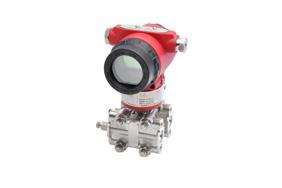
control is energy conservation, with their “always open, always closed” functionality providing lower HVAC losses while increas ing the temperature stability and comfort of people inside. These advantages have been proven in many of the world’s leading clubs, hospitals and hotels, where visi tor comfort is paramount.
“Think about how much air escapes when a sliding door opens, or how much dust, pollution, or pollen can enter the front reception area. With a revolving door, only one quadrant of air is moving around each time, providing a highly effec tive method of controlling the indoor climate,” said Fisher.
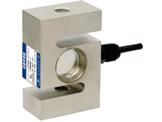
Further economy and versatil ity are provided where required by night locking entrance options including electromechanical locks that can be unlocked with a key or by means of an optional key impulse switch.
“These climate control fea tures are not always considered at the design stage, so Petersham RSL has shown great foresight by specifying these outcomes early,” added Fisher.

Move steel plates easily with tilting beam magnets
Storing steel plate vertically is an efficient use of floor space but it can be time-consuming to lift and re-orient to horizontal. Vertical storage can also challenge safe handling.
Tilting beam permanent-electro magnets provide the fastest and safest answer to both these issues — and save energy as well as time.
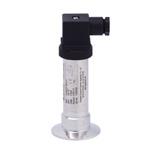
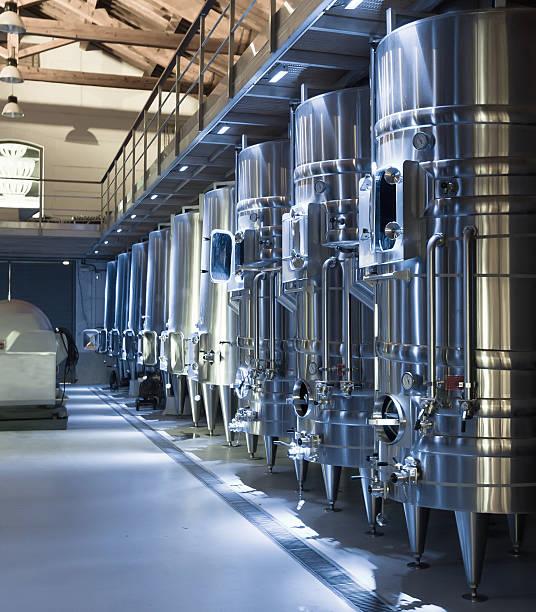


Plates as long as 18 metres weighing up to approximately 20 tonnes can be handled with Mag-Autoblok-Tecnomagnete’s Permanent-Electro tilting modules, mounted on a beam arrangement.

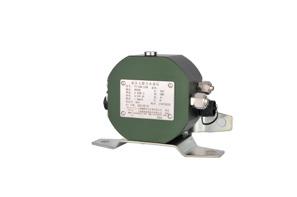

Plates can be clamped and lifted in the vertical (or shear) position and then rotated to the hori zontal position to load onto a cutting table or onto transport. Conversely, plates can be lifted in the horizontal plane and re-oriented to vertical.

Unlike conventional electromagnet systems that heat up and use large amounts of energy during the lifting cycle, permanent-electro magnet systems only use power momentarily during activate and deactivate commands. No battery back-up system is required with permanent-electro magnet systems.
Tilt beam systems can be supplied with wireless remote control that can easily be worn on a belt.
All Mag-Autoblok-Tecnomagnete systems are exclusively available in Australia and the Pacific region from Serpent and Dove Applied Magnetics.
•
•
•
•
•
•
•
PRODUCTS The SpecialiSTS in elecTronic DriveS for over 30 yearS Datafactory
Repairing of complex electronic boards, including obsolete boards that are no longer supported by vendors
Design and construction of multi-drive systems
Professional Control Systems Integrators
Repairing/retrofitting of electronic AC, DC and servo drives
Laboratory & Clean Room
Large Stocks of Spare Parts
Australia wide 24 hour service Call us on 03 9874 7737 www.datafactory.com.au
Boon Edam boonedam.com.au Serpent & Dove Applied Magnetics serpent-dove.com.au
58 | Industry Update Issue 128 October / November 2022 industryupdate.com.au
LSP series pump delivers flexible and precise fluid management
SMC Corporation’s LSP series of liquid dispense pumps accu rately dispenses fluids with high precision and stability, even at low flow rates. This compact, solenoid type diaphragm pump delivers reli able, leak-proof performance.
“The LSP series pump is proven to accurately dispense fluid volumes between 5 µL and 20 µL each time it is energised - with a repeatability of approximately 1%,” comments Guiomar Fernandez, Product Manager for SMC Corporation Australia New Zealand.
“The LSP is a truly flexible solution. The customer can easily adjust the armature stroke with an adjusting screw, to adjust the dispense volume
to their specific application needs.”
Incorporating a built-in shut-off valve that prevents leaks, this pump efficiently handles a range of fluids, including reagents and cleaning liquids, with temperatures between 10 and 50° C.

In addition, the LSP pump is self-contained and does not require priming, even if the pump is dry and there is no liquid in the suction line. “A buffer ensures the longevity of the pump’s diaphragm,” comments Guiomar.
“This pump is ideal for use in medical or biomedical analyzers, in decontamination applications using hydrogen peroxide, in ink jet printers or in applications using
Tente’s Linea automatic locking safety brake means peace of mind
The Tente Linea safety brake system (deadman brake) automatically locks by default and can only be moved when the brake is actively released - so, no more runaway trolleys. The wheel lock, which is permanently activated, can be released by hand or foot lever, giving more options.
As a result, the safety brake allows new pos sibilities for designers regarding the develop ment of mobile furniture and devices.
As well, the spring used in the braking system is not under stress when the castor brake is engaged, which is an advantage for safety.
Why use the Tente Linea safety brake (deadman brake) system?
Because the default position is brake activated, no more forgetting to acti vate the brake lever.
The deadman brake means safety:
• in environments with slopes and mobile weights, such as public spaces, book shops, libraries, restau rants and airports
• on boats or trains, where things move easily
• in hospitals, where nurses can focus on the patient instead of the device, as now they can’t forget to activate a brake lever. As well, patients can move a table or a bedside cabinet
safely by themselves
• in schools, where children won’t push around book carts like they’re skateboards.
Specific features
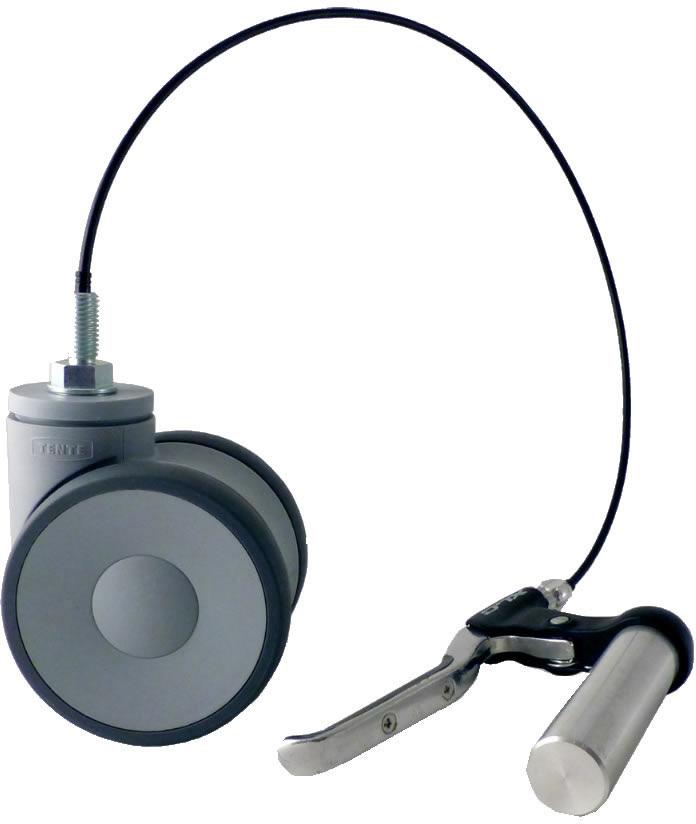
• When castors are mobile, the cable wire is activated.
• Ball bearings prevent the cable wire from twisting, which allows for easier castor swivelling.
• Ball bearings also hold the cable wire for better mobility.
semiconductors or solar cells,” elabo rates Guiomar.
Weighing just 85 grams and fea turing a compact diaphragm design, the LSP series is available in two configurations – body ported or base mounted – with a range of port and connection sizes.
“Where stable and repeatable liquid dispensing is required, this smart pump delivers an efficient and long-lasting solution,” concludes Fernandez.
SMC Corporation smcworld.com
What’s the difference between static and dynamic torque sensors?
working torque. However, dynamic working torque can only be measured by dynamic torque sensors.
Torque sensors are professional instruments used to measure and record the force and torque on a rotating system.
While normally small and compact, torque sensors are powerful and critical in their applications. Generally, torque sensors use a strain gauge applied to a rotating shaft or axel to measure the force and torque. Strain gauges are small and sensitive assemblies that can fit perfectly into a torque sensor.
There are two main types of torque sensors: static and dynamic. Static torque is easier to measure com pared to dynamic torque. Dynamic torque sensors have short response times and high torsional stiffness. Measuring range needs to be strictly monitored to avoid overload for both static and dynamic torque sensors.
Torque and force can be measured both clockwise and counter-clock wise. Both dynamic and static torque sensors are suitable to measure static
The working principles between static and dynamic torque sensors are quite dif ferent. Static torque sensors convert strain generated by force into an electric signal, which has a linear rela tionship with it. Dynamic torque sensors can measure the electrical signal of the torsion from the elastic shaft; then a strain bridge is formed on the elastic shaft via strain electrical measuring technology, to provide power to the strain bridge. After amplifying the signal, it will be transformed into a frequency signal proportional to the response.
Dynamic torque sensors are widely used in many industries, such as waste-water treatment, manufacturing, and processing operations. Machinery and equipment, cars, aircraft and ships also rely on torque sensor to support their operation. Static torque sensors are generally used in testing machines, static torque detection and other test systems.
Torque sensors plays an import ant role in so many applications. Choosing the most suitable torque sensor is vital for owners and opera tors seeking to save costs.
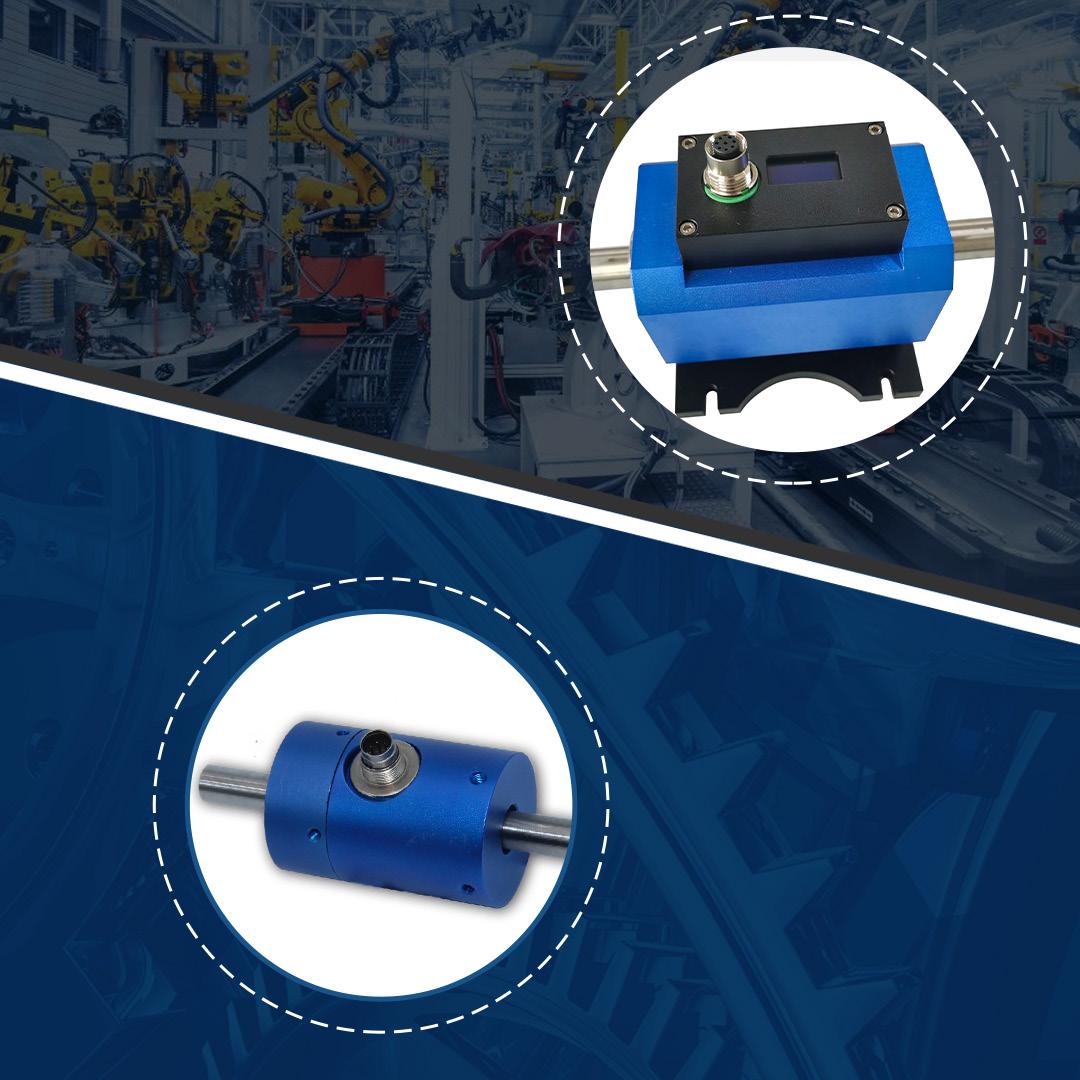
PRODUCTS
Tente tente.com.au ZHYQ Sensor zhyqsensor.com.au Industry Update Issue 128 October / November 2022 | 59 industryupdate.com.au
Keeping blackouts at bay
requested to reduce consumption by shutting down appliances in certain times or use them outside peak periods. Customers have also been warned about potential blackouts.
Current policies around demand management are focused on industrial plants and other large energy consumers, and these are governed by clear pol icies and processes. Consumers meanwhile are bracing them selves for energy price hikes and power cuts.
and don’t end up sitting in the dark.”
“Crucial to enabling these con sumer benefits will be smart meter manufacturers ensuring that meters being made now are compatible with Sense AI technology,” said Jary.
It all comes down to device disaggre gation which is referred to as the Holy Grail of energy management. It uses AI and data analysis to separate the wholehome electricity usage into device-spe cific individual consumptions.
Simple, lightweight mixers for plastic tanks
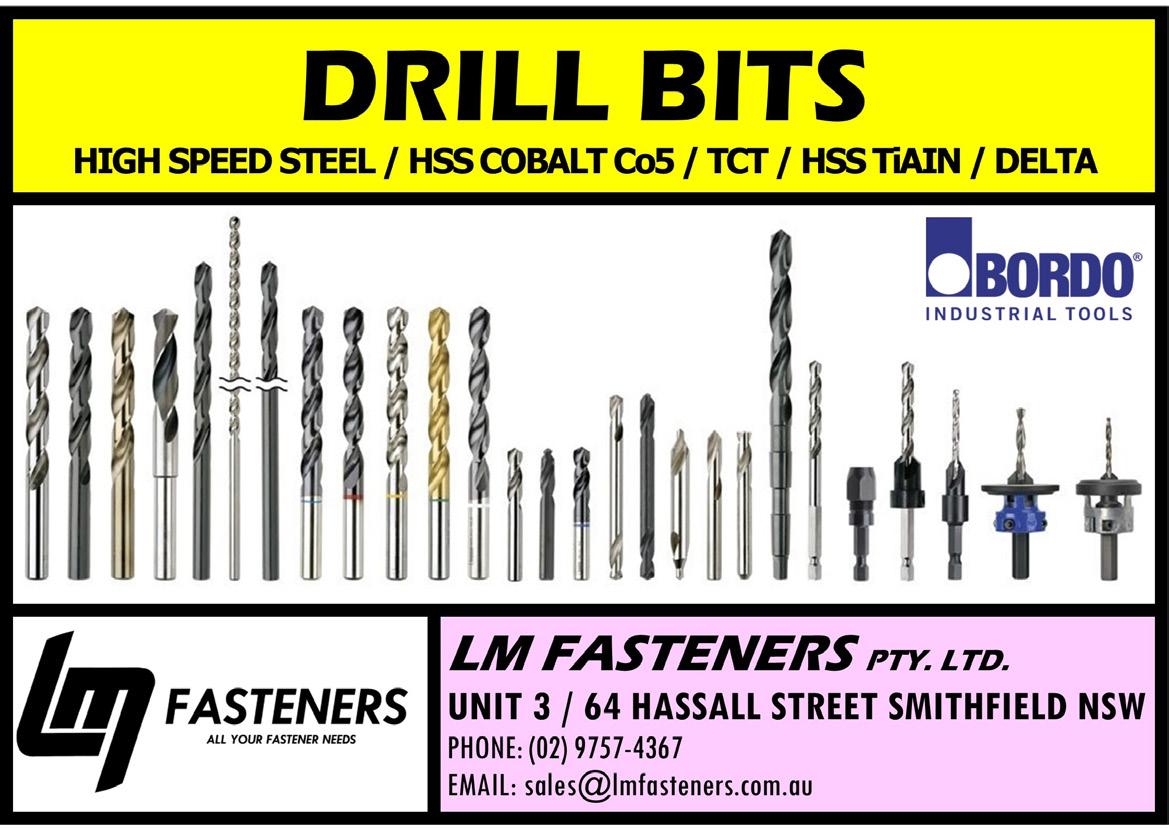
Sense AI technology incorporates high-resolution processing that can be built directly into smart meters. Sense technology can give consumers real-time insights into energy usage down to the individual device level
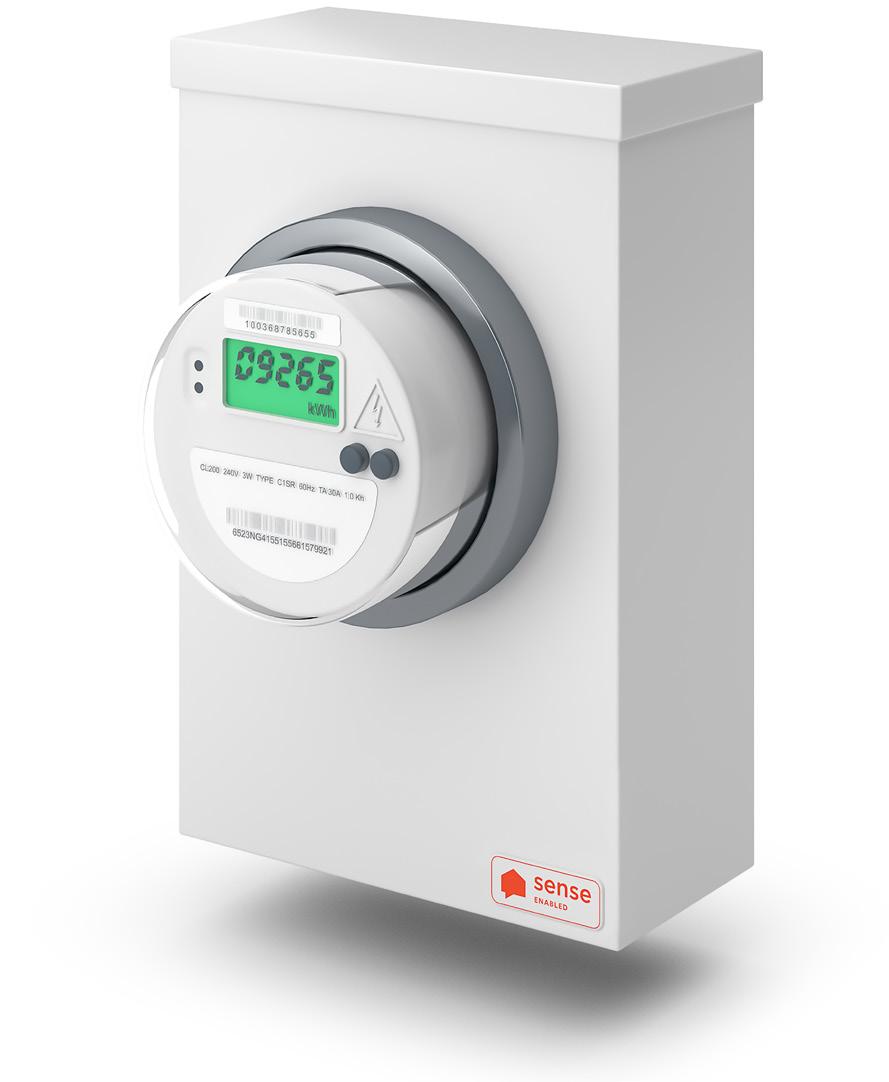
On June 15 this year, Australian Energy Market Operator (AEMO) suspended trading across the country’s east coast electricity power network as it faced an increasingly volatile situation. AEMO was set up in 2009 and this is the first time the oper ator took such drastic action across the entire network that it manages.
There has been much debate and discussion on the causes ranging from the onset of winter to the war in Ukraine and maintenance shutdowns at power stations.
While policy makers, regulators and power generators grapple with the situation, consumers are being asked to better manage their consumption. The conversation is evolving from generat ing more energy to better managing the energy we produce.
With domestic consumption, energy transmission terminates at the prem ises of the end consumer. In the current situation, a lot is being asked of this often-neglected group. They are being
Fortunately, technology has advanced and, when imple mented, can give consumers more visibility and control over their energy usage. A good example is Sense, which has developed AI that runs on smart meters. Over two million Sense-enabled meters have been announced in the US and this technology is now coming to Australia. Their machine-learning algorithms can assess domestic elec tricity right down to the appliance level in real time.
According to a directions paper released by the Australian Energy Market Commission (AEMC), only 25 per cent of premises in New South Wales, Queensland, South Australia and the ACT have a smart meter installed. The paper recommended accelerating the rollout of smart meters for households and small businesses, because digital smart meters will be a vital tool in the grid of the future.
If AEMO or the utilities put out a call to reduce power usage, Sense-enabled consumers know exactly what to turn down to have the greatest possible impact on their demand at any moment.
“The highest consuming discre tionary devices can be identified, and consumers are able to turn off the appliances that have the greatest immediate impact on load, without disrupting their lives,” explains Michael Jary, Managing Director –International at Sense. “Consumers are not left to work it out themselves
Studies have shown that real time device disaggregation increases demand side flexibility. Senseenabled homes were able to shift 4.5 times more load than homes that didn’t have it. Sense can even measure and verify that the reduction action took place as expected.
A recent study commissioned by the AEMC found that 73% of the respon dents are interested in working out ways to save money on their electricity bill by changing how and when they use electricity. Their main way of lowering bills is to turn off lights, avoid leaving appliances on standby and looking for more efficient appliances.
As Sense can analyse high-resolu tion energy data, its benefits extend outside the home. For example, tiny voltage sags in the grid can be identi fied and are indicative of vegetation brushing overhead power lines.
Similarly, corrosion in transformers or other grid assets are apparent when applying Sense AI to high resolution energy data. Across a fleet of meters, it is even possible to geo-locate the source of the error by comparing those meters that experience the same anomaly against a network map.
To properly benefit from real time device detection and the potential of AI, Australia will need to ensure that the next generation smart meters become intelligent hubs for the home and form the basis for a flexible, cleaner grid.
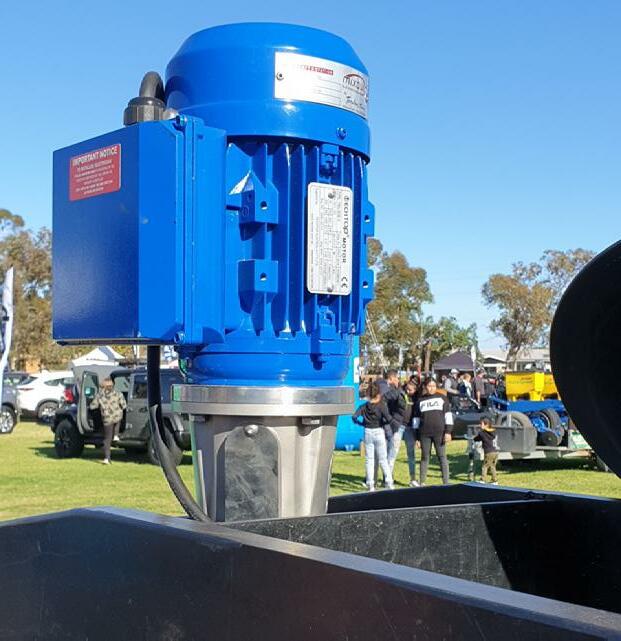
Mixquip locally produces a range of compact, lightweight mixers that are ideal for polyethylene tanks.
These high efficiency mixers can be used in plastic tanks with 500 litre to 10,000 litre capacity and can mix all types of chemicals, fertilizers, premix solutions etc.
All mixer components inside the plastic tank are 316 stainless steel and single phase, and 3 phase motors are IP56 minimum.
Applications
The Mixquip® 75 series range can be used for a diverse range of processes. Some examples include:
• PH adjustment in wastewater applications
• polymer additions prior to Direct Air Flotation (DAF)
• blending chemicals with waste water
The Mixquip® range of top entry mix ers has been utilised across a broad range of industries and applications, including food, beverage, wine, chem ical, dairy and wastewater.
Each application incorporates precise selection to balance power with efficiency while offering effective mixing.
PRODUCTS
Mixquip mixquip.com
Sense sense.com
Fluid mixing equipment company
australianmade.com.au Buy Australian than right now It’s never been more important to 13439 AM Industry 113x66mm v1.indd 1 13/10/22 4:17 pm 60 | Industry Update Issue 128 October / November 2022 industryupdate.com.au
Australian Manufacturing Week 2023 (AMW) will be held in Melbourne next May.
AMTIL’s long-standing advanced manu facturing and machine tool expo AMW 2023 will take place at Melbourne Convention & Exhibition Centre (MCEC) from 7-12 May, 2023.
They’ll be back — AMW in Melbourne ARBS 2022 draws 7,400
As the largest event covering manufacturing and engineering scheduled to be held in this country, AMW 2023 promises to stand out on next year’s Australian manufacturing industry calendar.

With significant advanced interest from indus try since AMW was first announced last July, the opening of bookings marks a major milestone in preparations for the show.
“Pent-up demand caused by the pandemic has highlighted the industry’s desire for face-to-face events,” said Kim Banks, AMW Exhibition Manager and Head of Events at AMTIL.
“So prospective exhibitors may find themselves jostling for a position since the exhibition is already over 80% sold.”
AMTIL represents manufacturing technology suppliers and users within the precision engineer ing and advanced manufacturing sector. Since its establishment in 1999, AMTIL has engaged in initiatives aimed including advanced manufactur ing and machine tool exhibition Austech and AMT Magazine.
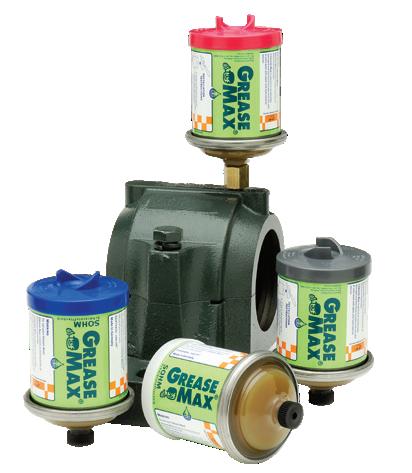
Positive feedback on ARBS 2022, is streaming in from exhibitors and visitors alike, having exceeded expectations for attendance.
Over 80% of exhibitors polled about the inter national air conditioning, refrigeration and building services trade exhibition said they had achieved their objectives for exhibiting at ARBS in Melbourne held on August 16-18 .
With a huge 15,000m2 of exhibition space that hosted 216 stands, visitors were able to see the latest in HVAC&R and building services offerings.
The official visitor numbers, not including staff or exhibitors, was 7,408. The overwhelming majority (84%) of attendees told the organisers’ poll that they had discovered suppliers or products they would purchase within the next two years.
“ARBS helped me find great new sources and products I was not aware of,” said one visitor. “Suppliers who shared their experiences gave me new ideas and solutions. It also opened my mind to new technologies and methods to help develop both myself and the business.”
ARBS hosted exhibitors from China, India, Korea, Thailand, Turkey, United Arab Emirates and the US. Visitors also made the journey from far and wide — from China, Indonesia, New Zealand, Italy, Japan, Malaysia, Netherlands, Papua New
Guinea, Singapore, South Africa and Sri Lanka, Belgium, Canada, Denmark, Finland, Germany, New Caledonia, Oman, Philippines, South Korea, Türkiye, and United Arab Emirates.
Running alongside the exhibition was a semi nar program of panels and guest presenters who informed and updated the industry. Seminar attendance was also impressive, with 1,284 tickets booked and many sessions sold out.
The Exhibitor Presentation Theatre was also a hive of activity with exhibitors presenting prod uct and technology information, updates and demonstrations.
The ARBS 2022 Industry Awards, which honoured high achievers, was held at the Crown Palladium on August 17. The evening was hosted by Australian media personality, Andrew Daddo, and the gala event saw high demand for tickets.
“ARBS is thrilled to see visitors returning so enthusiastically to our exhibition and supporting programs.” said ARBS Chair, Professor Tony Arnel. “Overall, a phenomenally successful three days celebrated our diverse industry and the best it has to offer,” Arnel added.
ARBS 2024 returns to the International Convention Centre (ICC) in Sydney in May 2024, with exact dates to be confirmed.
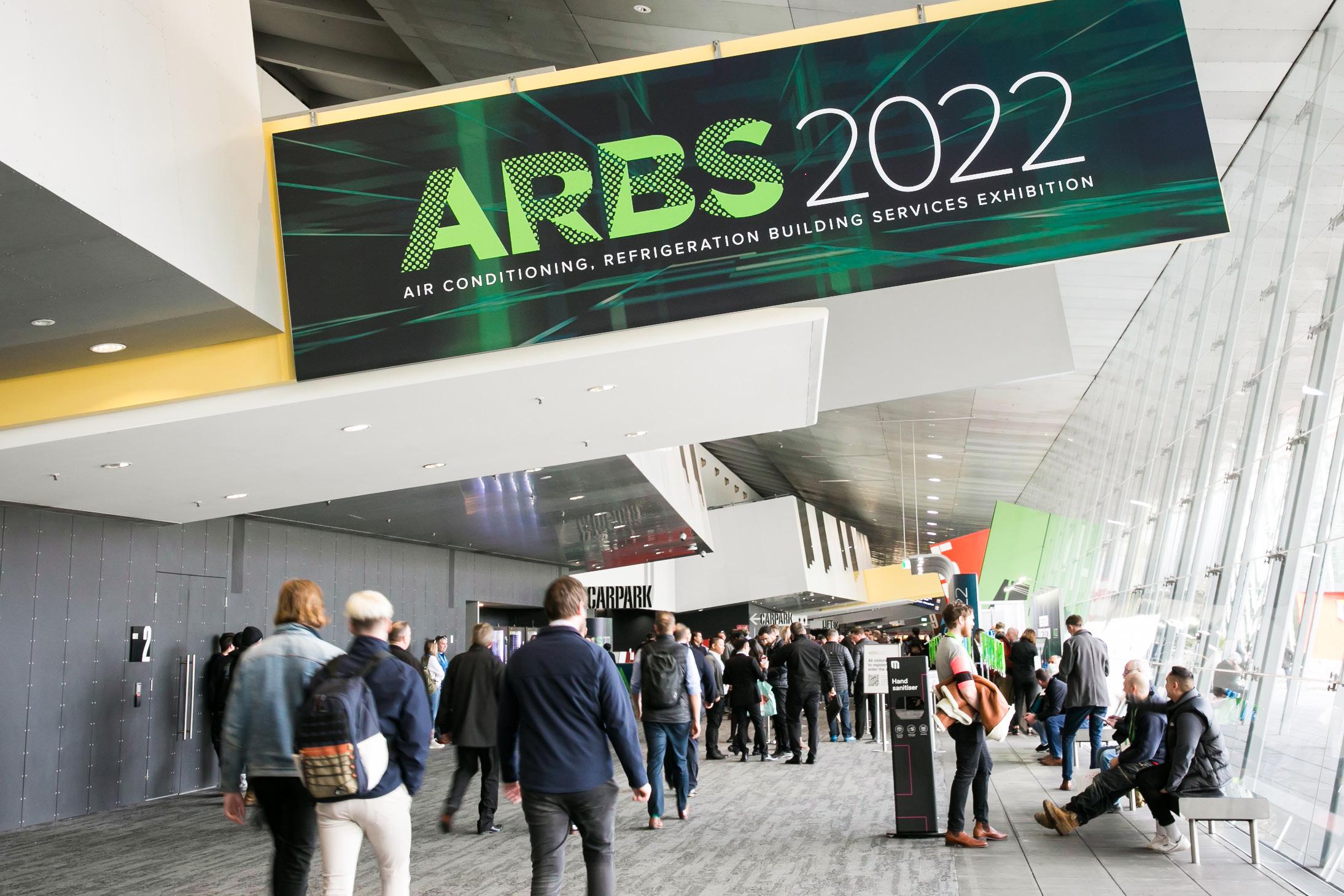
EVENTS
AMTIL australianmanufacturingweek.com.au
Industry Update Issue 128 October / November 2022 | 61 industryupdate.com.au
Waste Expo 2022 - Free waste and energy double act: insights into Australia’s sustainable future
Two events, Waste Expo Australia 22 and All-Energy Australia, will be held concurrently at the Melbourne Convention and Exhibition Centre (MCEC) over two days, October 26 and 27.
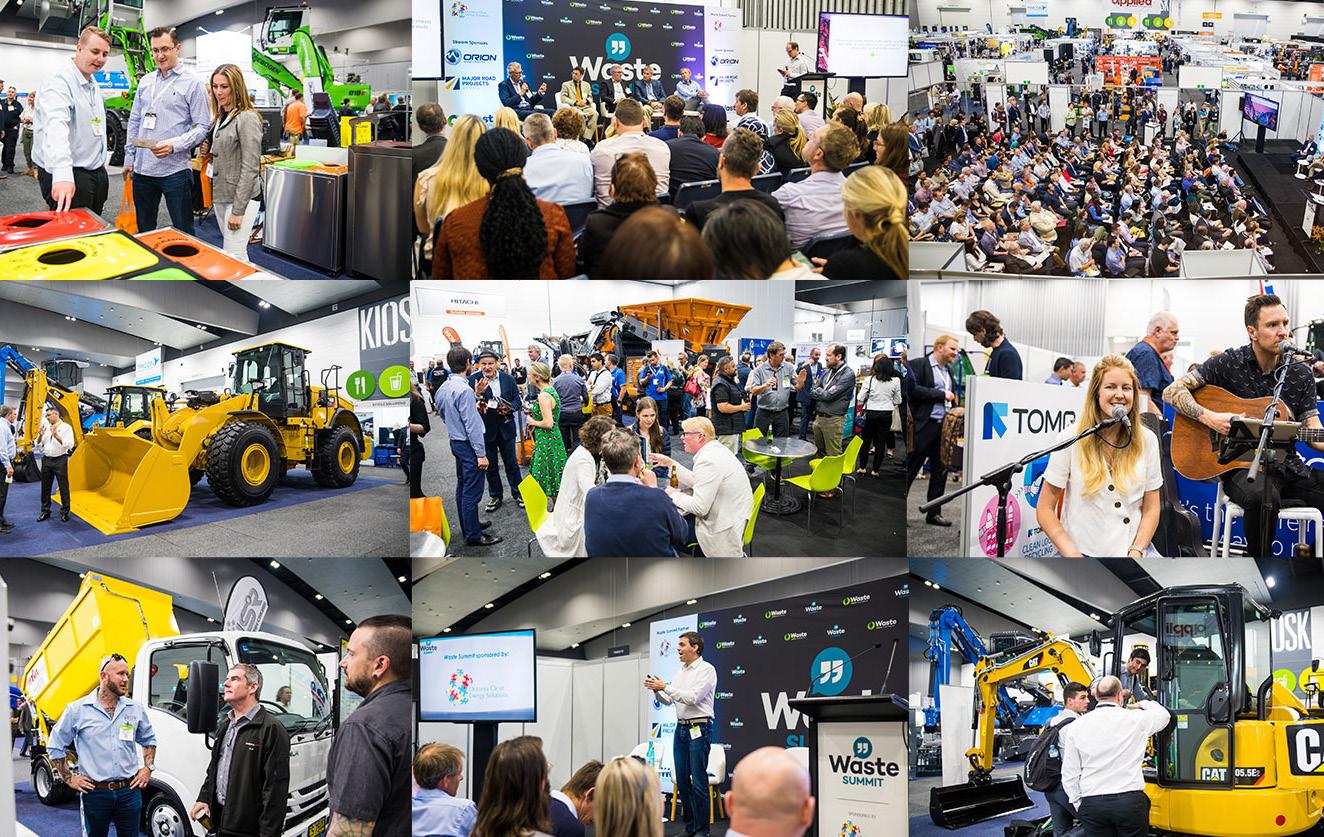
Speakers at Waste Expo include legislators, local councils, recycling and waste management experts. They will present the latest approaches to waste and recycling including munici pal initiatives, as well as commercial, industrial and demolition waste man agement and resource recovery—and how these approaches build a circular, national economy.
Lily D’Ambrosio, Minister for Energy, Environment and Climate Change, Victorian Government, will launch the conference with
an overview of the Victorian Government’s ten year plan. Followed by keynotes from Interim CEO Sustainability Victoria Matt Genever, and, speaking for the first time is the new Head of Recycling Victoria, Tony Circelli.
Yet the Waste Expo Australia Conference has a wider view that goes national and beyond as insights come from 100 industry experts and 60 individual sessions. On day one alone, topics include digital innovation for the global circular economy, com modities not waste, award-winning glass recycling, waste-to-energy solutions, recycling and transport infrastructure, and how to embed circular economy from the start of a construction project.
Upcoming Events
2022 2023
Respirable Crystalline Silica Online Symposium and Workshop (Free)
19 October 2022 Online bigmarker.com/greencap/RCS-Symposium
Waste Expo Australia 2022
26 to 27 October 2022
Melbourne Convention and Exhibition Centre wasteexpoaustralia.com.au/en-gb/visit.html
The Safety in Action Conference
26 to 27 October 2022
Rendezvous Hotel Melbourne informa.com.au/registration/conference/ safety-conference/
All-Energy Australia
26 to 27 October 2022
Melbourne Convention and Exhibition Centre all-energy.com.au/en-gb/visit.html
2022 National Work Health and Safety Colloquium
8 to 9 December 2022
International Convention Centre, Darling Harbour, Sydney centreforwhs.nsw.gov.au/ about-us/2022-national-colloquium-for-whs
austech
9 to 12 May 2023
Melbourne Convention and Exhibition Centre amtil.com.au/Austech
Australian Manufacturing Week
9 to 12 May 2023
Melbourne Convention and Exhibition Centre australianmanufacturingweek.com.au

Electronics Design and Assembly Expo
10 to 11 May 2023
Melbourne Convention and Exhibition Centre electronex.com.au
Workplace Health and Safety Show
31 May to 1 June 2023
Brisbane Convention & Exhibition Centre whsshow.com.au
Energy Next
18 to 19 July 2023
International Convention Centre, Darling Harbour, Sydney energynext.com.au
Foodpro 23 to 26 July 2023
Melbourne Convention & Exhibition Centre foodproexh.com
CeMaT Australia
25 to 27 July 2023
The Dome, Sydney Olympic Park cemat.com.au
Modern Manufacturing Expo
20 to 21 September 2023
Sydney Showground, Homebush, Sydney cemat.com.au
Workplace Health and Safety Show
20 to 21 September 2023
Sydney Showground, Homebush, Sydney whsshow.com.au
Safety and Health at Work
27 to 30 November 2023
International Convention Centre, Darling Harbour, Sydney safety2023sydney.com
ARBS 2024 30 April 2024
International Convention Centre, Darling Harbour, Sydney arbs.com.au
EVENTS
62 | Industry Update Issue 128 October / November 2022 industryupdate.com.au
Video Production Highlights
• Hosted by national news presenter Tim Webster
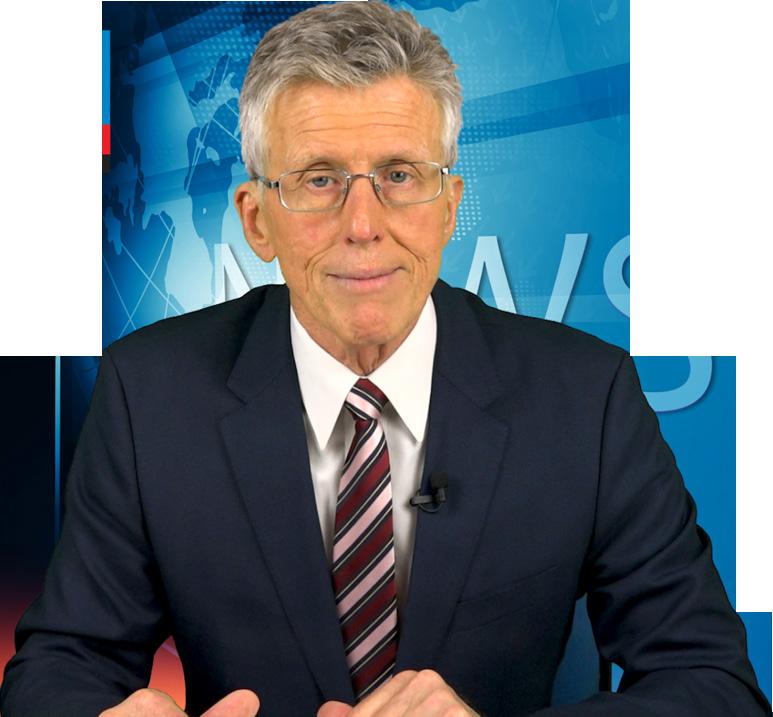
• Filmed in a 6pm nightly news broadcast style



• Creating a high level of integrity for client’s products and services

• Average video length of 1 - 2 minutes


• Individual client playlists, all videos in one place
• Videos on website or any social platform

• All magazine advertising includes a QR code that links back to website
Product Video Packs
Companies now need good video content, buyers expect it and will just go elsewhere if they don’t have something interesting and informative to watch.

More importantly it increases sales by 81% With over 1.5million impressions and 600,000 views in less than 12 months, our videos are getting high rates of engagement. Each video has an accompanying story published online, in e-news and in the magazine (with a QR code) to integrate all media options.
Important Online Video Statistics

In 2022, online videos will make up more than 82% of all consumer internet traf c — 15 times higher than it was in 2017 (Cisco). 43% said video was made necessary by new challenges, including the coronavirus pandemic.
Viewers retain 95% of a message when they watch it in a video, compared to 10% when reading it in the text (Insivia) 22% said they had become clearer on the ROI of video and this had given them con dence to invest.
Source : wyzowl.s3.eu-west-2.amazonaws.com

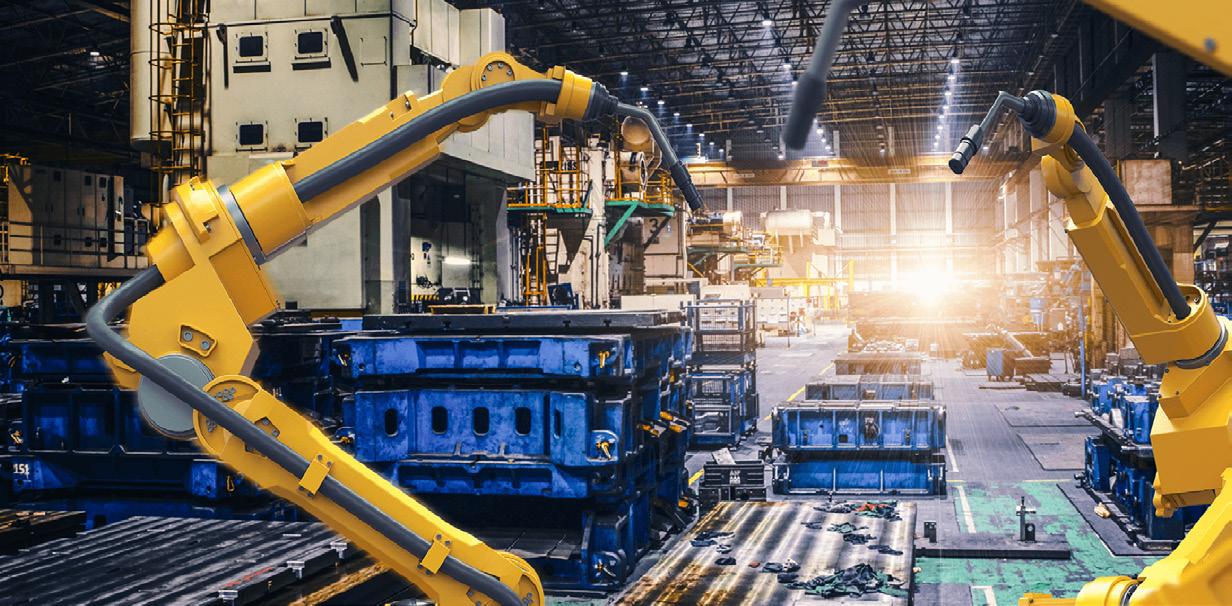
Since its launch in 2017, Industry Update Video has been a remarkable success, with content spanning the whole of the manufacturing industry.

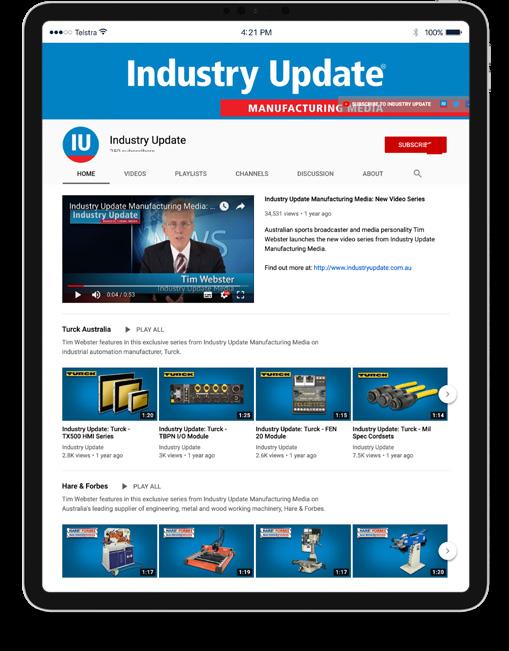
Circulation of 19,233 and readership of 76,932 Audited by Number one
publication in
industryupdate.com.au 02 9439 1288 / sales@industryupdate.com.au
PRODUCTION Product Videos / Case Study Videos / How To Videos Manufacturing Current A airs
NEW 2-Part
manufacturing
Australia
Some of our Industry Update Video clients VIDEO
Videos
Documentary
2,236,395 impressions 978,700 views Industry Update youtube.com/c/IndustryUpdate
Tim Webster Australian news presenter (Channel Ten, Foxtel, Sports Tonight, 2UE And 2CH)





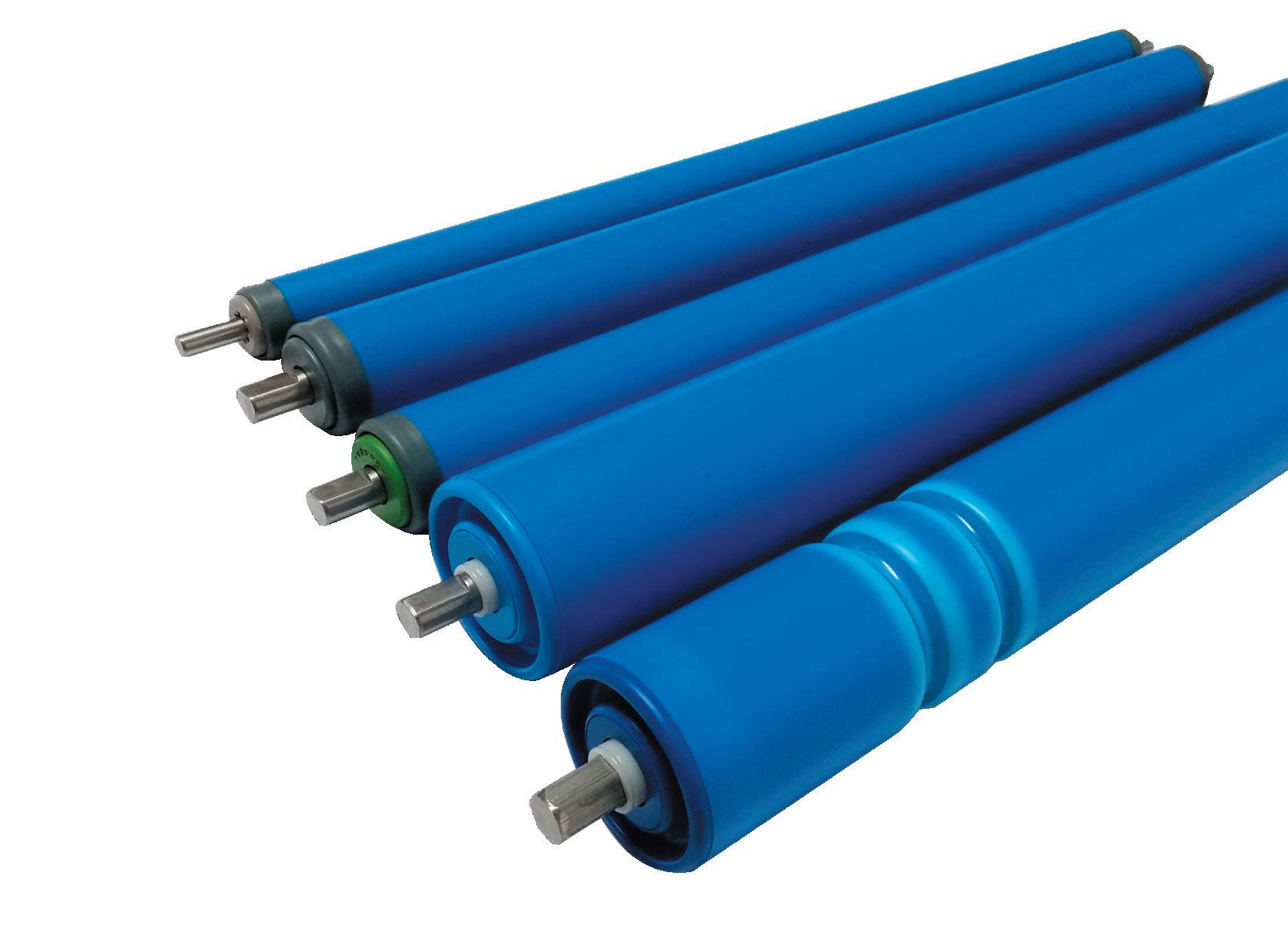

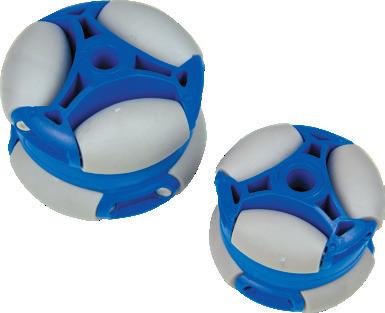
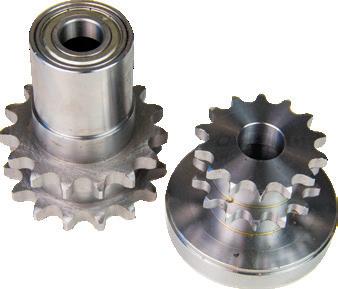
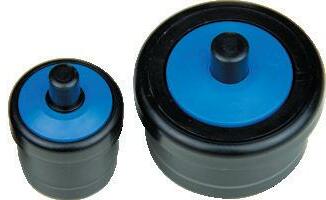
Innovative solutions to the materials handling industry Sydney (02) 9771 4655 Melbourne (03) 9357 8814 sales@adeptconveyor.com.au Specialising in order fulfilment systems Bringing e-Commerce alive with the scope and range to satisfy and support most go ahead companies. Faster Deliveries – Not subject to long lead times. Extensive local stock. Flexible Design – Ready solutions from a basic European component to a full system analysis, scoping, design and implementation anywhere in Australia including the Pacific Islands. Long Term Support – Availability of spare parts from legacy to current designs. The Single Australian Supplier for Conveyor Technology adeptconveyor.com.au From a basic conveyor component to a modern Integrated Smart Conveyor System Local Australian Manufacturer Quality European Components Comprehensive Roller Range - Many size and material combinations. Polymer and Metal Versions assembled here in Australia. (Static & Driven) Component Range unmatched from any other Australian supplier High Quality & Reliable Performance – Backed by supplier. No comparable European products Available as sub-assemblies on the local market. Competitive Pricing on all Parts and Rollers Design Assistance & Product Support For the designer and conveyor manufacturer. Supporting the needs of the maintenance engineer. CONVEYOR ROLLERS AND COMPONENTS German Components, Assembled in Australia mrtaustralia.com.au BEARINGS WHEELS DRIVES


















 Publisher Scott Filby
Publisher Scott Filby


































































































 BAC Systems bacsystems.com.au
BAC Systems bacsystems.com.au






















































































 By Christine Powis
By Christine Powis










 By Chris Banks, President of Banks Industrial Group
By Chris Banks, President of Banks Industrial Group








































 By Margie Smithurst
By Margie Smithurst


























































